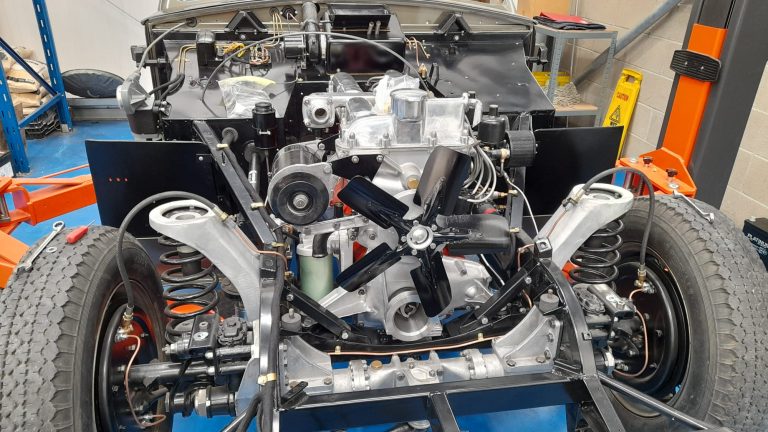
DB2 Engine
It has been a little while since our 1955 Aston Martin DB2/4 has had its engine fitted. However, that has now changed thanks to classic


It has been a little while since our 1955 Aston Martin DB2/4 has had its engine fitted. However, that has now changed thanks to classic
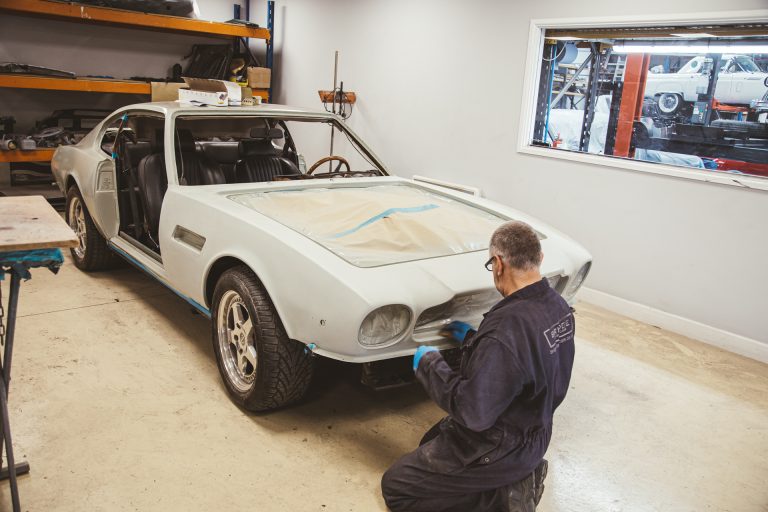
Our 1976 Aston Martin AMV8 has continued to be prepped for painting by classic car technician Al. The below photos show some behind-the-scenes shots of
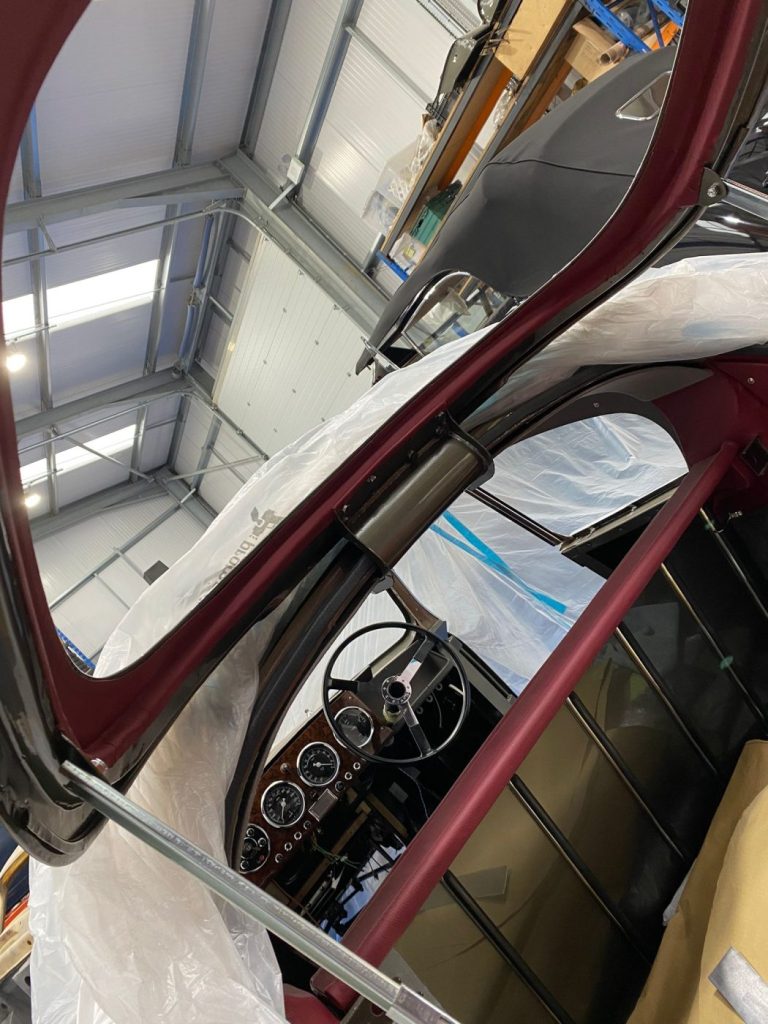
Our 1955 Aston Martin DB2/4 has been in the hands of classic car technician Brian. He has been working on the metal trims for the

Classic car technician Al has been stripping our 1976 Aston Martin AMV8 back to bare metal in preparation for a new coat of paint. After
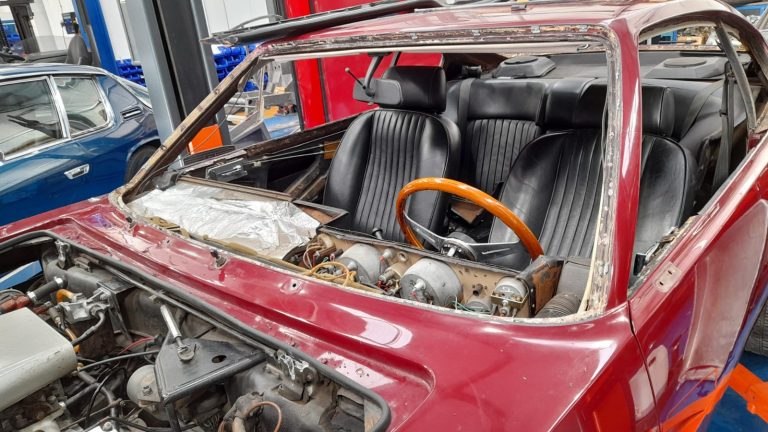
Classic car technician Scott has been busy stripping our 1976 Aston Martin AMV8 ready for it to be painted. Now that it has been stripped,
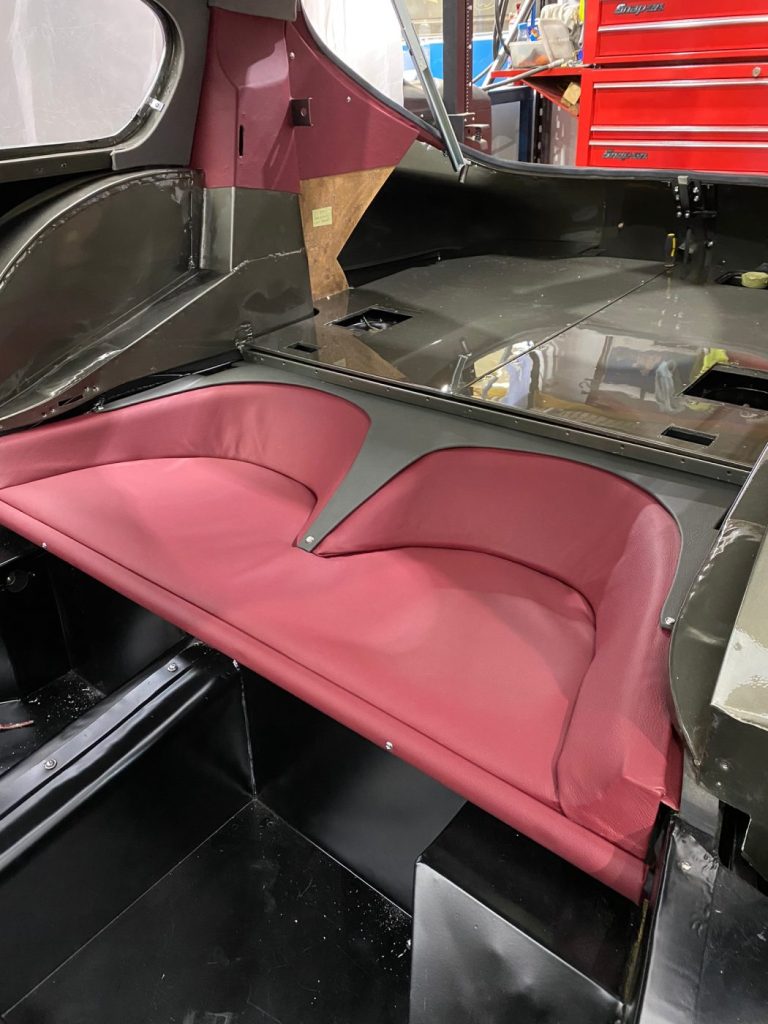
Classic car technician Brian has been doing some more work on the interior of our 1955 Aston Martin DB2/4 Mark 1. His work started by
Classic car technician Jonn has been working on our 1976 Aston Martin AMV8. He checked the tracking before adjusting it to parallel. Jonn wanted to

More interior work has been completed by Brian on our 1955 Aston Martin DB2/4 Mark I. He first cut out new leather for the rear
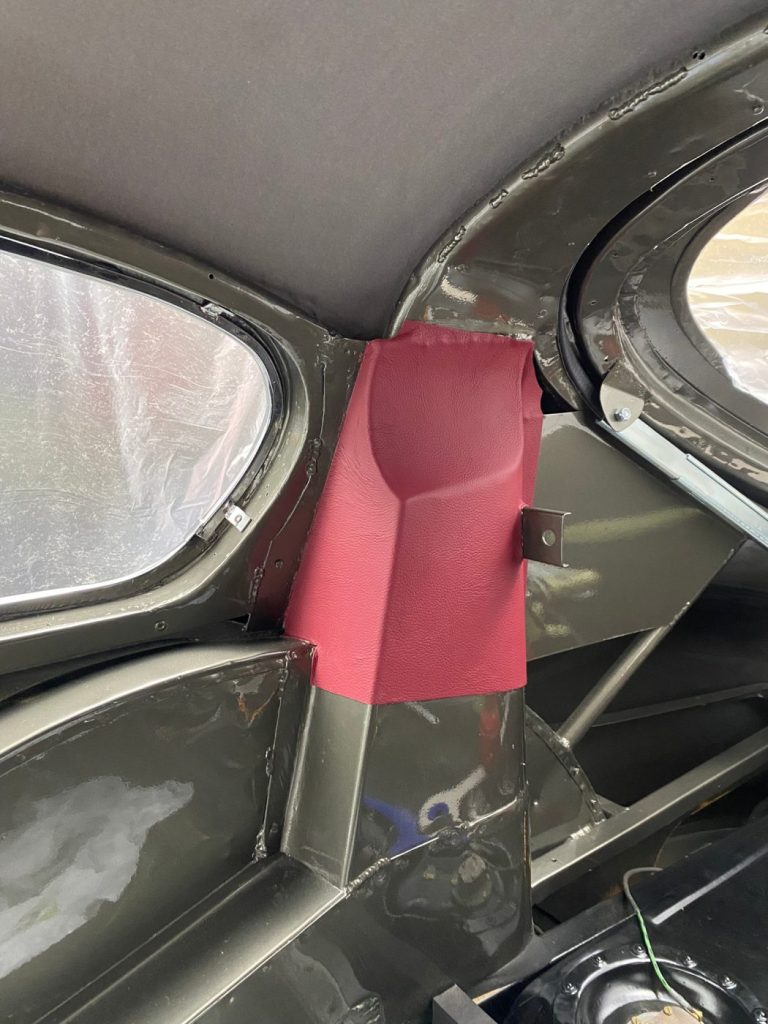
The engine of our 1955 Aston Martin DB2/4 MK1 is in the process of being rebuilt. Everything has been progressing well with the rebuild and
Our 1976 Aston Martin AMV8 has recently had its new boot floor panels painted by classic car technician Scott. That wasn’t the only work completed
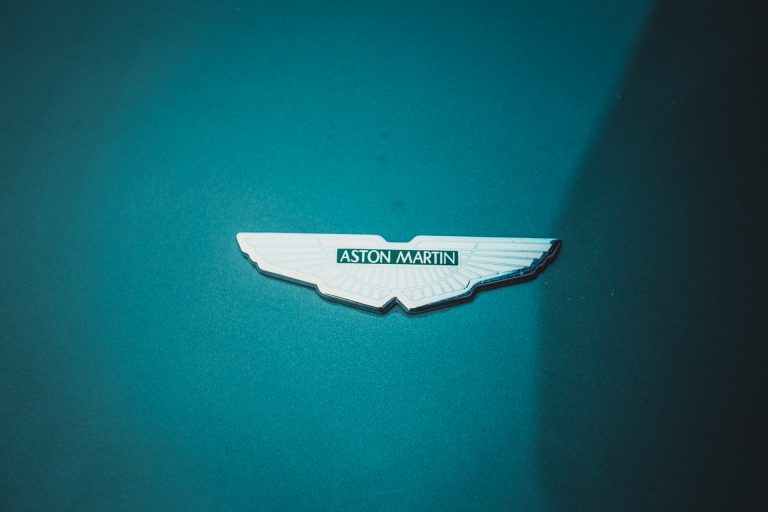
Imagine walking into an old barn and finding a classic car. Now imagine walking into an old barn and finding an extremely rare 1962 Aston
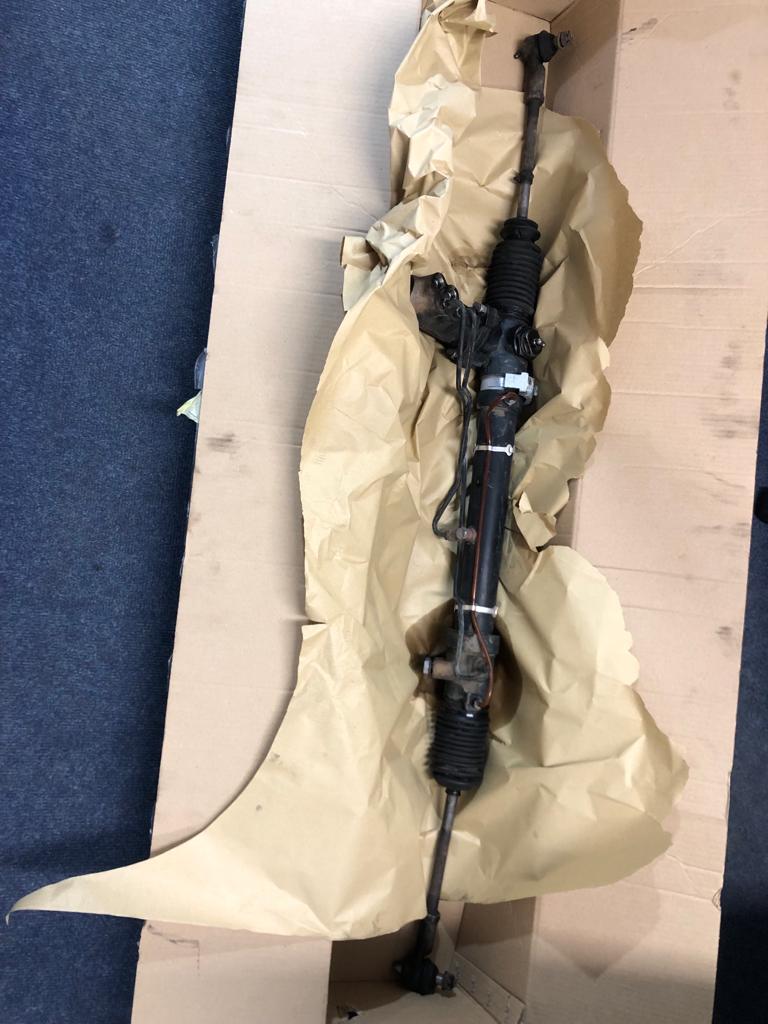
The steering rack of our 1976 Aston Martin AMV8 is leaking and needs to be rebuilt! To rectify the issue, we have securely packaged it
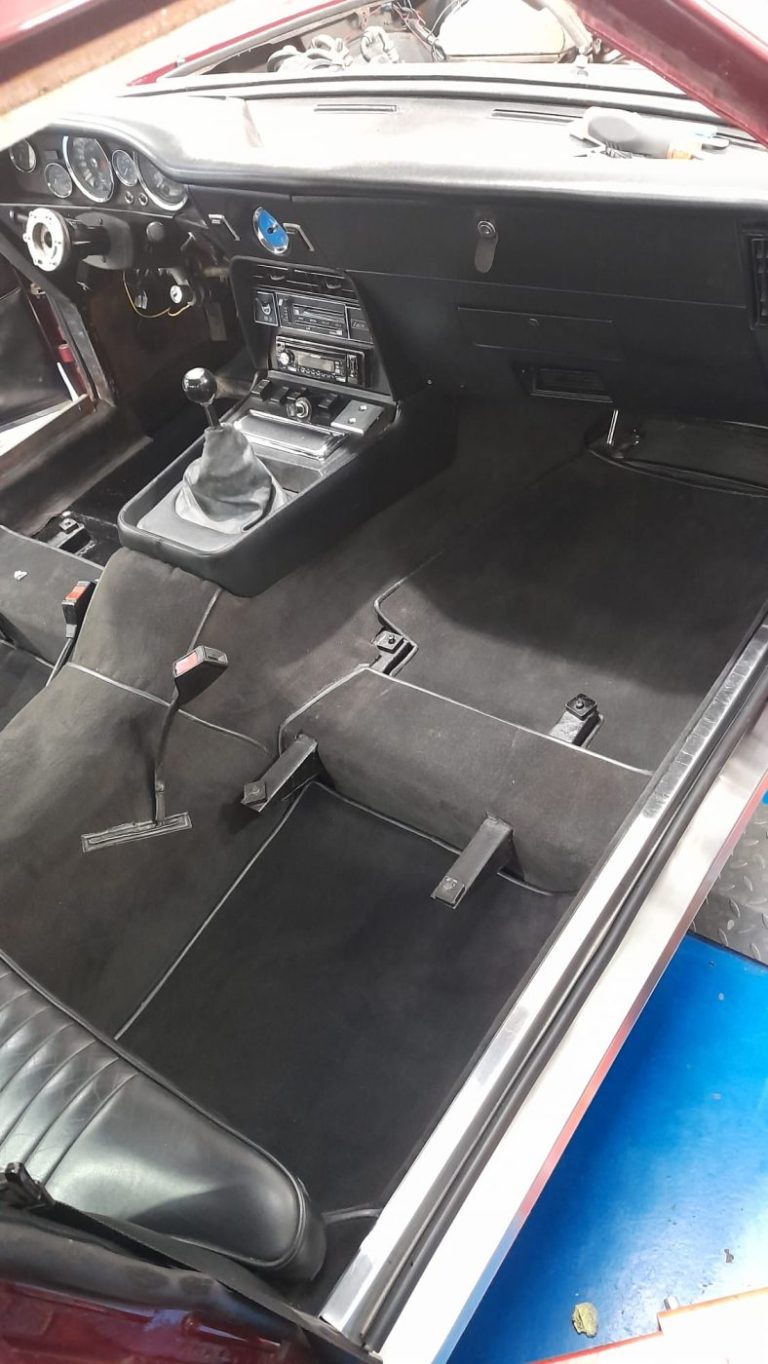
Classic car technician Scott has had his work cut out with our 1976 Aston Martin AMV8. After his investigation and prep work on this attention-grabbing
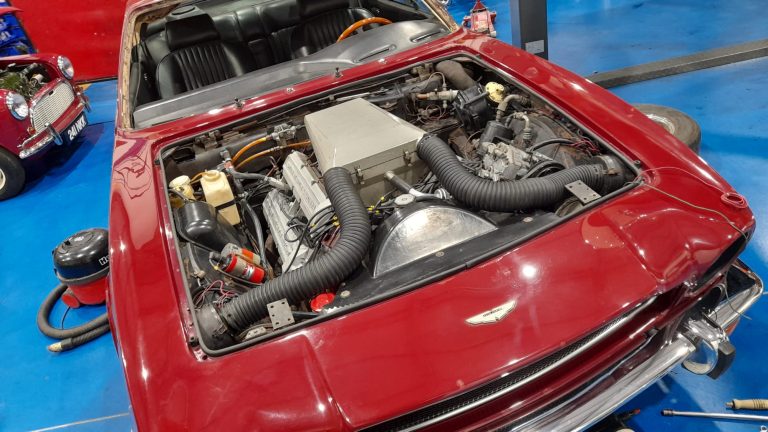
After making the long journey from America to the Bridge Classic Cars workshop, our 1976 Aston Martin AMV8 has already had quite the adventure. When

It hasn’t been long since we saw the arrival of our 1976 Aston Martin AMV8. Now that it’s been in the workshop for a few
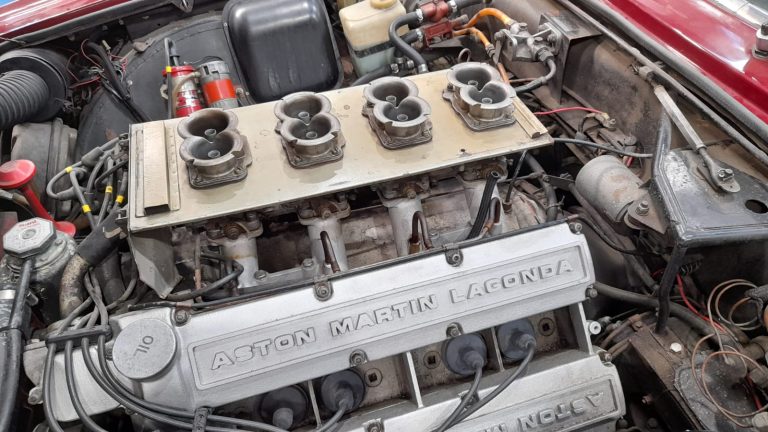
Classic car technician Scott has been conducting an assessment of our 1976 Aston Martin AMV8. After noticing some oil leaks, he removed the under trays
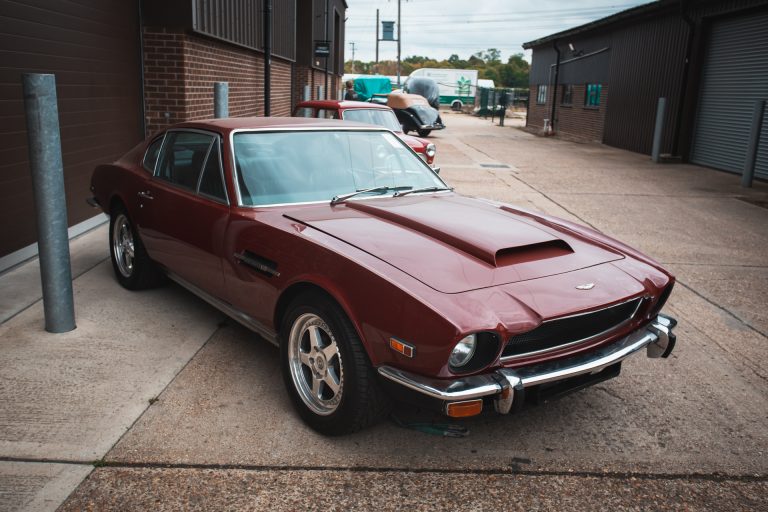
Another classic car has arrived at the Bridge Classic Cars workshop. All the way from America comes our 1976 Aston Martin AMV8. As always, it
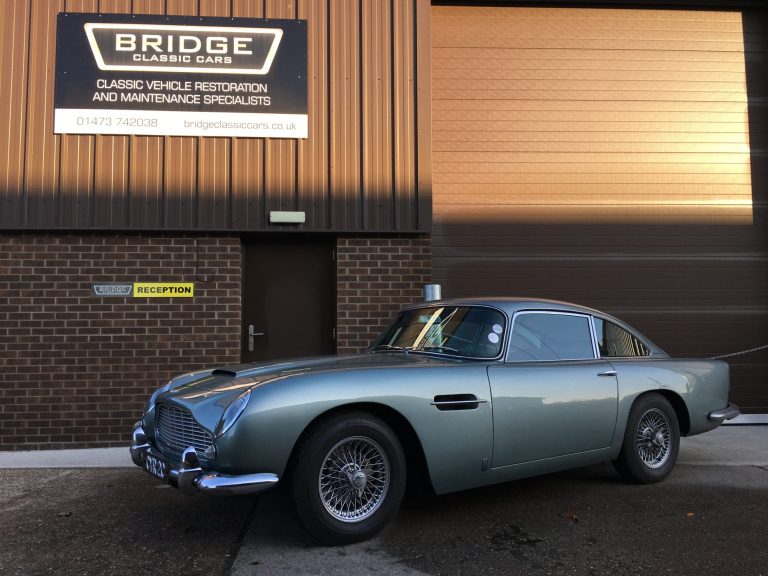
If you are a James Bond fan, then you probably heard recently that one of the Aston Martin DB5s used in No Time To Die
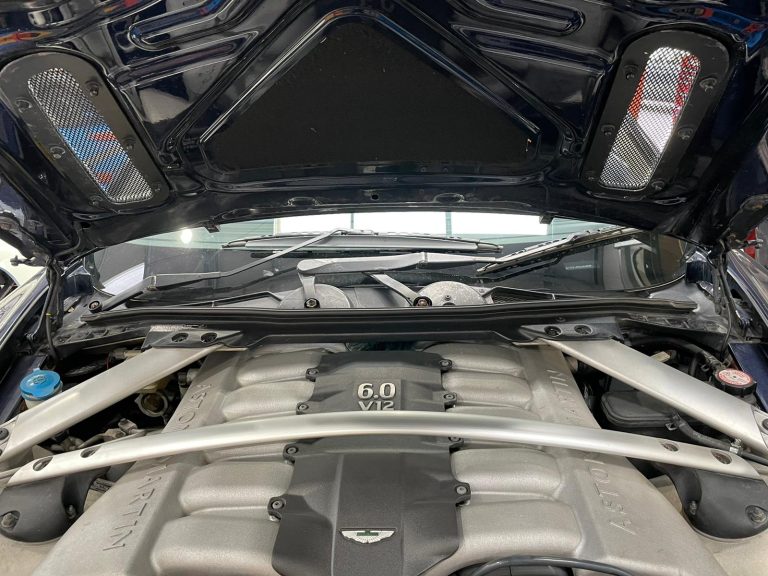
Having had the steering rack refitted last week following it’s recent rebuild the car had developed a slight creaking sound whilst driving slowly over bumps.
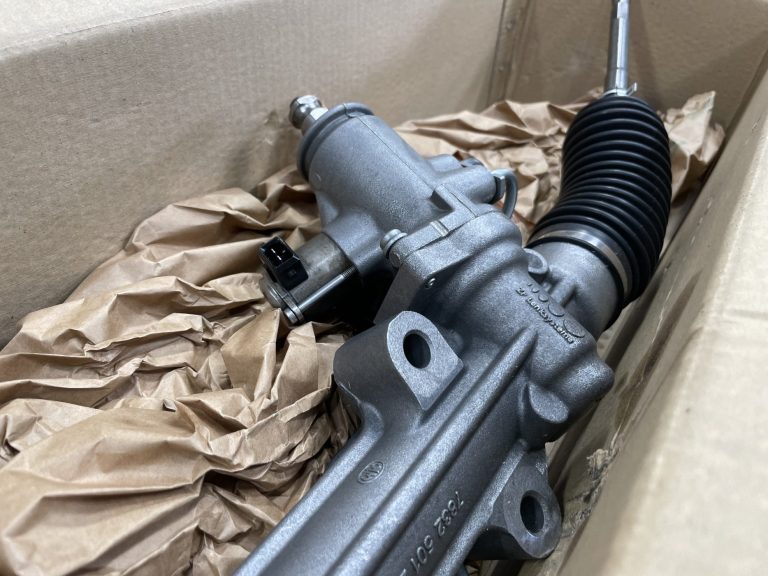
The steering rack from Craig’s 2005 Aston Martin DB9 has arrived back at the Bridge Classic Cars workshop after being refurbished by the amazing team
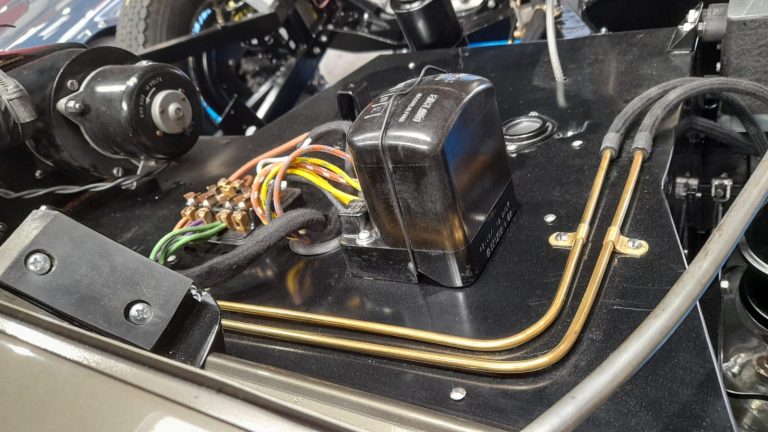
The workshop at Bridge Classic Cars have begun working on wiring up the beautiful 1955 Aston Martin DB2/4 Mk1 in at our Suffolk HQ for
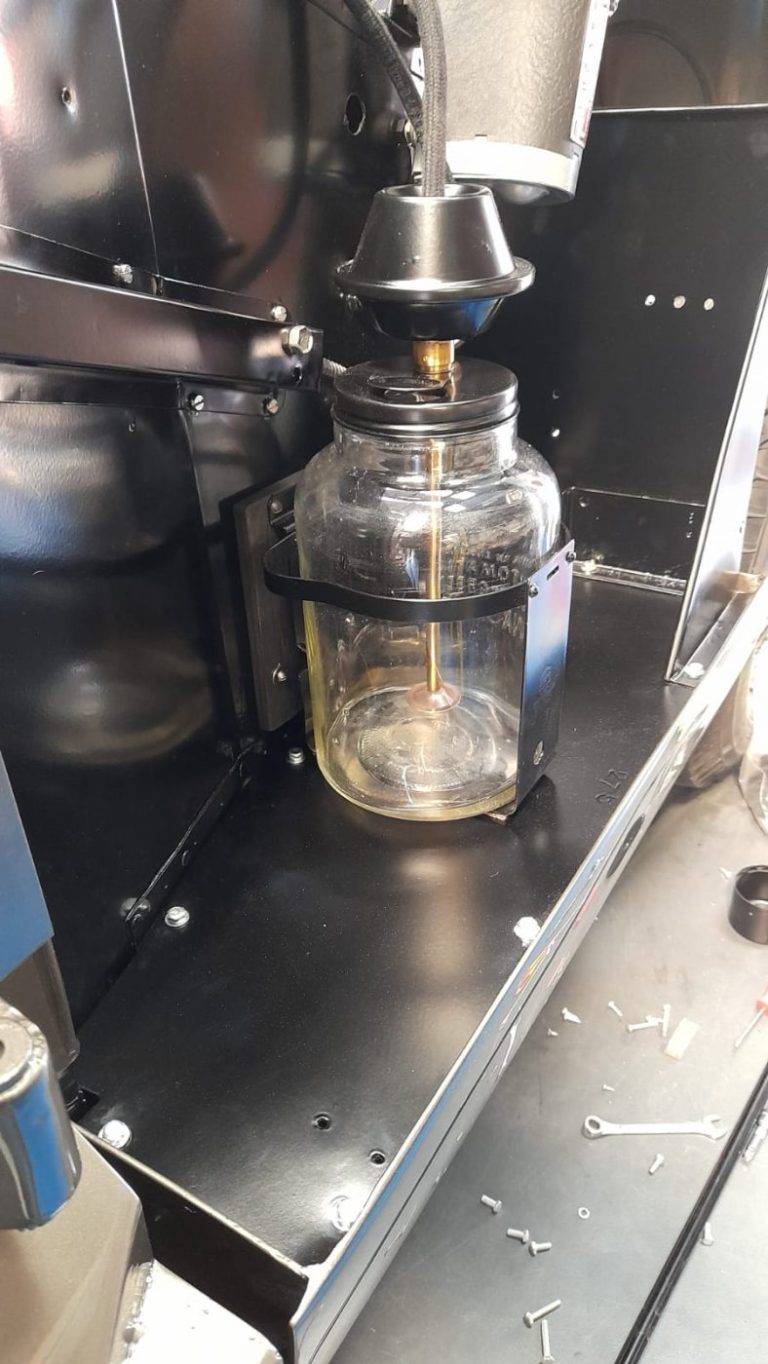
The workshop at Bridge Classic Cars are continuing with the refit of the 1955 Aston Martin DB2/4 Mk1 in for total restoration. Our technician Scott
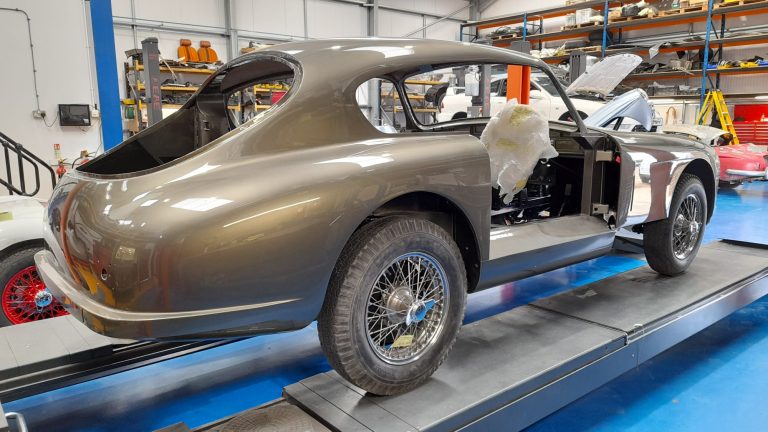
The 1955 Aston Martin DB2/4 has been getting refit and plumbed up by our workshop here at the Bridge Classic Cars Suffolk HQ. The team
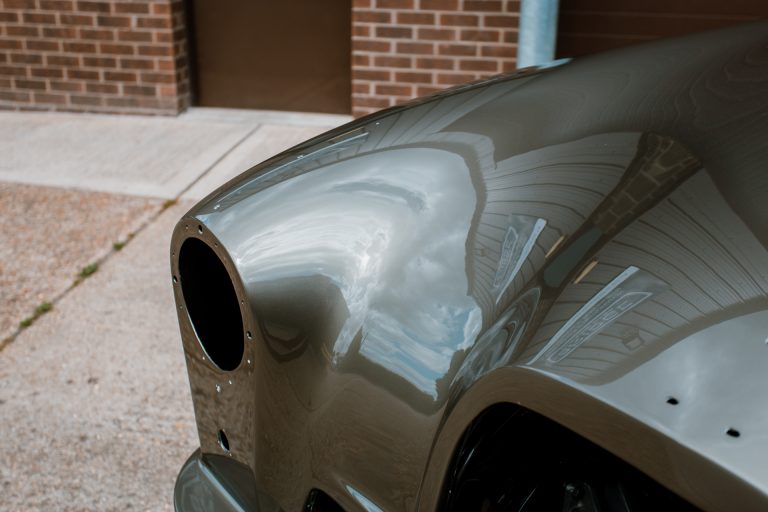
The Bridge Classic Cars paint and body team have put countless hours of hard work, skill and craft into the bodywork and paint of the

The 1955 Aston Martin DB2/4 MkI has been moved into the Bridge Classic Cars paint and body preparation area for the team to being colour
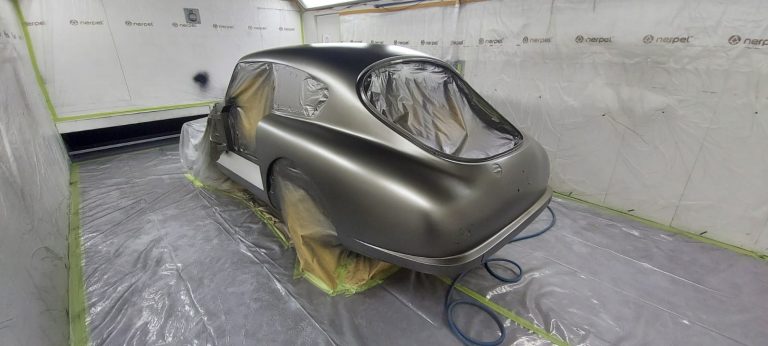
The 1955 Aston Martin DB2/4 MkI has been in the Bridge Classic Cars in-house paint booth for a key part of its restoration. The classic
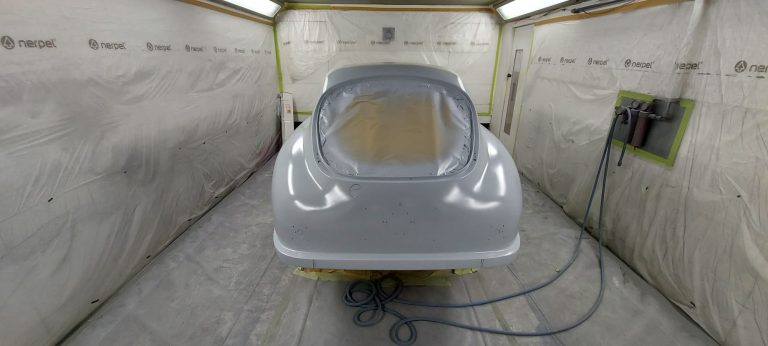
The paint and body team at Bridge Classic Cars have got the 1955 Aston Martin DB2/4 MkI into the in-house paint booth for some of
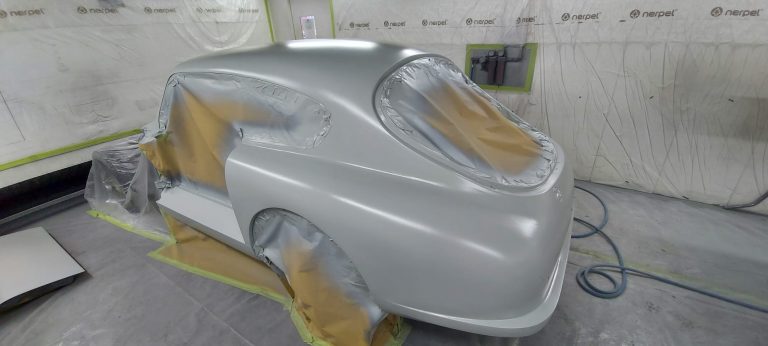
The paint and body team have worked on getting the body and bonnet of the 1955 Aston Martin DB2/4 Mk1 as close to perfect as
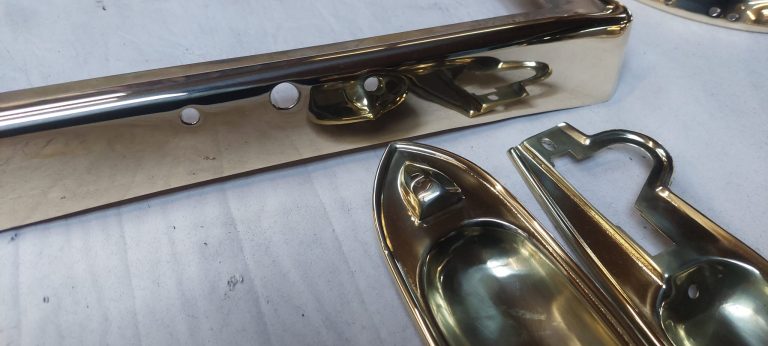
The trim pieces and parts for the 1955 Aston Martin DB2/4 Mk1 have been replaced as part of the classic sports cars restoration by Bridge

The paint and body at Bridge Classic Cars have been working on getting the various refinished brackets for the bonnet onto the 1955 Aston Martin
It has been a little while since our 1955 Aston Martin DB2/4 has had its engine fitted. However, that has now changed thanks to classic car technician Scott putting it back into the car.
This is a big step in the restoration of this very rare Aston. With only 451 made, it’s important to us and our customer that we bring this early Aston Martin back to life.
Everyone here at Bridge Classic Cars is looking forward to seeing the progress continue on this special project.
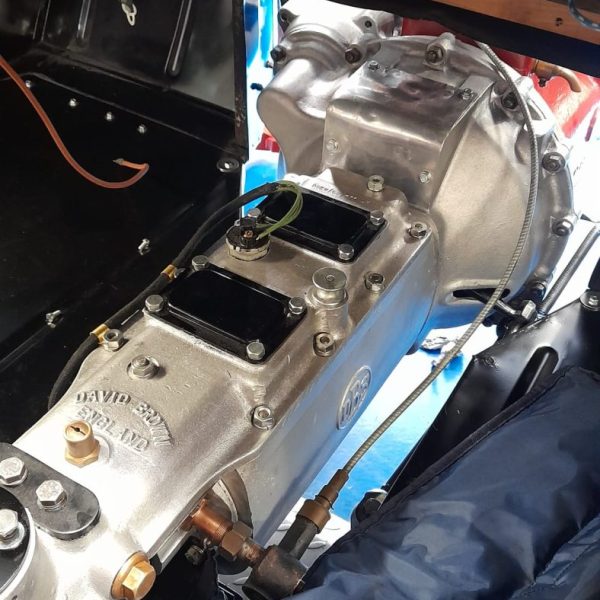
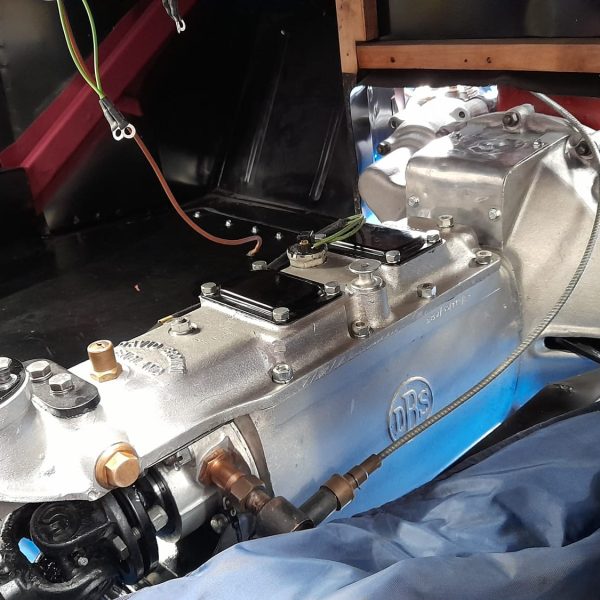
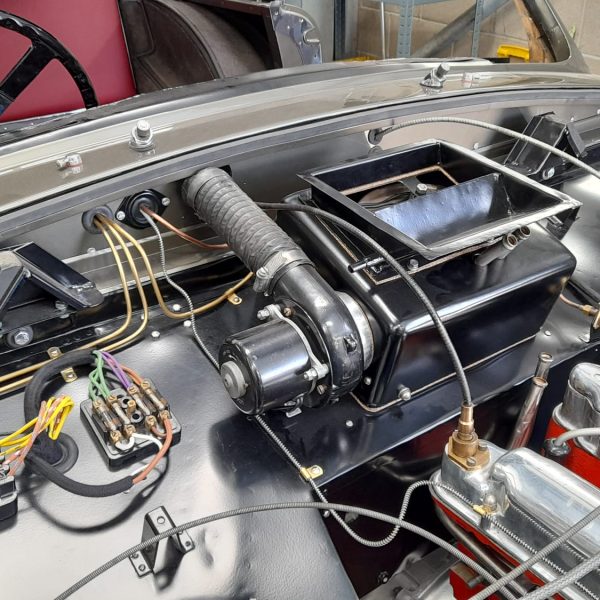
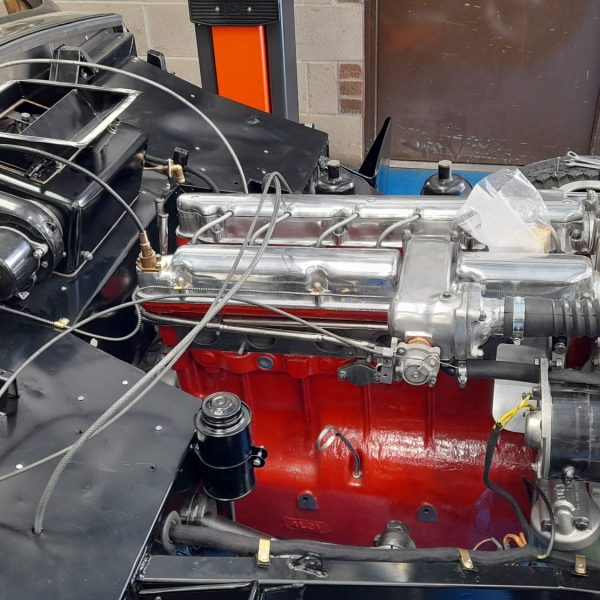
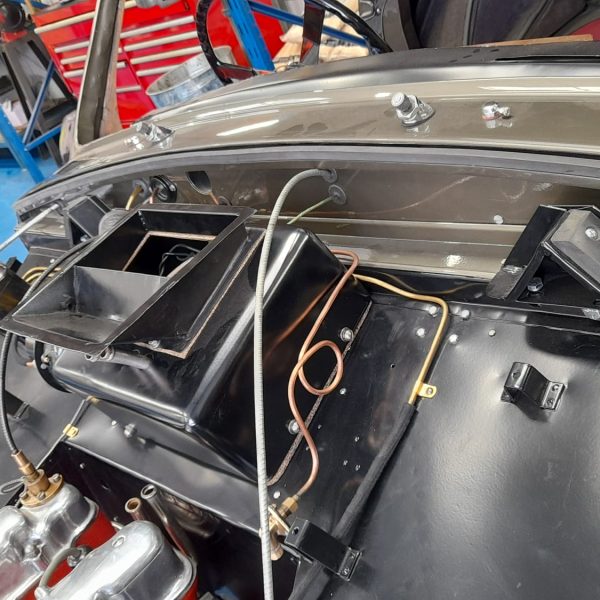
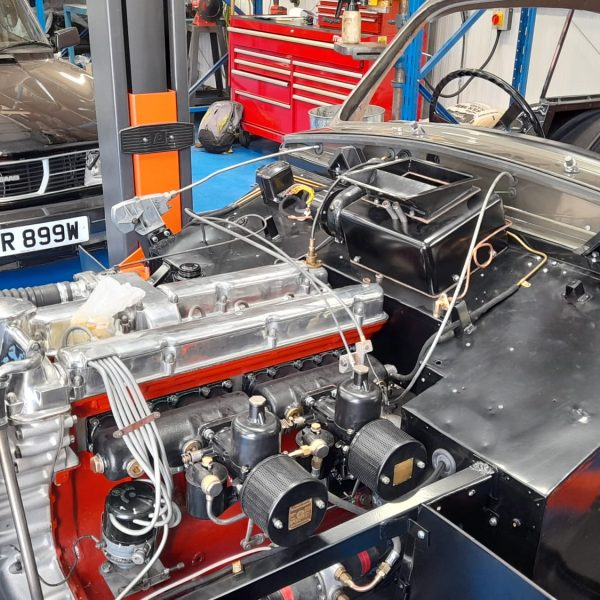
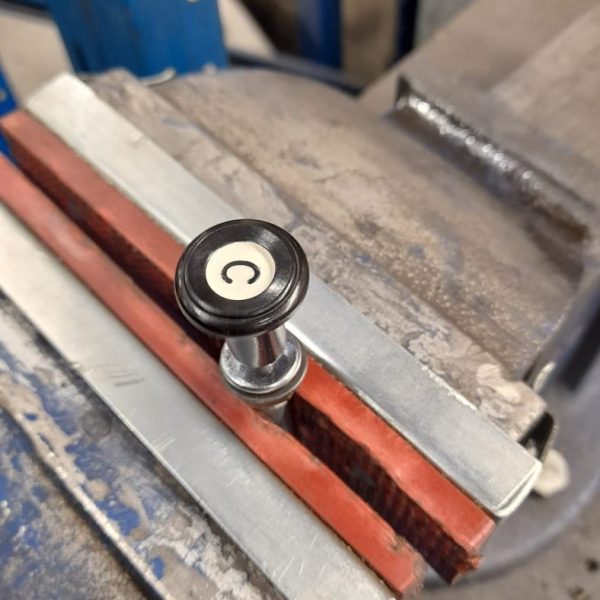
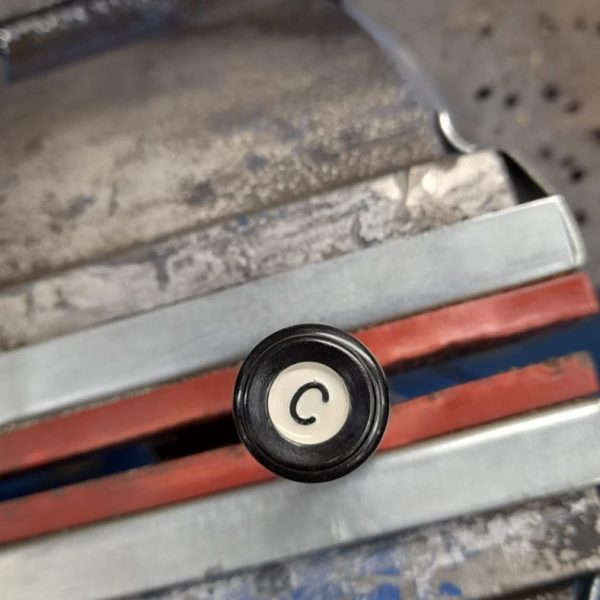
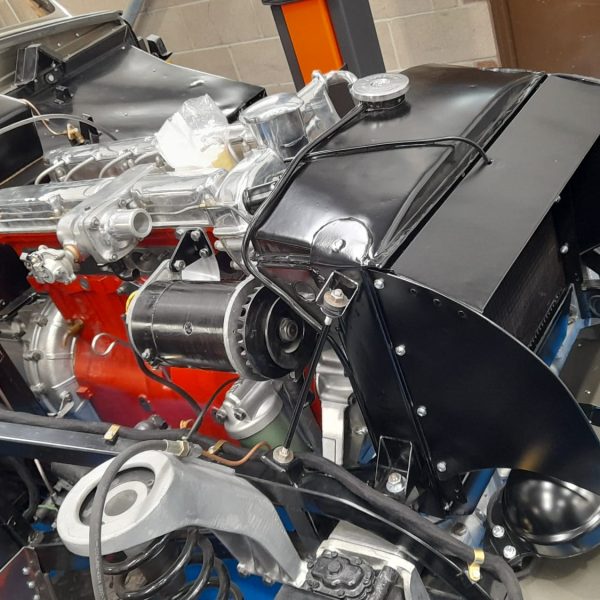
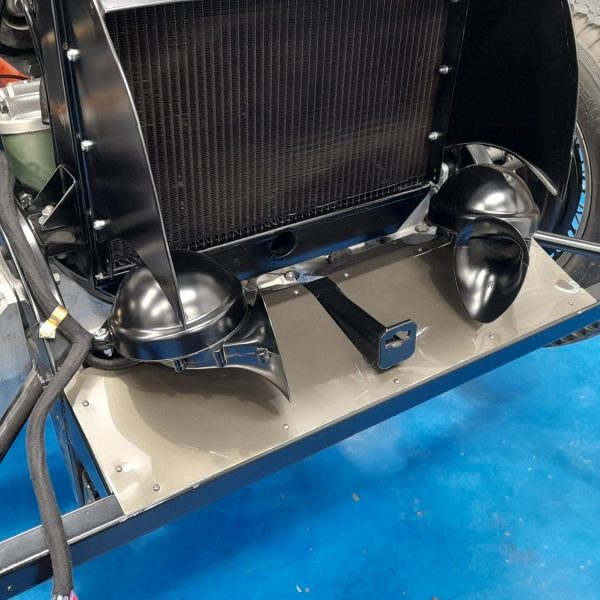

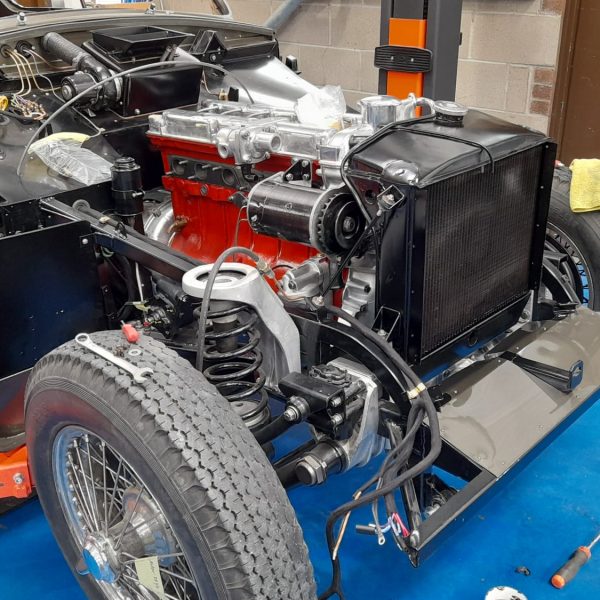
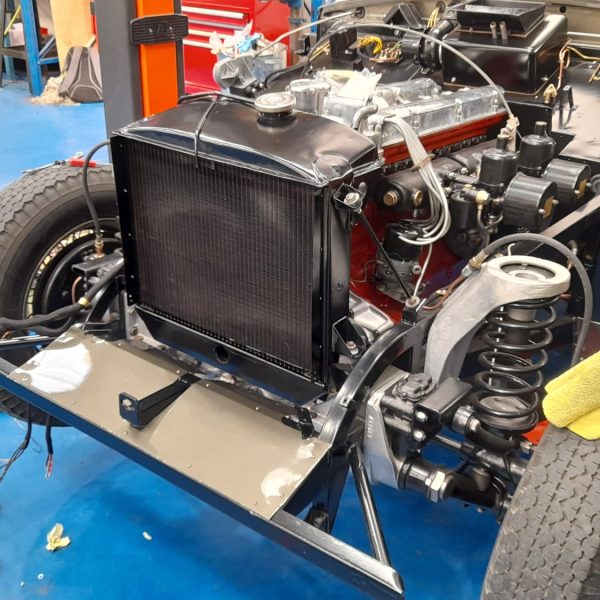

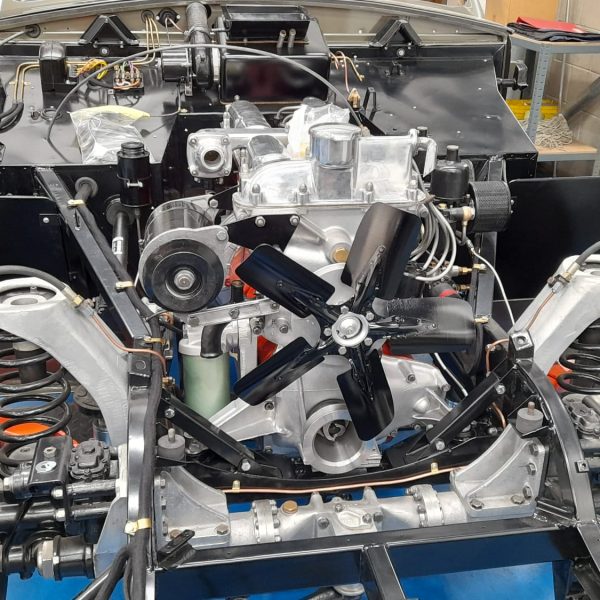
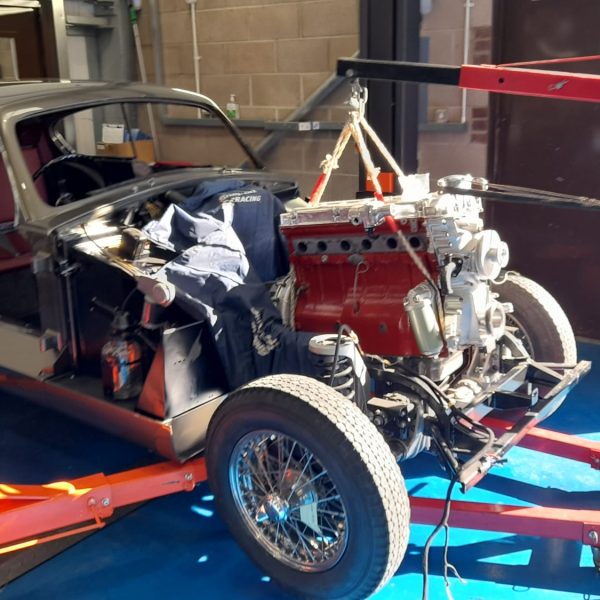
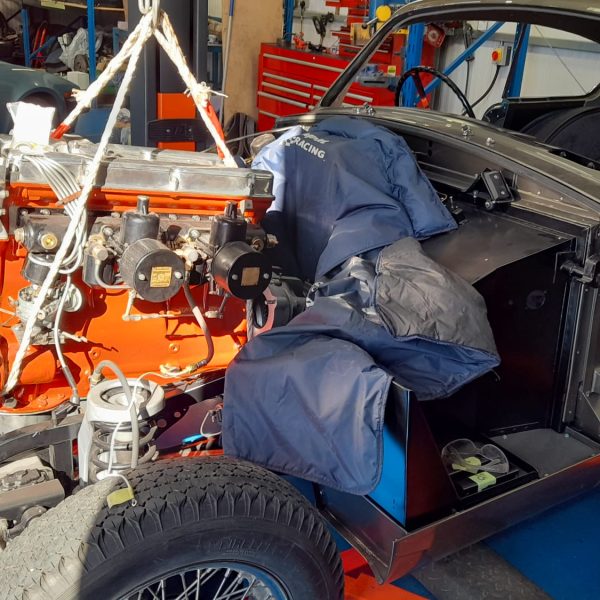
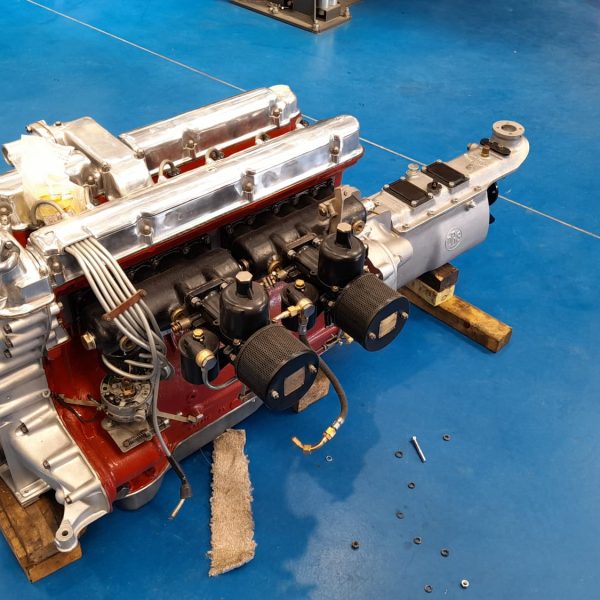
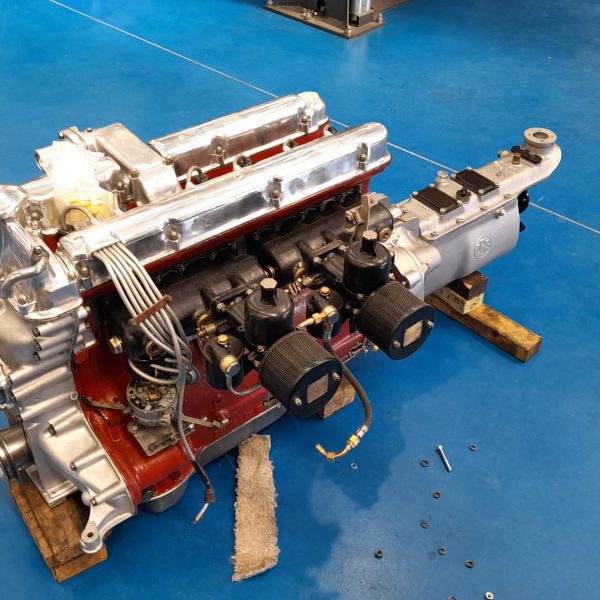

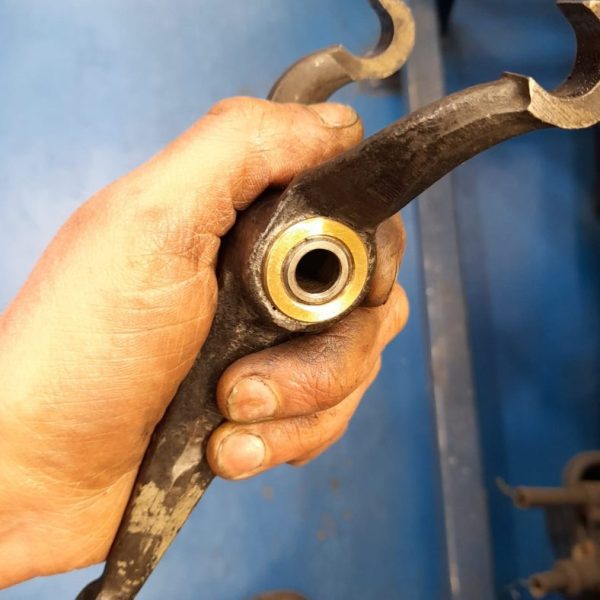
Our 1976 Aston Martin AMV8 has continued to be prepped for painting by classic car technician Al.
The below photos show some behind-the-scenes shots of what he has been up to as our Aston gets ready for a new coat of paint.
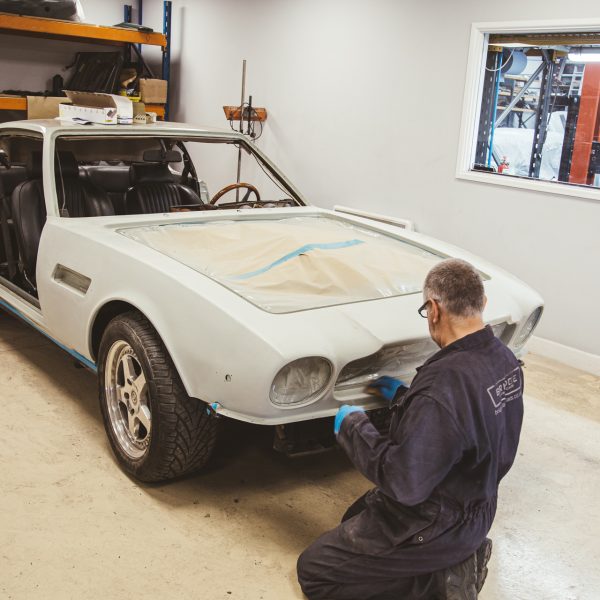
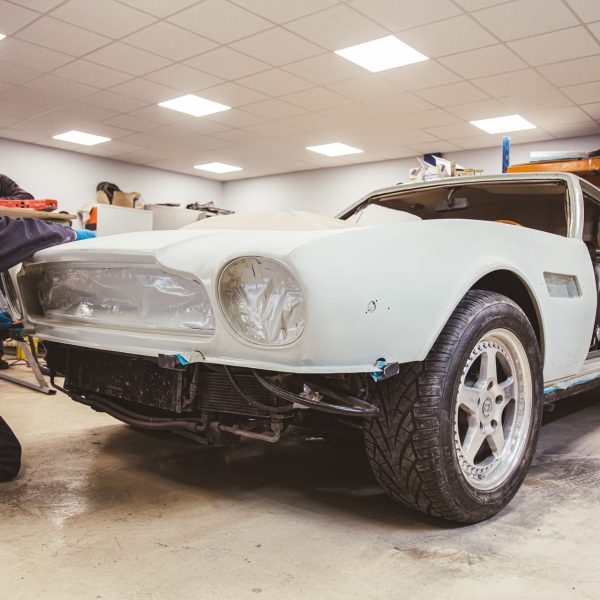
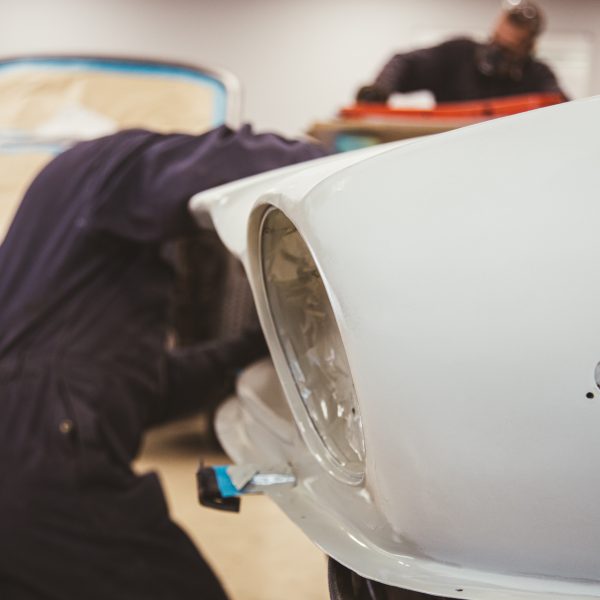
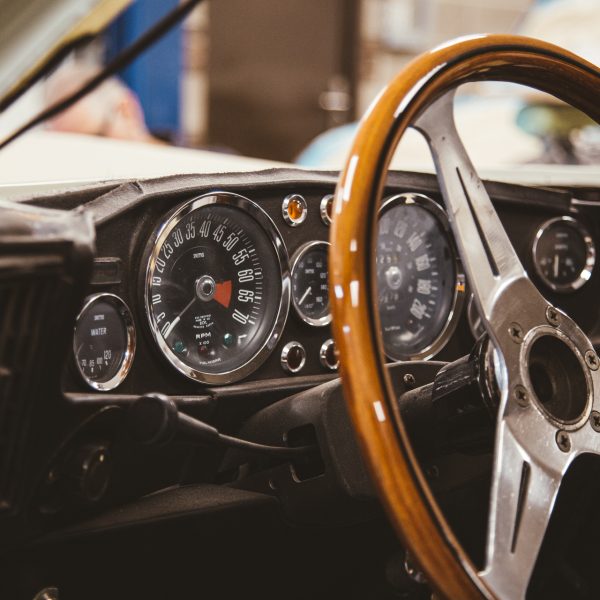
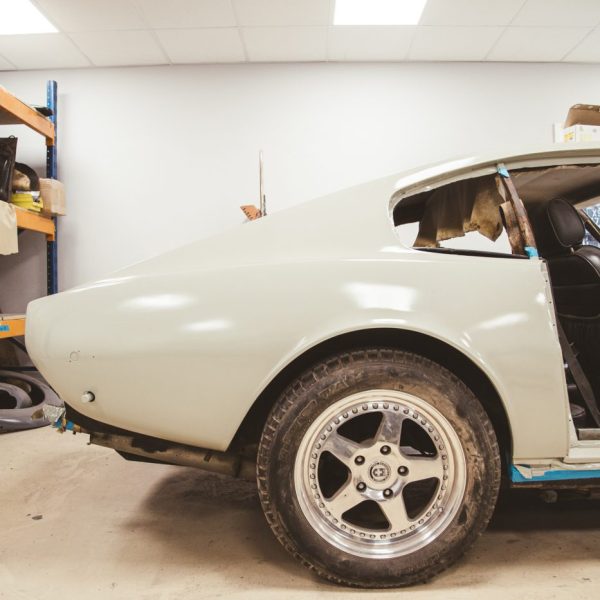
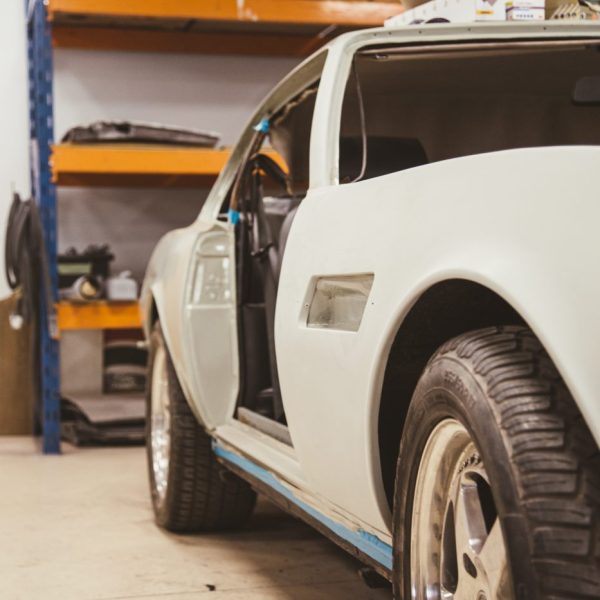
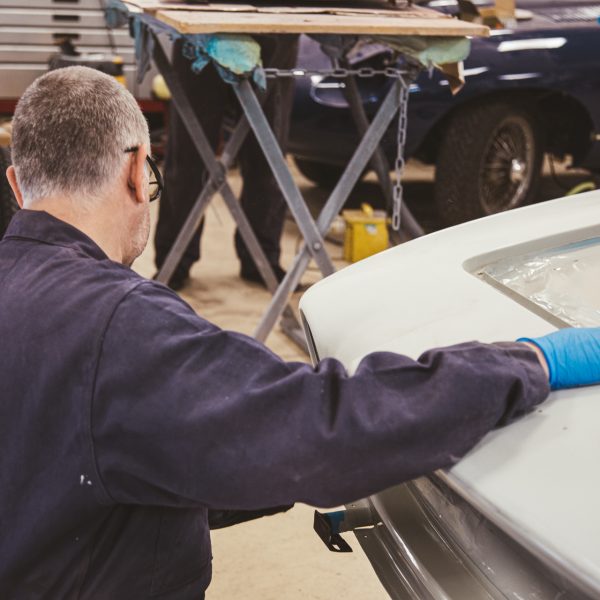
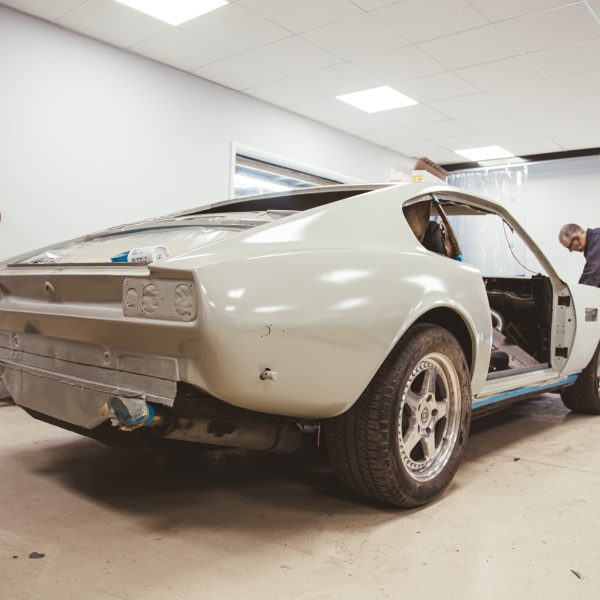
Our 1955 Aston Martin DB2/4 has been in the hands of classic car technician Brian. He has been working on the metal trims for the tailgate. These were trial fitted so they could be adjusted and the fit checked.
Brian went on to cut the leather for the inside of the tailgate before glueing the leather to the top of it and trimming it to the correct shape. The process was repeated for the bottom of the tailgate. The top trim plates were drilled and screwed into position – these will be removed later on to be covered in leather.
The metal struts in the kick panel area were the next focus of Brian’s attention. He glued leather around these which gave them a much more pleasing look and style.

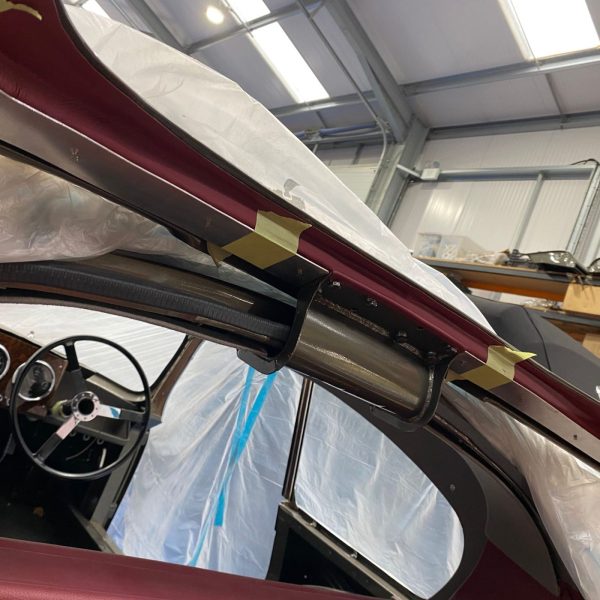

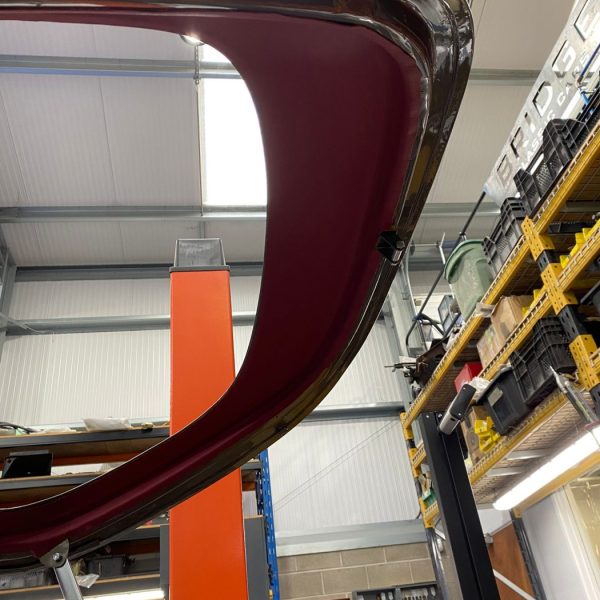
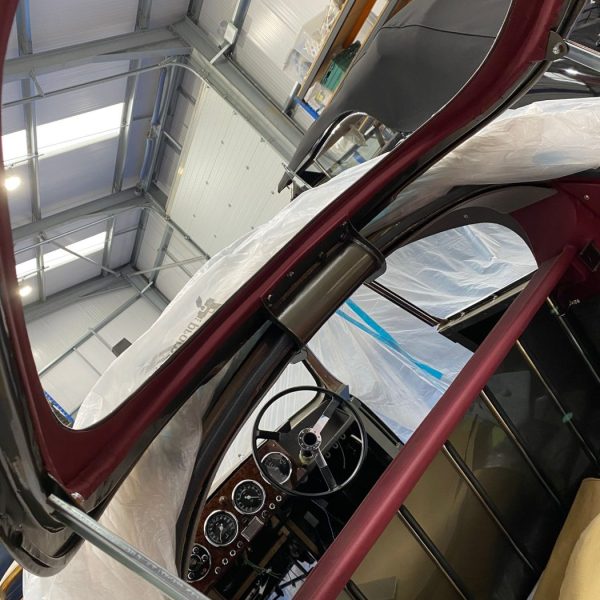

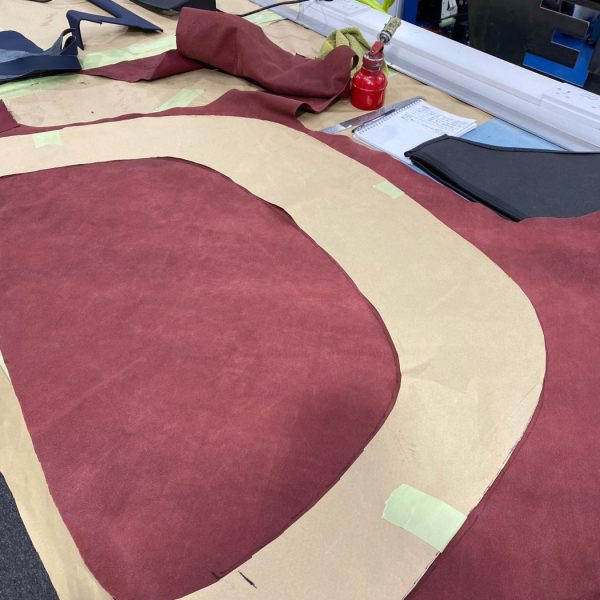
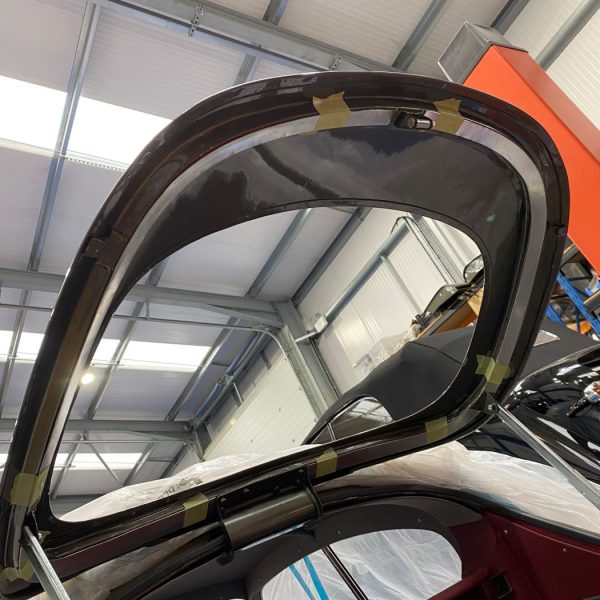
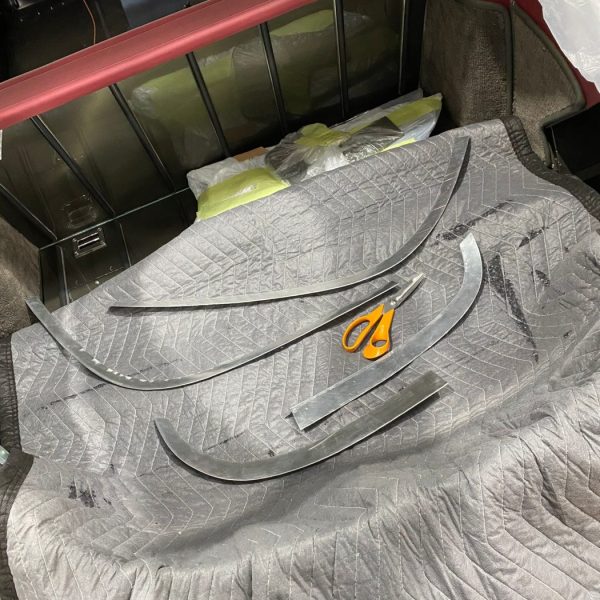

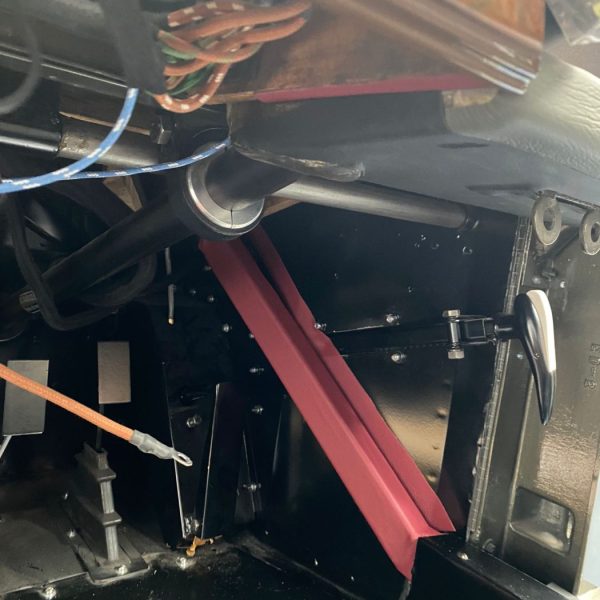
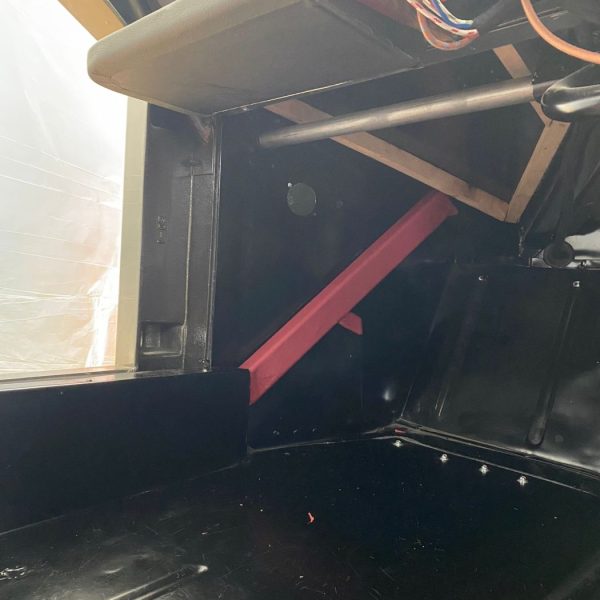
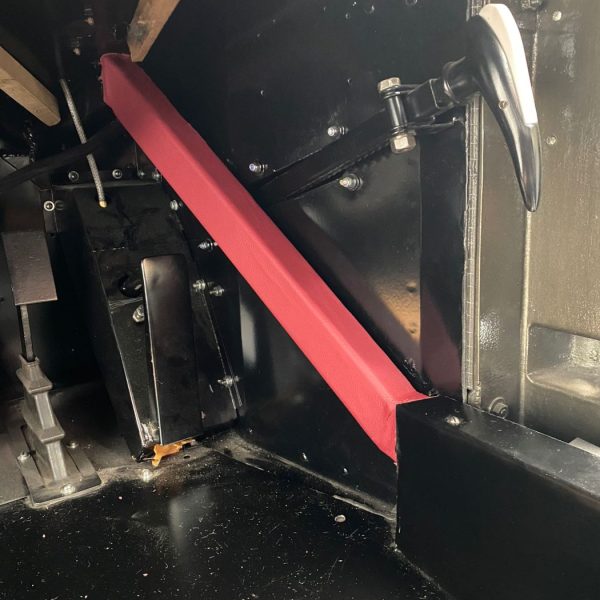
Classic car technician Al has been stripping our 1976 Aston Martin AMV8 back to bare metal in preparation for a new coat of paint.
After Scott stripped most of the components from this classic Aston Martin, Al continued the prep work until it was just a bare metal shell. Even in this state, you can still see how stunning our AMV8 is but, once it leaves the Bridge Classic Cars paint shop, it will look even better and be one step closer to getting back out on the road with its owner.
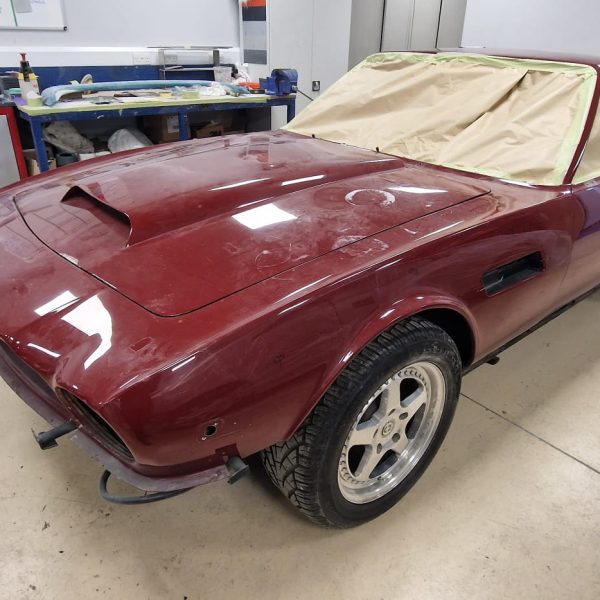
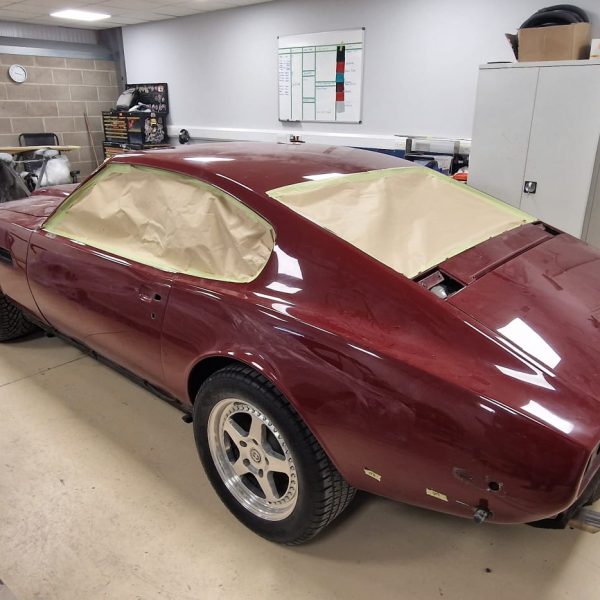

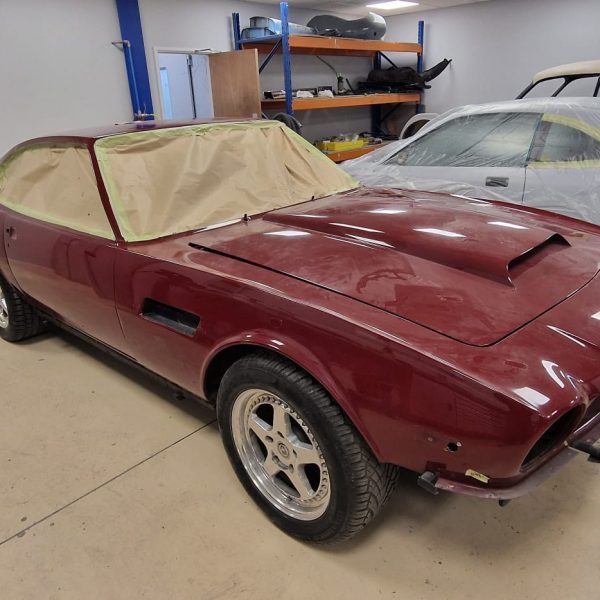
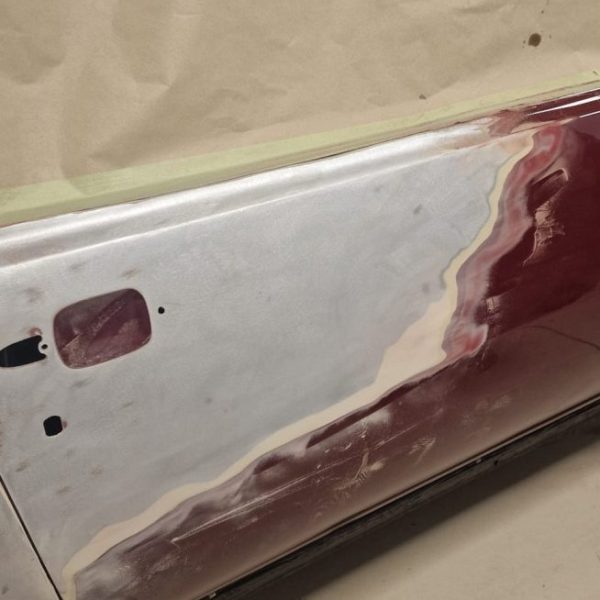

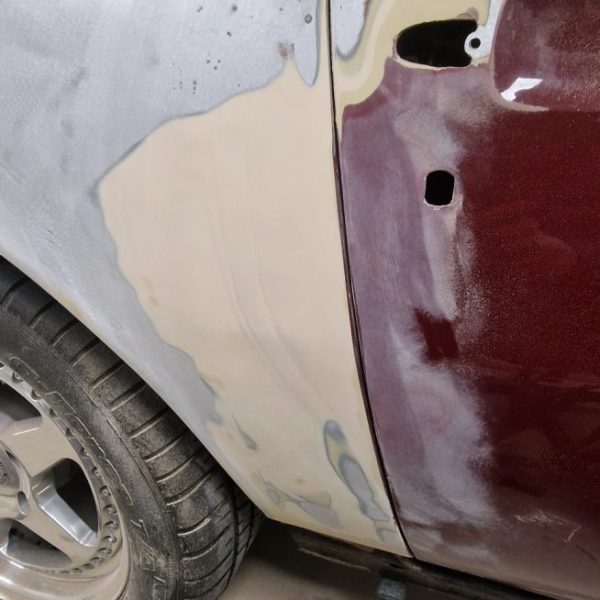
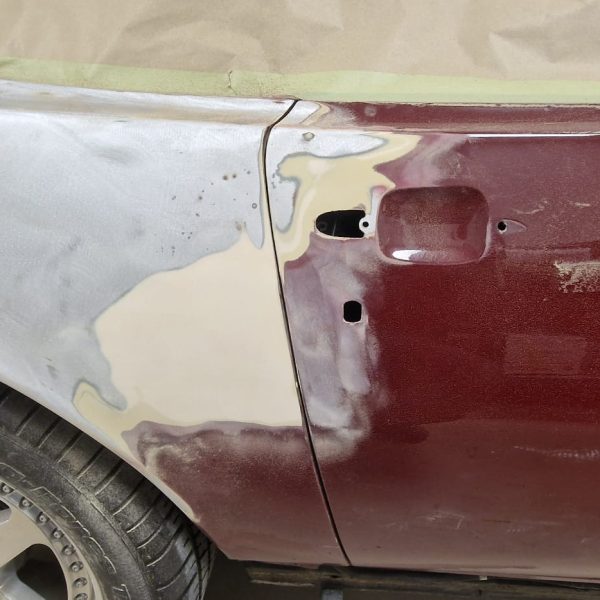

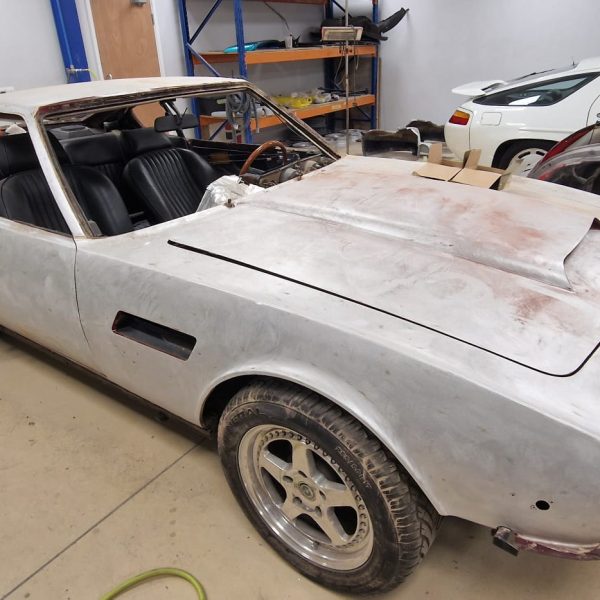
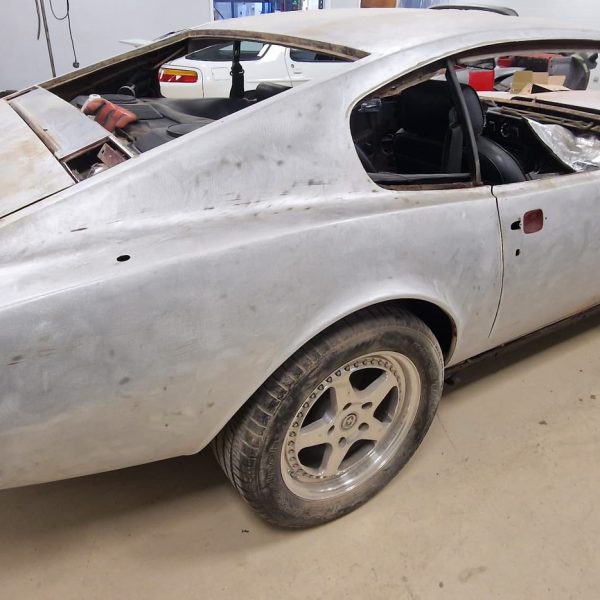
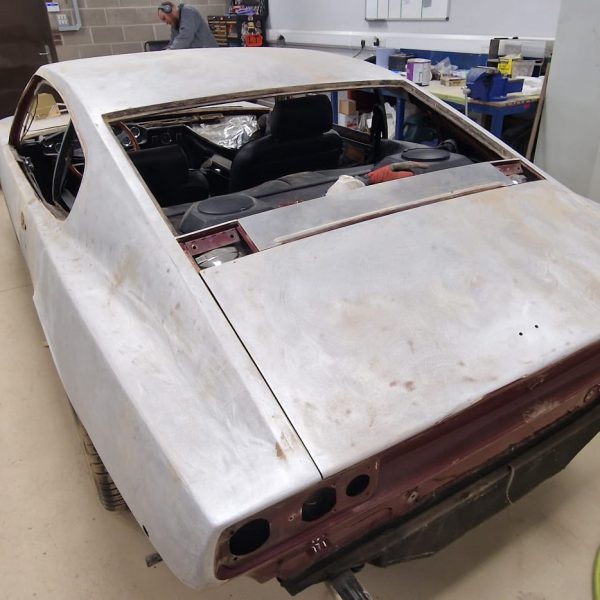
Classic car technician Scott has been busy stripping our 1976 Aston Martin AMV8 ready for it to be painted.
Now that it has been stripped, this classic car will undergo a complete external respray as we continue to restore it ready to go back to its owner in full working order.
With lots of work being done to get the car running, it will be great to see the paintwork looking much improved too.
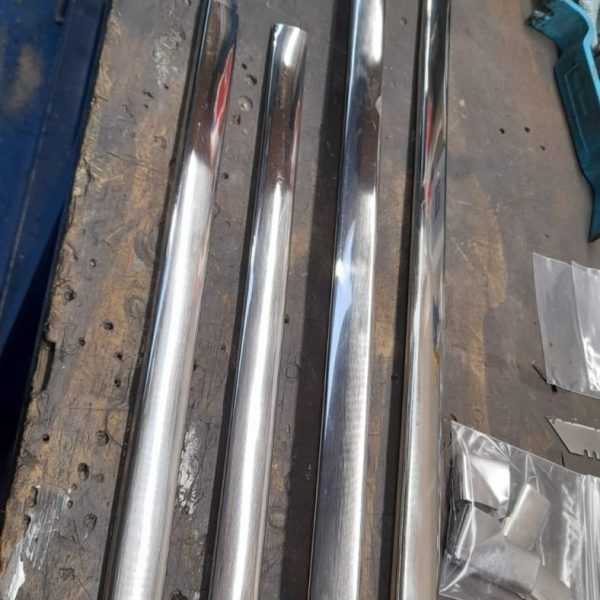
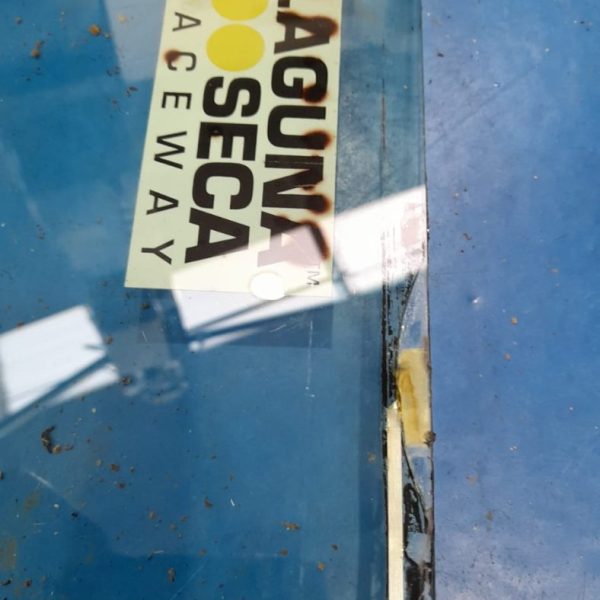
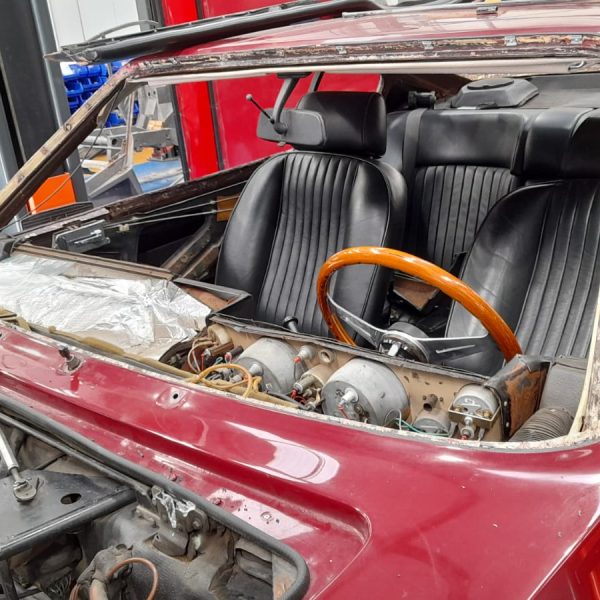
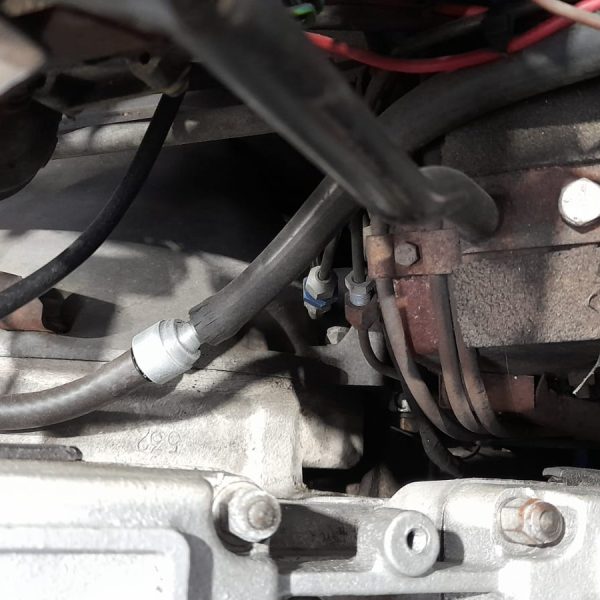


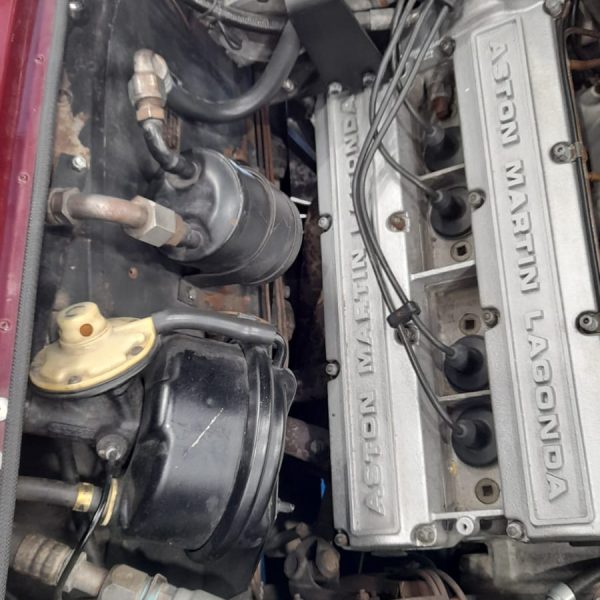

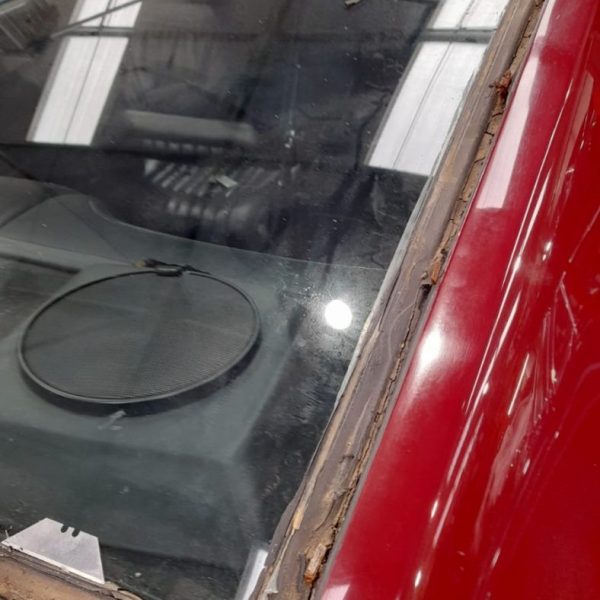

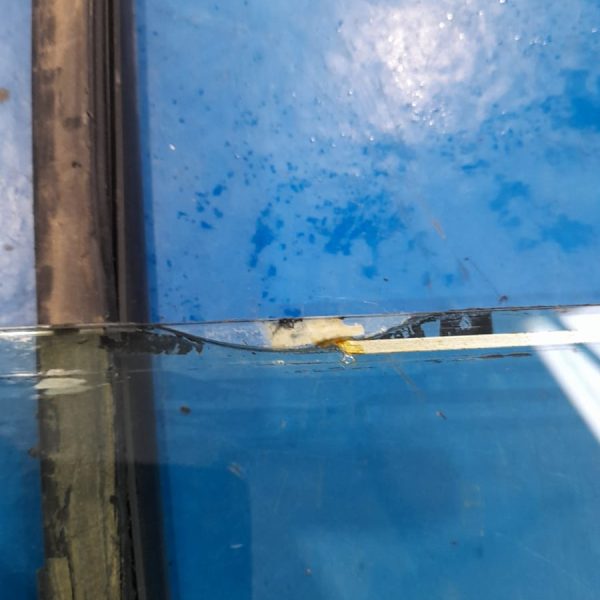
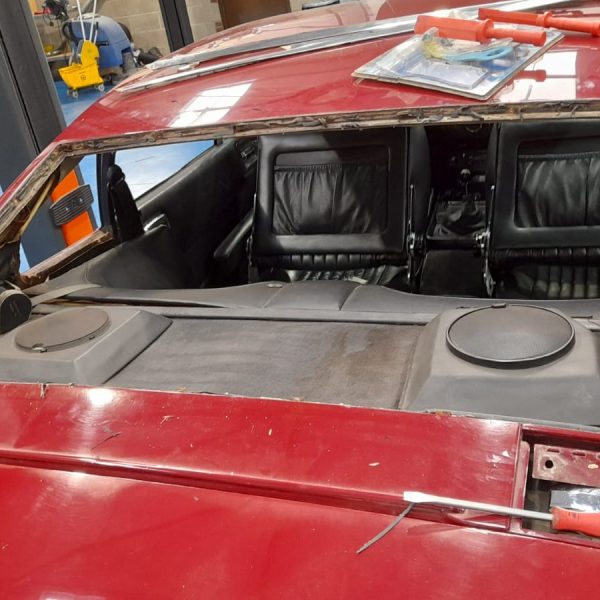
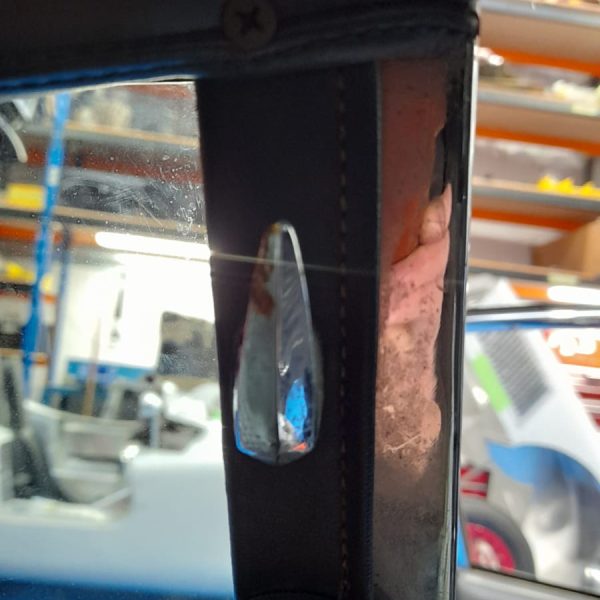
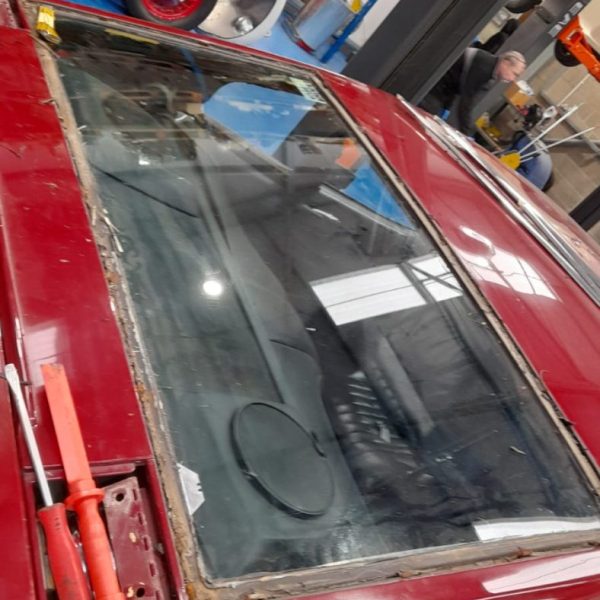
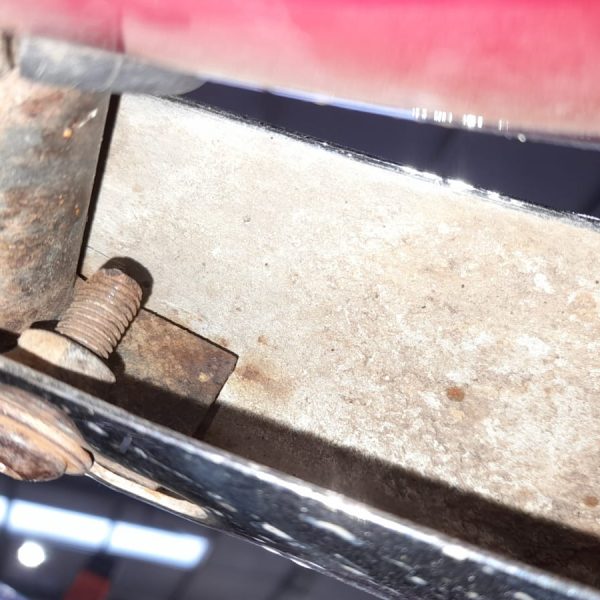

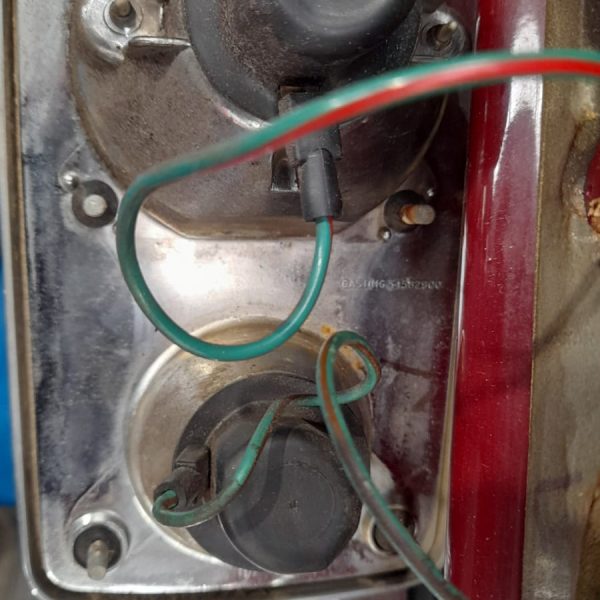
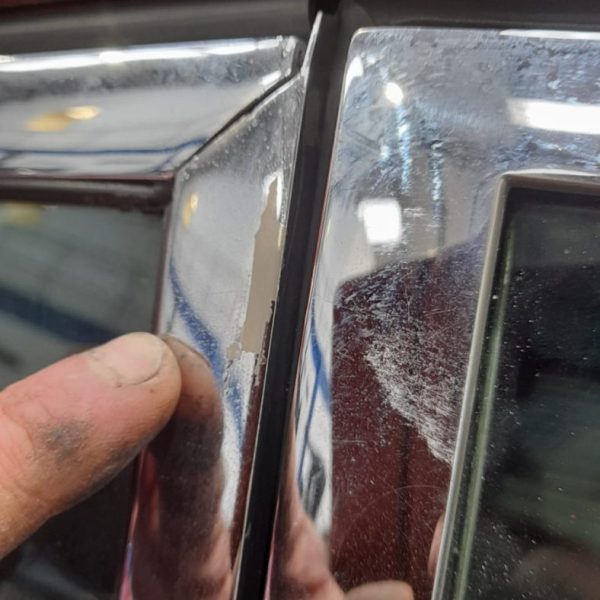
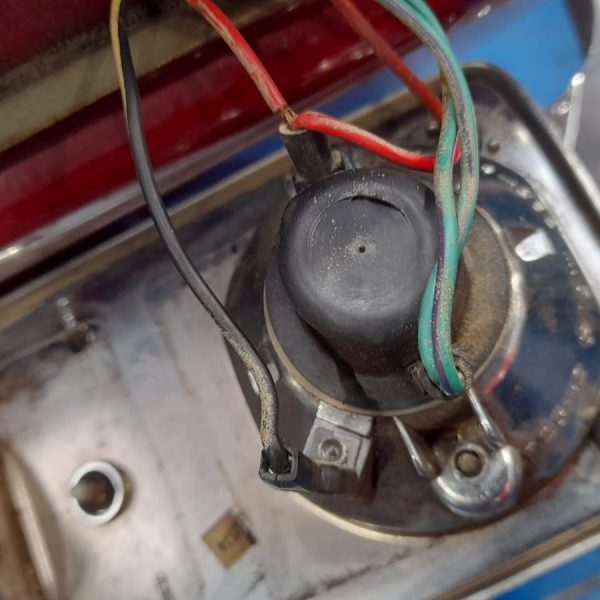
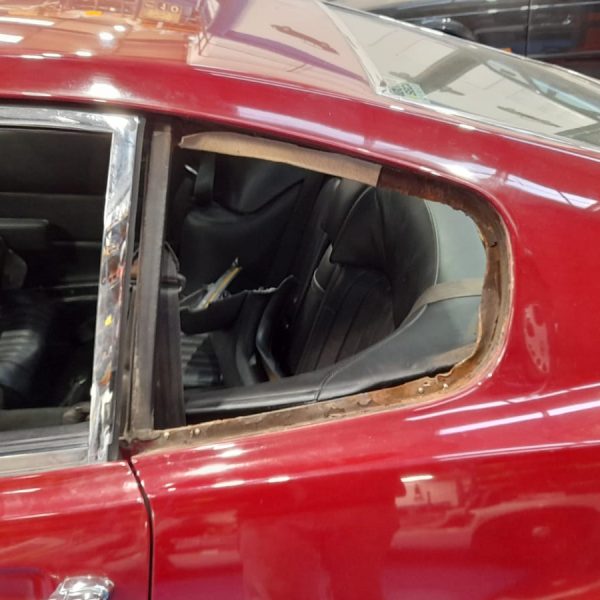
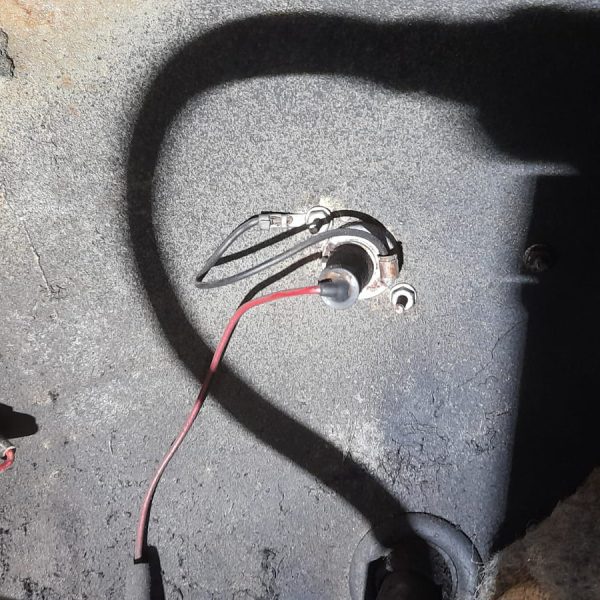
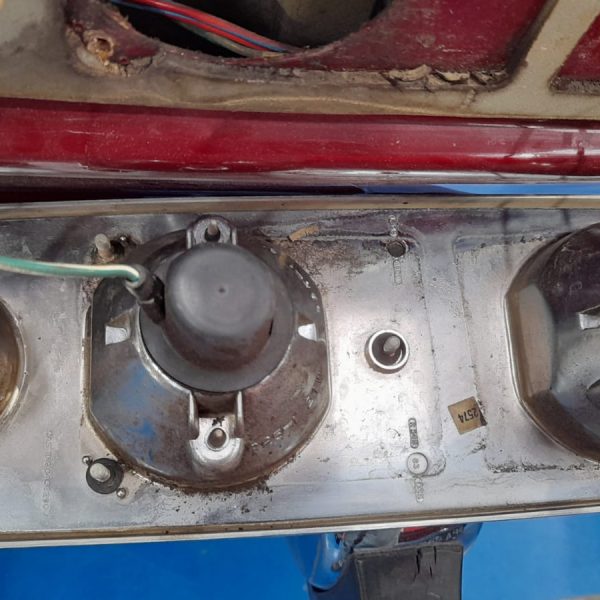

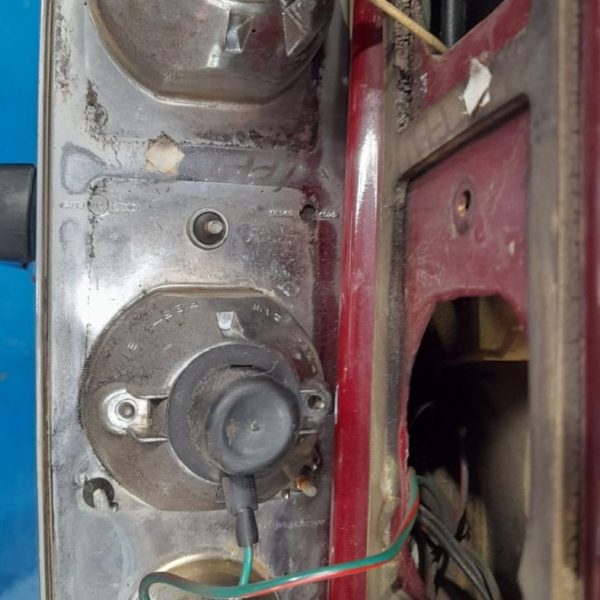
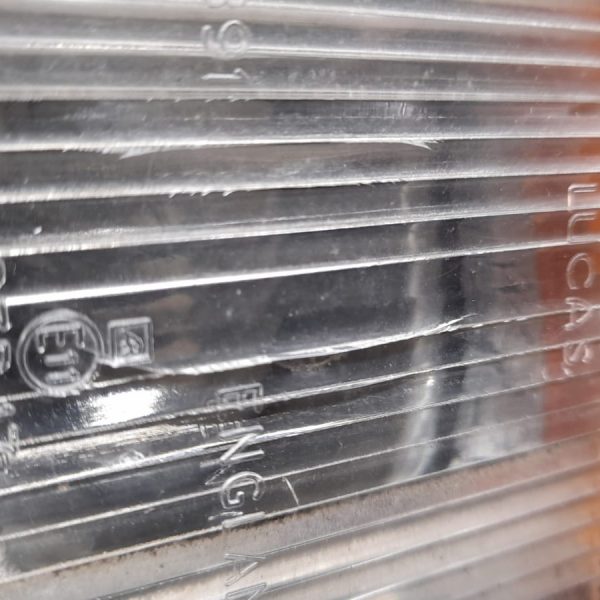
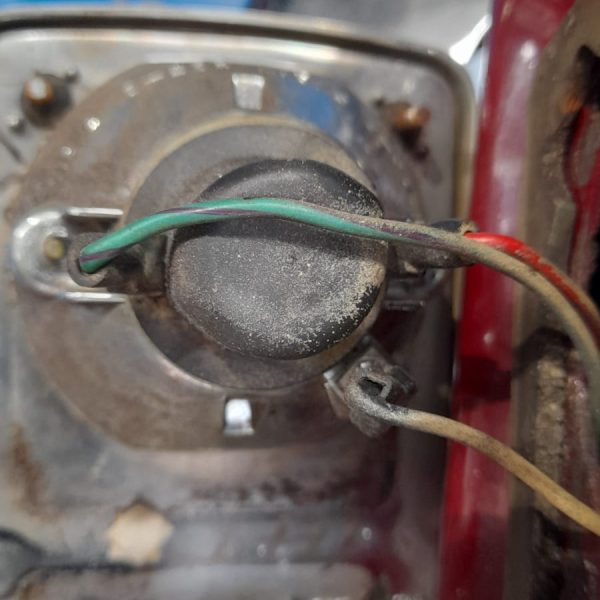
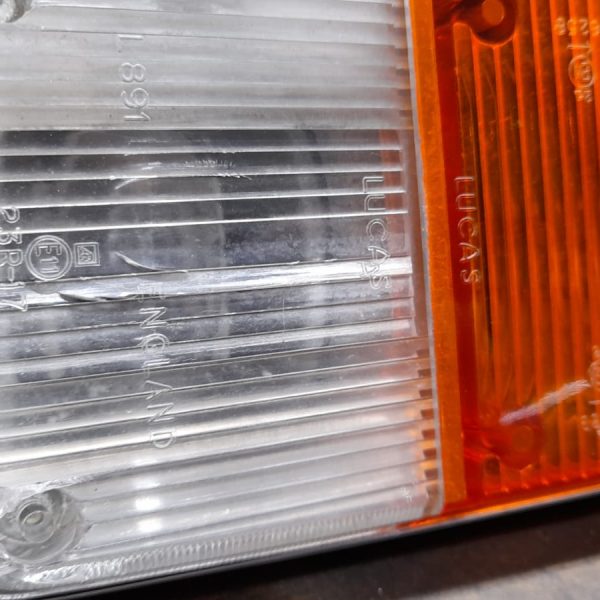
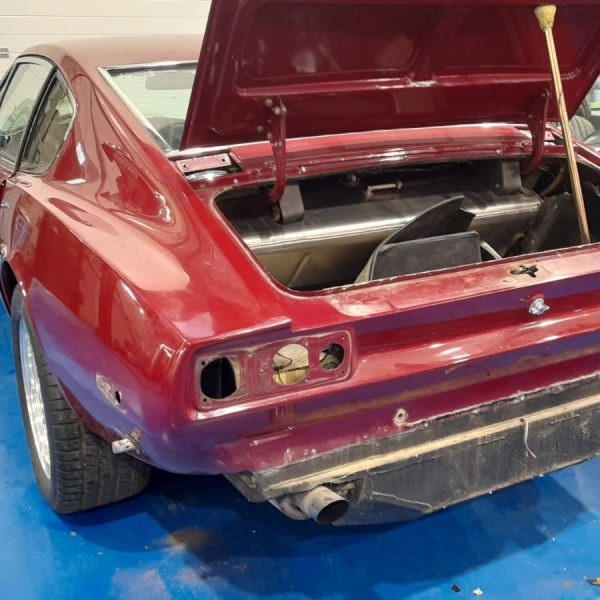

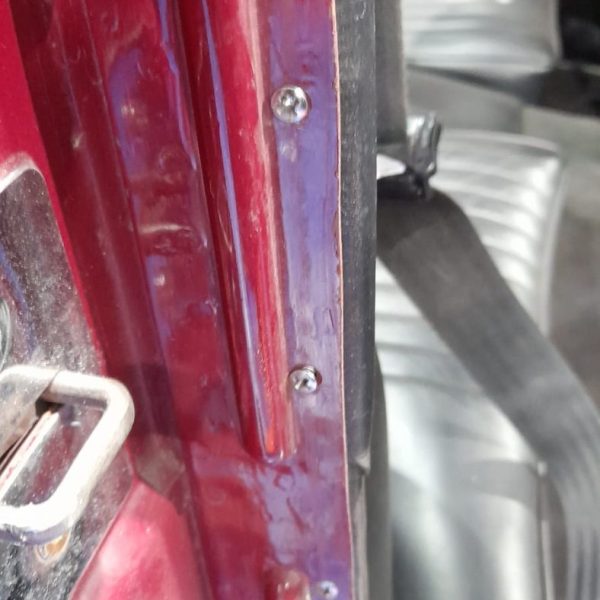
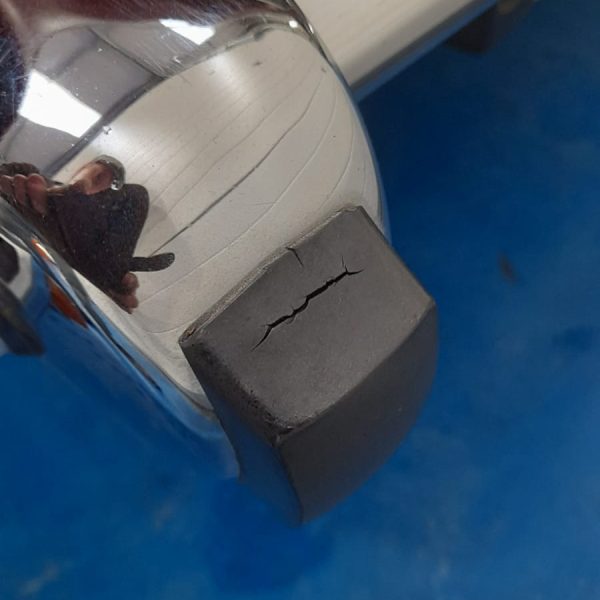

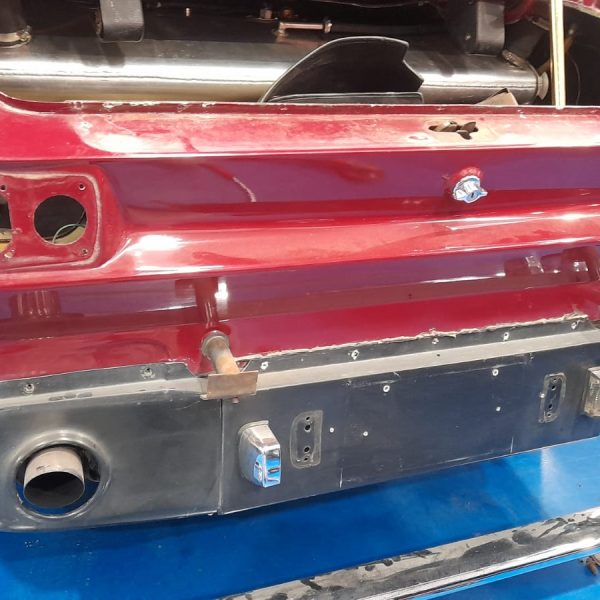
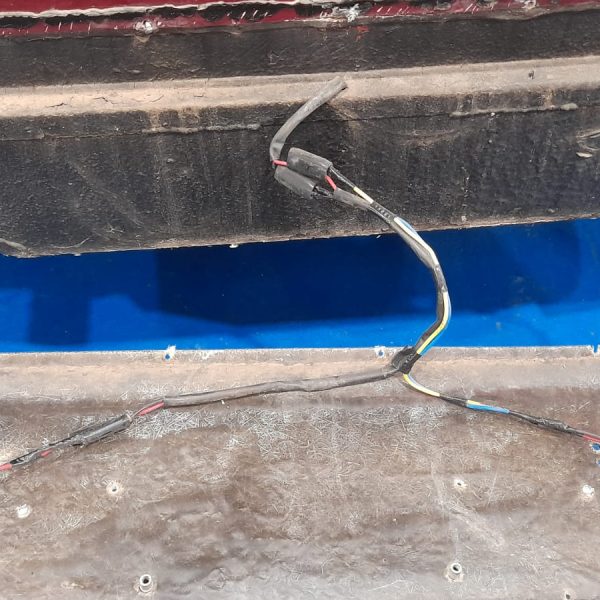

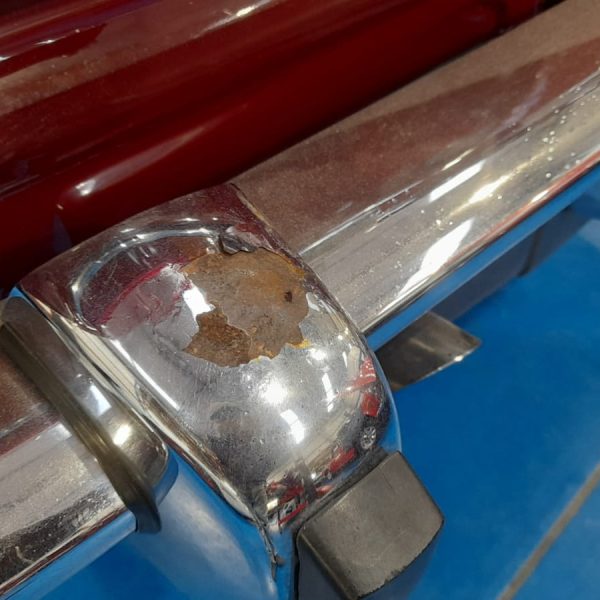
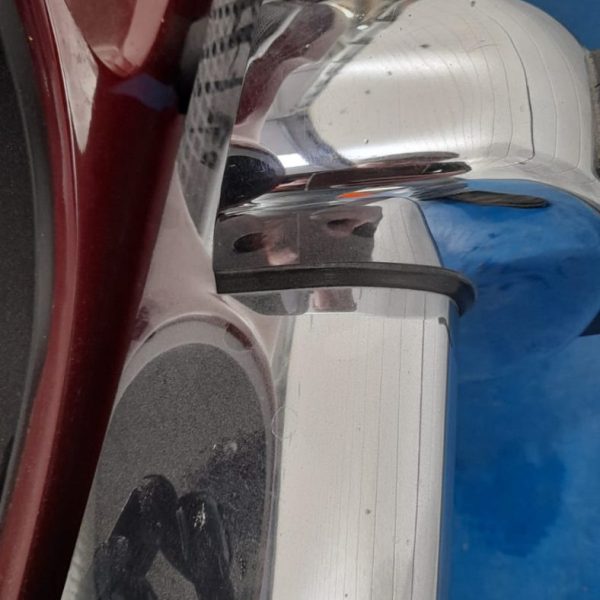
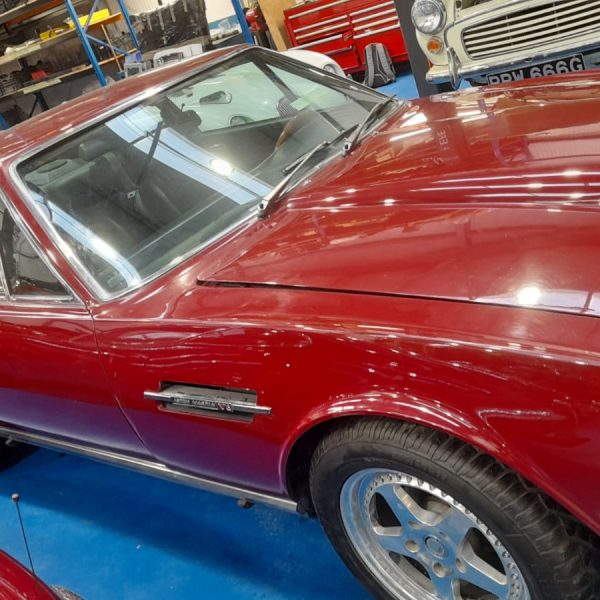
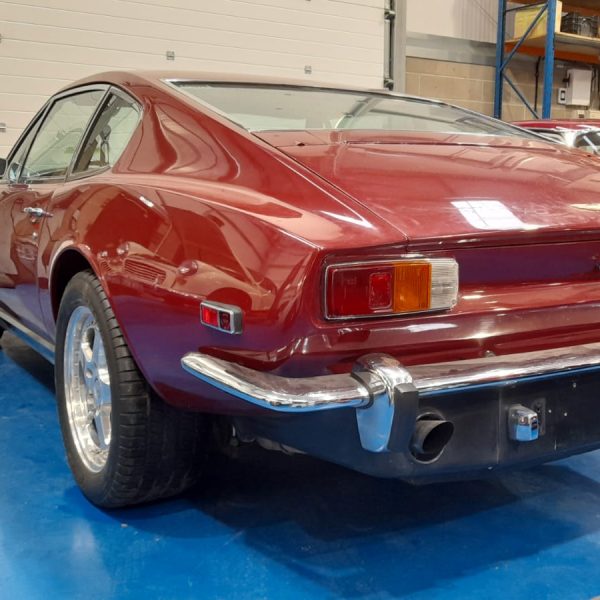

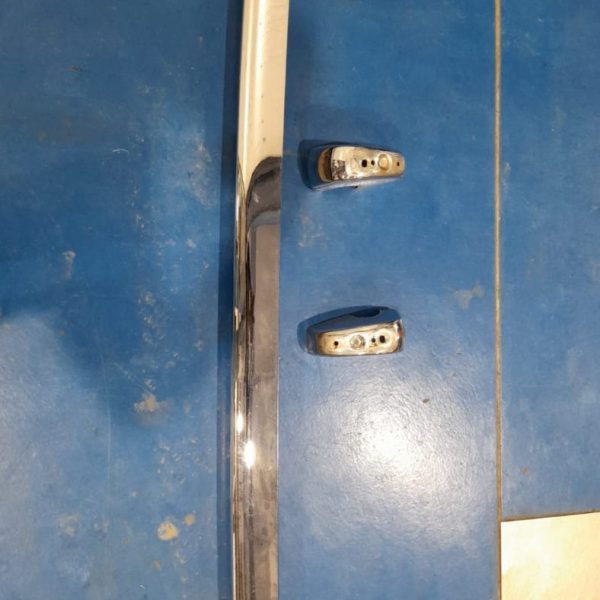
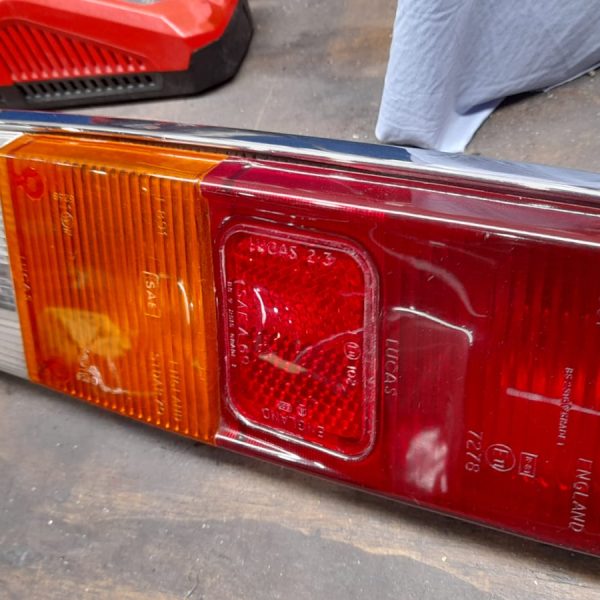
Classic car technician Brian has been doing some more work on the interior of our 1955 Aston Martin DB2/4 Mark 1.
His work started by cutting out a new top panel for the rear base seat. This was trial fitted in the car before Brian then went on to fit the front rail trim panel to the front edge of the seat base. The top panel was then glued and screwed to the base seat.
Once the base seat was in the car, Brian moved on to cutting the strips of leather to go around the inside of the boot opening. These were then glued into place.
Brian also fitted the rear side panels as well as the rear floor panels.
The carpets were the next focus of Brian’s attention. He glued calico material to the back of the carpets and marked where the carpets will go on the panels inside the car. The carpet was glued to the rear side panels as well as to the bottom edge and side of the interior wheel arch panel. Brian repeated this on both sides of the vehicle.
After the carpets, Brian fitted the metal channels to the boot floor panels and fitted rubber strips to them.
The boot floor panels were put in place and the middle metal channel was fitted to join the two panels together. Brian went on to fit all of the metal access covers to the boot floor.
Cover panels for the rear base seat to cover the bolts were next to be made before the rear squab was fitted in the car.
After the carpets and boot floor panels had been fitted, Brian turned his attention to the passenger side dash tray.
With all of this interior work ongoing, the rebuild of the engine for our 1955 Aston Martin DB2/4 Mark 1 is also making good progress.
The cam timing is now being sorted so it won’t be too much longer before the engine will be ready to go back into this rare classic car.
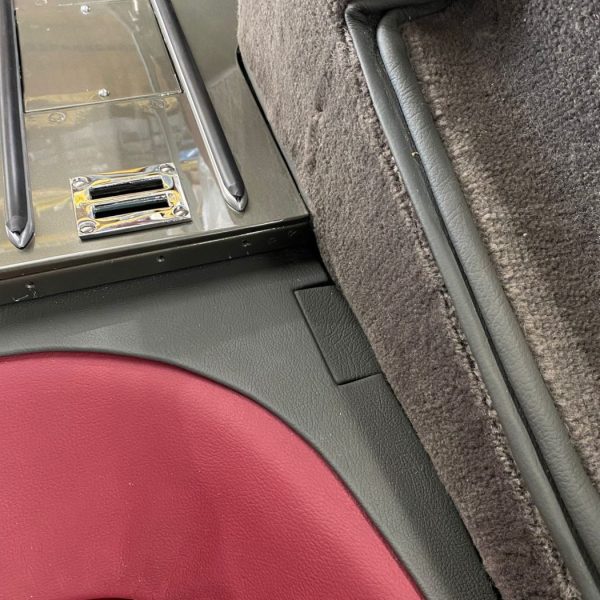
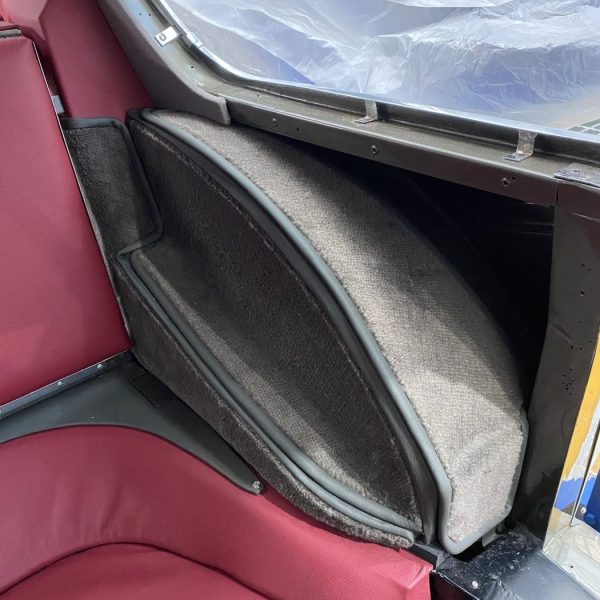

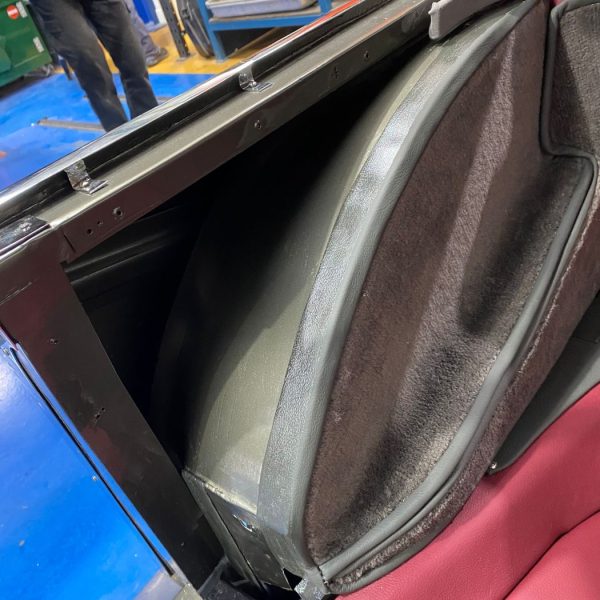
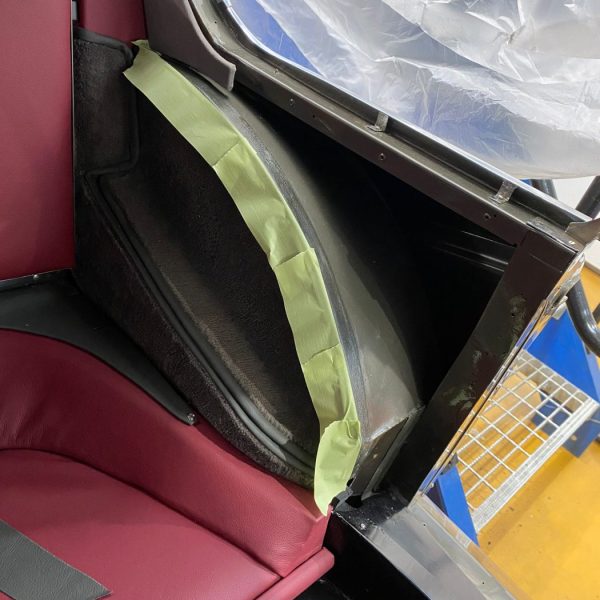
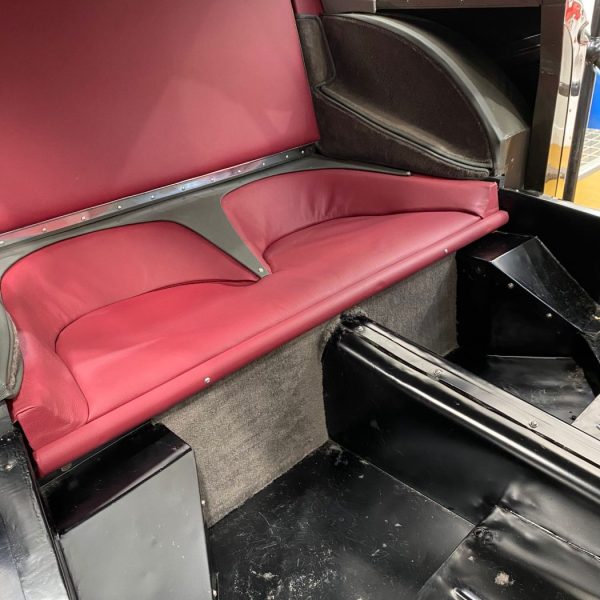

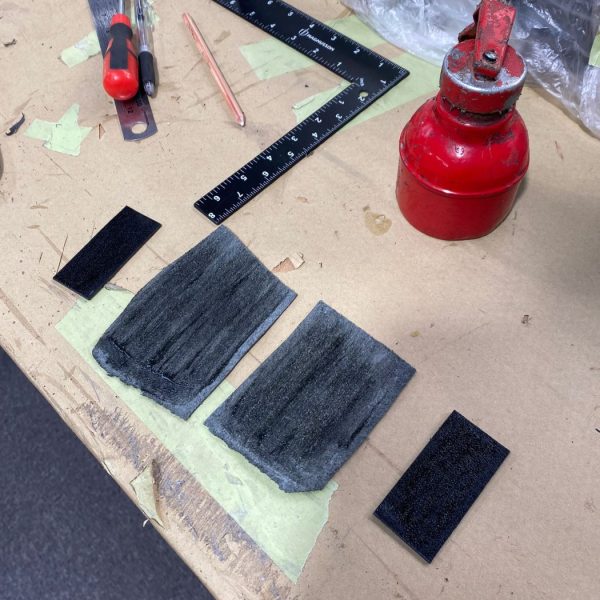
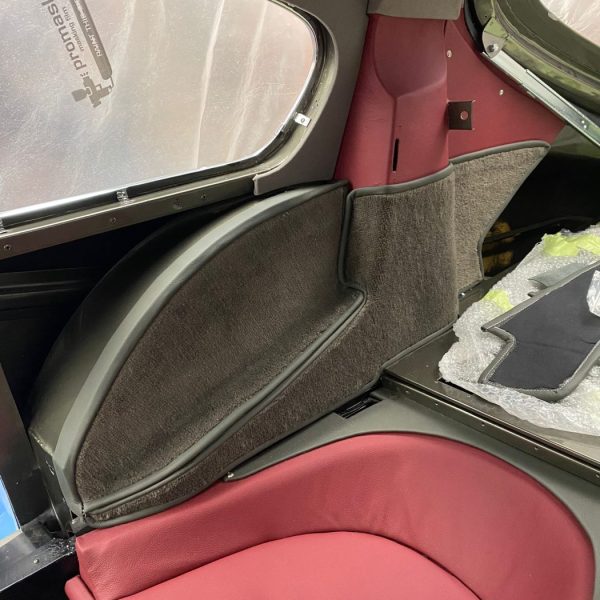
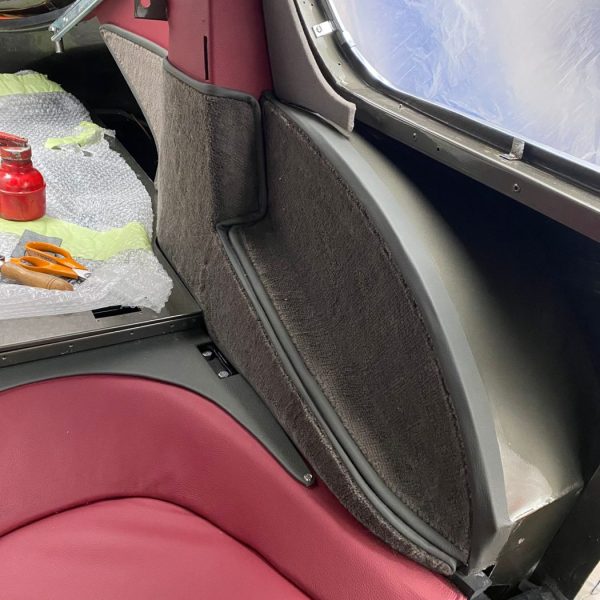
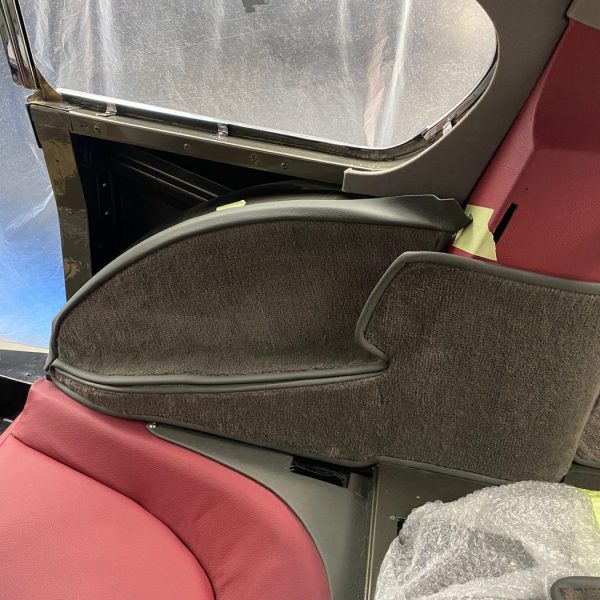
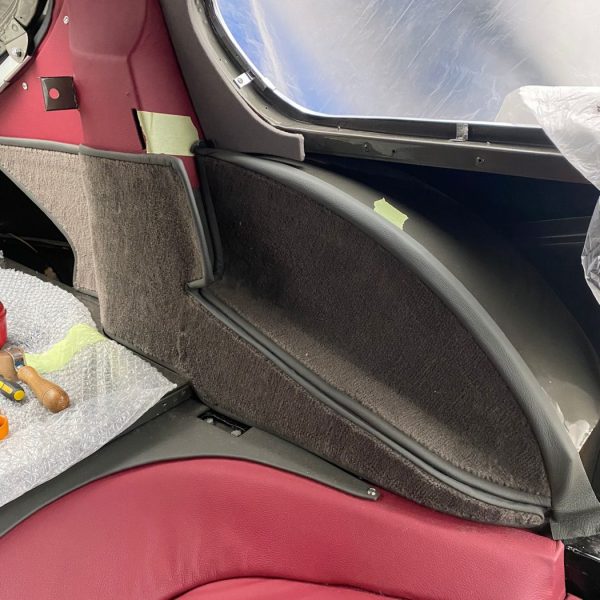

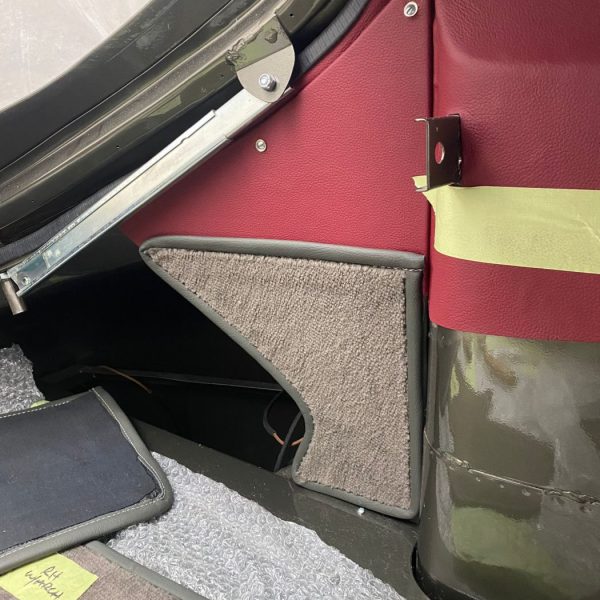
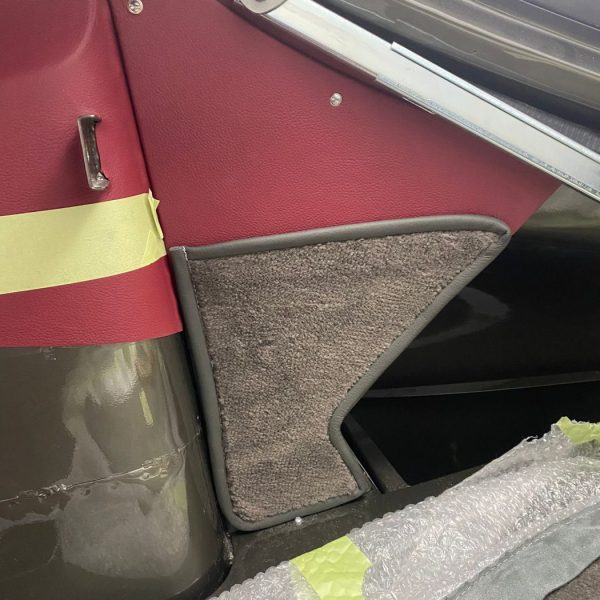
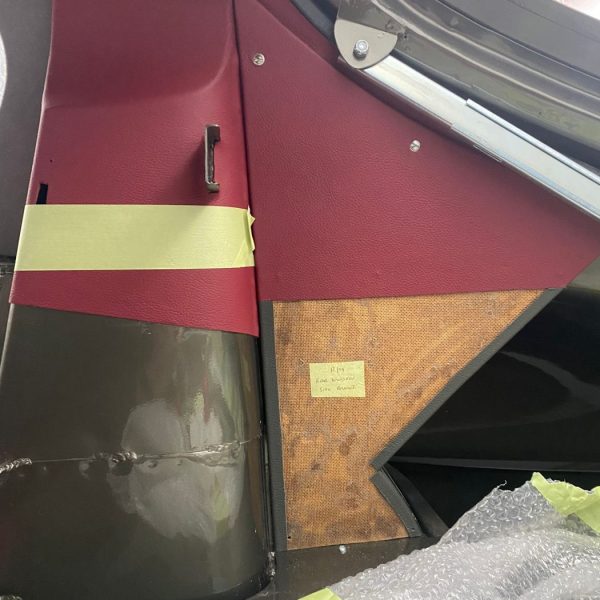

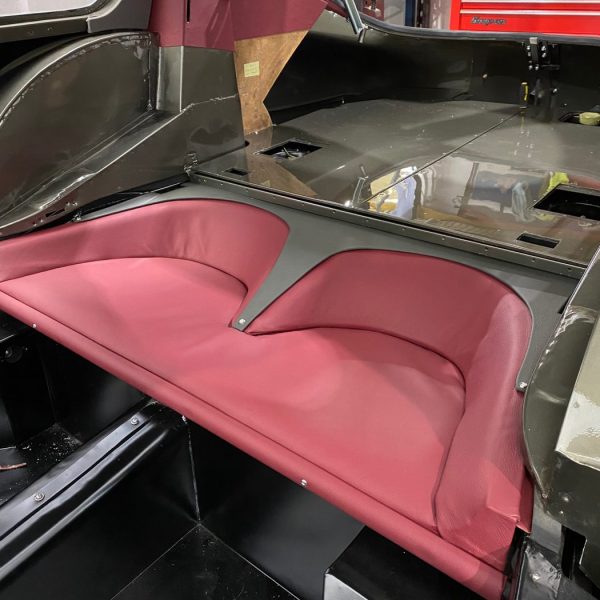

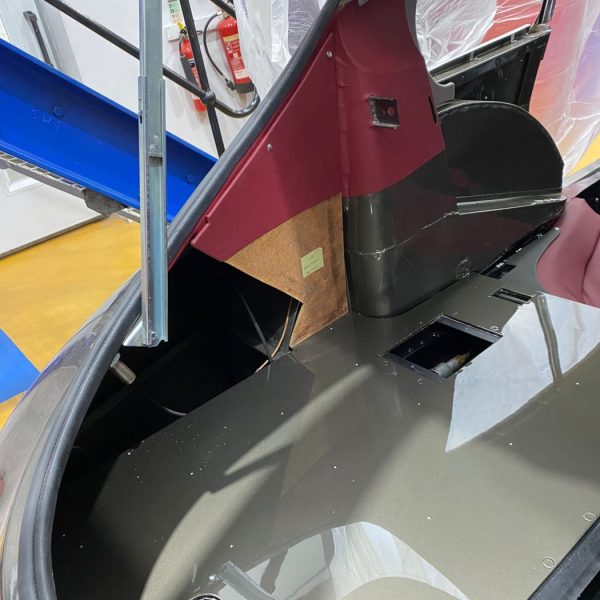
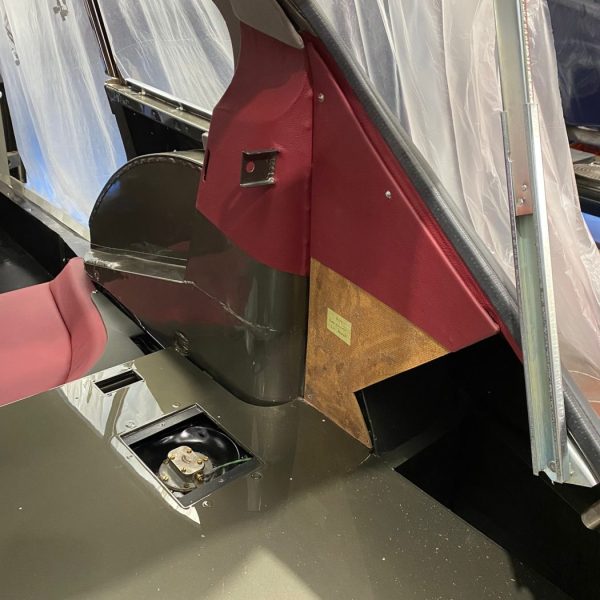
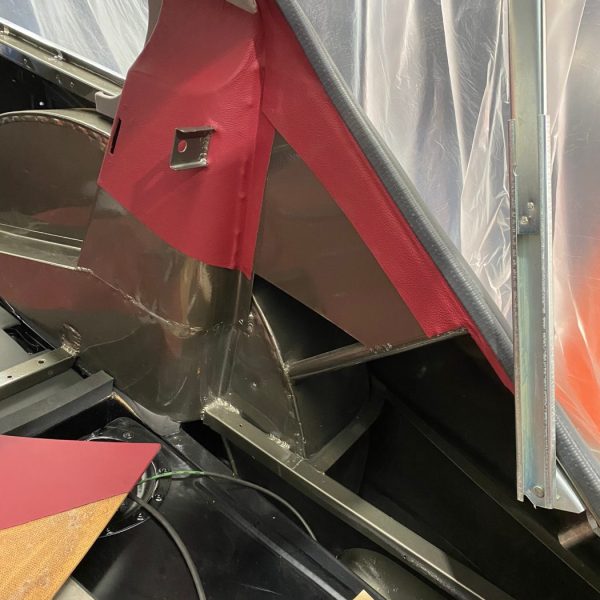


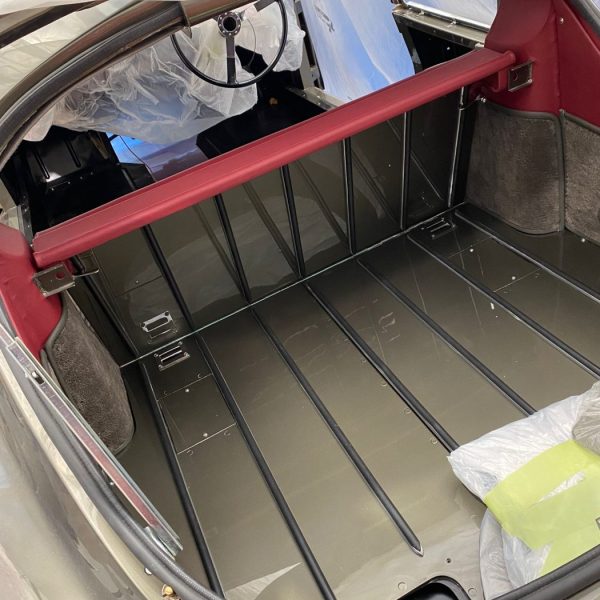
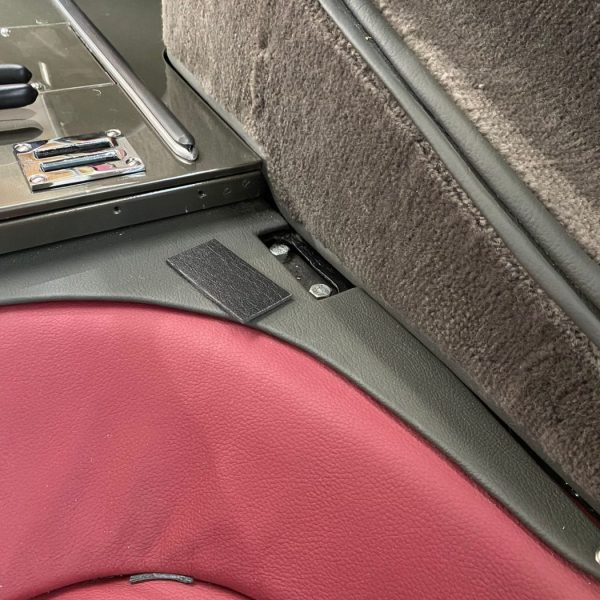
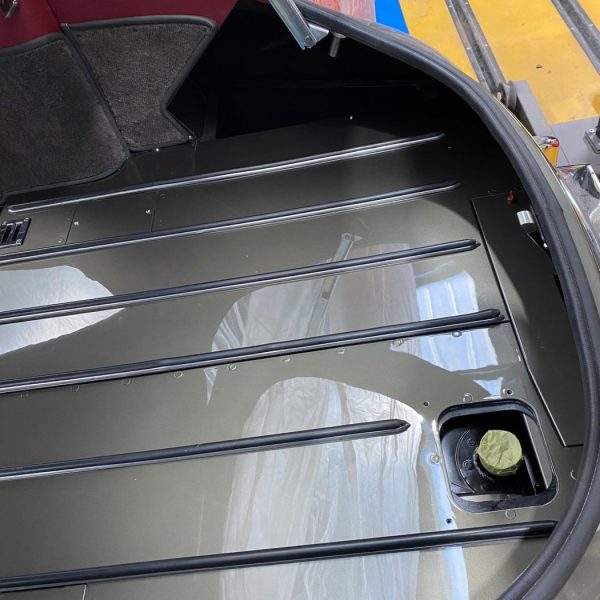
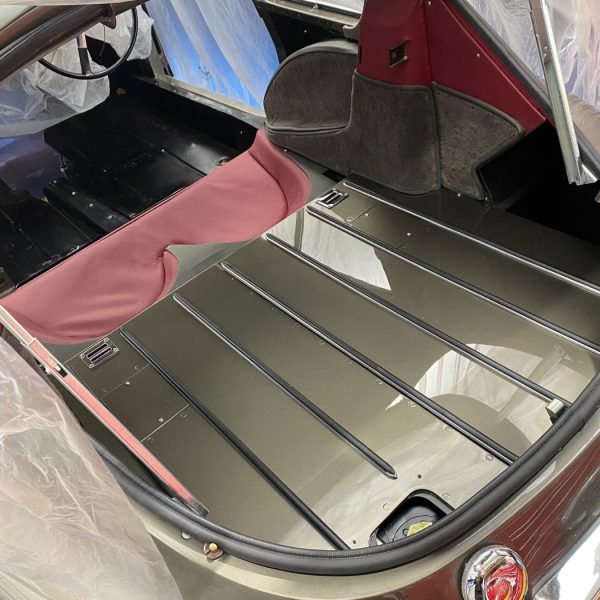
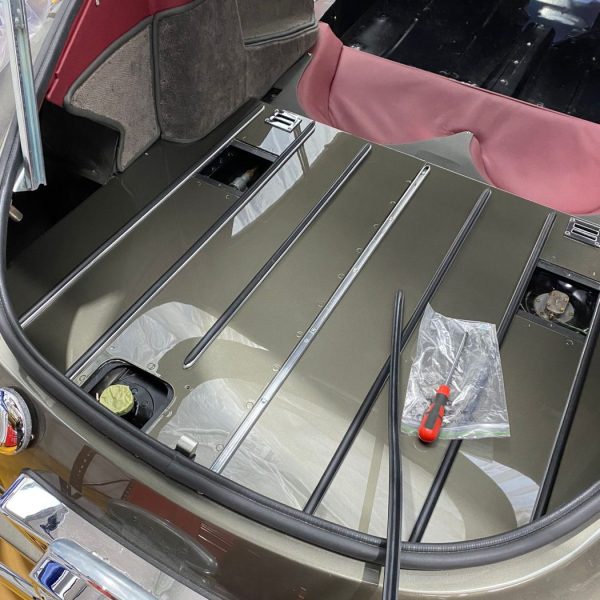
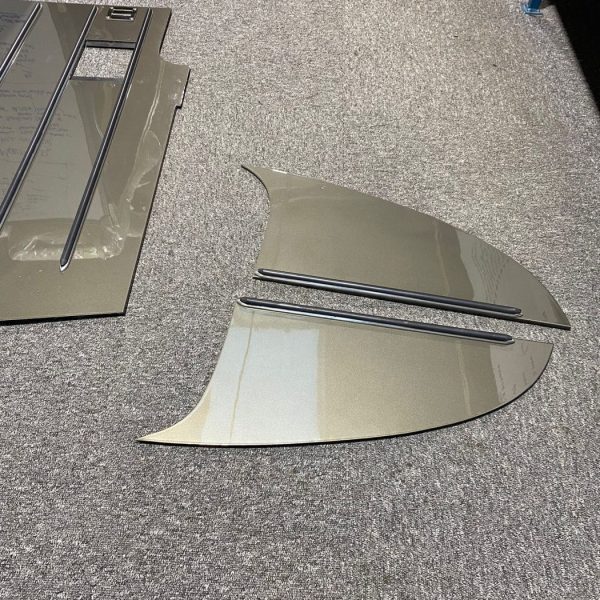
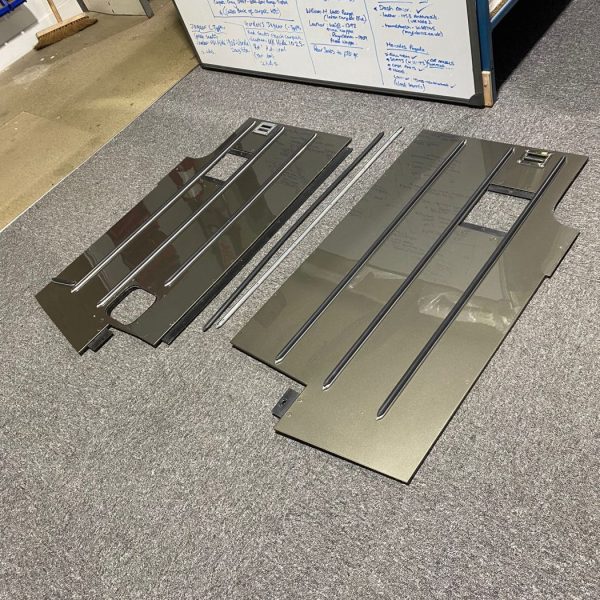

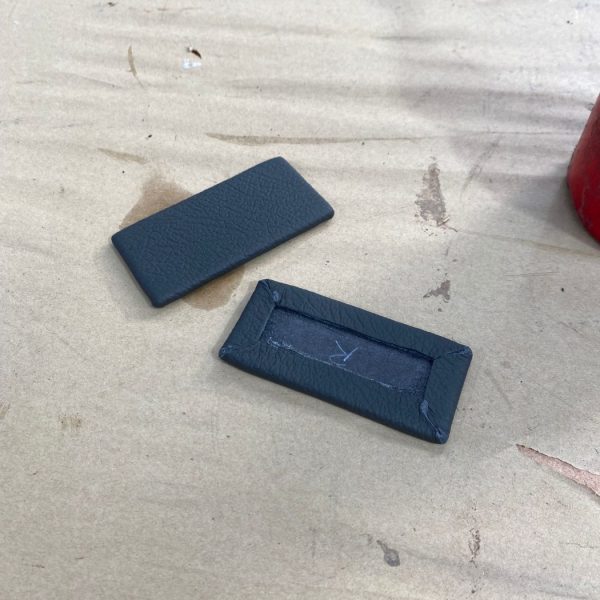
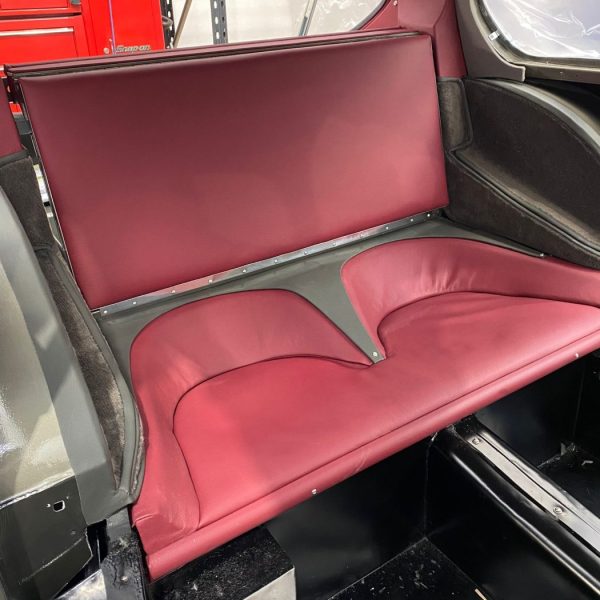
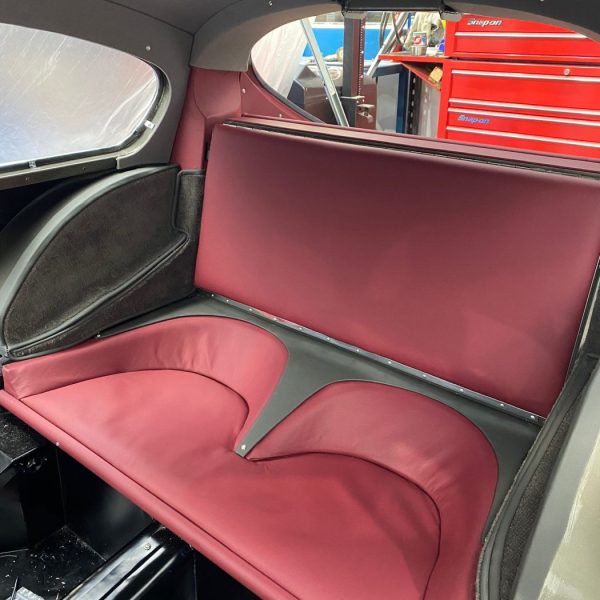
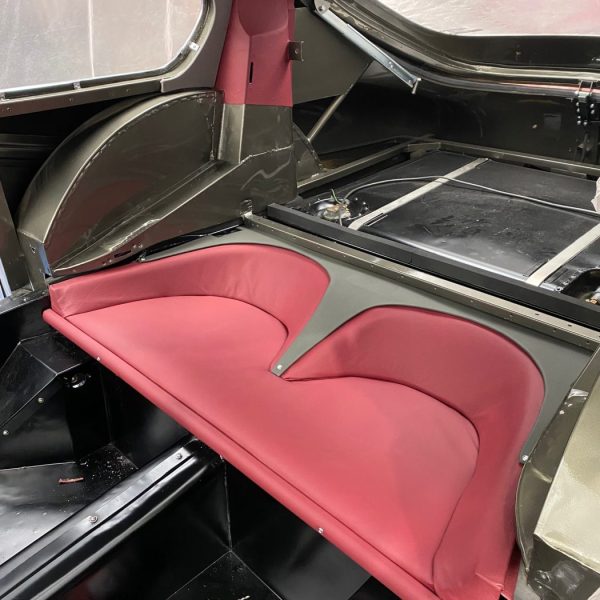
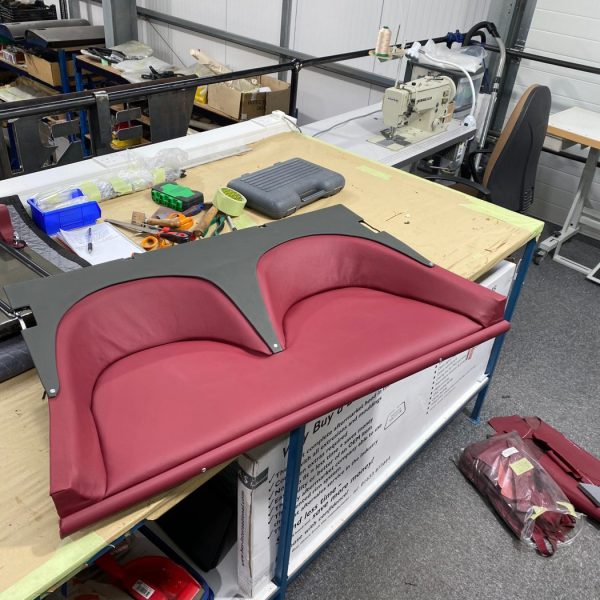
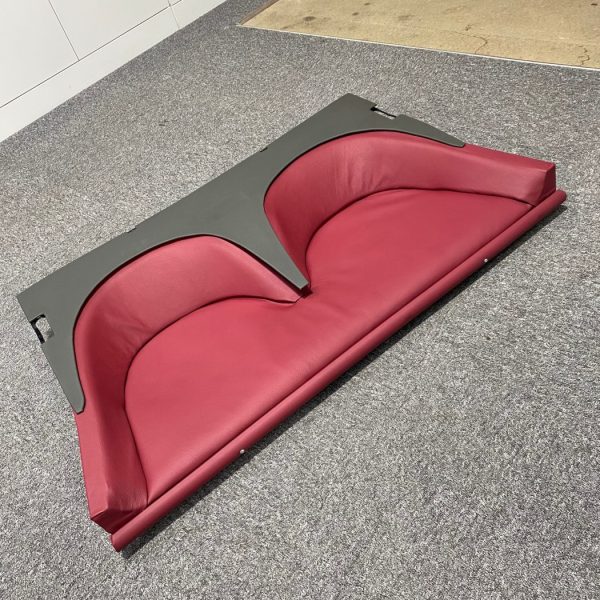
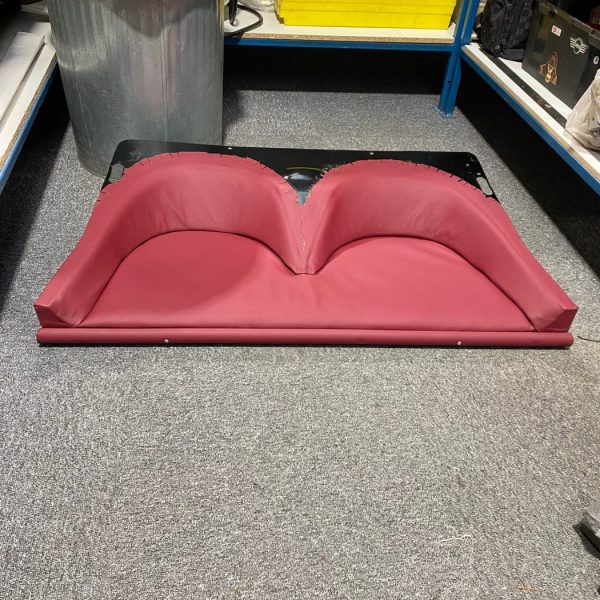
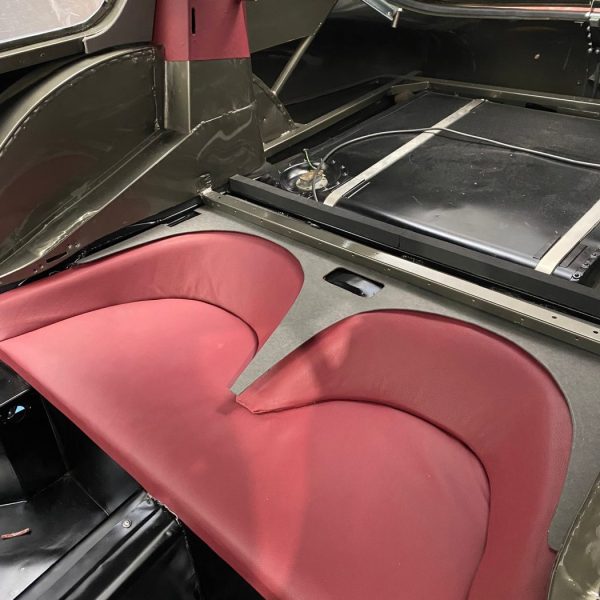
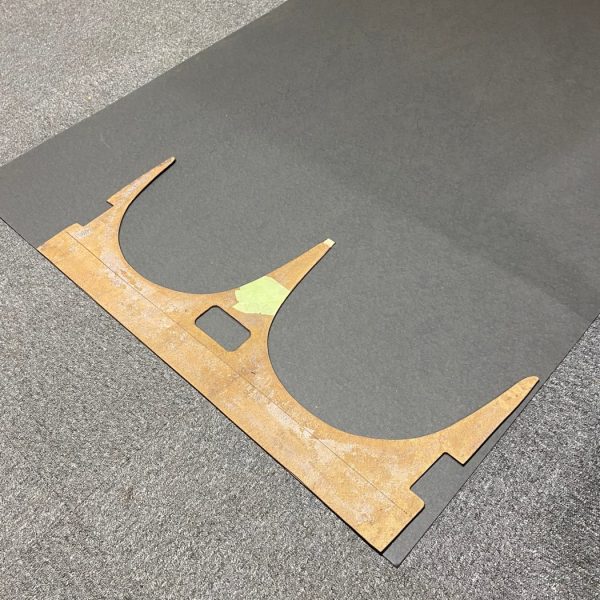
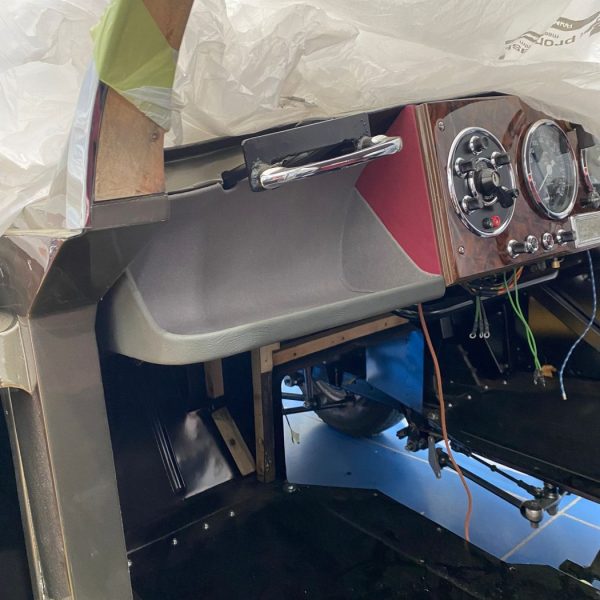
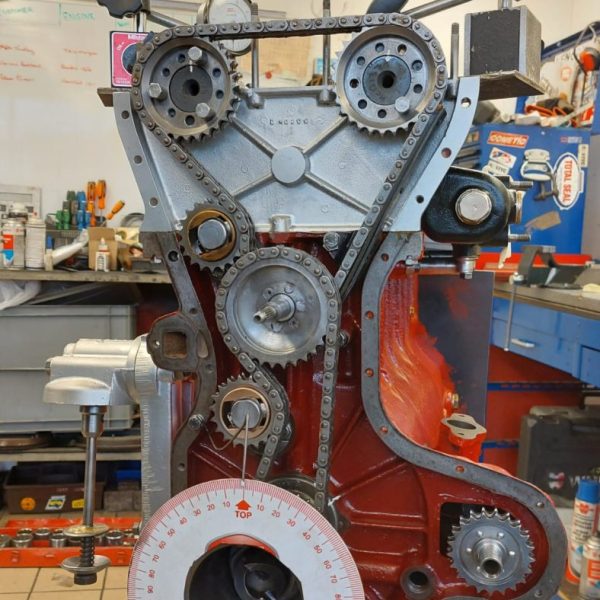
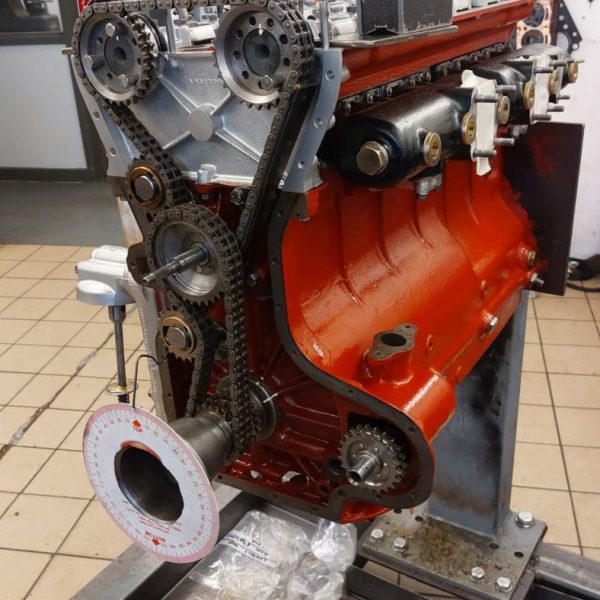
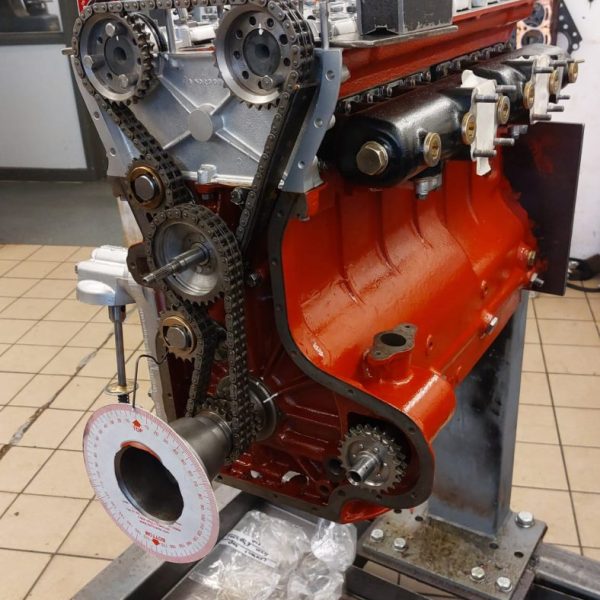
Classic car technician Jonn has been working on our 1976 Aston Martin AMV8. He checked the tracking before adjusting it to parallel.
Jonn wanted to get the car running properly so he checked the ignition timing. While doing this, he found that the HT leads were not fitted in the correct firing order. After carrying out additional checks, Jonn set the engine to top dead centre on cylinder one compression and fitted the HT leads in the correct order.
Once he had done this, Jonn did a test start and our 1976 Aston Martin AMV8 started straight away.
Jonn set the ignition timing and put everything back together. Then it was time to take the car outside so it could run up to temperature and tune the carbs.
Jonn found a kinked heater hose during his checks so this was replaced. Once the carbs had been tuned, everything was running nicely and our AMV8 looks to be in good shape moving forwards.

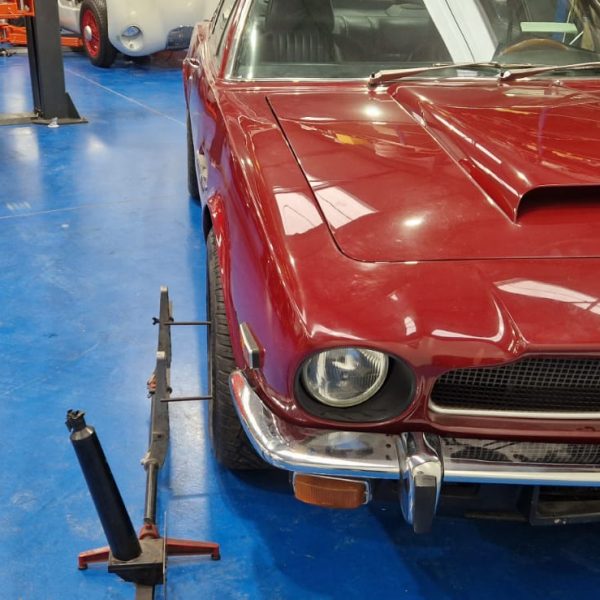

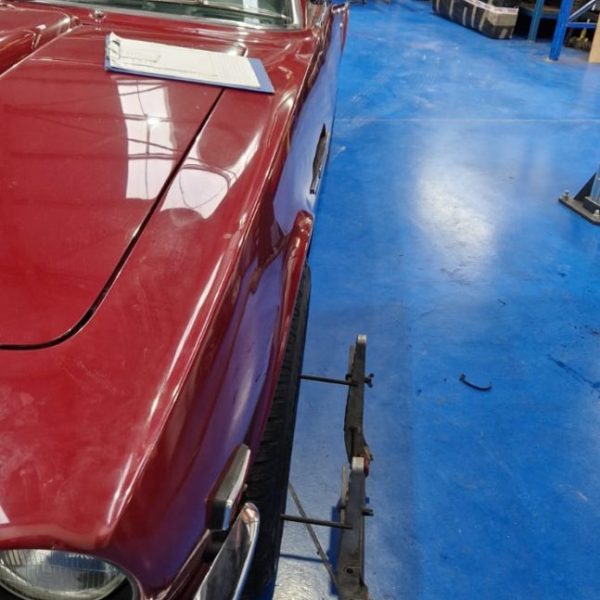
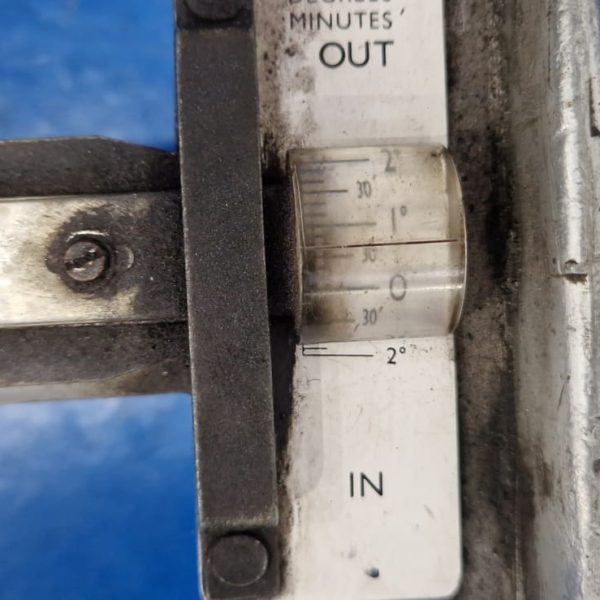
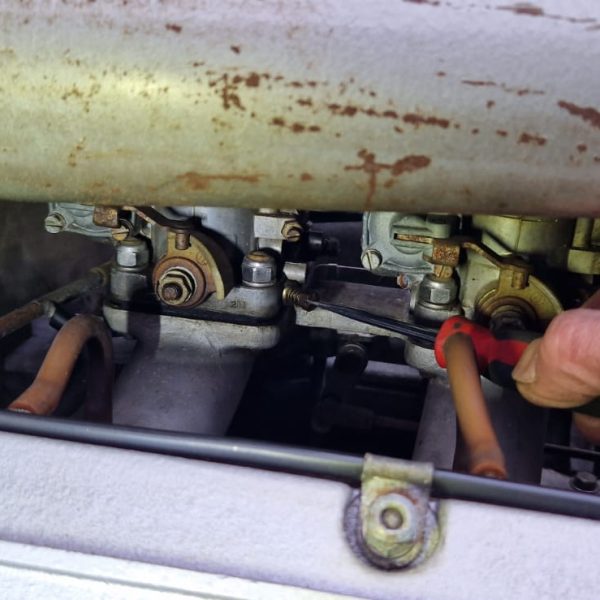
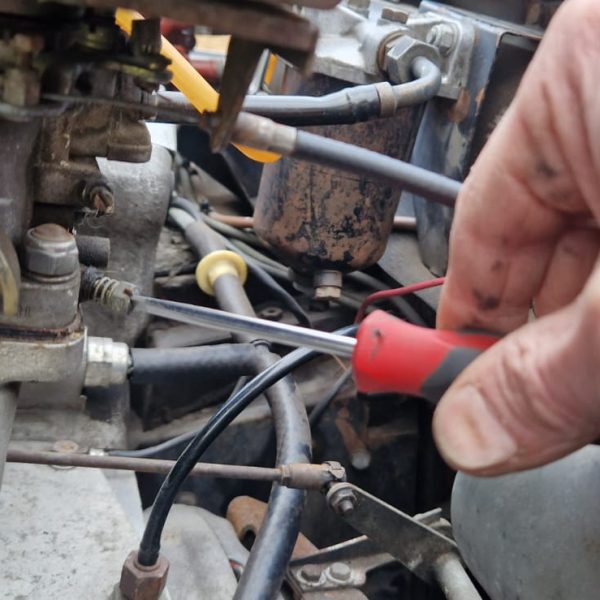
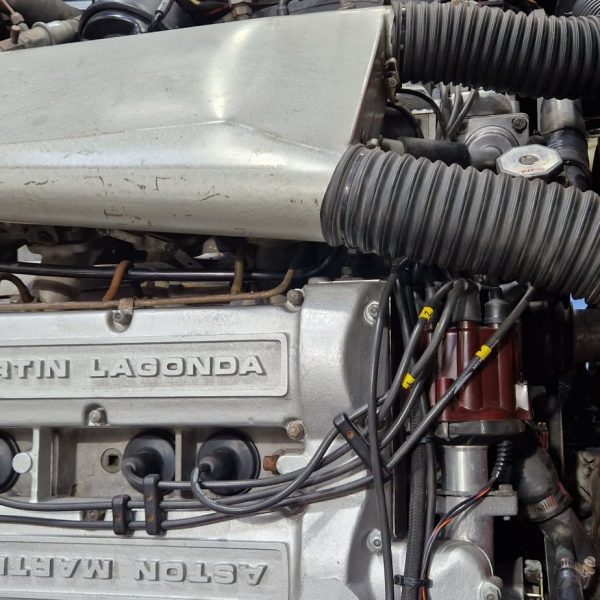
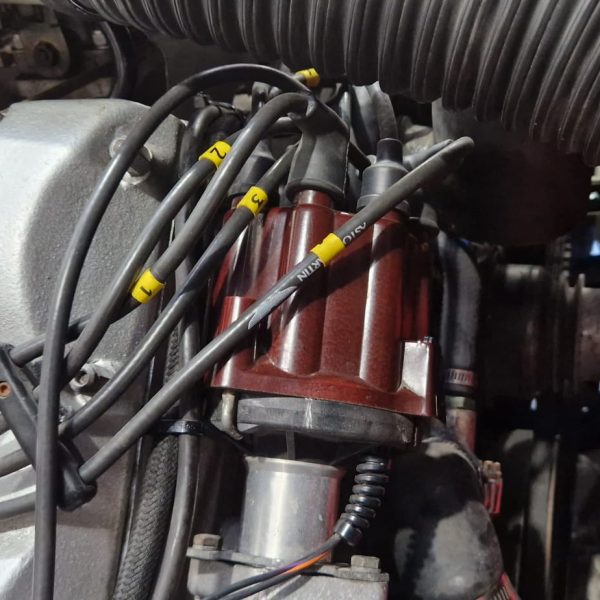
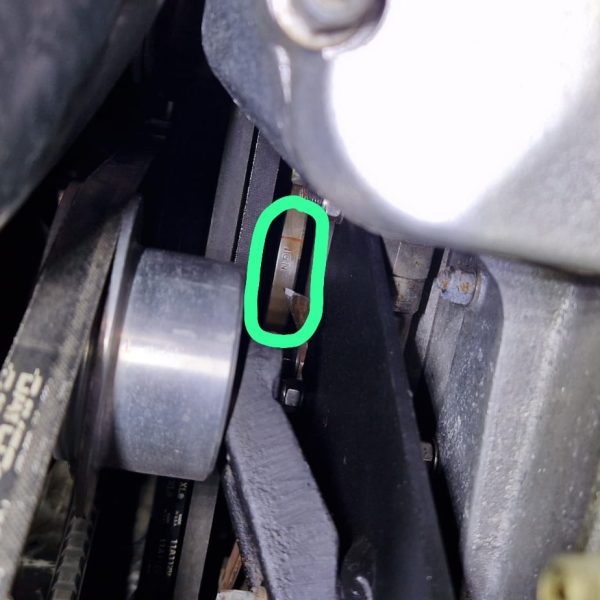
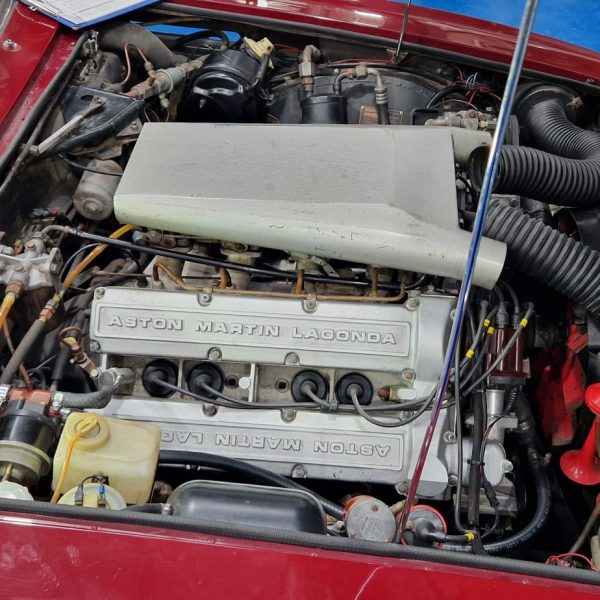
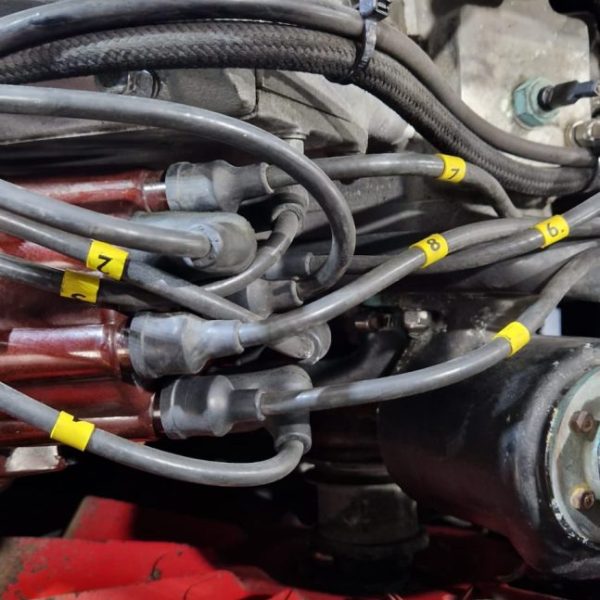
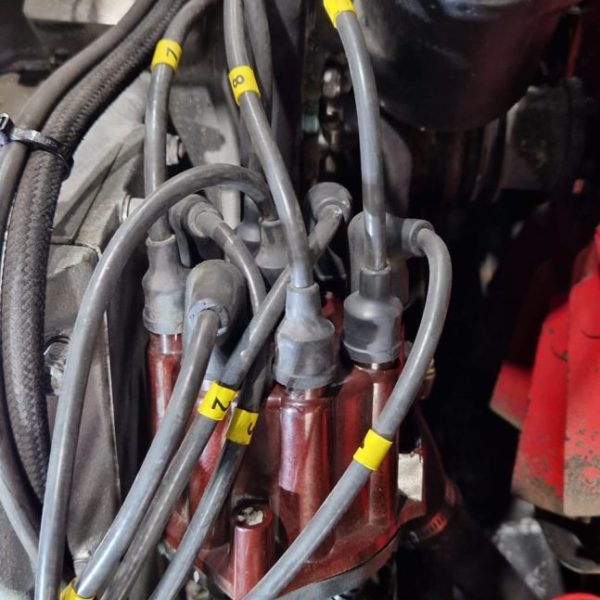
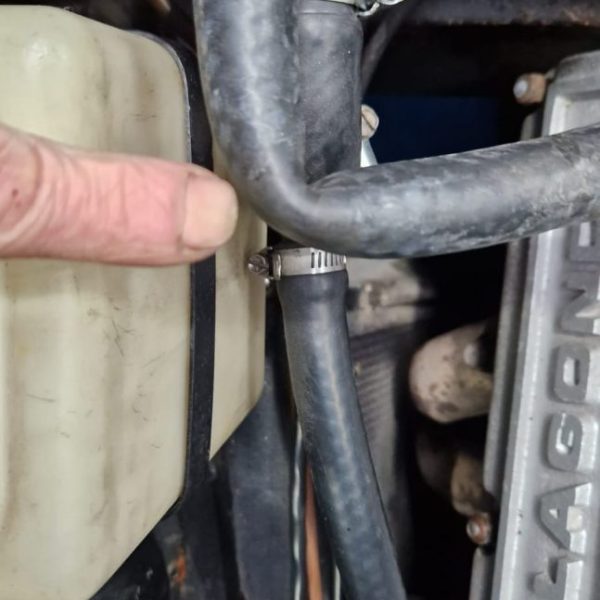

More interior work has been completed by Brian on our 1955 Aston Martin DB2/4 Mark I. He first cut out new leather for the rear seat base pad before he glued the foam and leather onto the rear base seat panel. Brian went on to turn the leather around the edges of the panel.
He riveted the back pads to the frame and then glued the back pad covers to the frame and fitted it into the car.
Brian then turned his attention to the rear seat squab section where he fitted the latch mechanism to the squab panel. He removed the covers from the squab side wood sections and then re-covered these with new leather.
The original top cover was clamped so holes could be drilled for the metal bracket. The metal bracket was then glued to the new leather.
Side trim panels were also made.
Brian went on to fit a hinge to the bottom edge of the rear seat squab section and then went on to fit the chrome latch handles. Metal channels for rubber inserts were fitted before the rubber inserts were added.
While Brian was working on the interior of our Aston Martin DB2/4, the engine rebuild was progressing. Once the last liner was machined, the engine was ready for final assembly.
The crankshaft has been placed in the block and the fit is how it should be. The pistons and liners have been prepped and the head has now been finished.
Progress continues to be made on our rare Aston Martin and we look forward to the car being put back together and being one step closer to being able to leave the workshop and return to its owner.

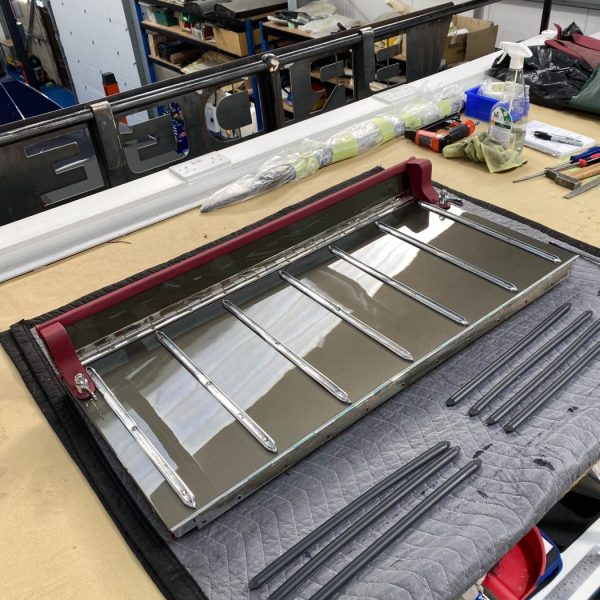
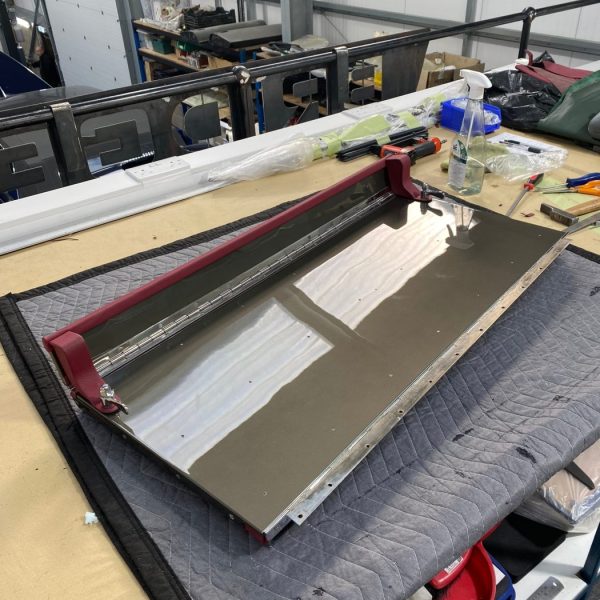
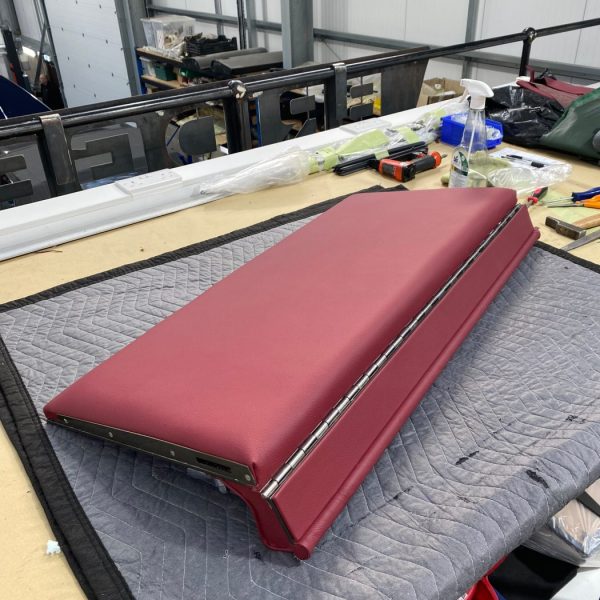
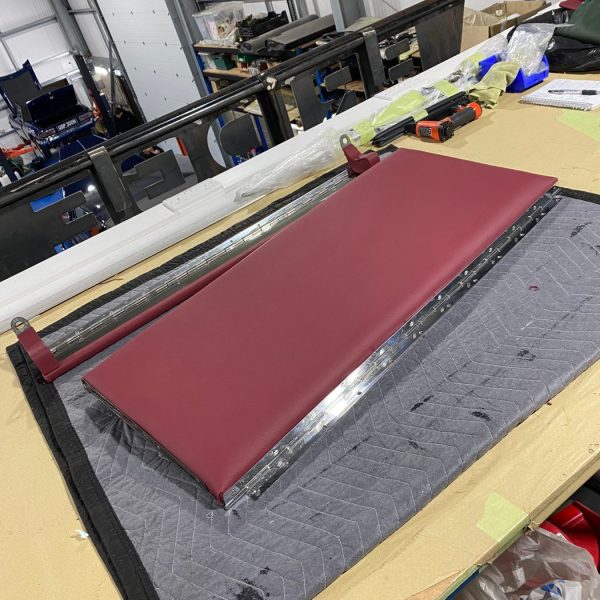

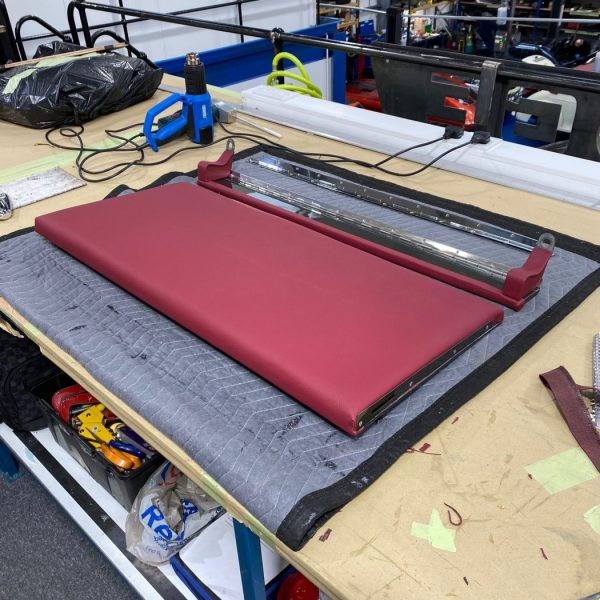
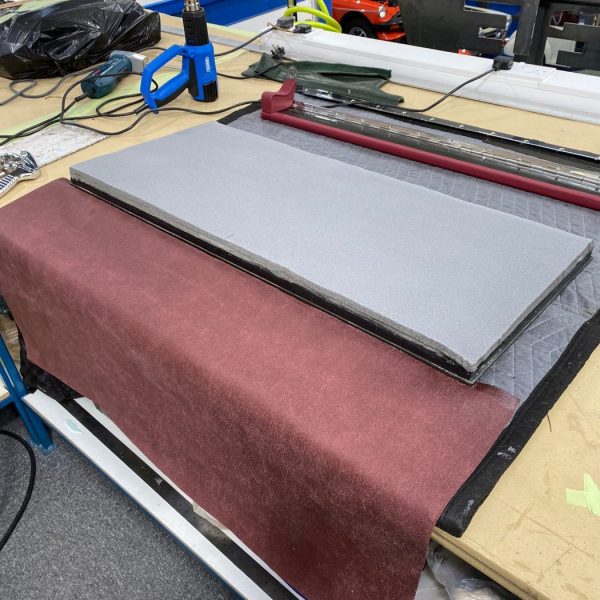

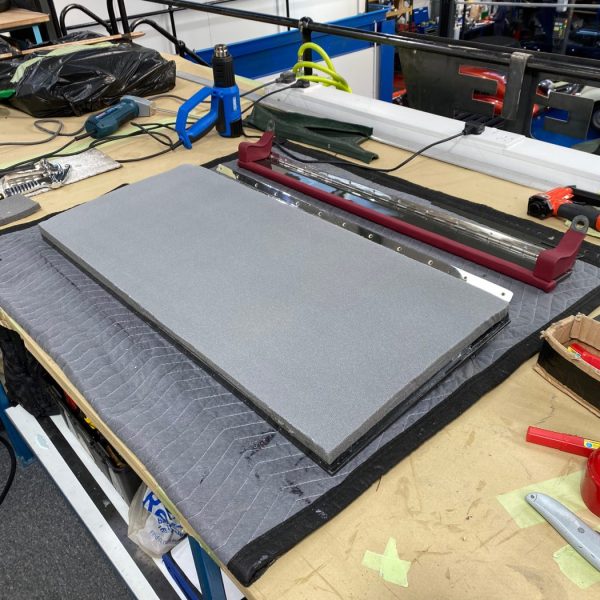


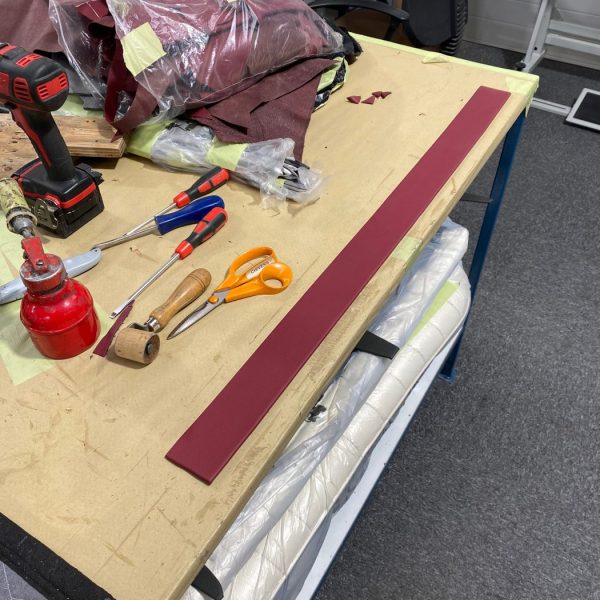

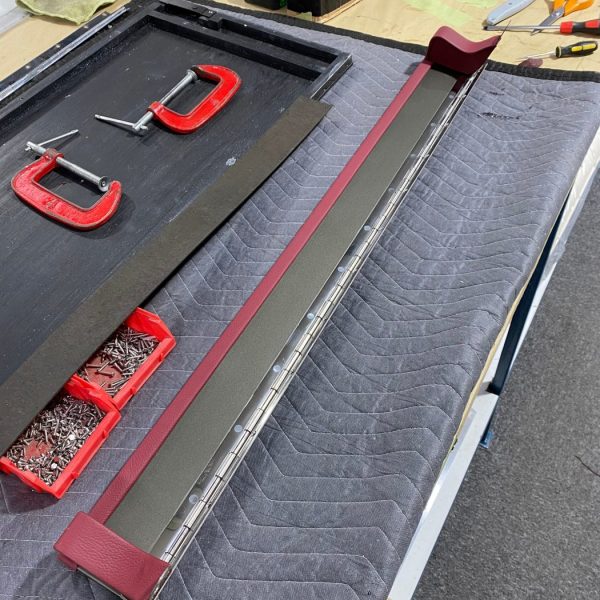

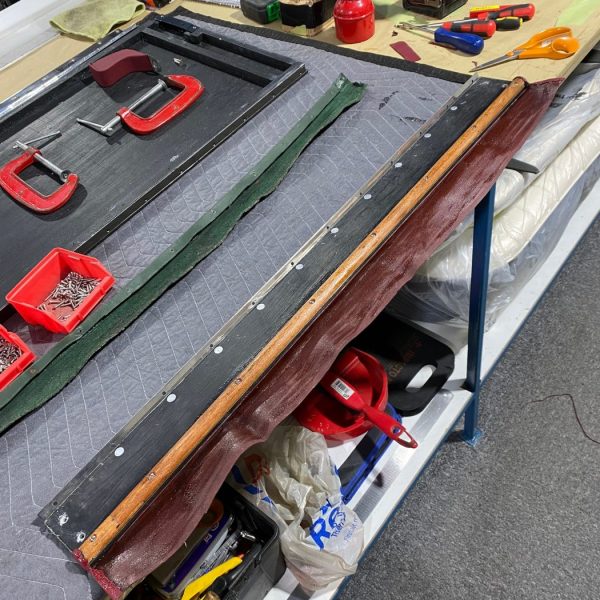
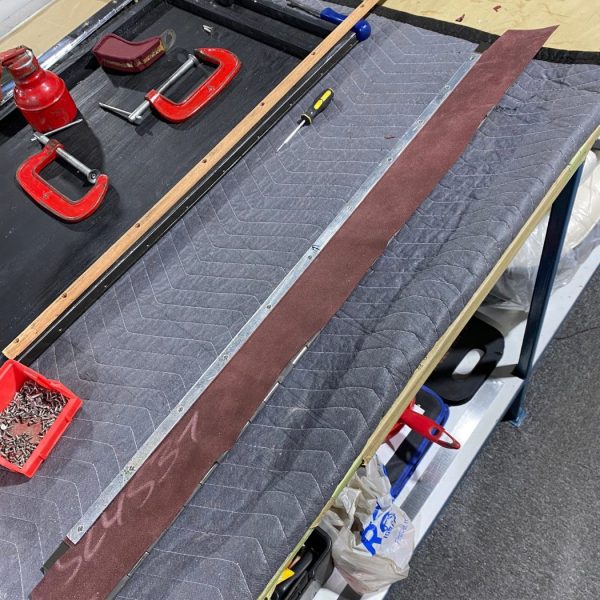
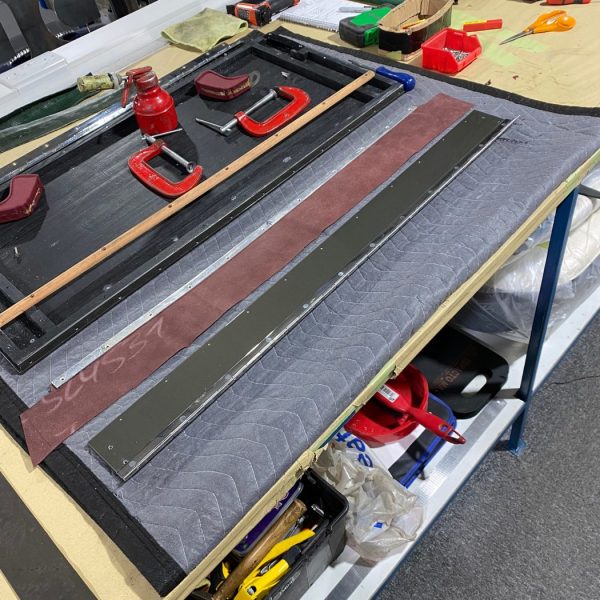
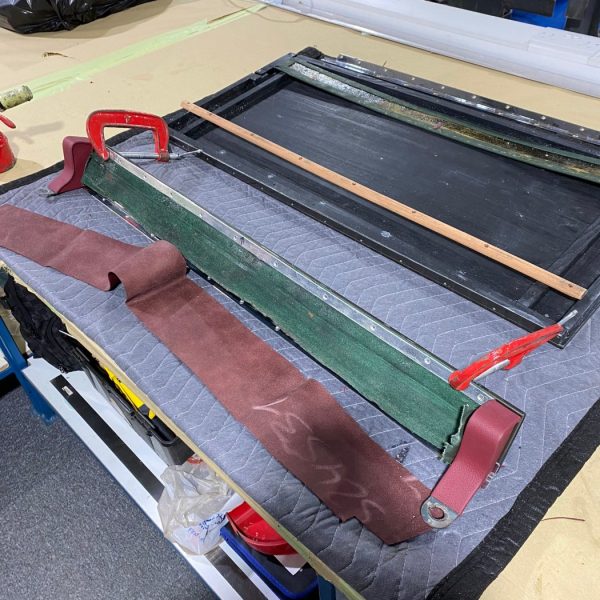
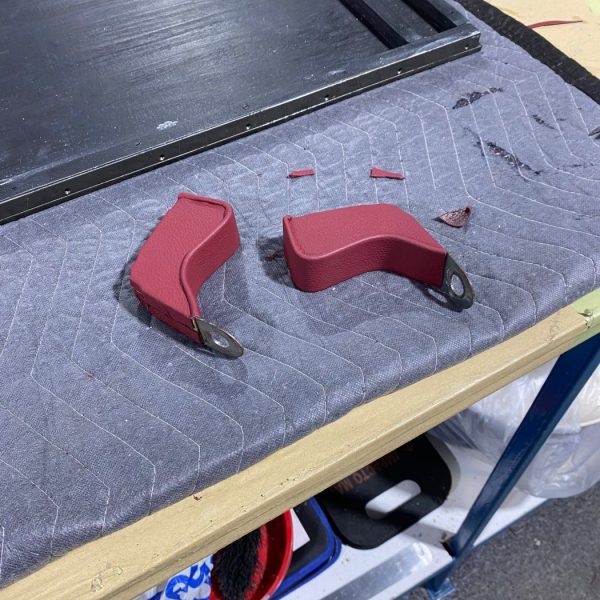
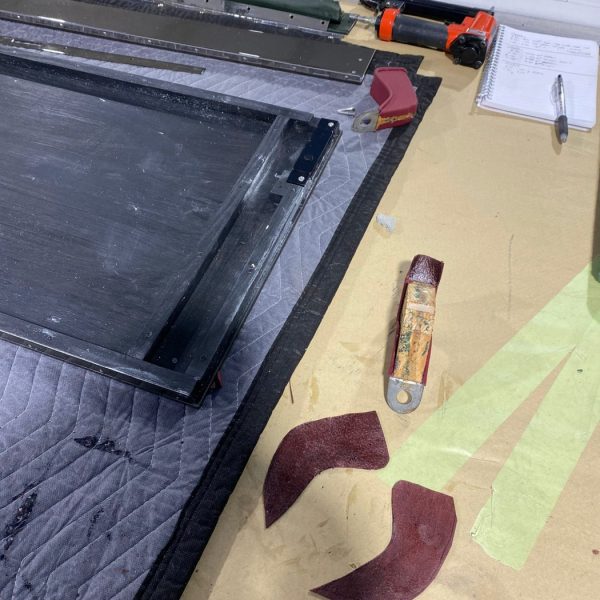
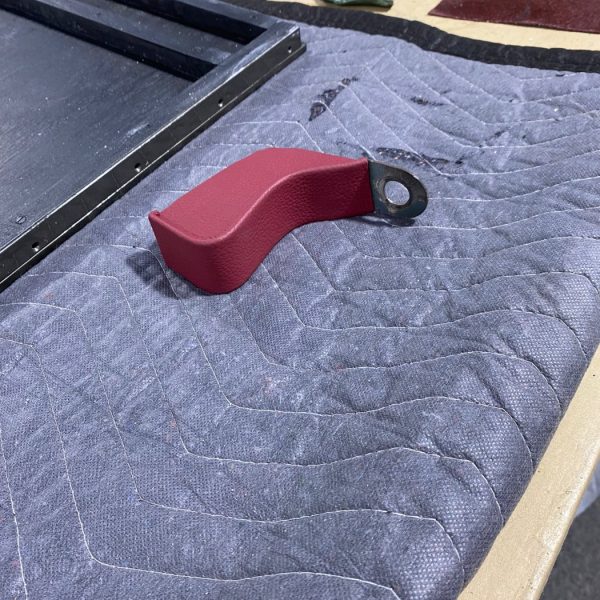
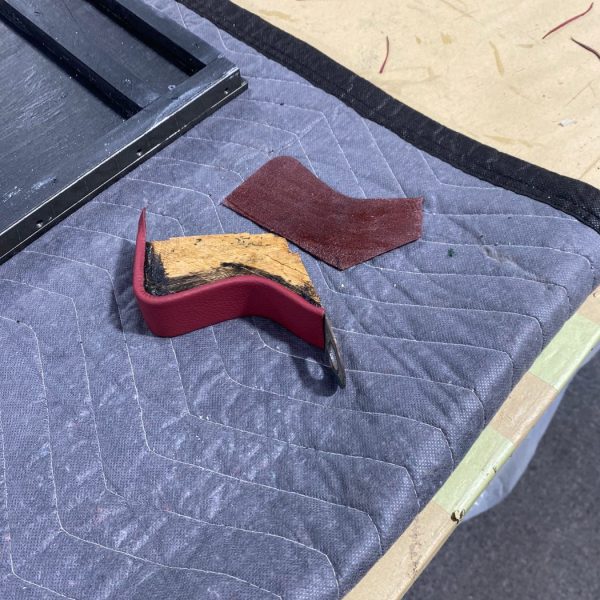
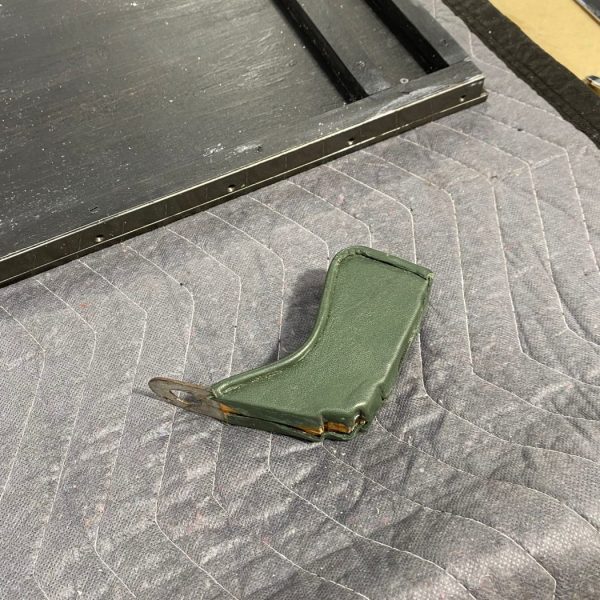
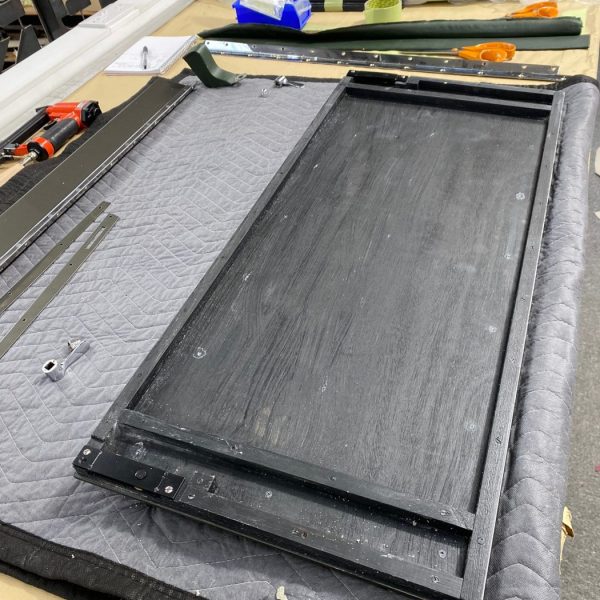
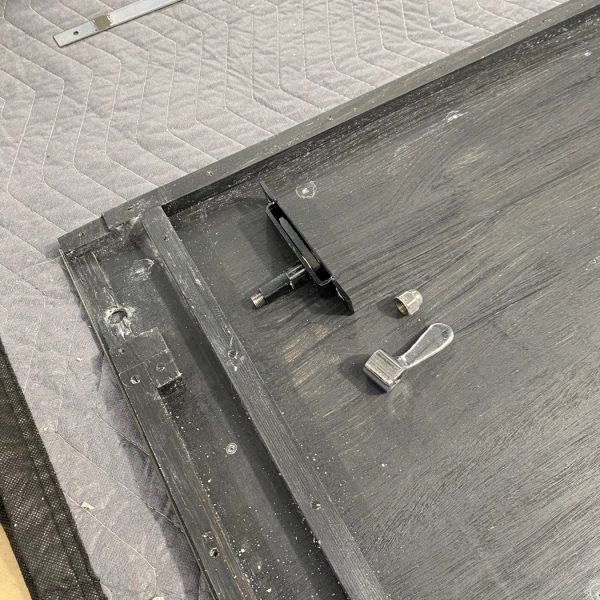
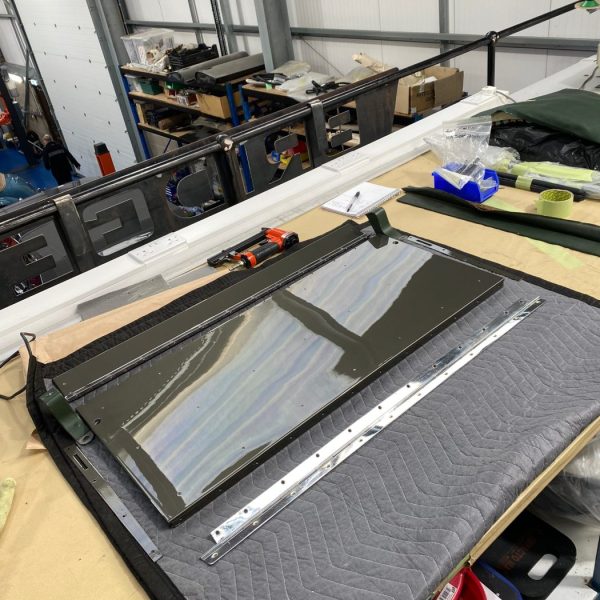


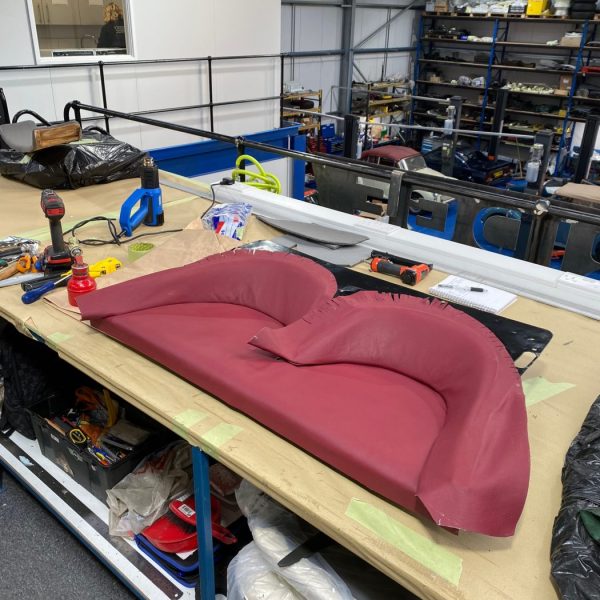
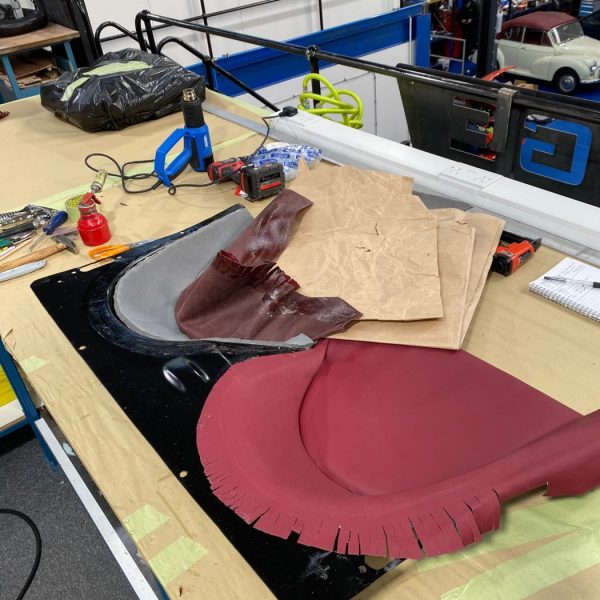
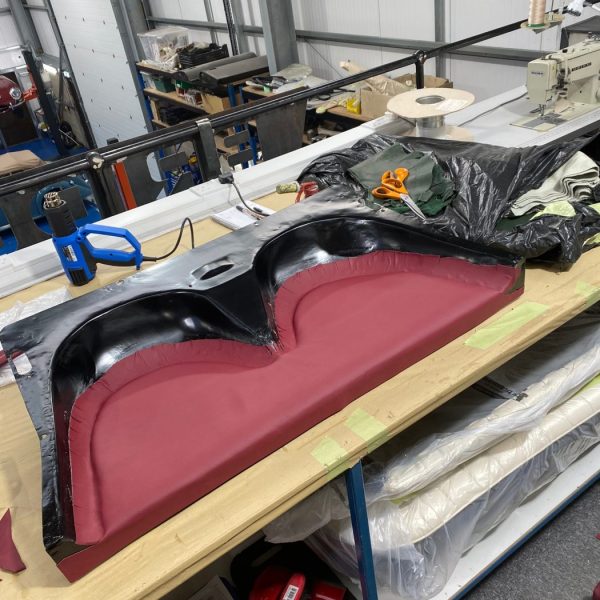
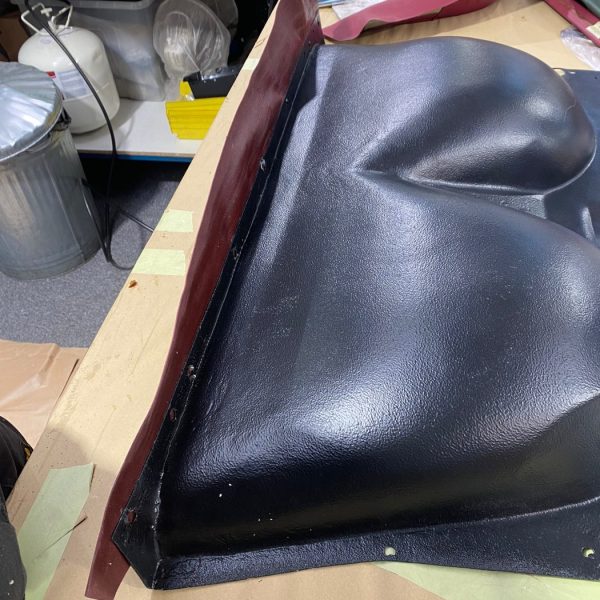

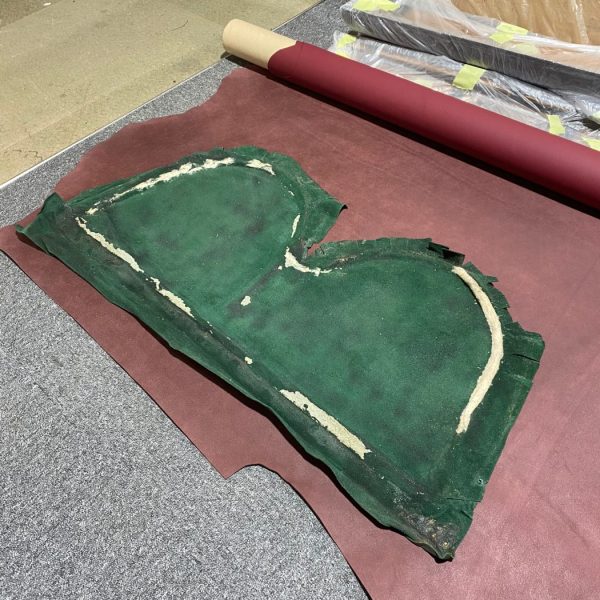
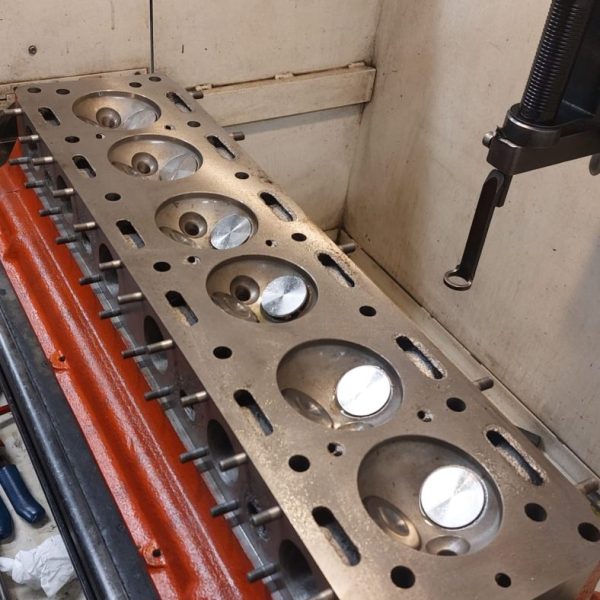
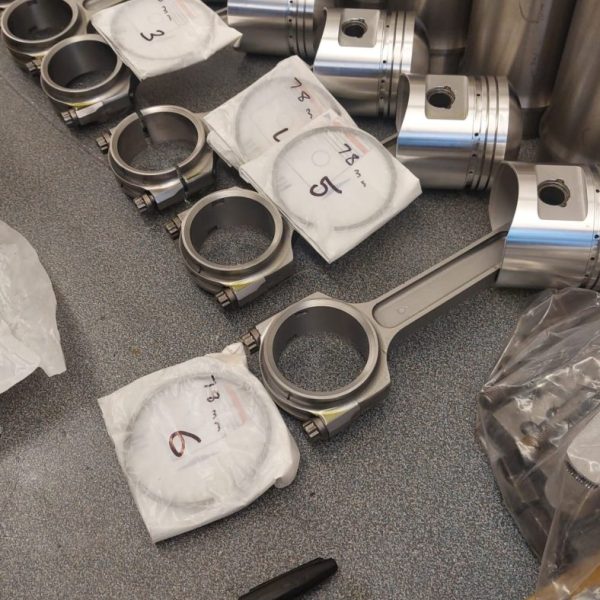
The engine of our 1955 Aston Martin DB2/4 MK1 is in the process of being rebuilt. Everything has been progressing well with the rebuild and the engine is now ready for final assembly.
As well as the engine being rebuilt, classic car technician Brian has been working on the interior of this classic car. He removed the old foam and glue from the headliner and sanded it smooth. He then used the old headliner as a pattern for cutting out 3mm foam and material for the new headliner.
The rear headliner material was glued in place and trimmed to shape. The front headliner material was also glued and trimmed.
Brian went on to fit the covered centre trim bar before glueing the leather to the rear quarter section of the car. He also cut slots out of the leather for the seat catches.
The front and side headliner trim panels were fitted, as were the rear and rear side headliner trim panels.
Our 1955 Aston Martin DB2/4 MK1 is an eye-catching vehicle in the Bridge Classic Cars workshop and it is great to see it continue to make progress through its restoration journey with us.
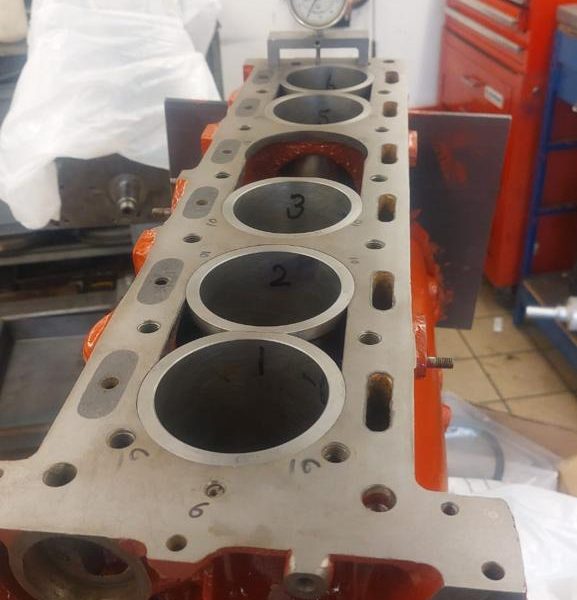


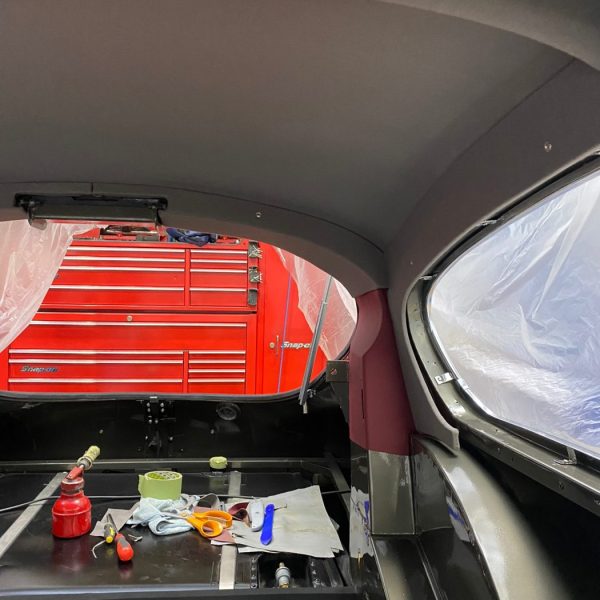


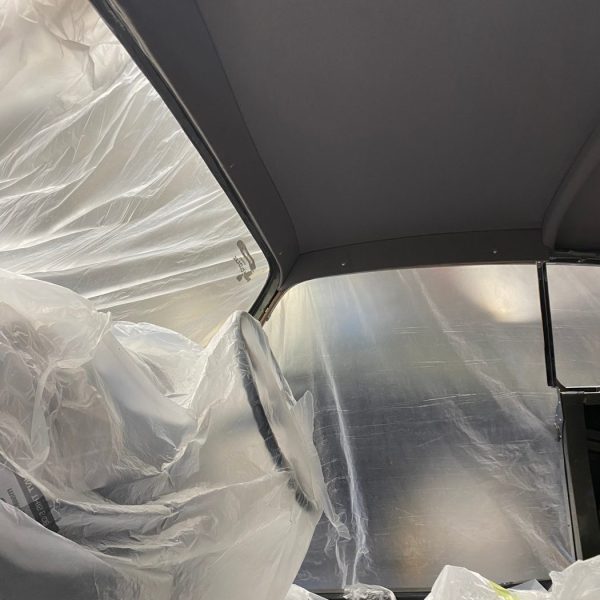
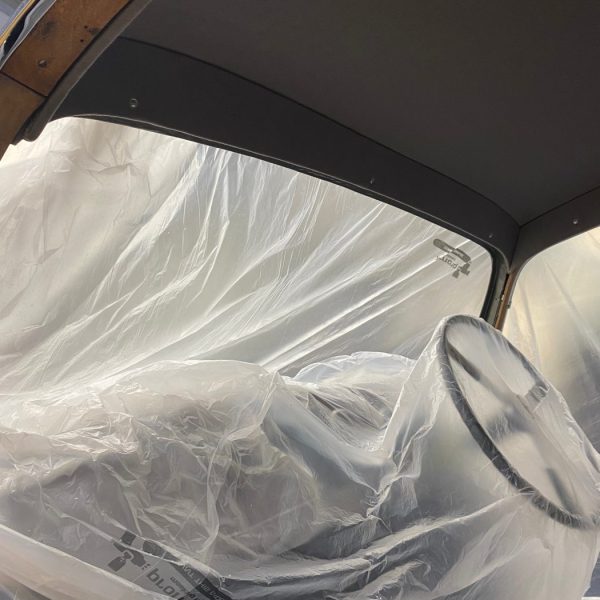

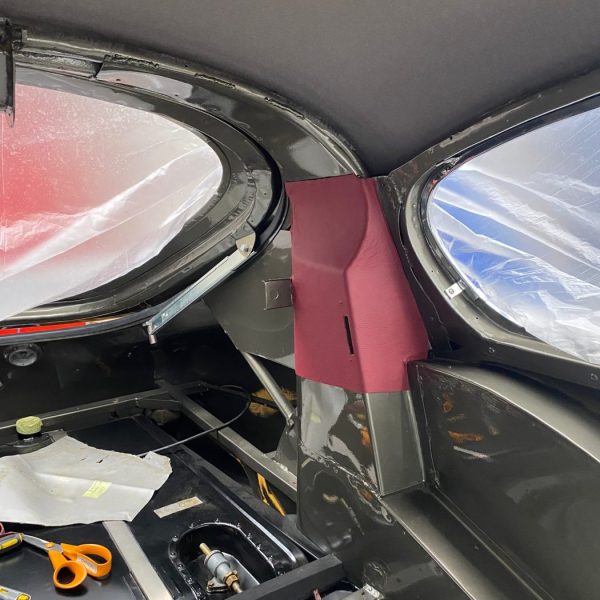

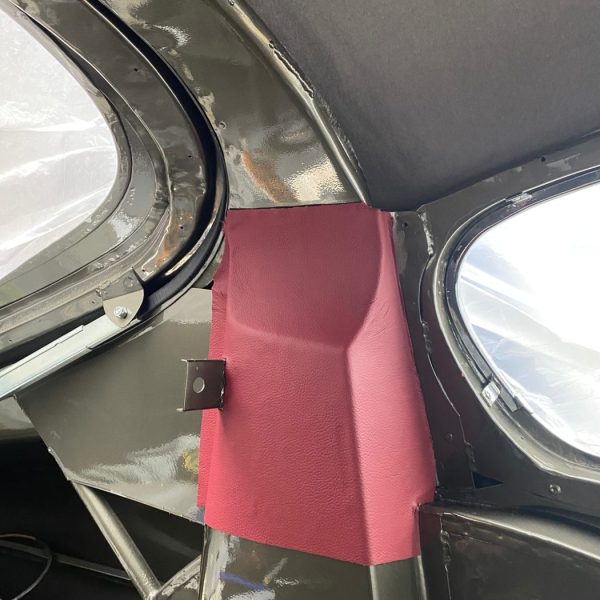
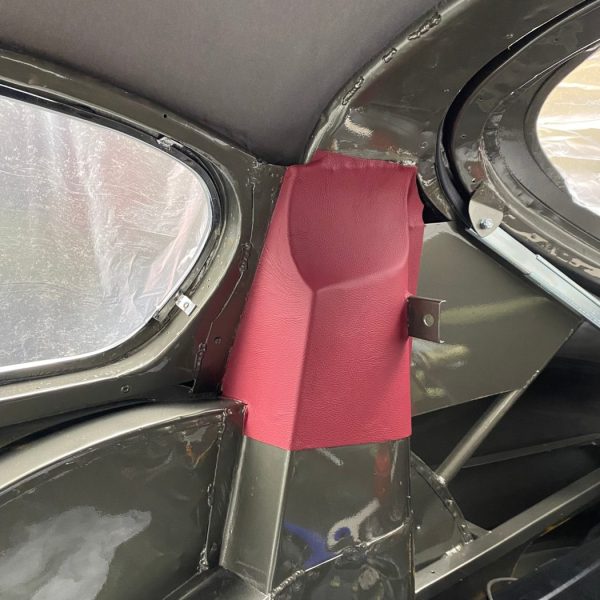


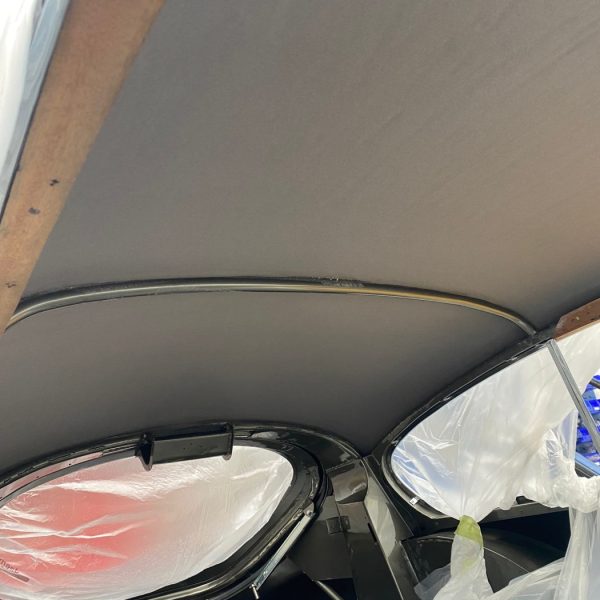
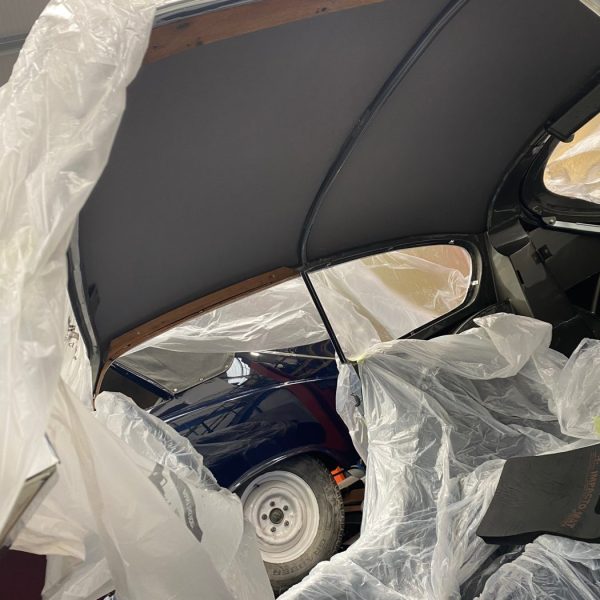
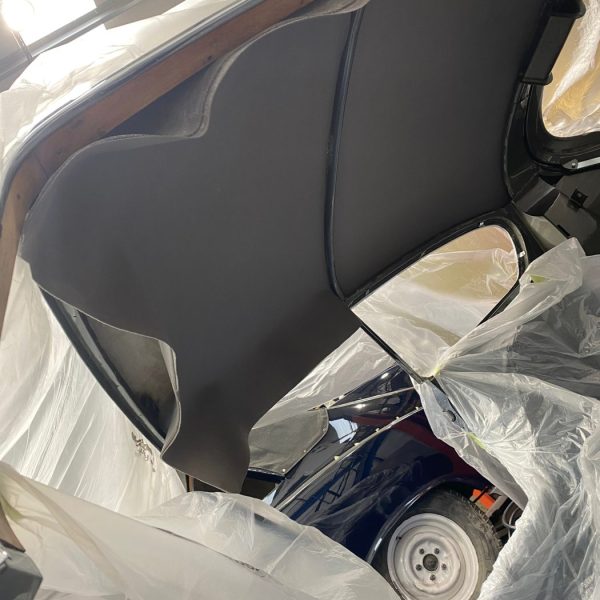

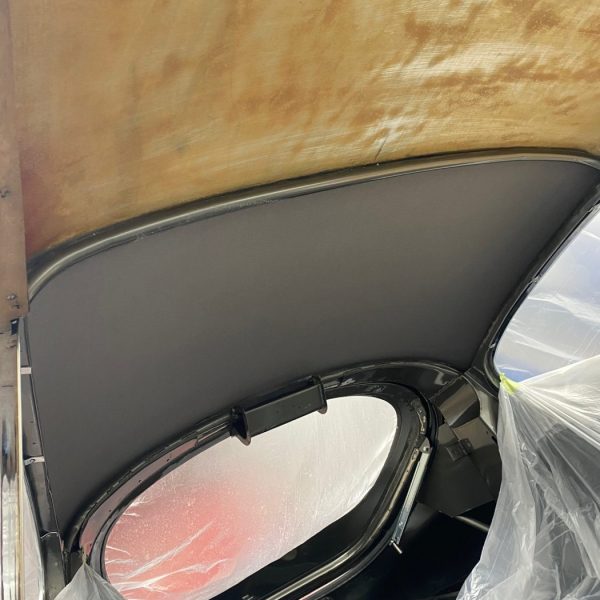
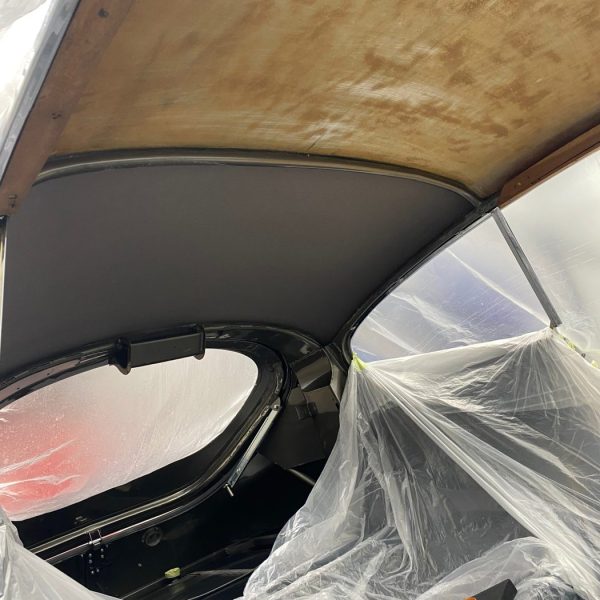
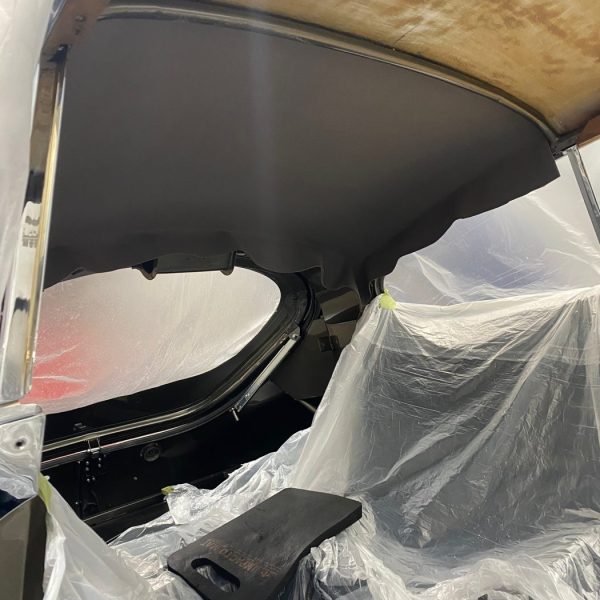
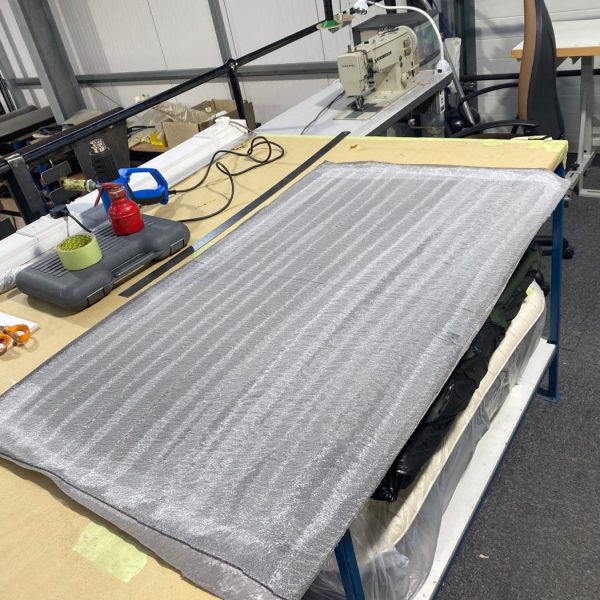
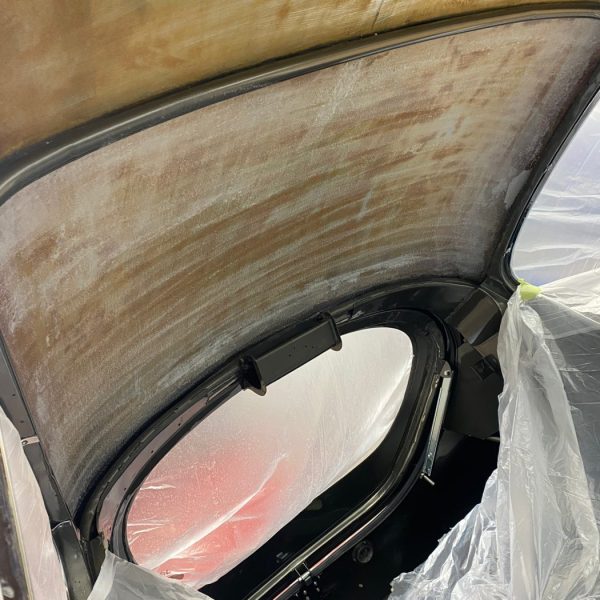
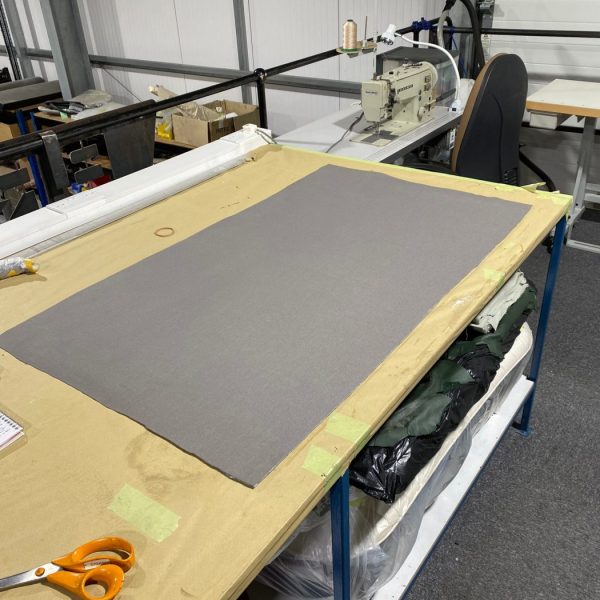

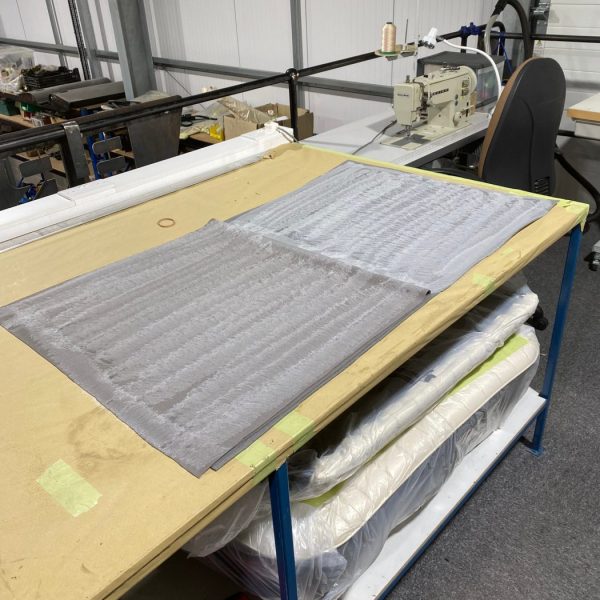
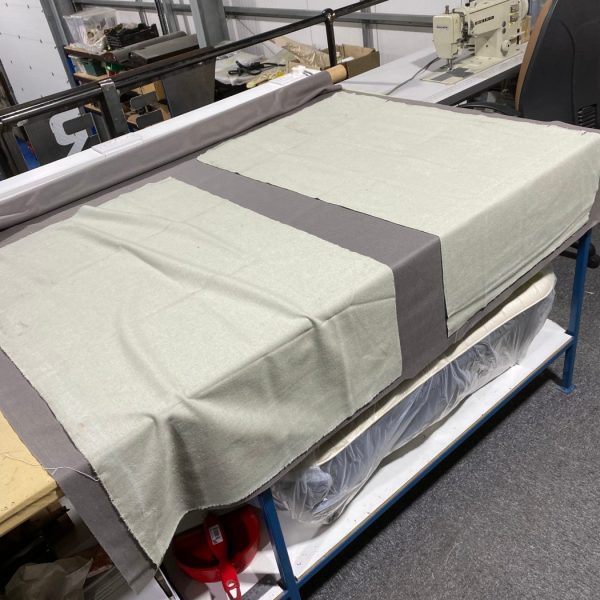


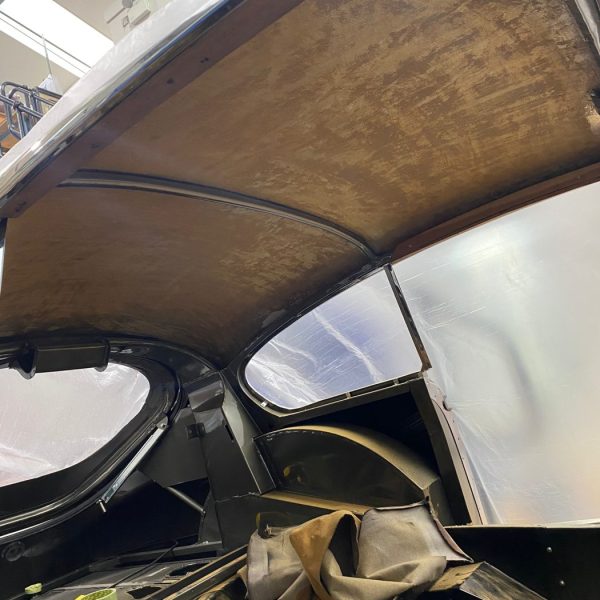

Our 1976 Aston Martin AMV8 has recently had its new boot floor panels painted by classic car technician Scott.
That wasn’t the only work completed on this classic car last week though. John conducted a check of the tracking and found that it was way out from where it should be. John adjusted the tracking to bring it back within specification.
While working on our 1976 Aston Martin AMV8, John also noticed that the top suspension arm nut was loose. He tightened this nut which resolved the issue.


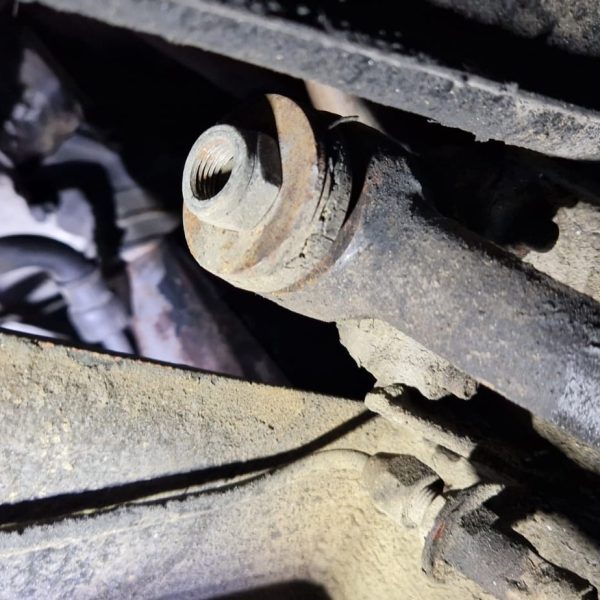
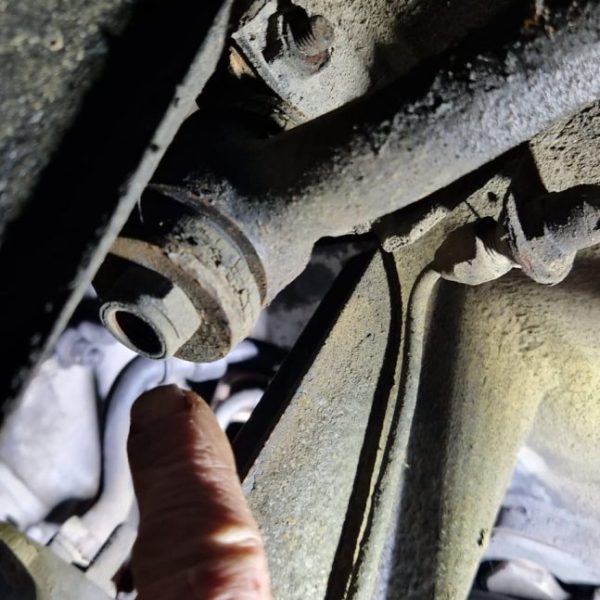
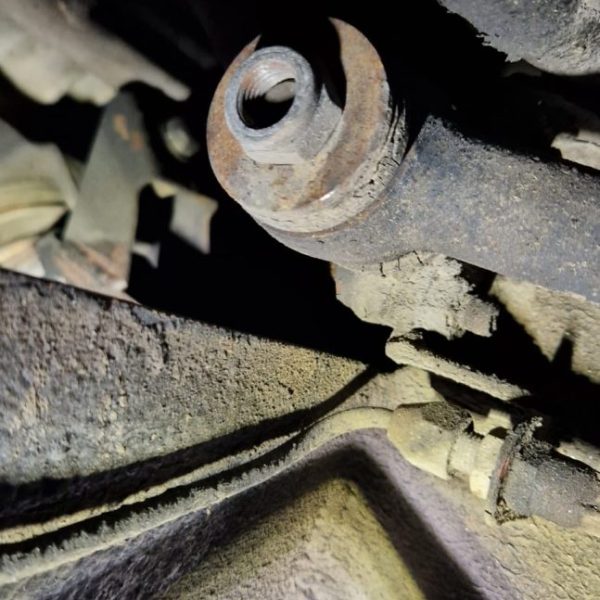
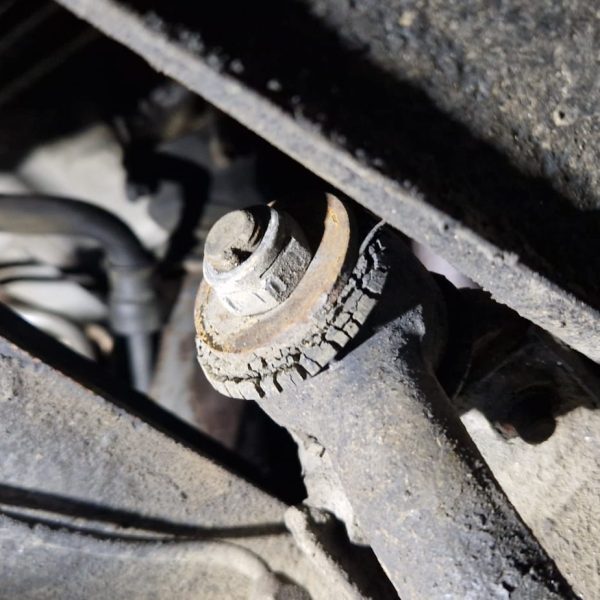

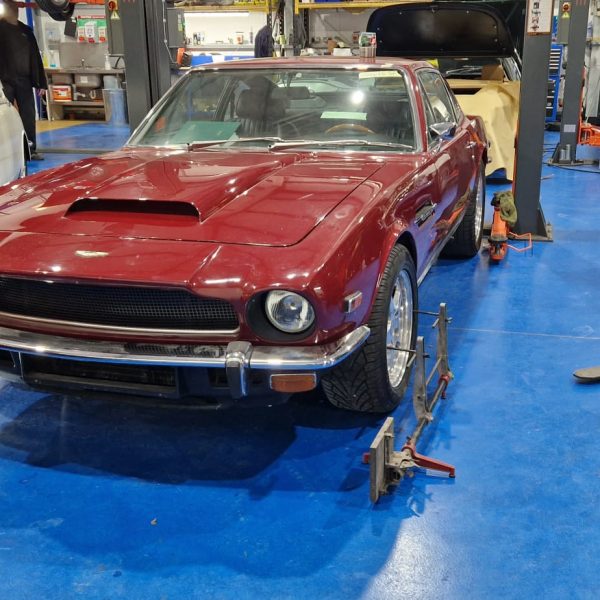
Imagine walking into an old barn and finding a classic car. Now imagine walking into an old barn and finding an extremely rare 1962 Aston Martin DB4.
With only 1100 DB4s ever made, finding one in a barn is not something most of us will ever even dream of being fortunate enough to do.
However, that is exactly what happened recently when a barn find turned out to be a very special car!
The car in question belonged to a man who, after returning from the Vietnam war in the 1970s, returned to work at a local car body shop. After doing some work on his boss’s car, he was gifted the DB4. He towed it home and carefully parked this rare classic car in his barn with the plan of eventually restoring it.
Unfortunately, the restoration never happened and the car sat in the barn until it was found more than 30 years later.
The 1962 Aston Martin DB4 has a 3.7-litre straight-six petrol engine and, even in its current state, is valued at around £270 000. When fully restored, previous DB4s have sold for more than £1 million.
This DB4 is currently for sale in New York through Gullwing Motor Cars.
The full story can be found here.
We love Aston Martins here at Bridge Classic Cars and we have had a wide range of them in the workshop over the years. Below is just a small example of some of the beautiful Astons we have seen and, although they might not be as rare as the one found recently in an old barn, they are all equally as stunning to look at.
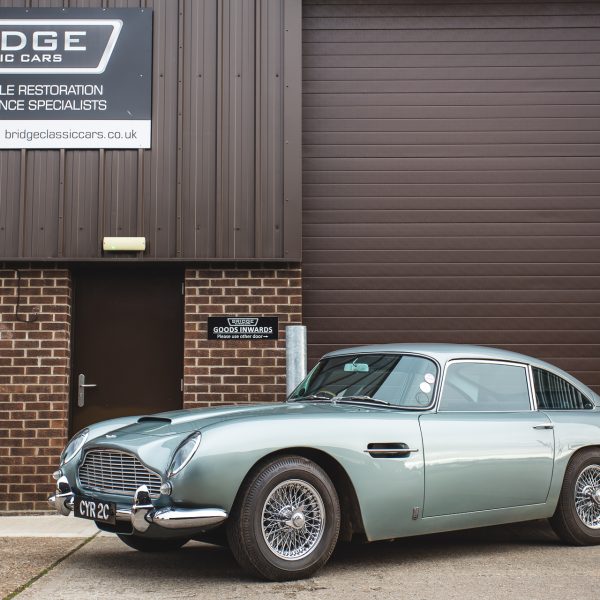
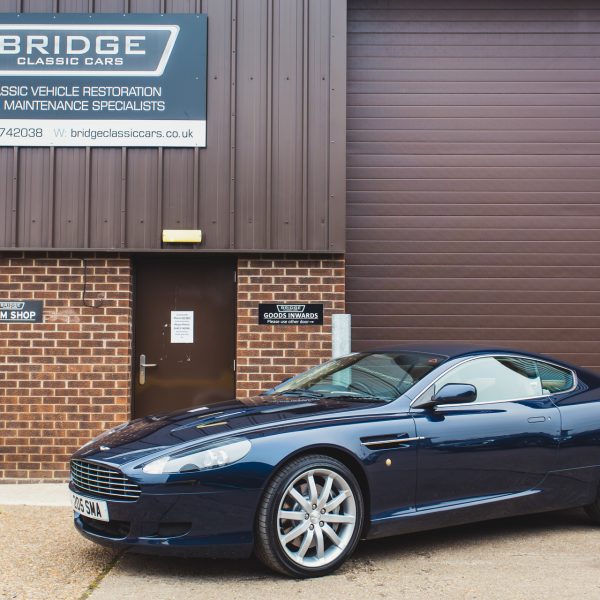
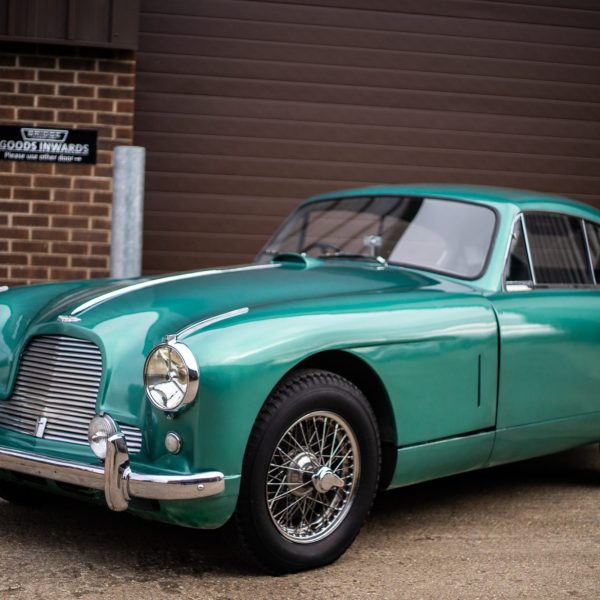
The steering rack of our 1976 Aston Martin AMV8 is leaking and needs to be rebuilt!
To rectify the issue, we have securely packaged it up and have sent it off to our steering rack specialist who will be able to find the cause of the leak and fix it ready for us to reinstall the steering rack back into the car.
As experienced and highly skilled as our classic car technicians are, sometimes we call on our friends to assist in some of the restoration work we do here at Bridge Classic Cars. We have a large network of contacts who specialise in various areas of the automotive industry.
As a result, we are confident that the steering rack of our 1976 Aston Martin AMV8 will be back with us very soon and the car will be one step closer to getting back out onto the road with its owner.
The photos below show the steering rack being packaged and ready to be sent to our steering rack specialist.
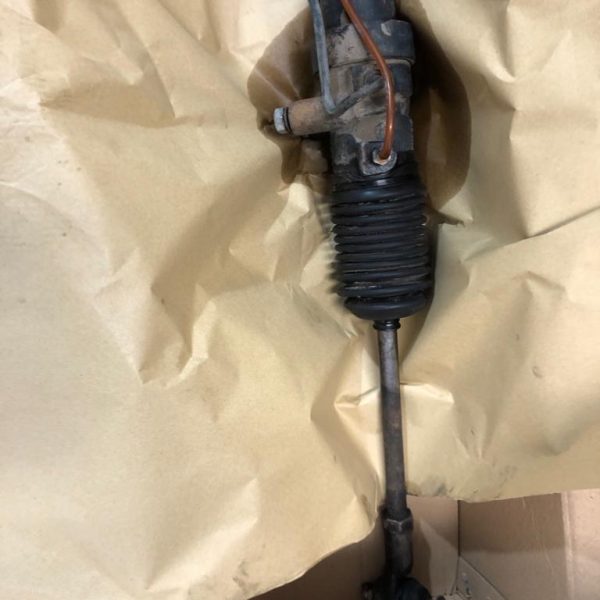

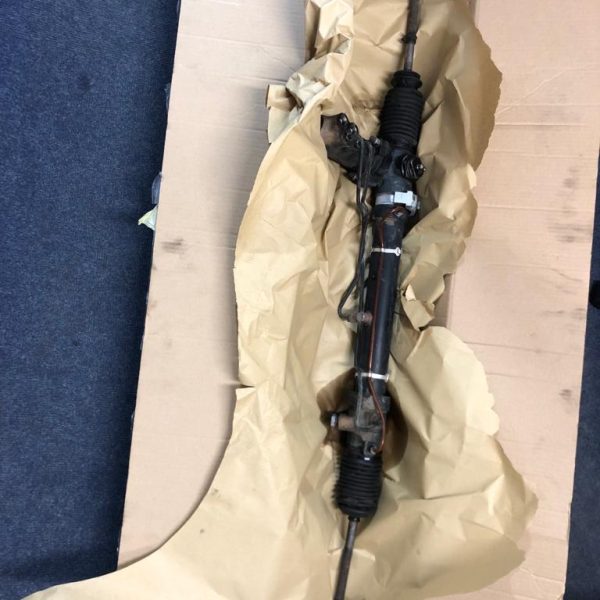
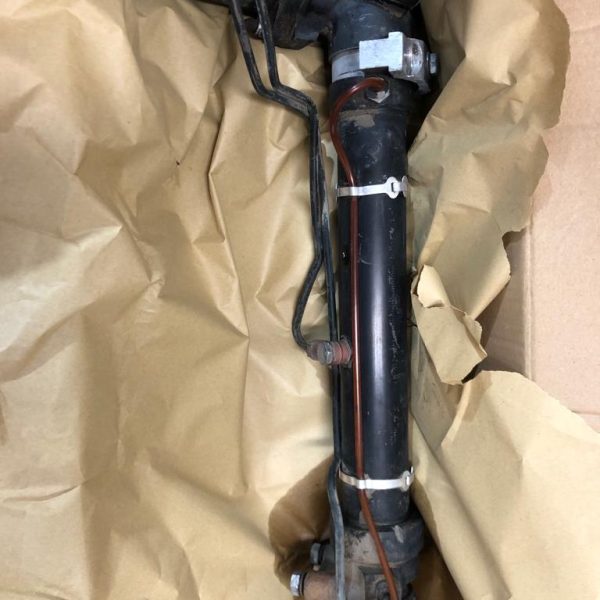
Classic car technician Scott has had his work cut out with our 1976 Aston Martin AMV8. After his investigation and prep work on this attention-grabbing classic car, he looked at the fuel system as part of his preparations to start the engine, and he also started removing some of the interior so he could access the floor pans.
Scott recently continued his work of stripping the interior of our AMV8 so he could get a better look at the rust issues the car seems to be suffering from. Once Scott had stripped the interior, he went on to remove the fuel lines and brake master before cutting out any rust that he found.
After cutting out the rust, repair panels were needed. Scott made these and welded them into place before dressing the welds. Once this was done, the welded-in panels fit smoothly into the car while also resolving the rust issues.
Finally, Scott primed and painted the areas where new panels had been fitted before re-installing the interior.
Our 1976 Aston Martin AMV8 has made good progress since first arriving in the Bridge Classic Cars workshop. Its long journey from America to us here in Suffolk was just the beginning as it now continues to make progress through the rest of its restoration journey.
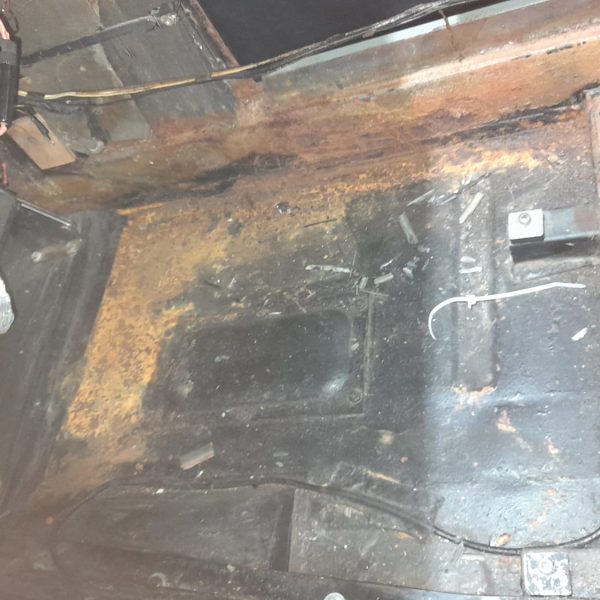
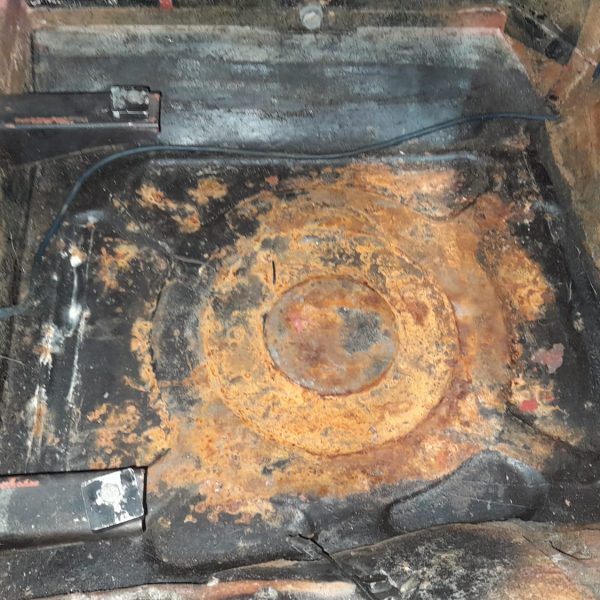



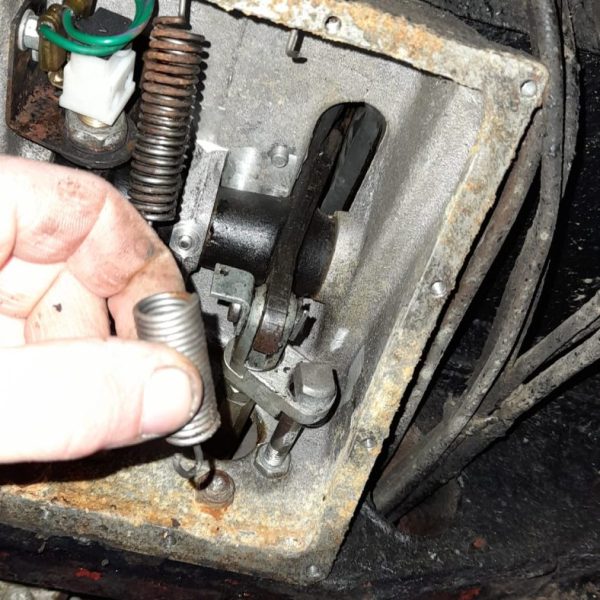
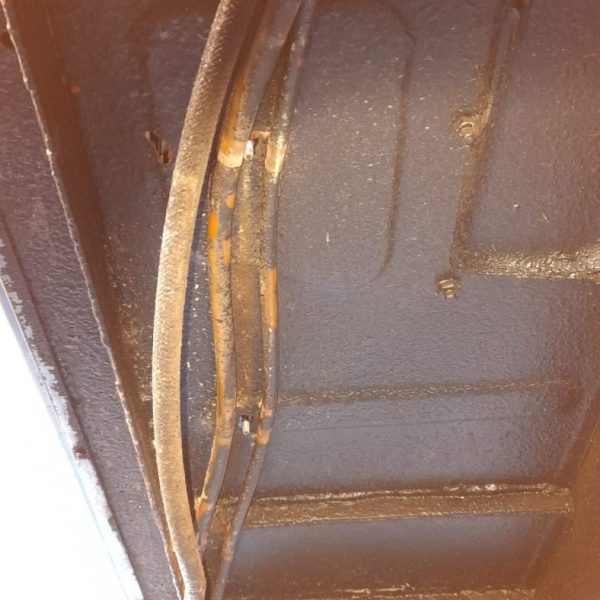

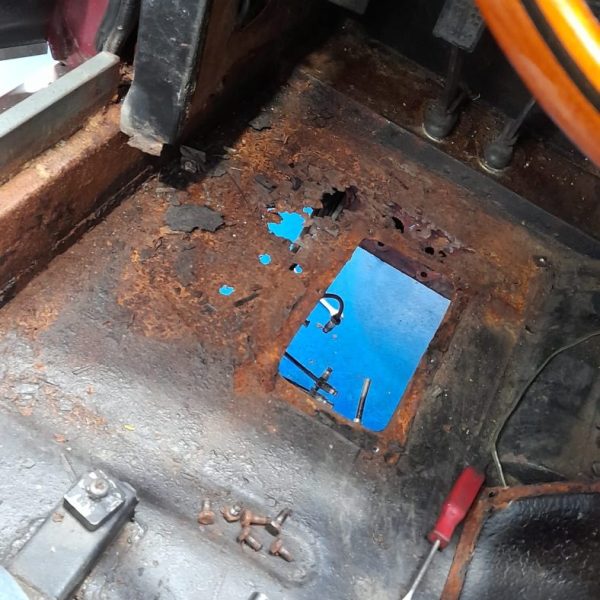


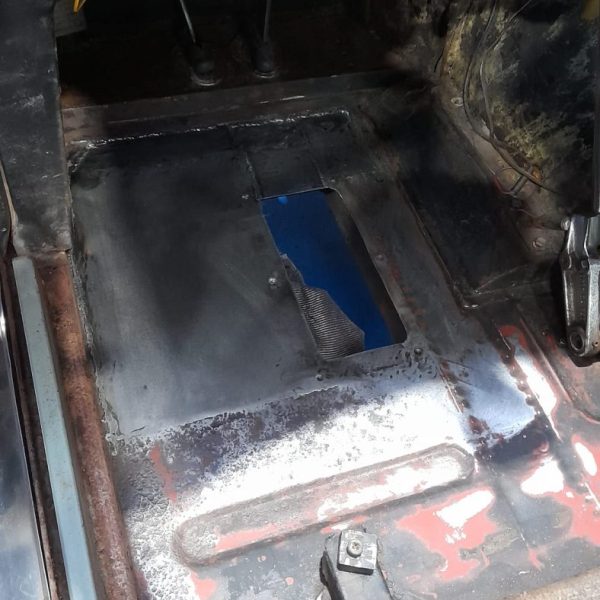
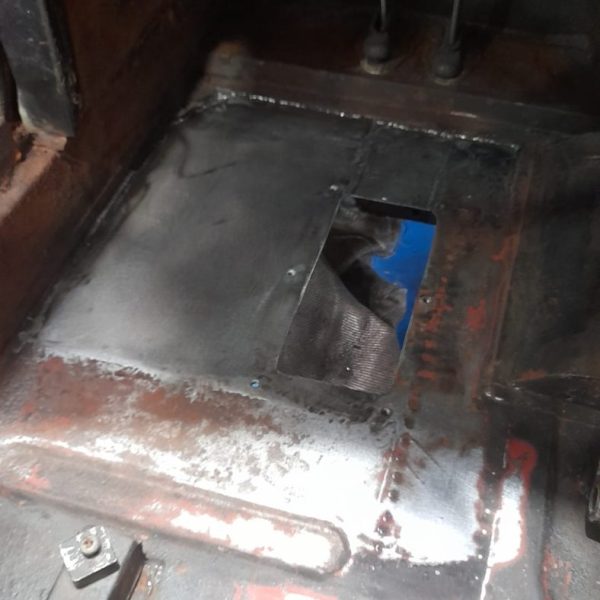

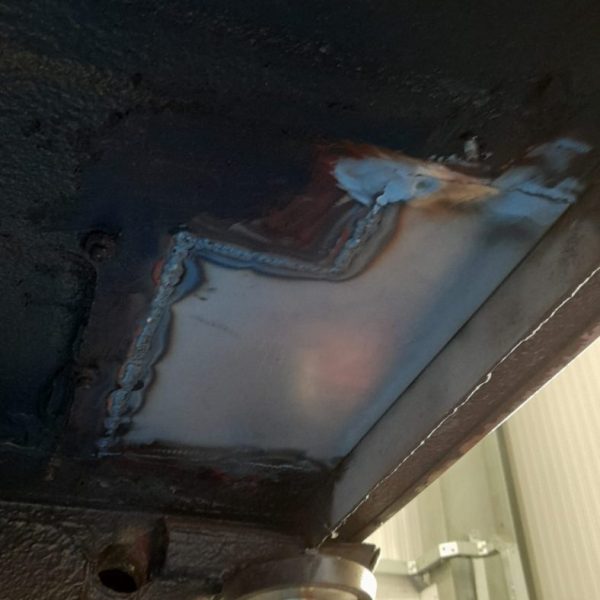

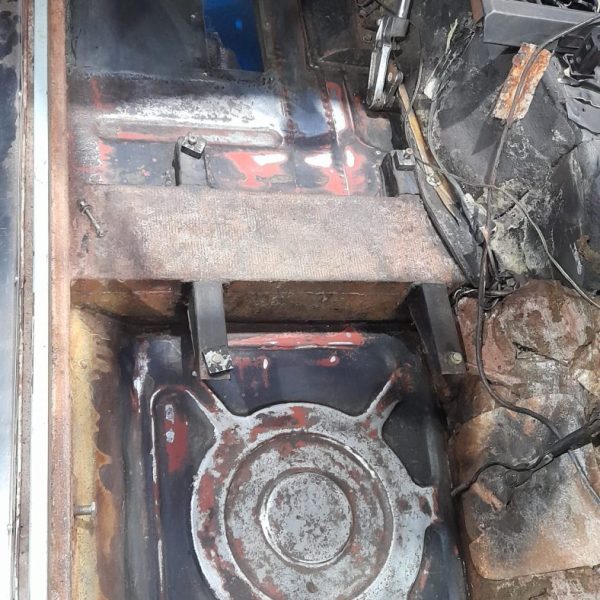
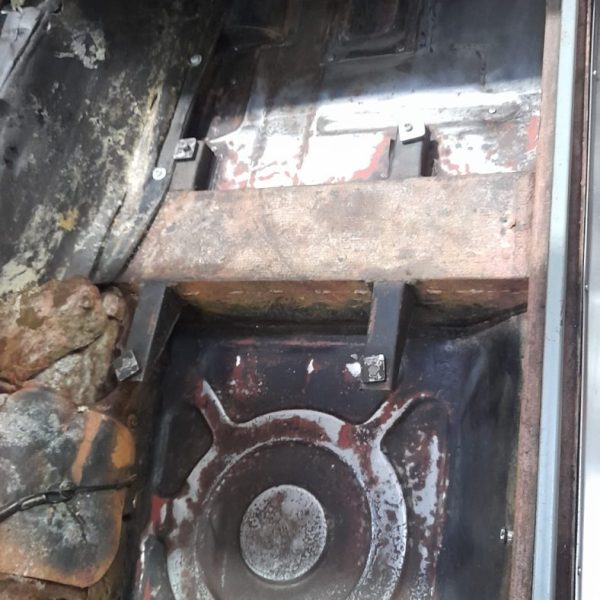



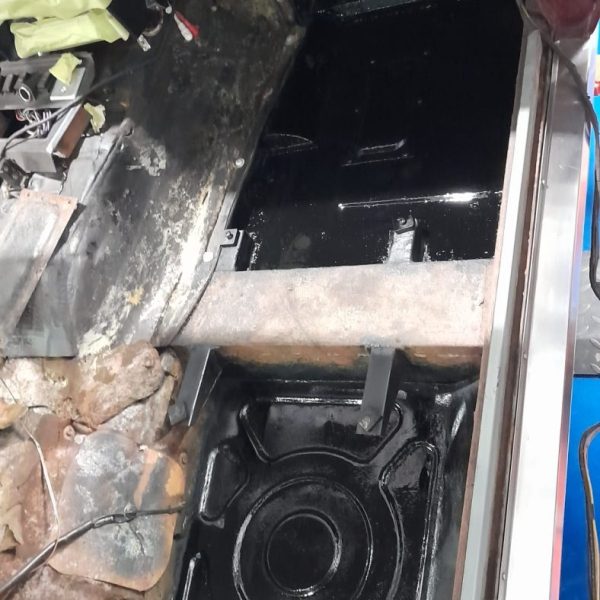
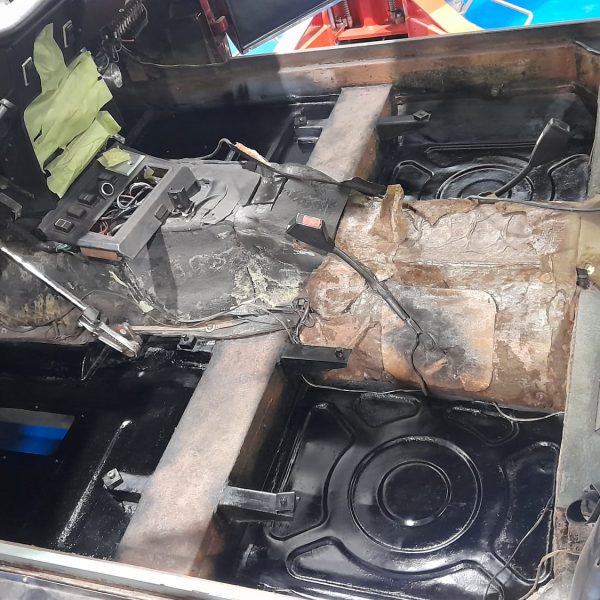
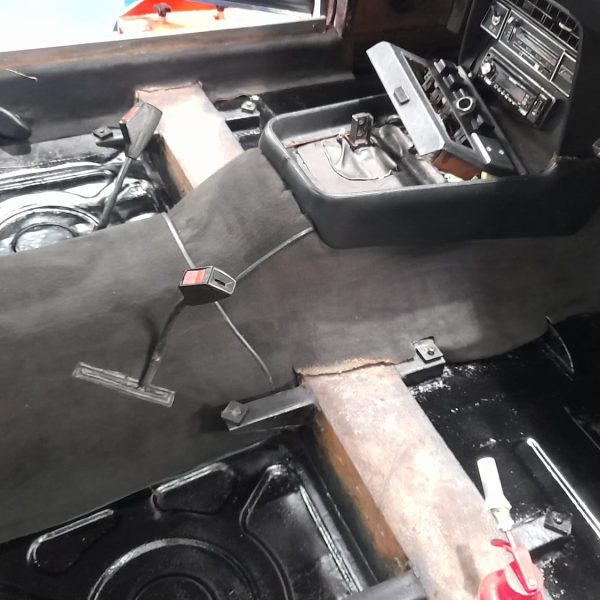
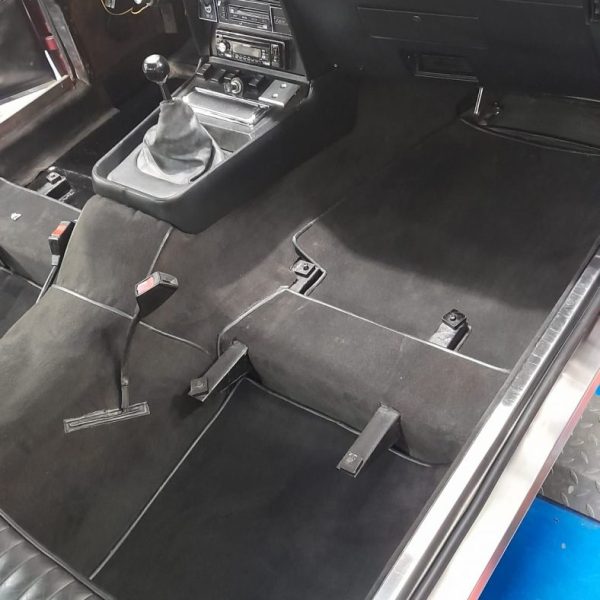
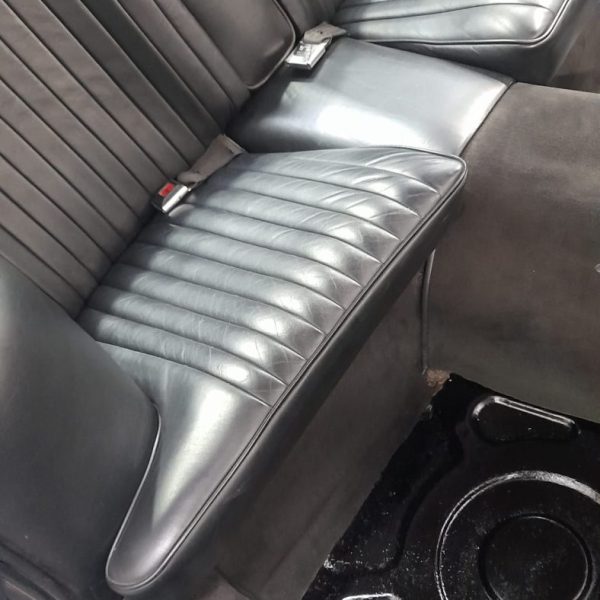
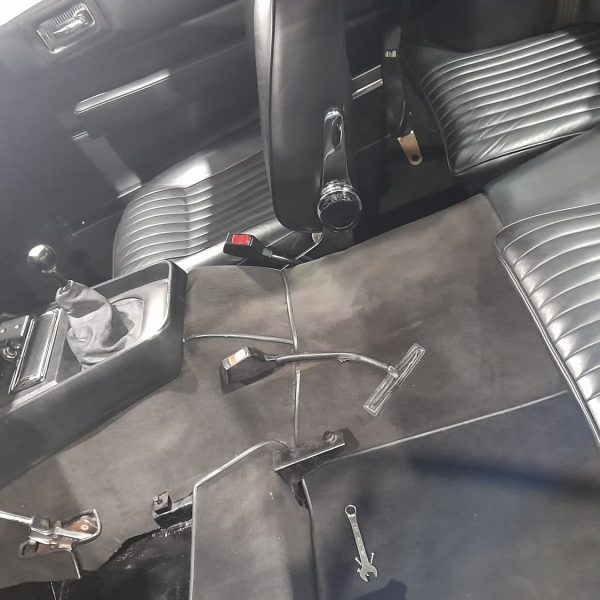
After making the long journey from America to the Bridge Classic Cars workshop, our 1976 Aston Martin AMV8 has already had quite the adventure.
When it first arrived with us, we were very excited to see this impressive-looking car in the workshop just waiting to be bought back to life. Once classic car technician Scott started his assessment of the car, he found some oil leaks that needed to be rectified. After removing the under trays to investigate the oil leaks, Scott was able to take a better look at the car and begin making an initial assessment as to where any welding might be needed on its floor.
The fuel system also had Scott’s attention as he spent some time preparing it for when the engine would be started for the first time since it’s been in the workshop. It was at this point that dirt was found in the fuel filter so a replacement had to be ordered to rectify this issue. While he was waiting for the new filter to arrive, Scott sandblasted the filter housing.
Scott wasn’t done there though. He removed and inspected the air filter before doing the same for the air intake plenum. He also removed the carb tops so he could clean out the float bowls.
Over the last week, Scott has continued his work on our 1976 Aston Martin AMV8. He has been working hard putting the engine back together and getting it cleaned up and ready for its future life back out on the road.
In addition to his work on the engine, Scott has also begun to remove some of the interior of the car so repair work can shortly begin on the floor pans.
Considering this classic car has travelled from America to our workshop and has only been here for a short while, a lot of progress has already been made and we are very excited to see what the future holds for this beautiful classic car.
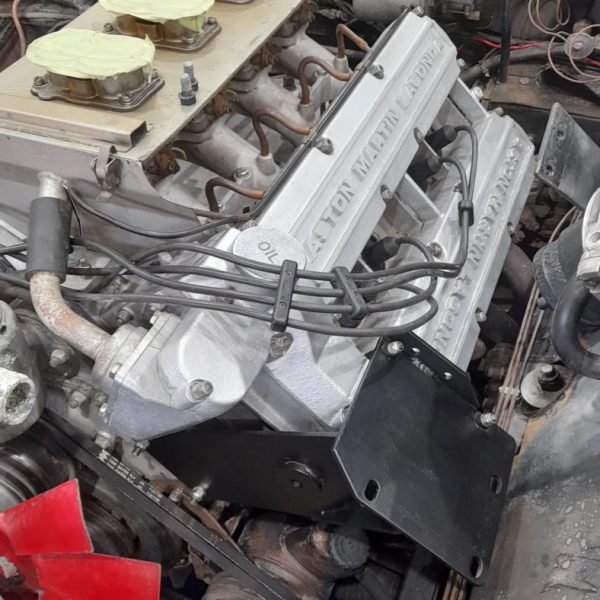


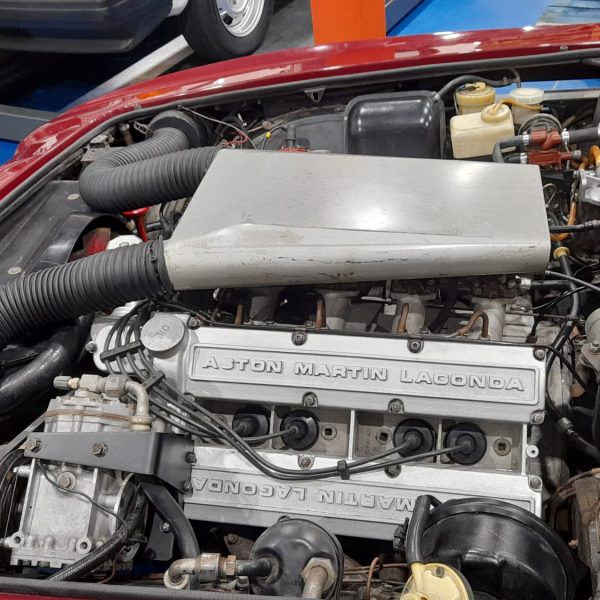
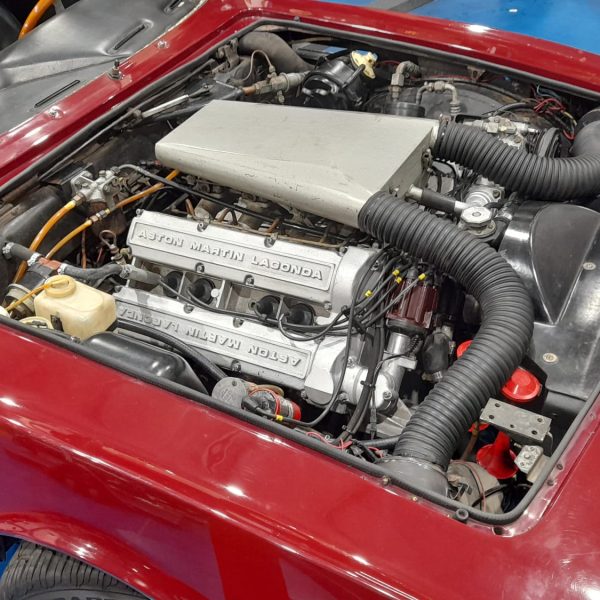

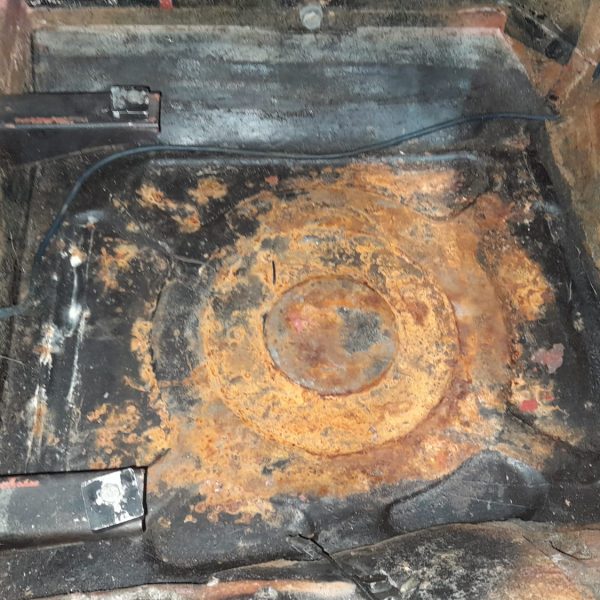
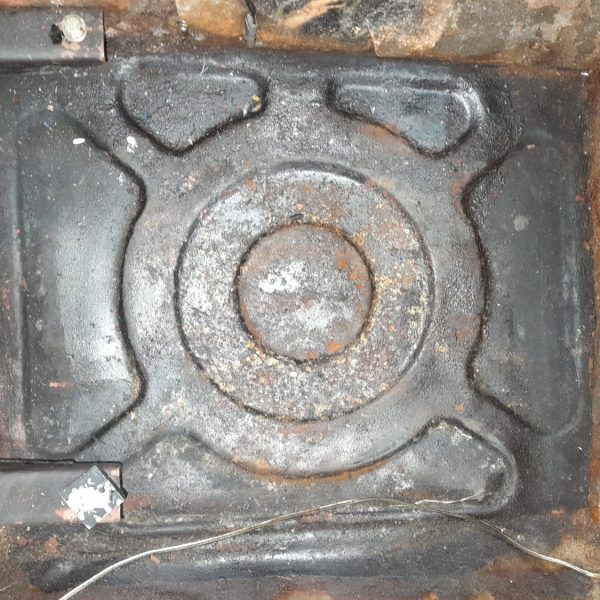
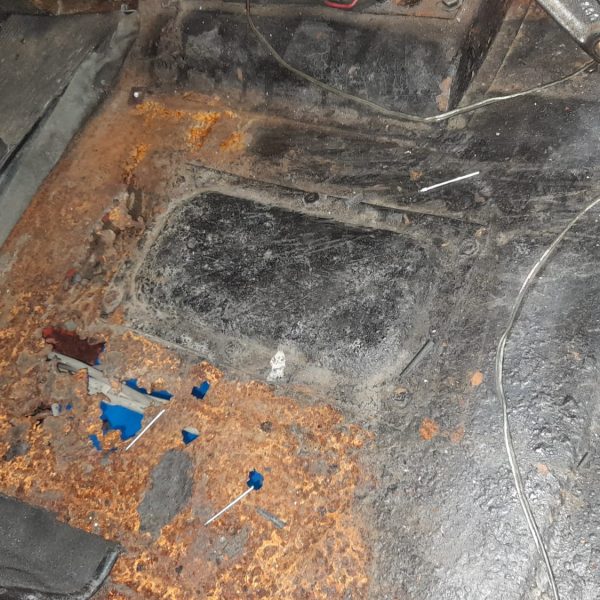
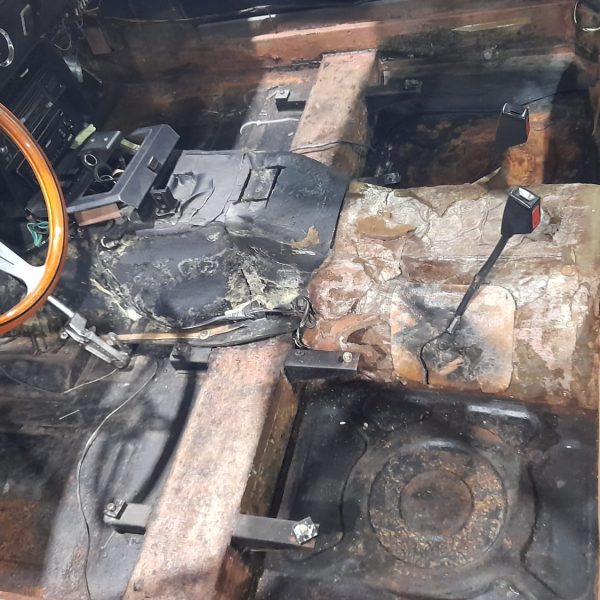




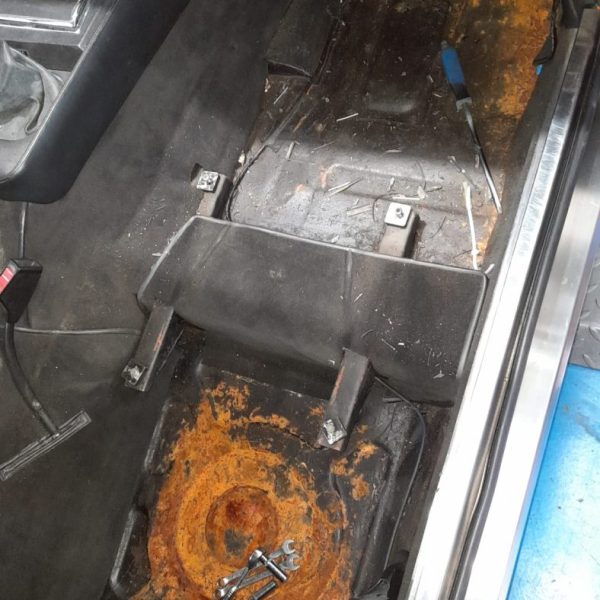
It hasn’t been long since we saw the arrival of our 1976 Aston Martin AMV8. Now that it’s been in the workshop for a few days, we have been looking back on its long journey from America to the Bridge Classic Cars workshop in Suffolk.
The photos below show its arrival at Felixstowe docks ready to begin the last leg of its journey to us.
Even sitting at the docks like this, you can see how nice this classic car is and we are very excited to see it once its been through its restoration journey.
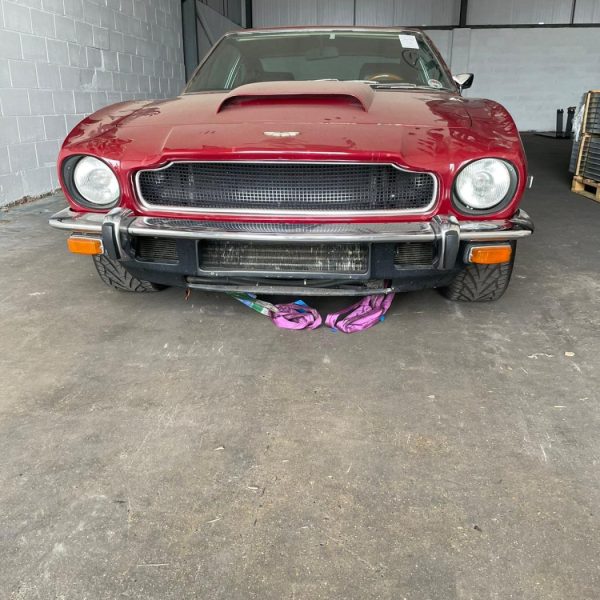
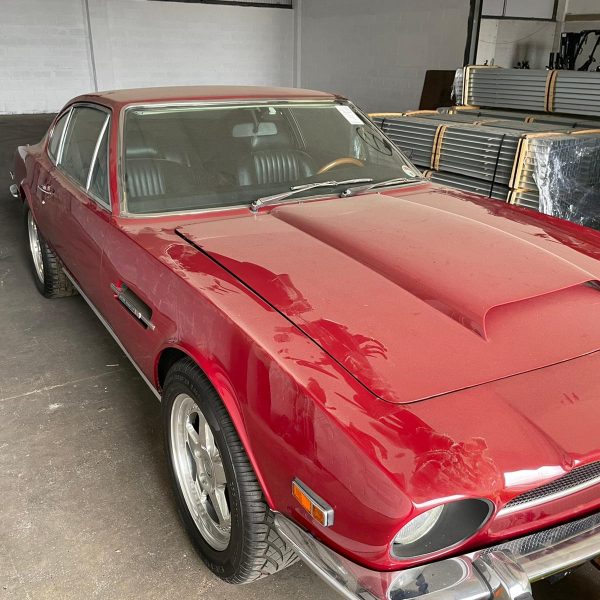
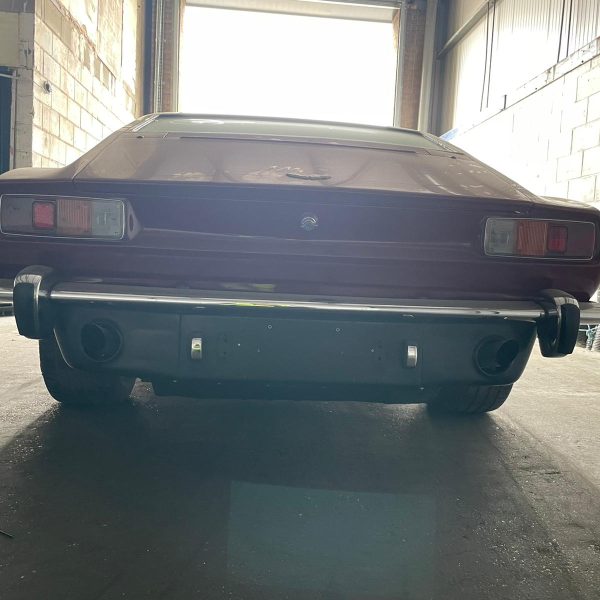
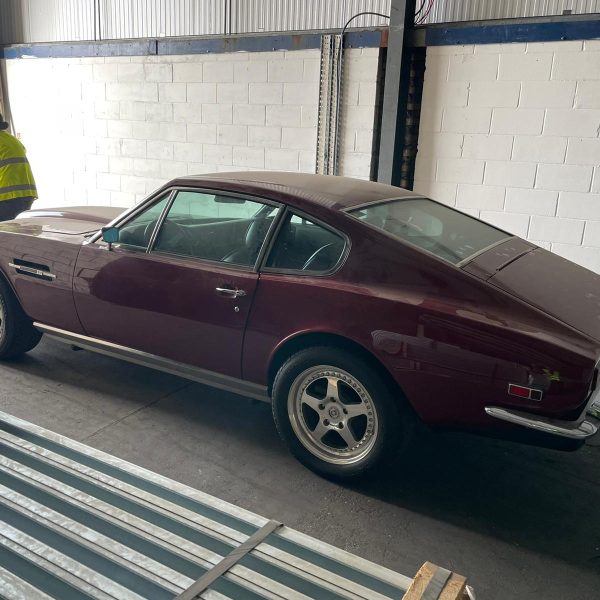


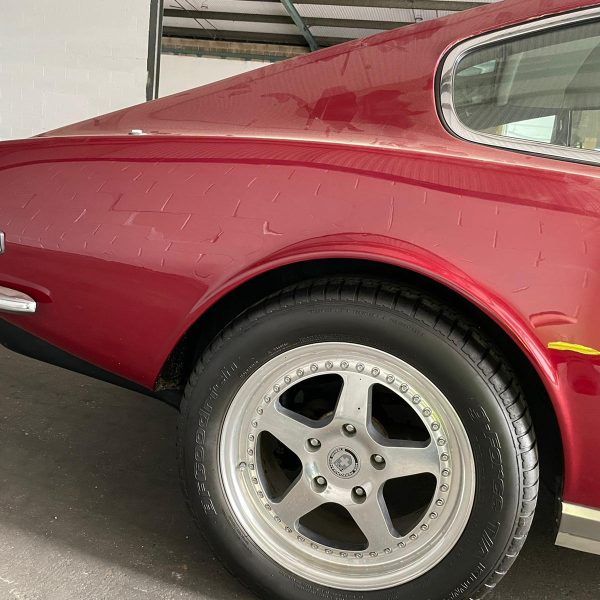
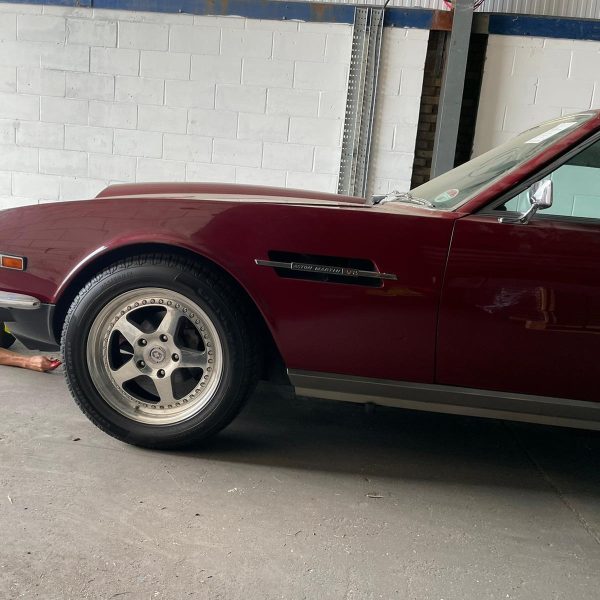
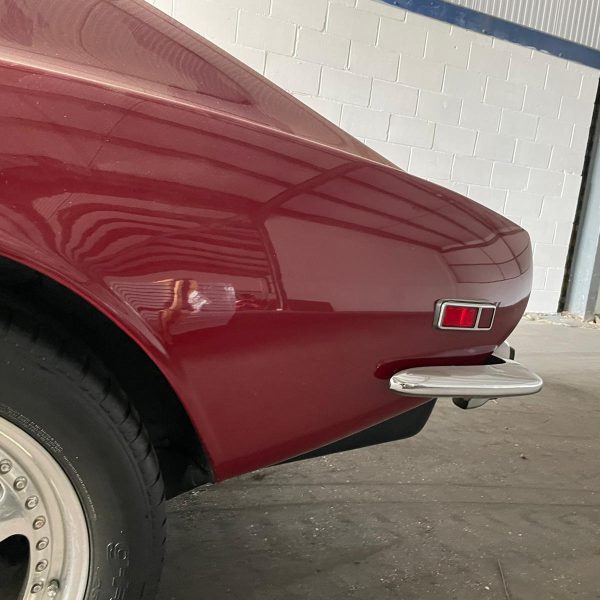
Classic car technician Scott has been conducting an assessment of our 1976 Aston Martin AMV8.
After noticing some oil leaks, he removed the under trays so he could see where these originated from. While the under trays were removed, an assessment was able to be carried out to see where any welding might be needed on the floor of the car and also on the boot floor too.
Scott then looked at the fuel system in preparation for starting the engine. He found dirt in the fuel filter so a new one has been ordered and the filter housing has been sandblasted.
Next, Scott removed the air filter and inspected its condition. He did the same for the air intake plenum and removed the carb tops to clean out the float bowls.
Scott is now waiting for the new filter to arrive so the engine can be started.
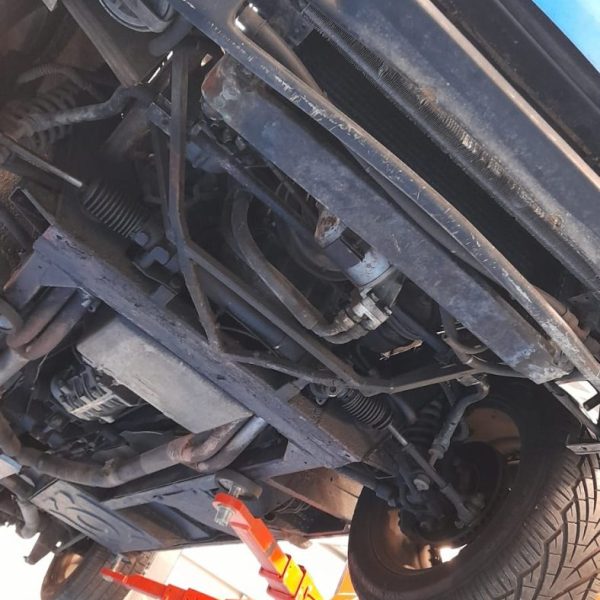
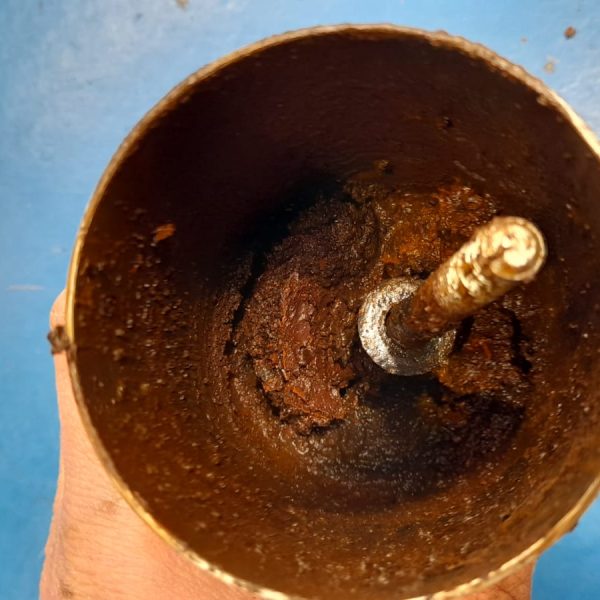
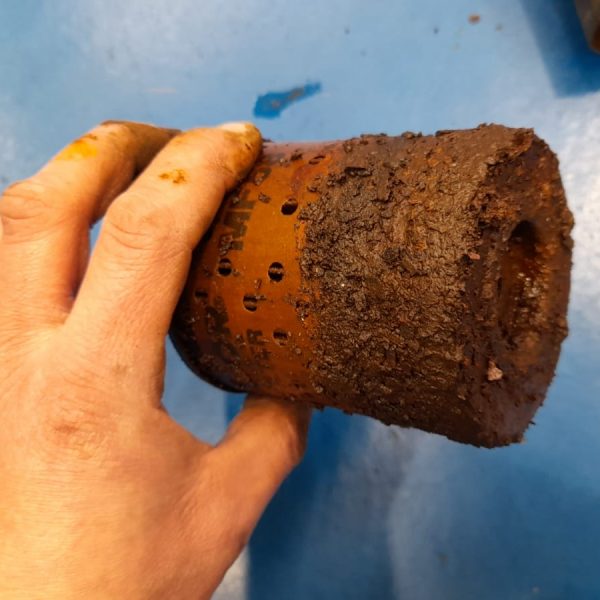
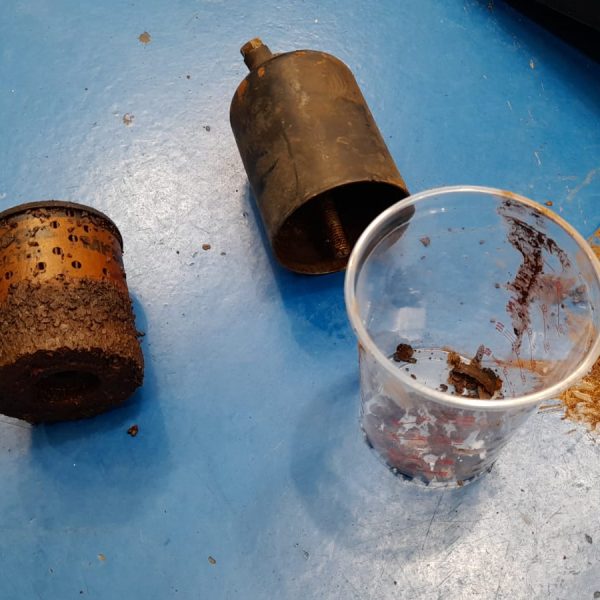
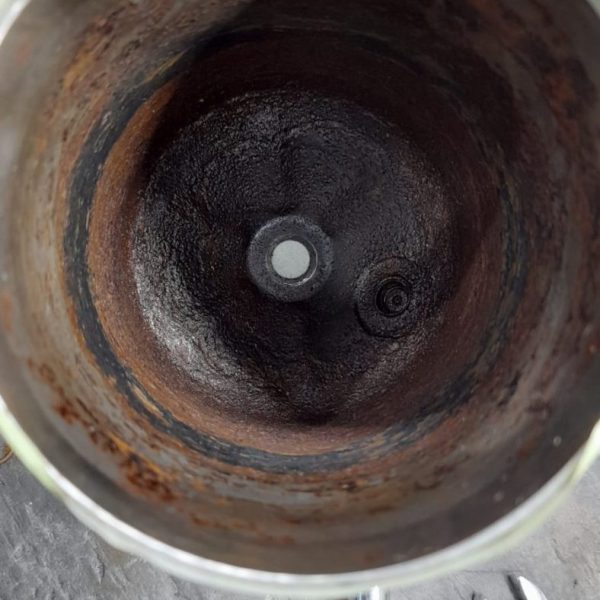
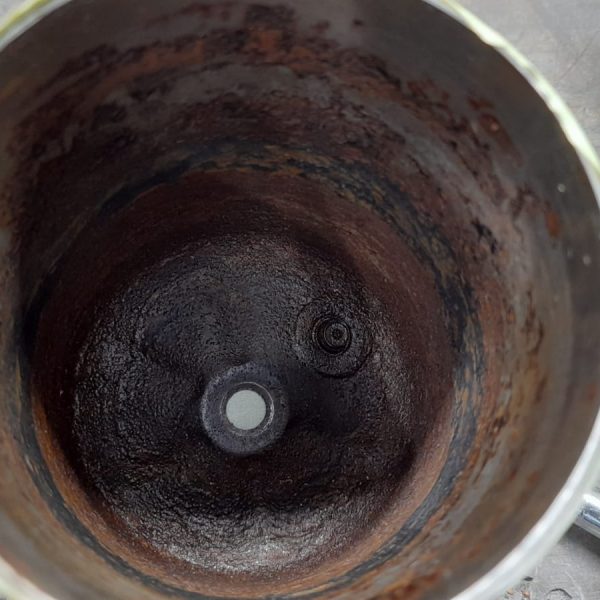
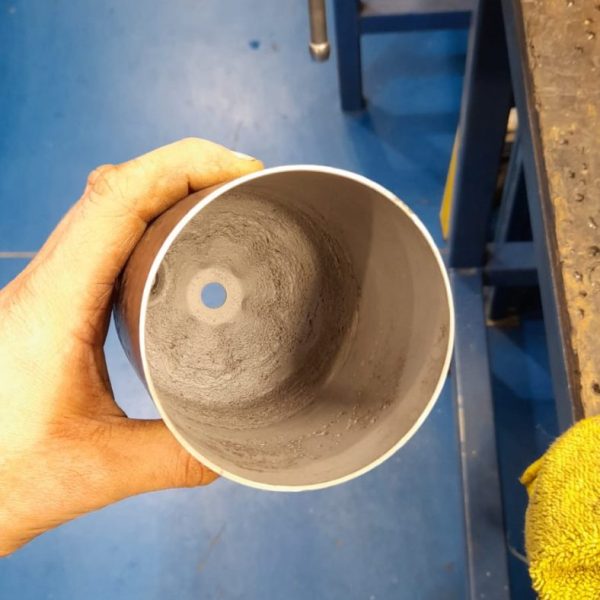
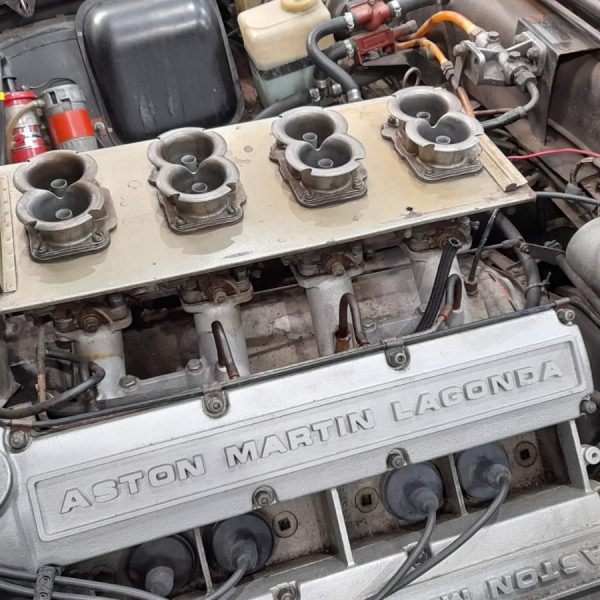

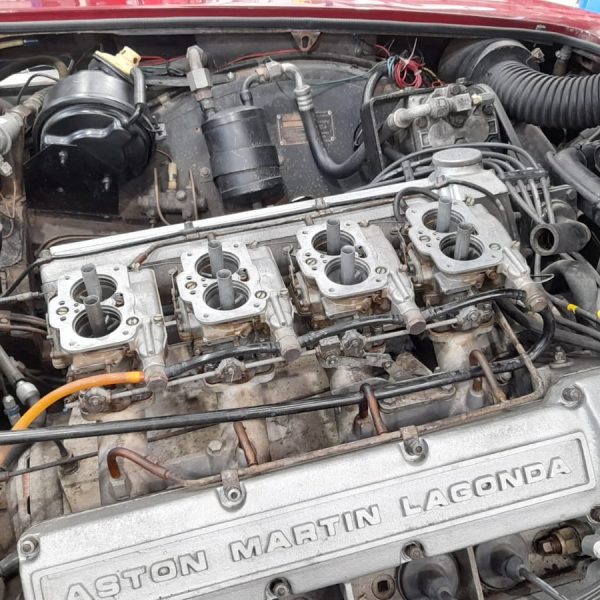
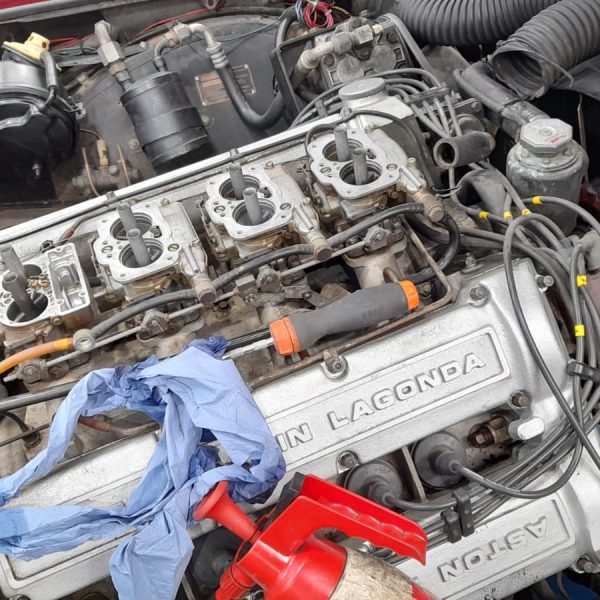

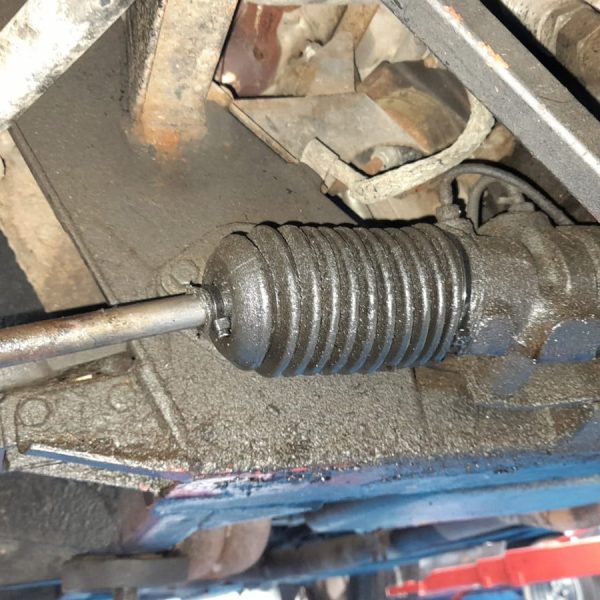


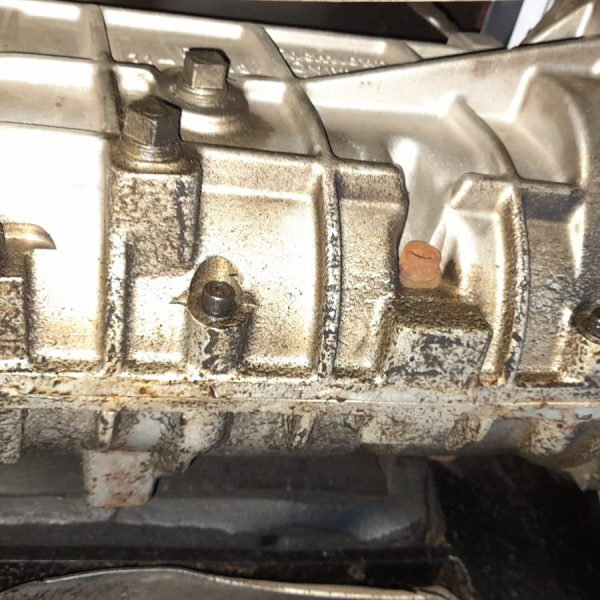
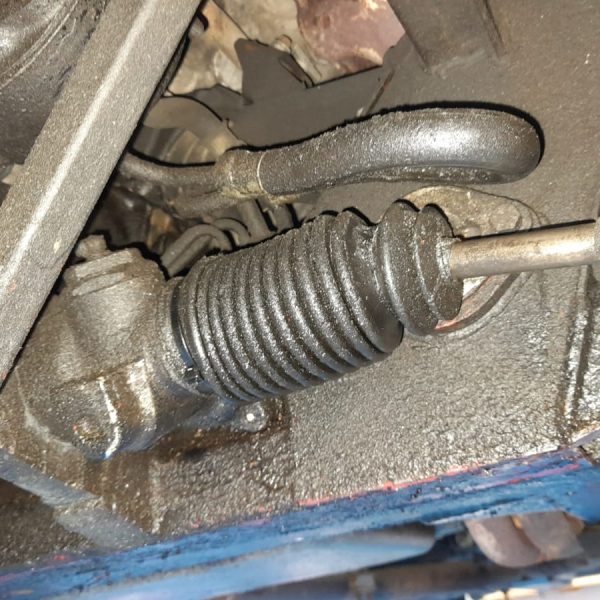

Another classic car has arrived at the Bridge Classic Cars workshop. All the way from America comes our 1976 Aston Martin AMV8.
As always, it will now be checked over by our classic car technicians before a plan of action is put in place to get it back out on the road.

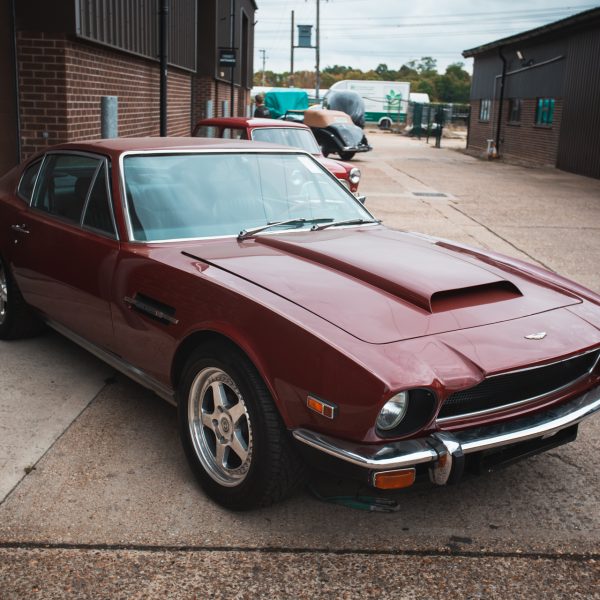

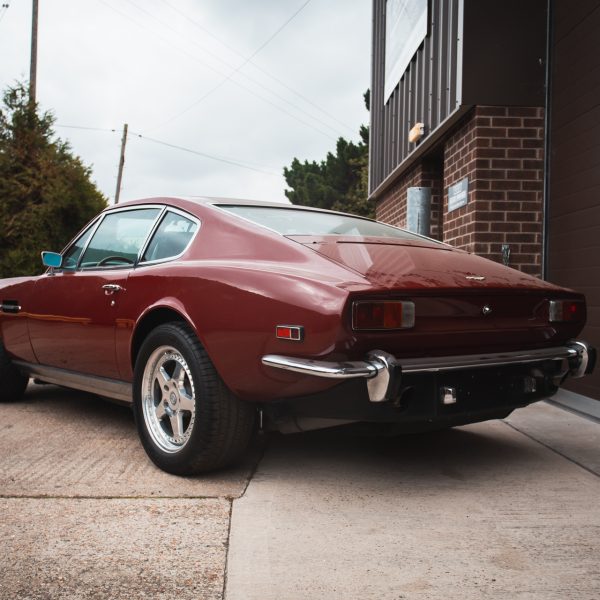
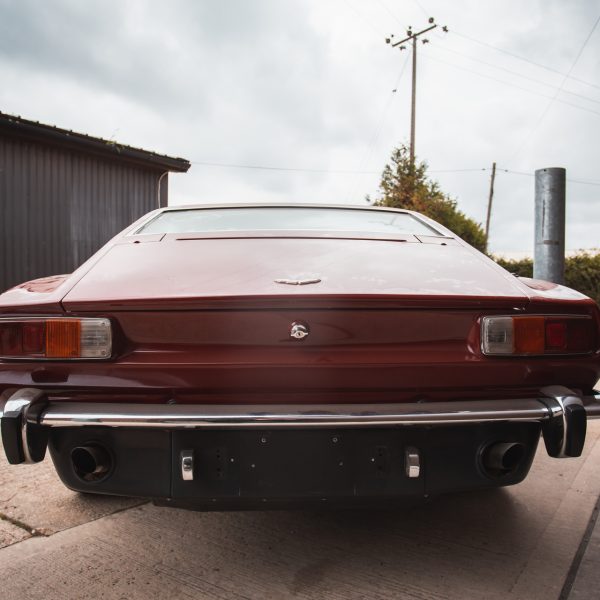
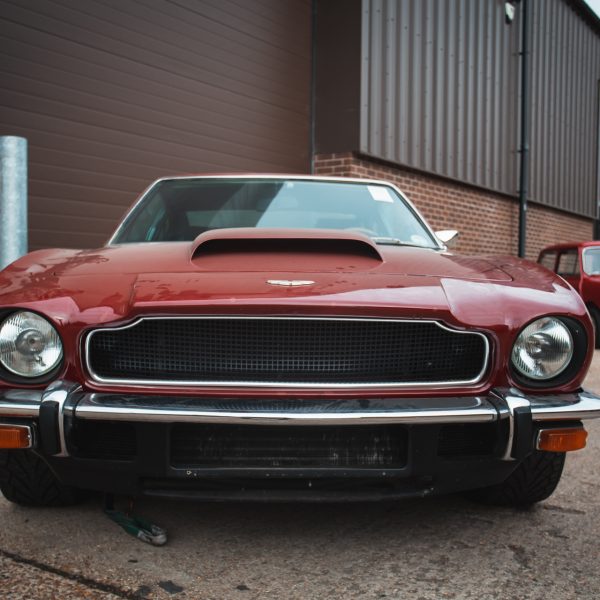
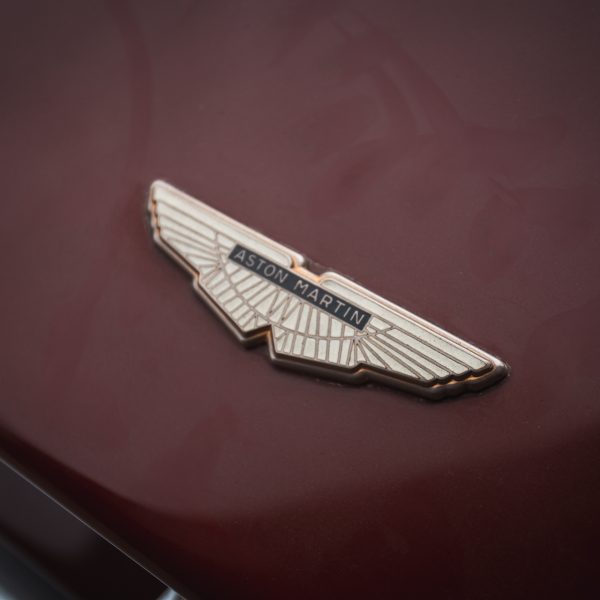
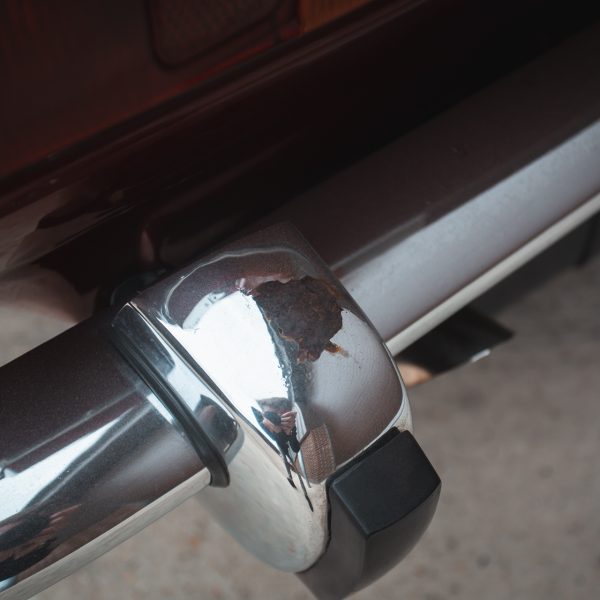
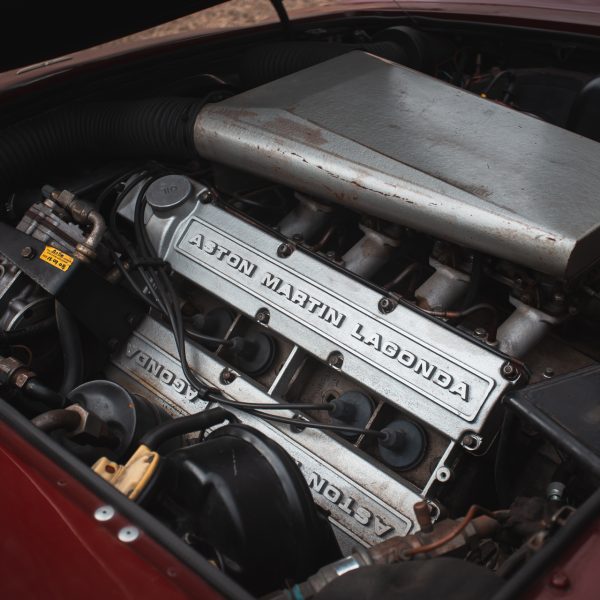
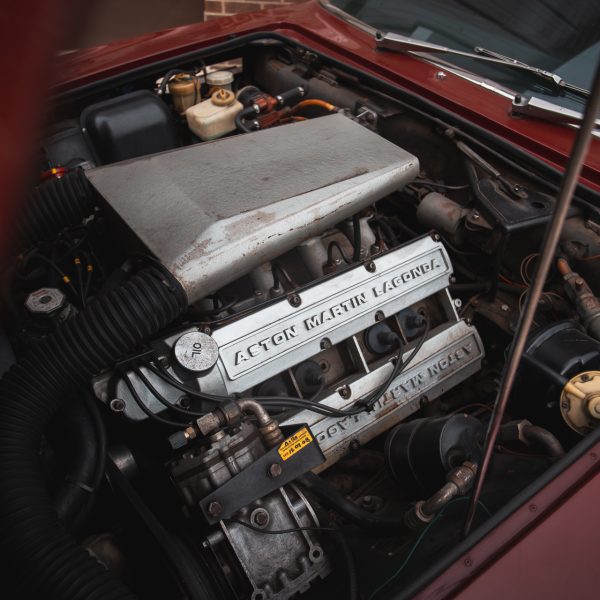


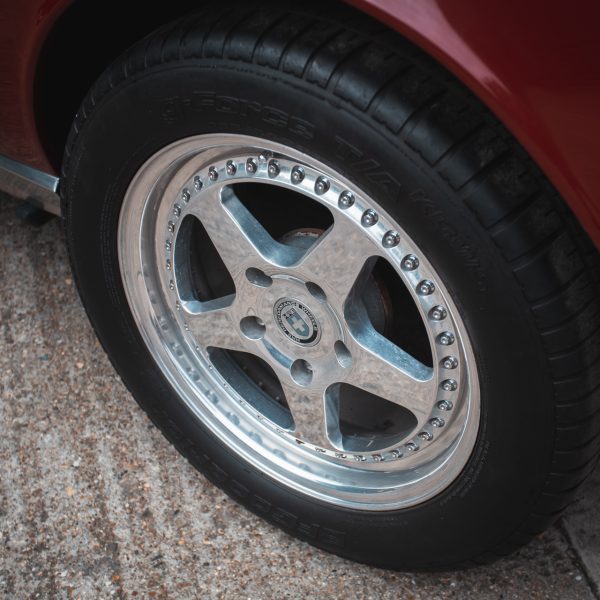

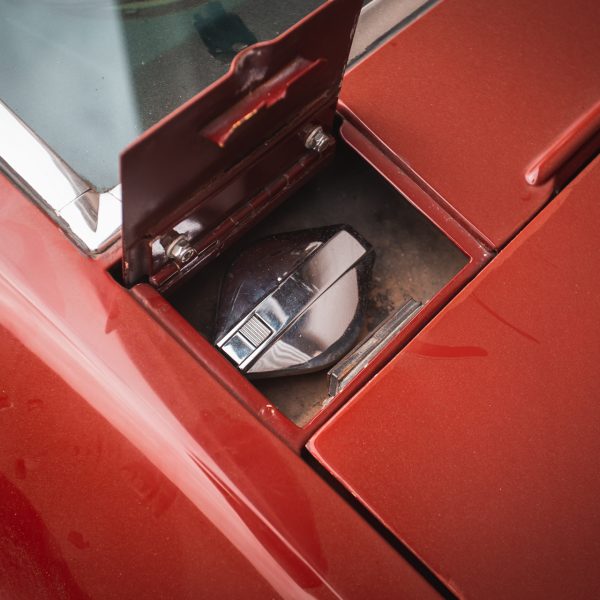
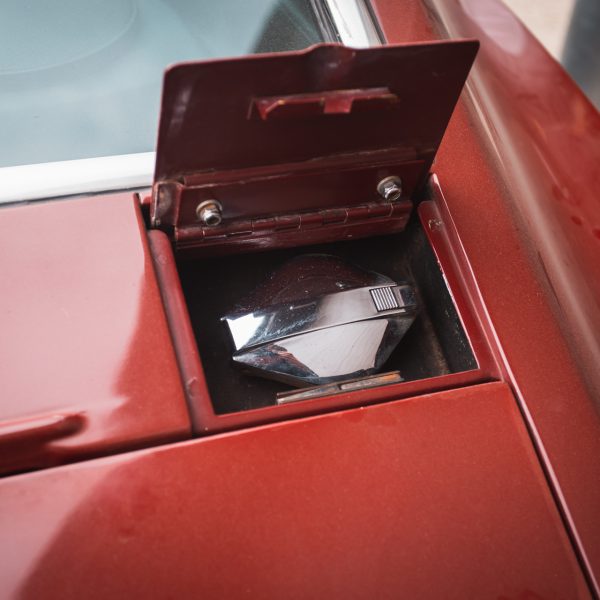

If you are a James Bond fan, then you probably heard recently that one of the Aston Martin DB5s used in No Time To Die Was going to auction. Along with a whole load of other memorabilia from the film franchise, a massive £6 million was raised at the auction for a number of charities.
The DB5 actually sold for a little under £3 million. The estimated sale price before the auction was between £1.5 and £2 million so it proved to be a very popular collector’s piece.
The auction marked sixty years of James Bond so it was the perfect place for anyone looking to add some rare items to their collection. The purpose-built stunt car was the main event of the evening and raised almost half of the total funds from the auction.
A telephone bidder was the lucky winner of James Bond’s very own Aston Martin DB5. We were massively excited to see this one-of-a-kind car go up for sale in the first place, so we can only imagine how excited the winning bidder must have been to learn it now belongs to them.
We have restored and worked on several DB5s in our Suffolk workshop (like the one in the photo below). They may not have been driven by James Bond but, as far as cool cars go, every DB5 is a winner for us.
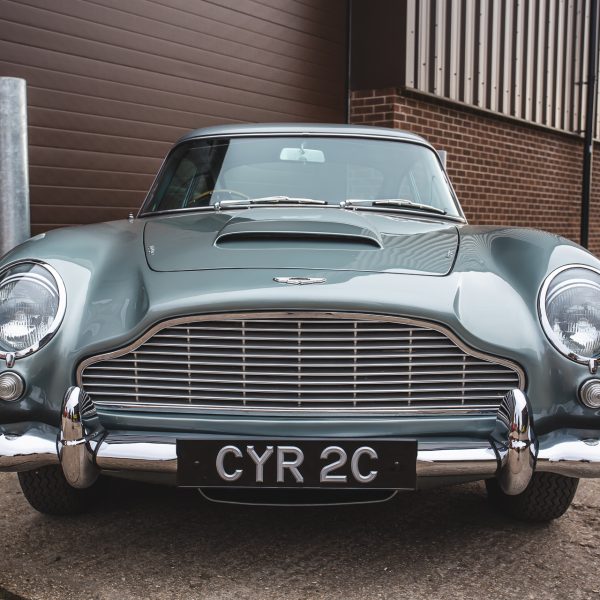
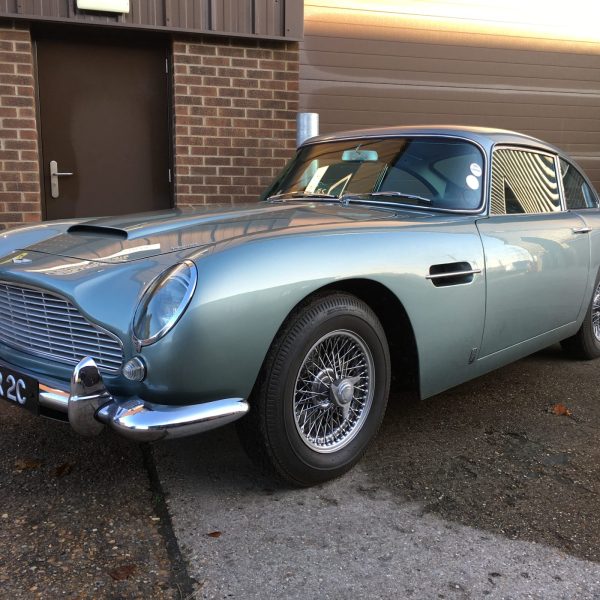
Having had the steering rack refitted last week following it’s recent rebuild the car had developed a slight creaking sound whilst driving slowly over bumps.
Back in the workshops for further investigation showed one of the bolts had loosened itself so this has now been tightened and is awaiting a test drive. We hope this has resolved the issue.
Whilst in, we took the opportunity to remove the wiper blade and arm to have it blasted and painted.
The reason for this was that a slight dink in the original paint had started to progress into a bit of peeling.
Rather than it getting any worse, we have stripped it, repainted the arm to tidy up and prevent any further wear from happening.
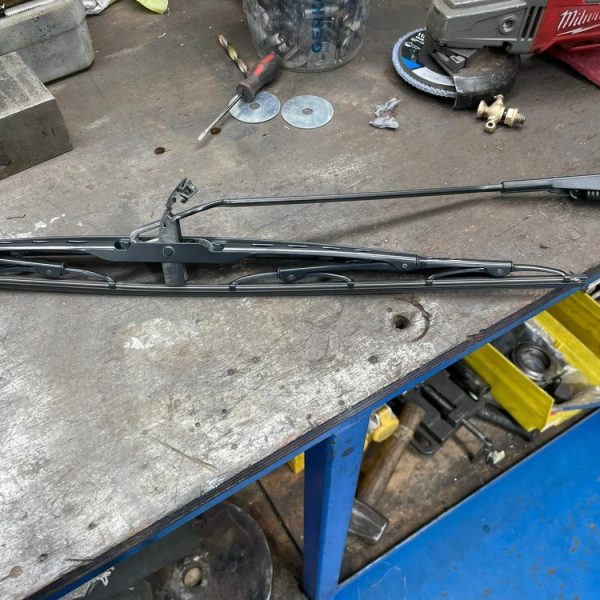
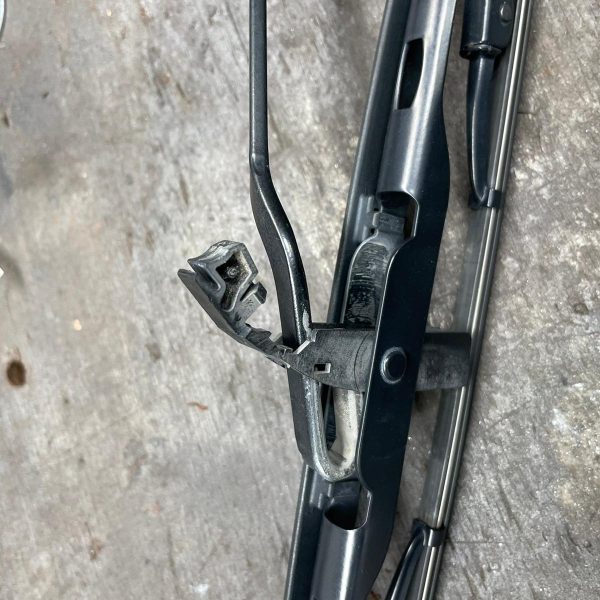
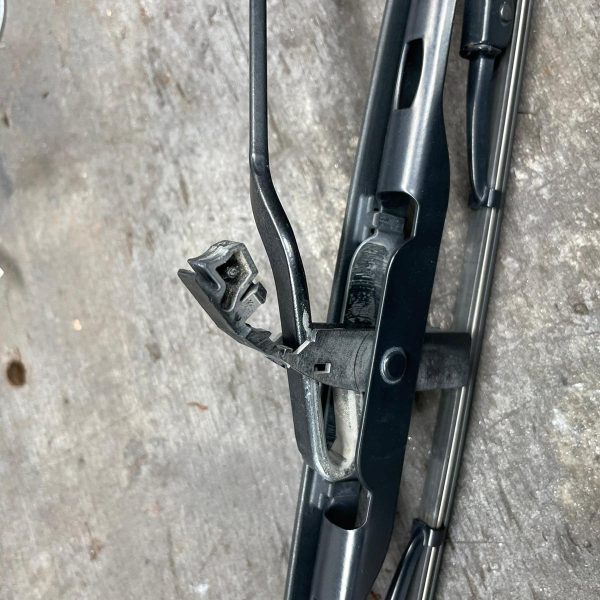

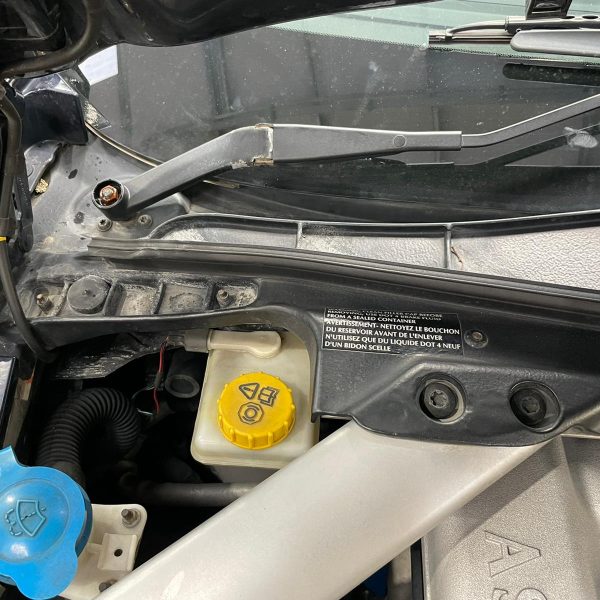
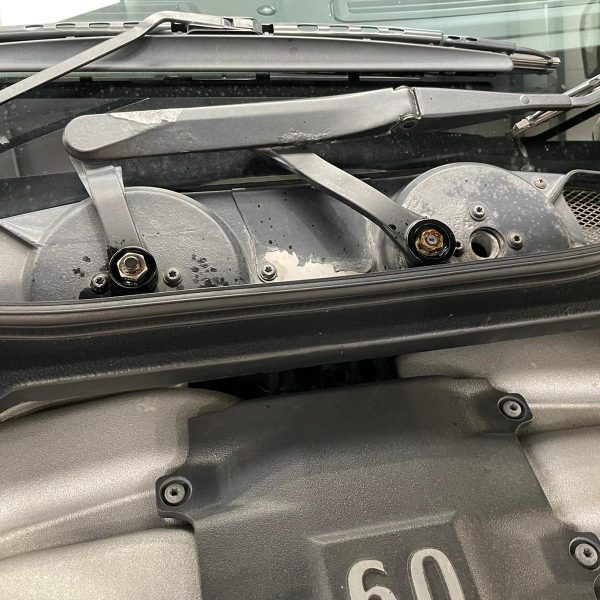


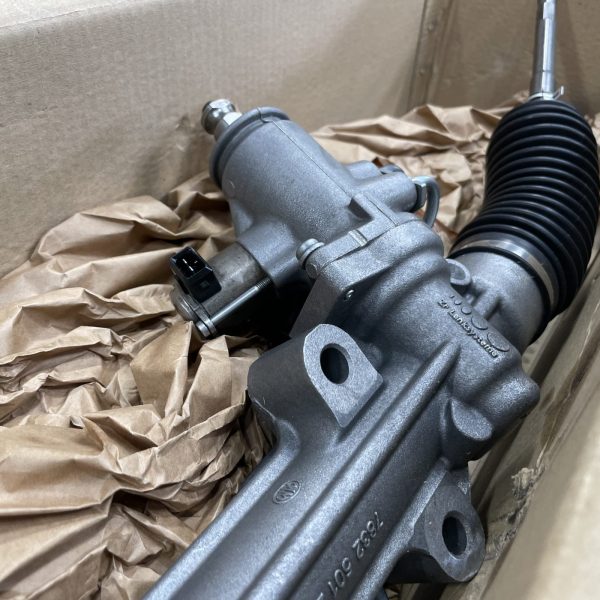
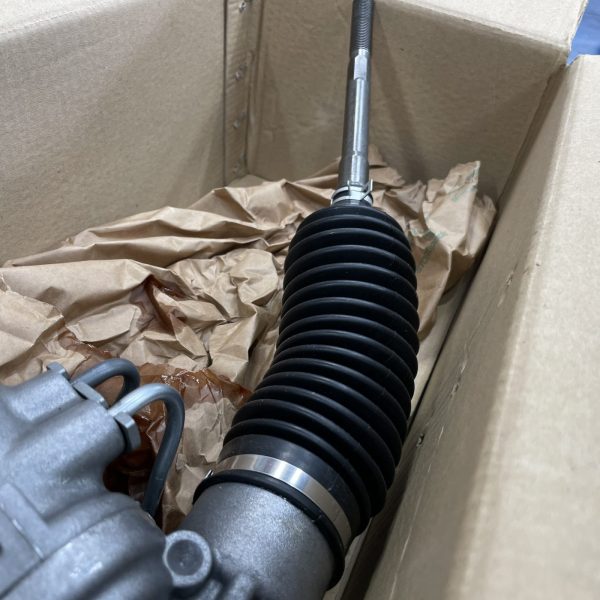

The steering rack from Craig’s 2005 Aston Martin DB9 has arrived back at the Bridge Classic Cars workshop after being refurbished by the amazing team at Re-Go Autoparts.
Re-Go (especially Gary) has been a massive help in the work we have done on the left-hand drive and power steering conversion of our 1970 Bristol 411. So, when Craig’s DB9 developed a power steering issue and leak the team gave them a call. After taking the rack out and sending it down to the Re-Go team, they stripped down the whole unit to find out what the issue was.
Upon inspection, the Re-Go team found a weakness in the material that makes up several seals inside of the power steering rack so when more pressure (more turning lock) was applied, part of the seal would fail and leak. So, they have replaced the seals with a new style and material and then checked/tested the rack before sending it back to the team here to get refitted to the DB9.
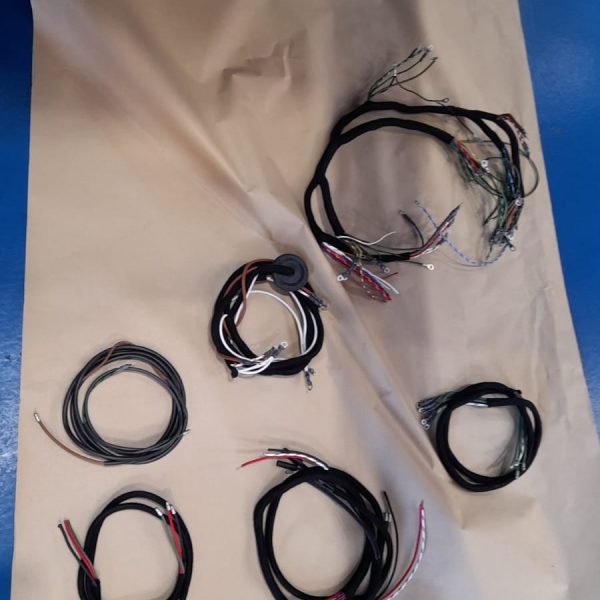


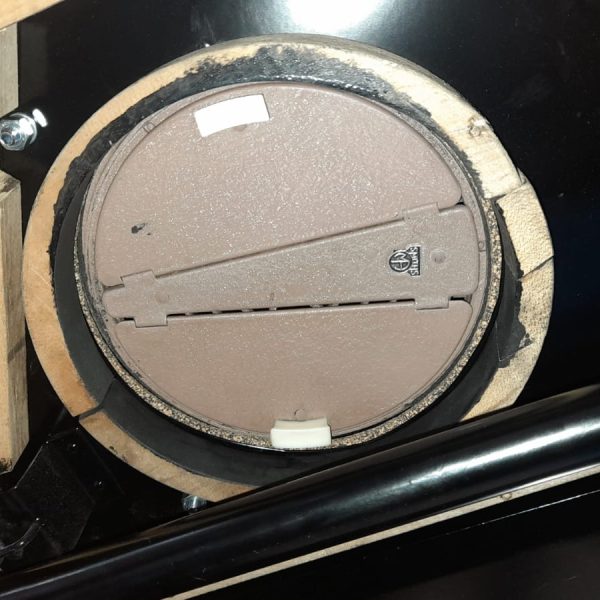

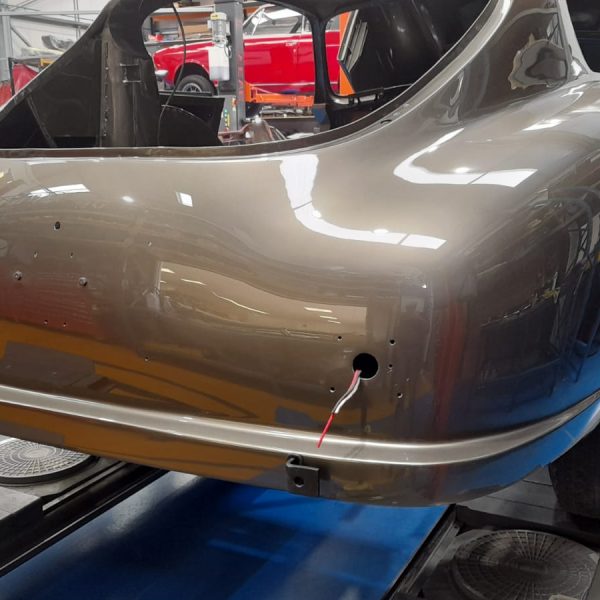
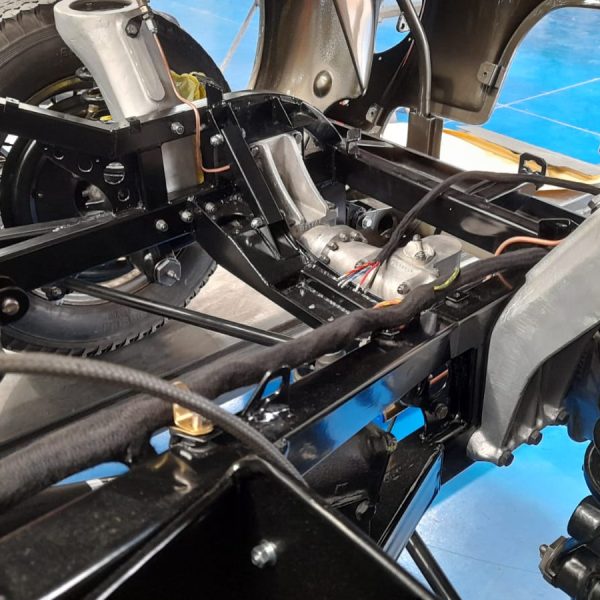
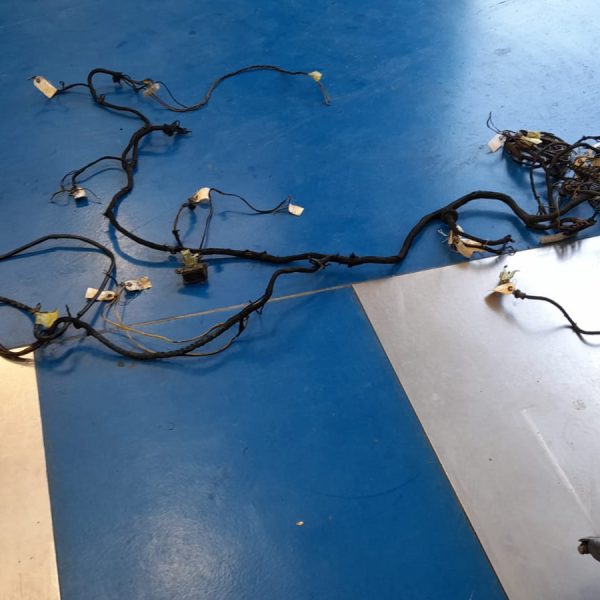


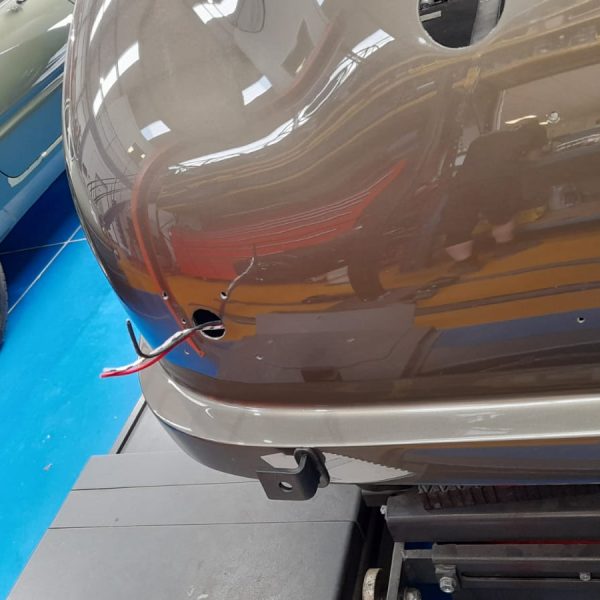

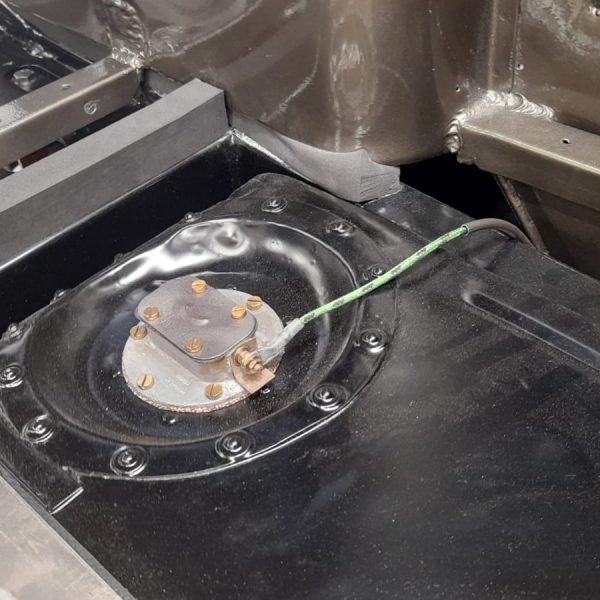
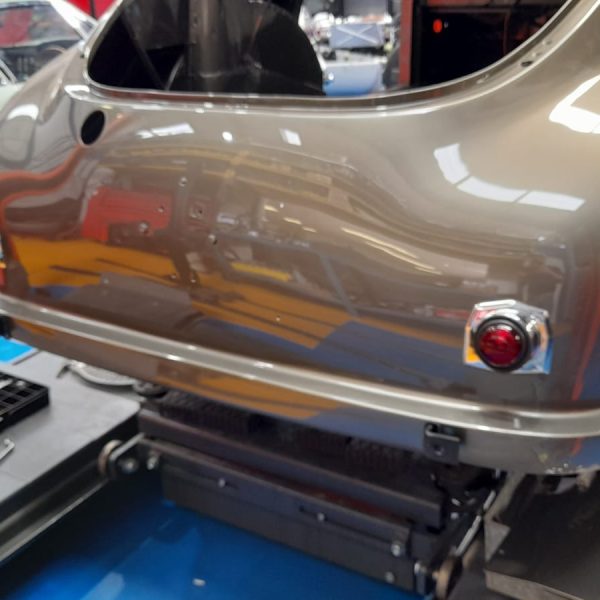
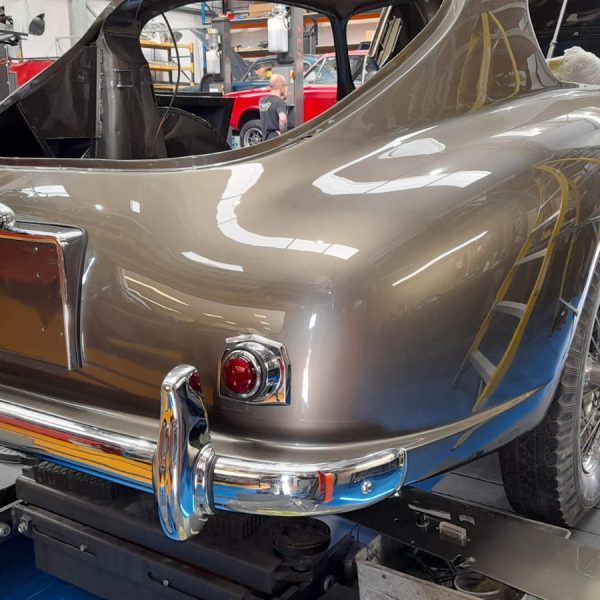
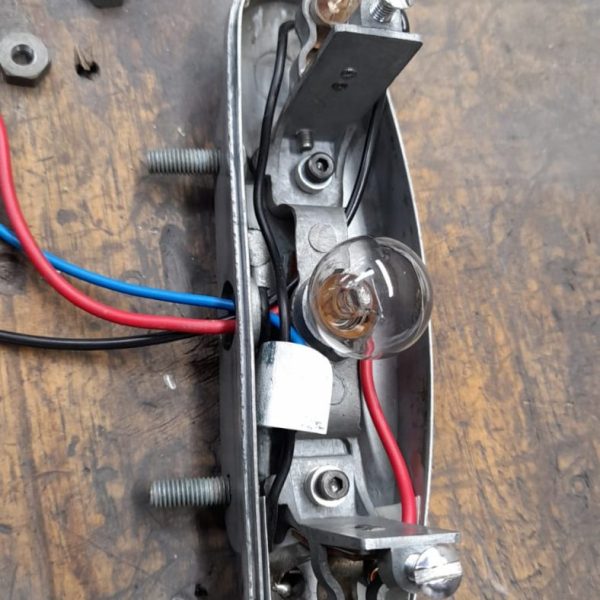
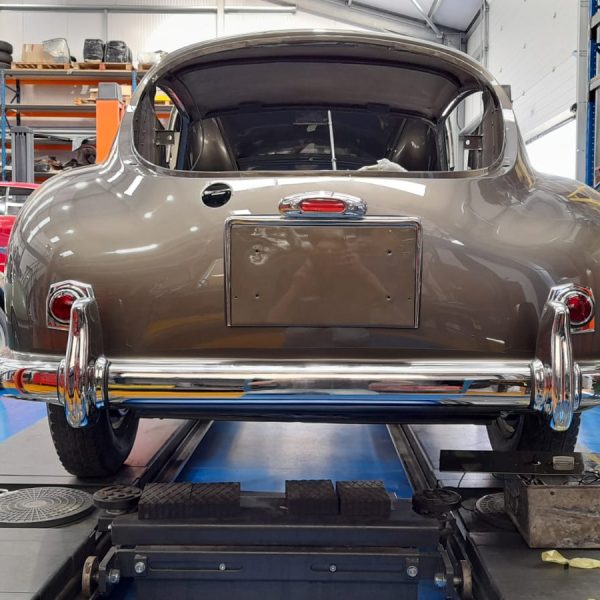

The workshop at Bridge Classic Cars have begun working on wiring up the beautiful 1955 Aston Martin DB2/4 Mk1 in at our Suffolk HQ for full restoration.
Scott, one of our restoration technicians, has been working his way through the classic DB2 to get it to the stage where the team can begin to fit up the new harness and looms into the classic GT car.
Scott has been wiring up the various relays and lights throughout the car, and at the same time fitting the beautifully finished chromework onto the car. As well as that, Scott has been routing the harness through the dashboard and car all the way to the rear lights.
This project is moving along quickly so keep an eye out on the Bridge Classic Cars news page very soon for more updates.
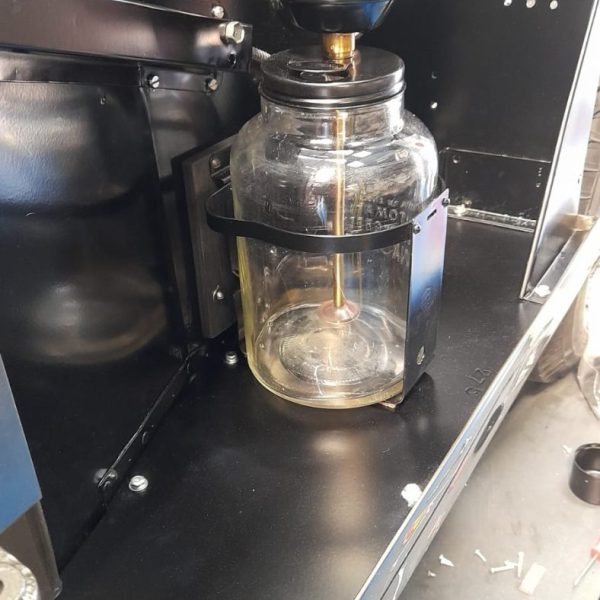

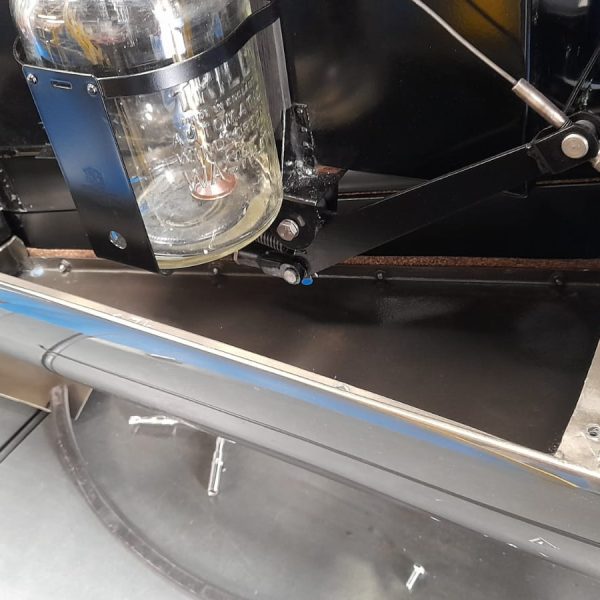
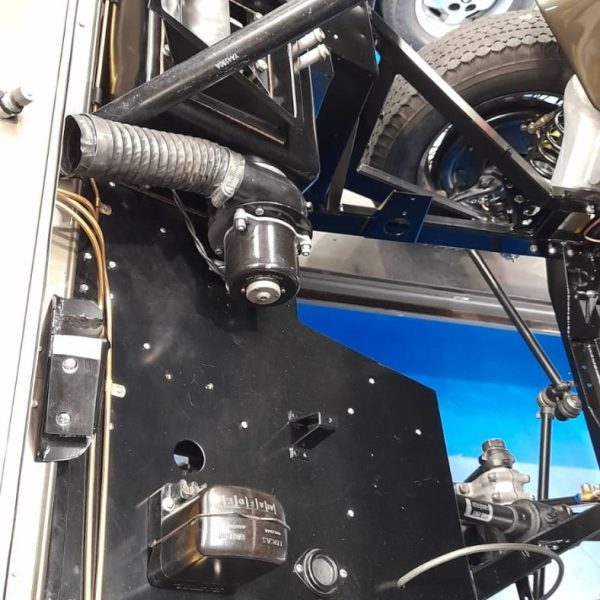
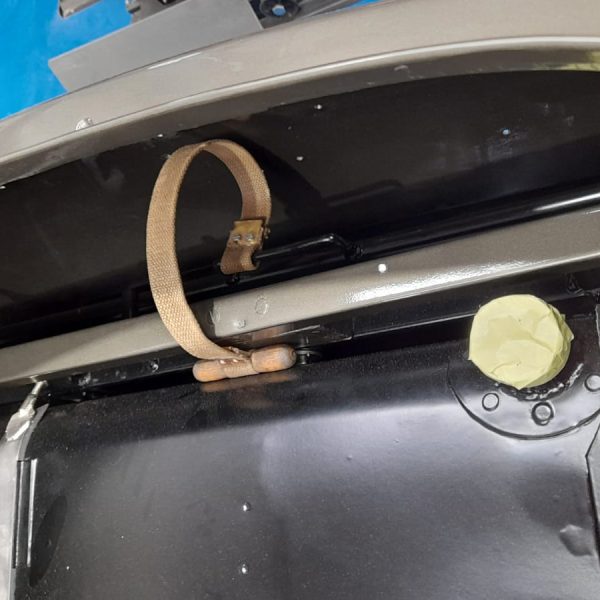
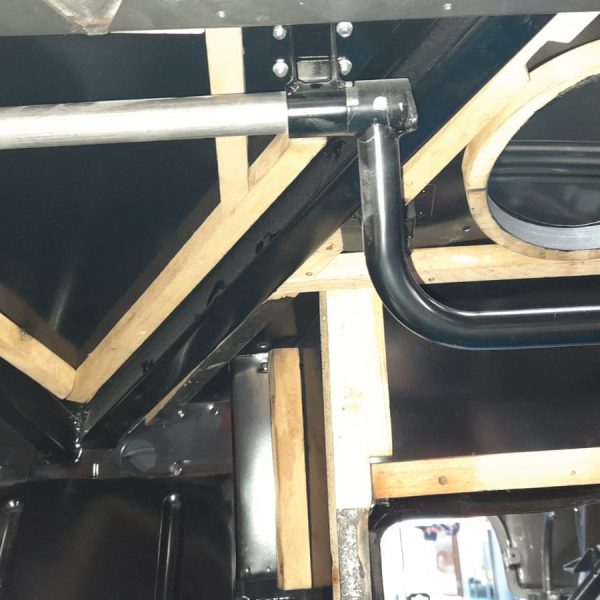
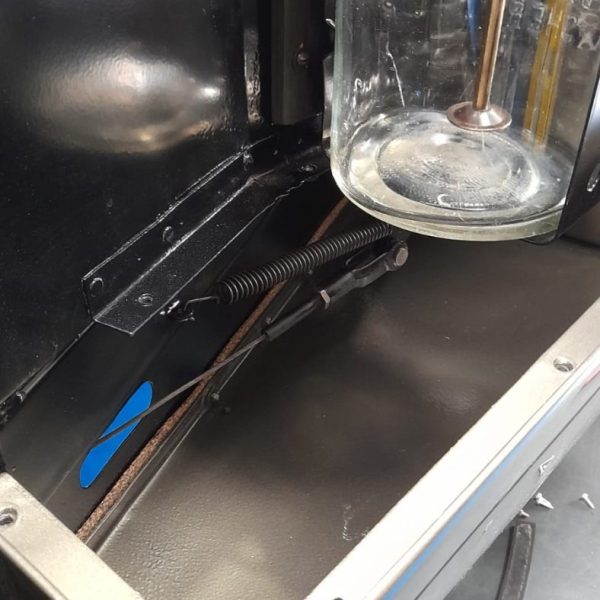
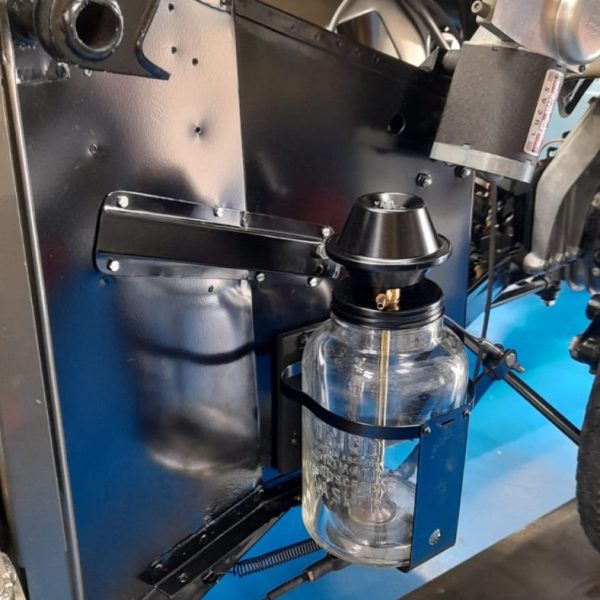
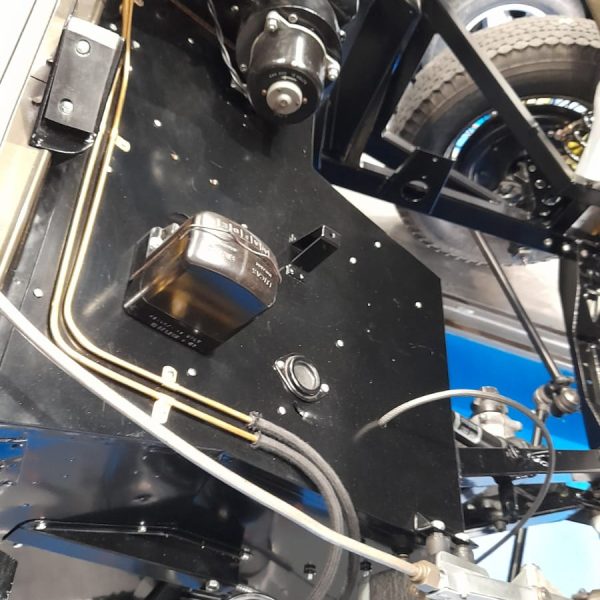

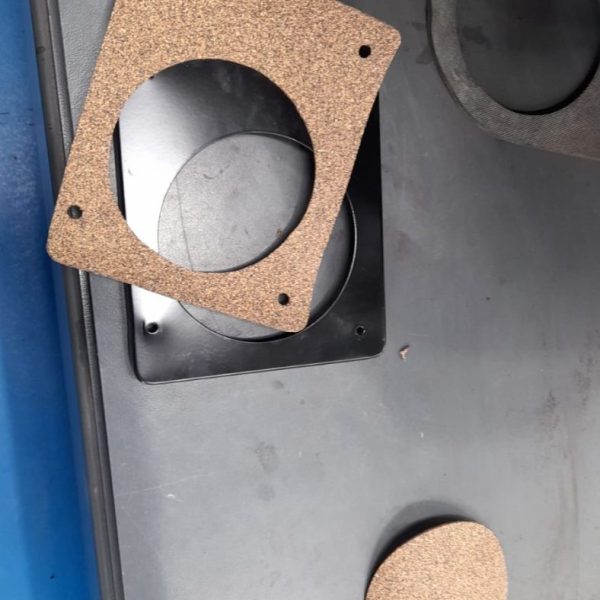

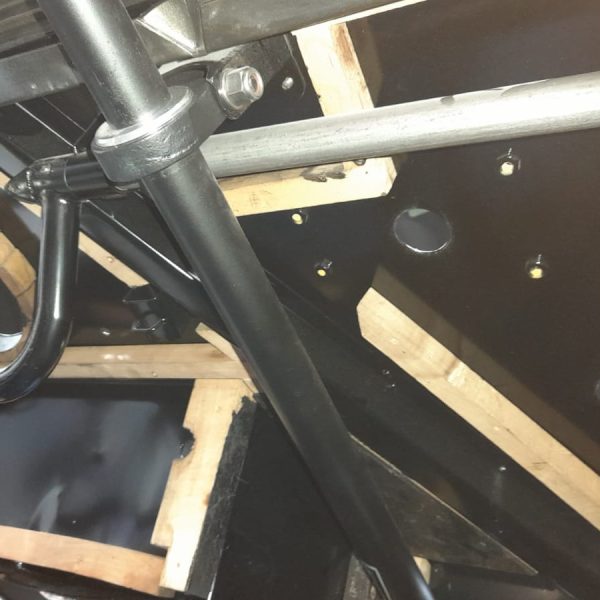
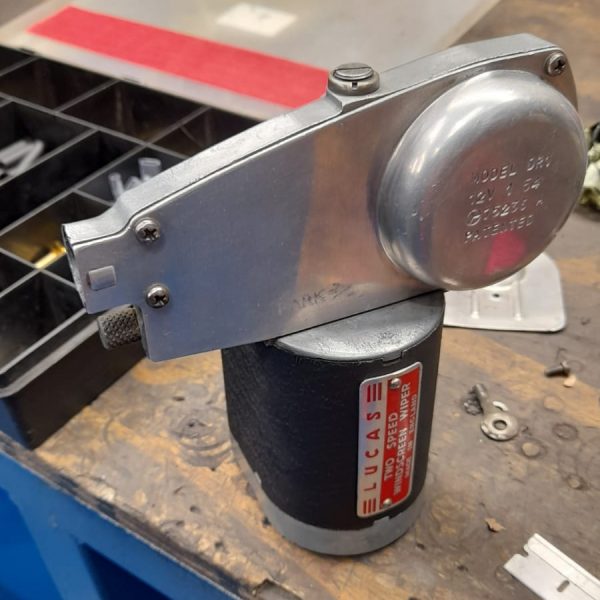
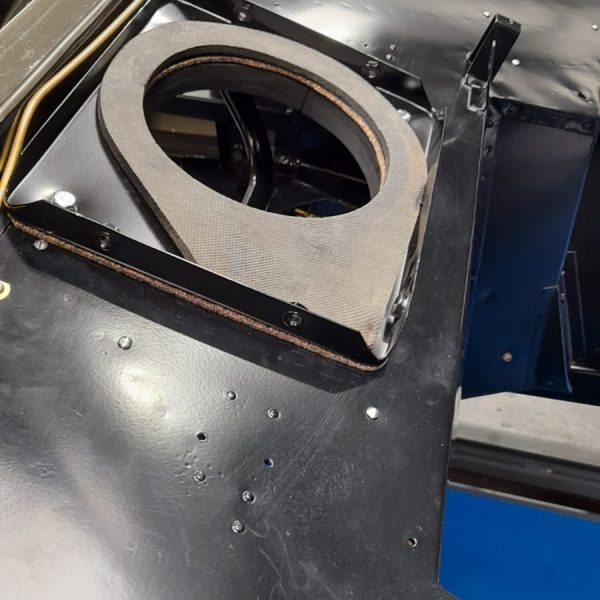
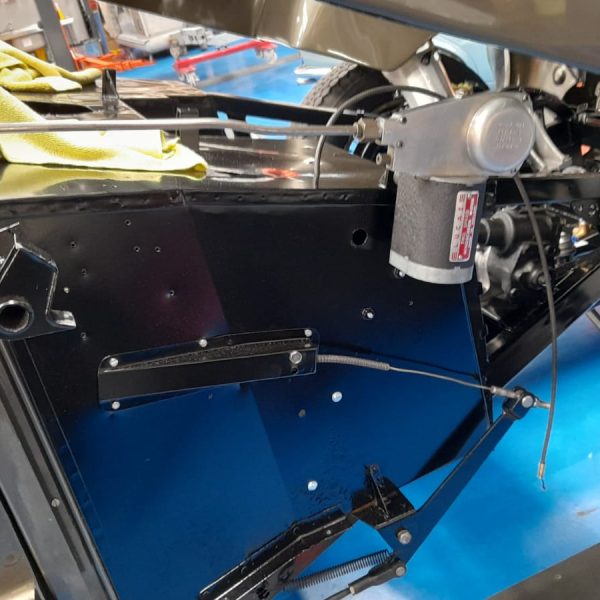
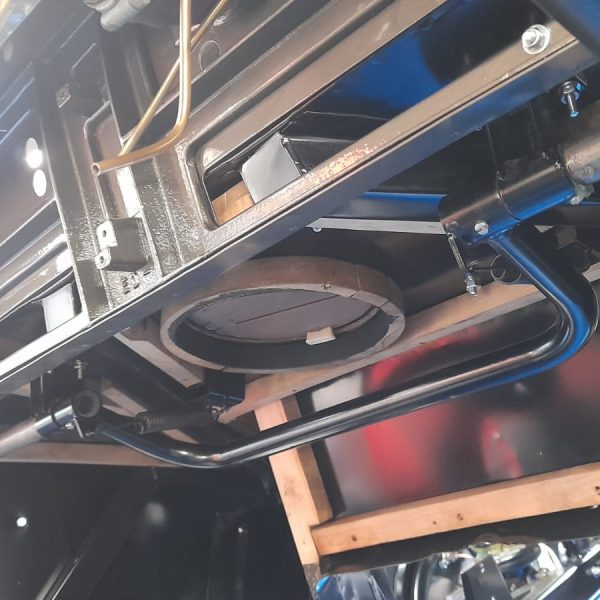
The workshop at Bridge Classic Cars are continuing with the refit of the 1955 Aston Martin DB2/4 Mk1 in for total restoration.
Our technician Scott has been working on getting the various pieces for the washer bottle and wiper mechanism in place as part of its rebuild. With the bottle and mount in place, Scott could begin to make the various lines needed to run up the firewall of the classic GT car but also work around the wooden framing which lies behind and above it.
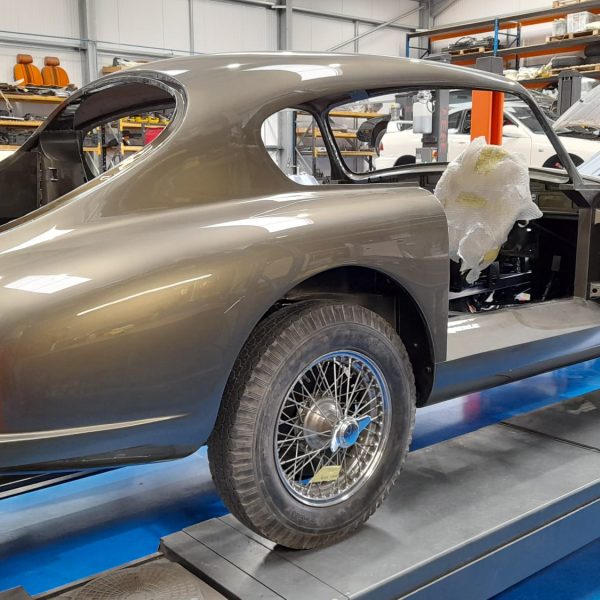
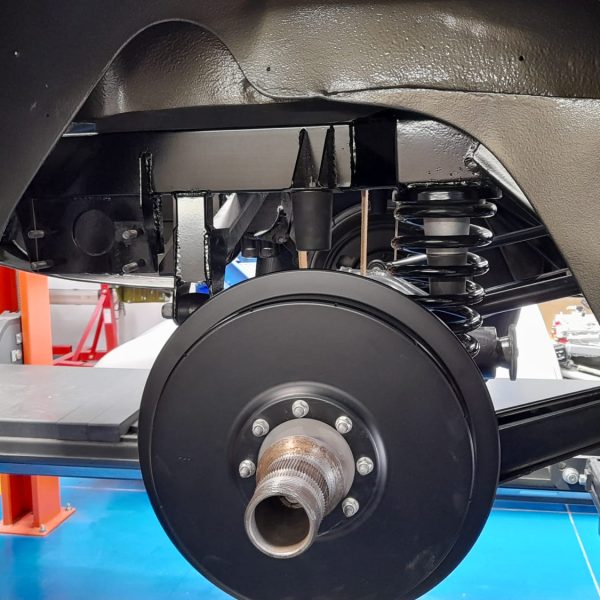
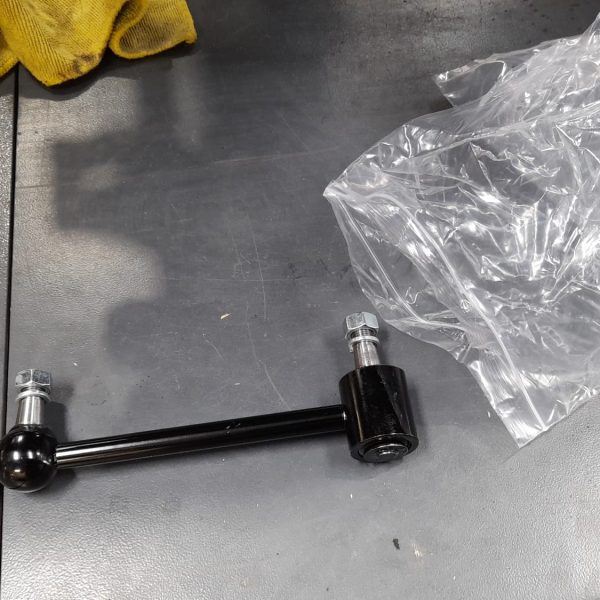
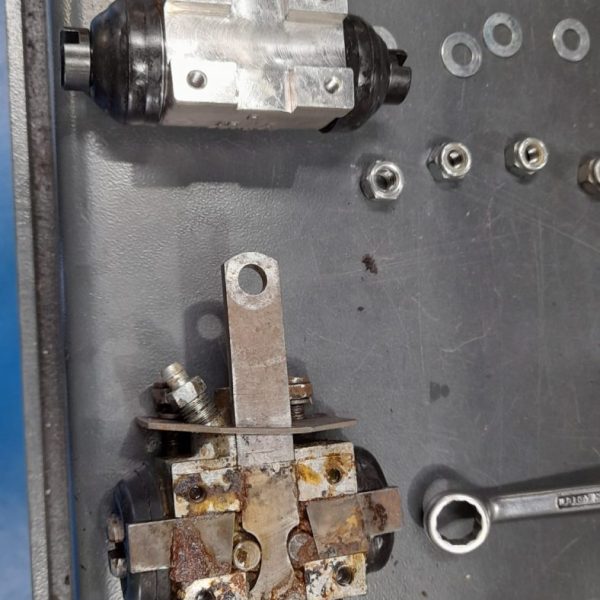
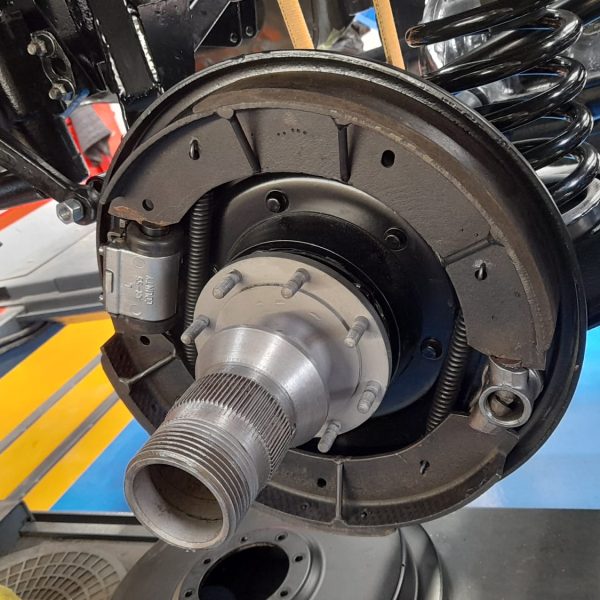
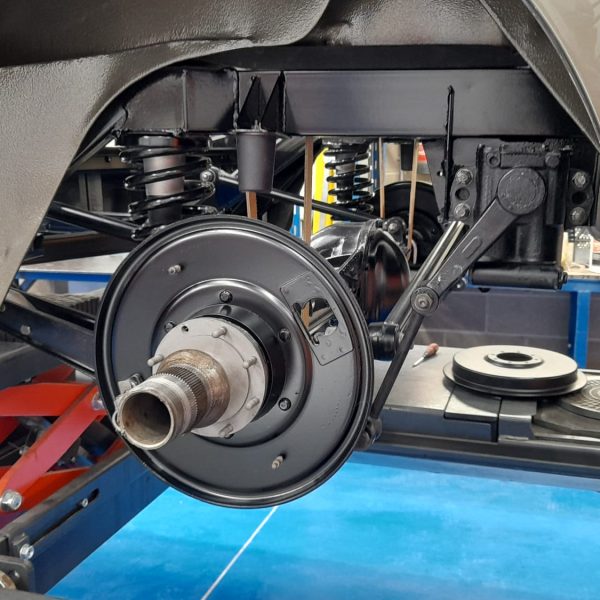



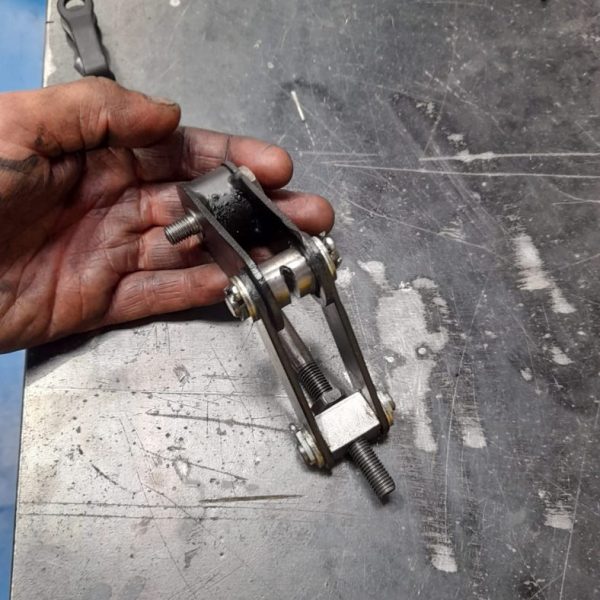
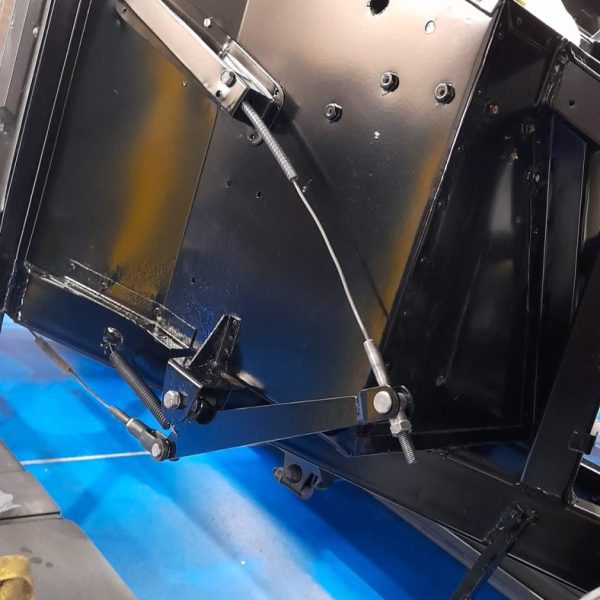
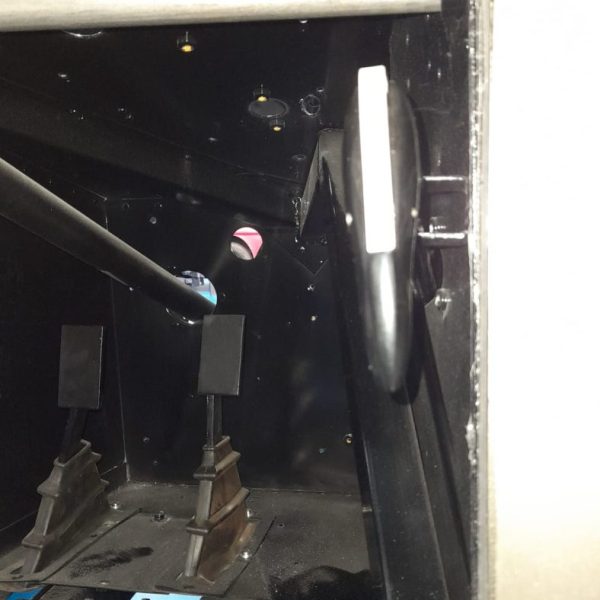
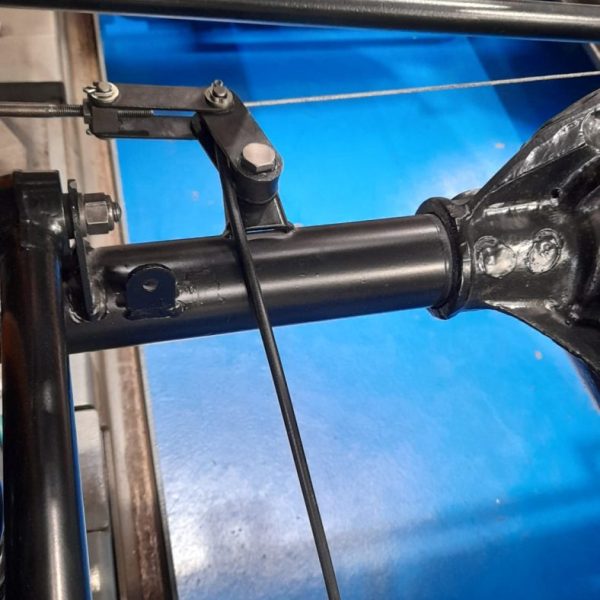

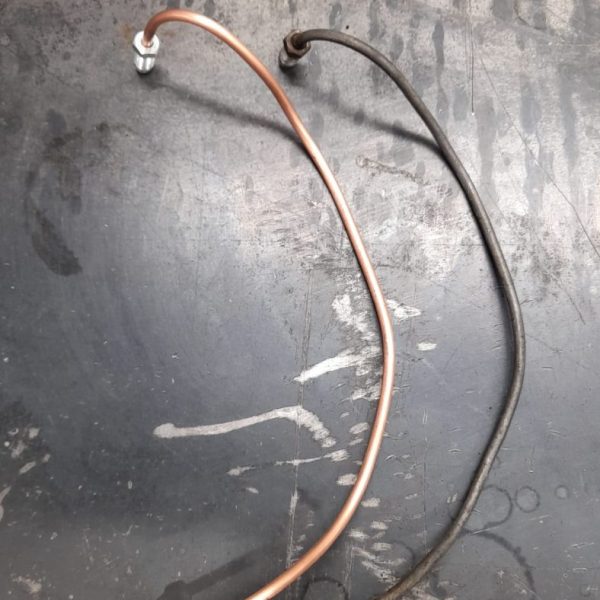

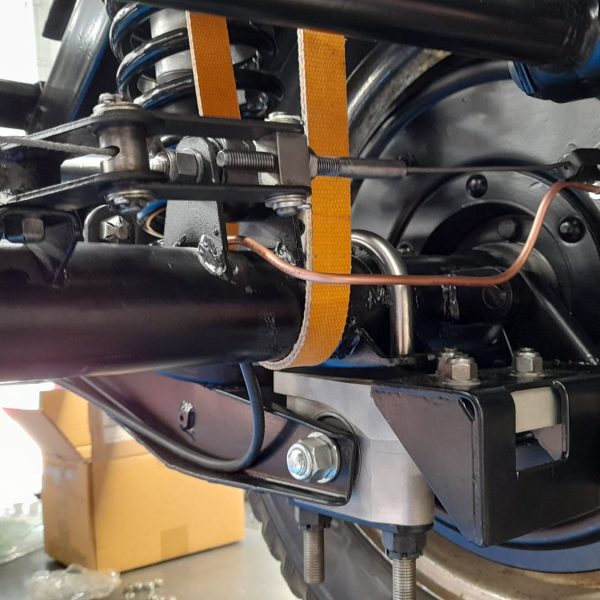
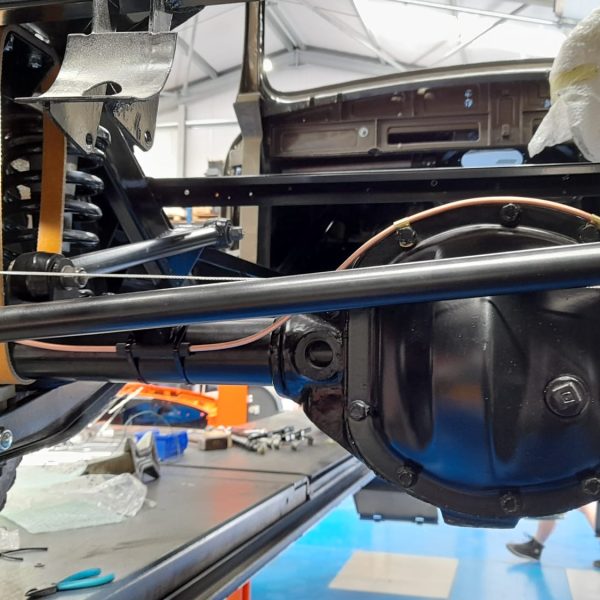
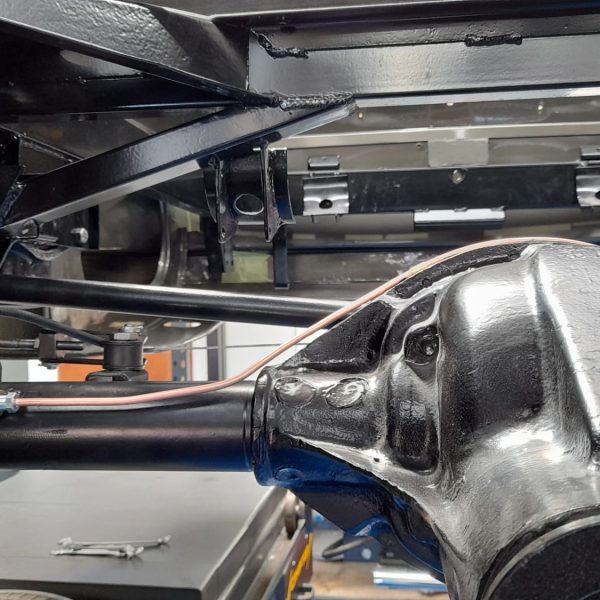
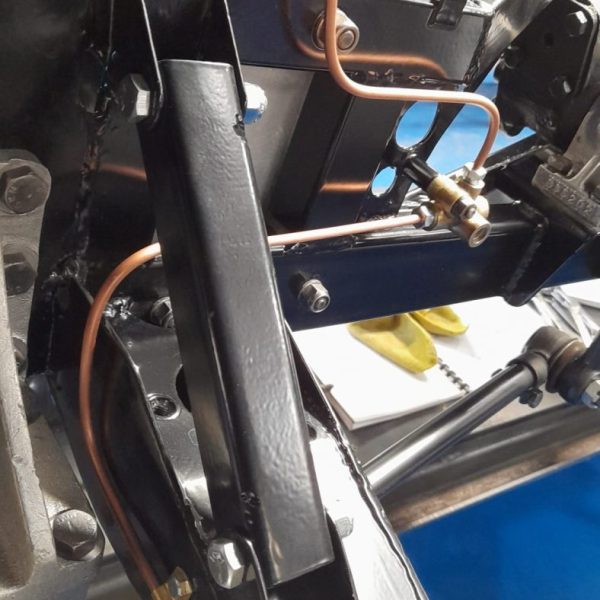
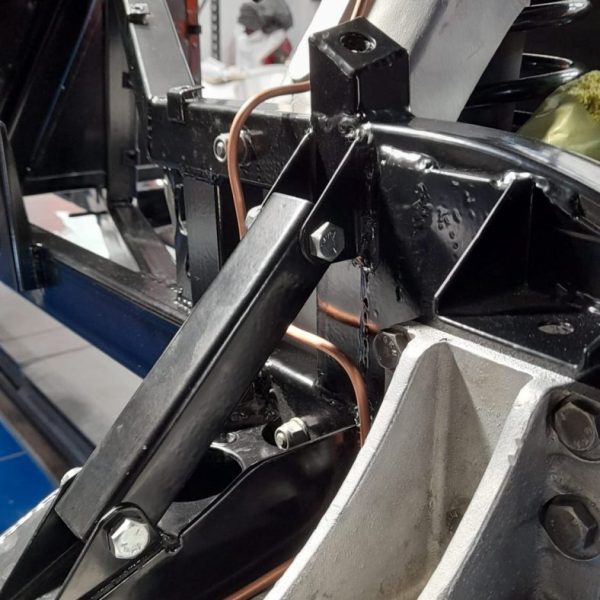
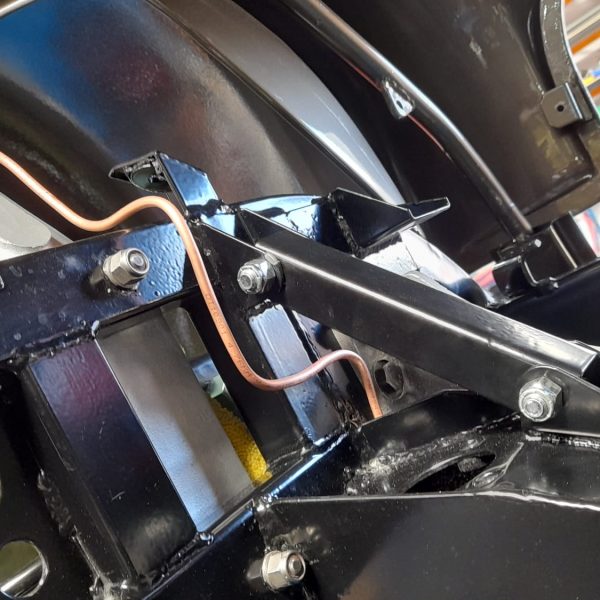


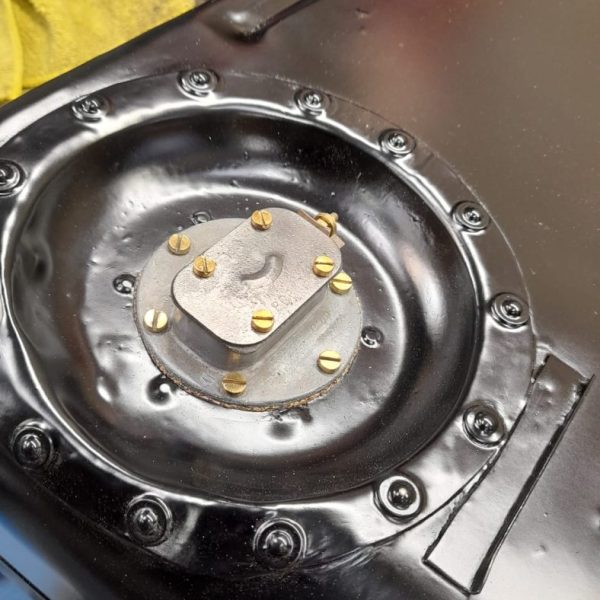
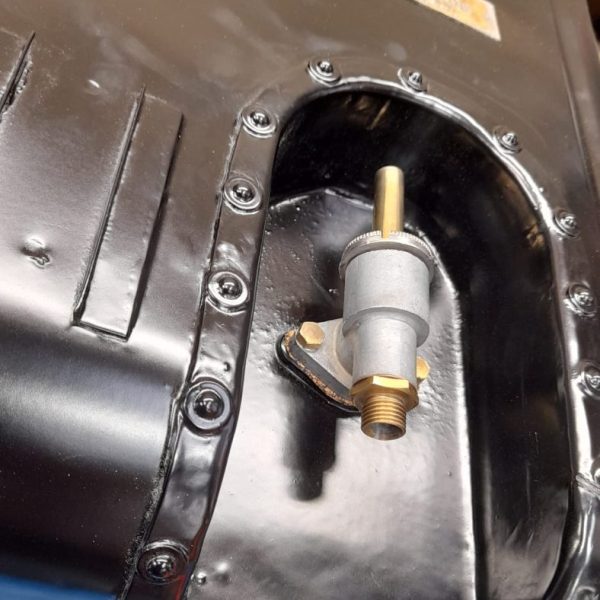
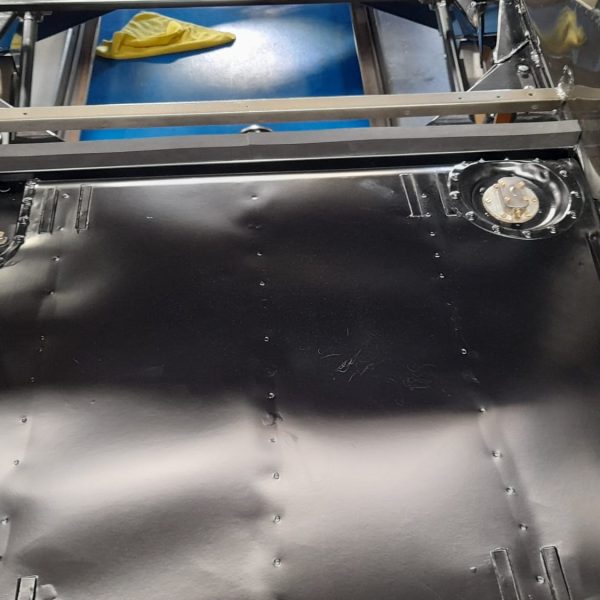

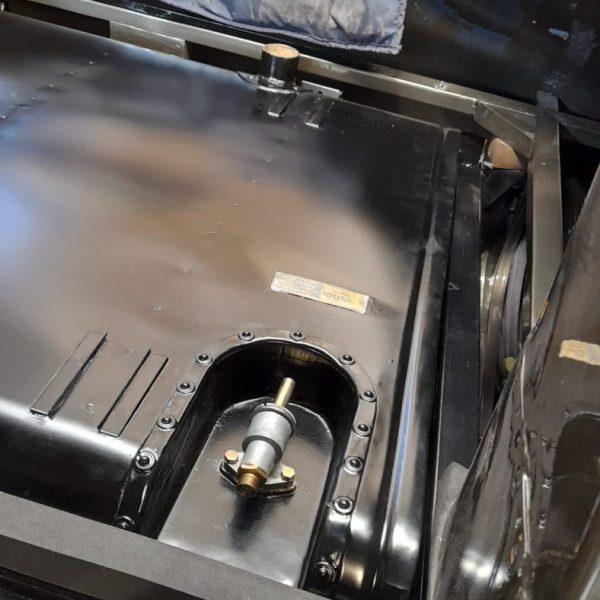
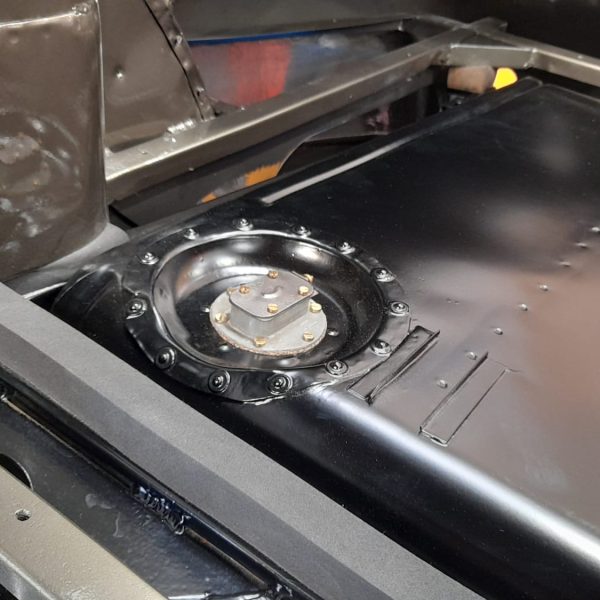
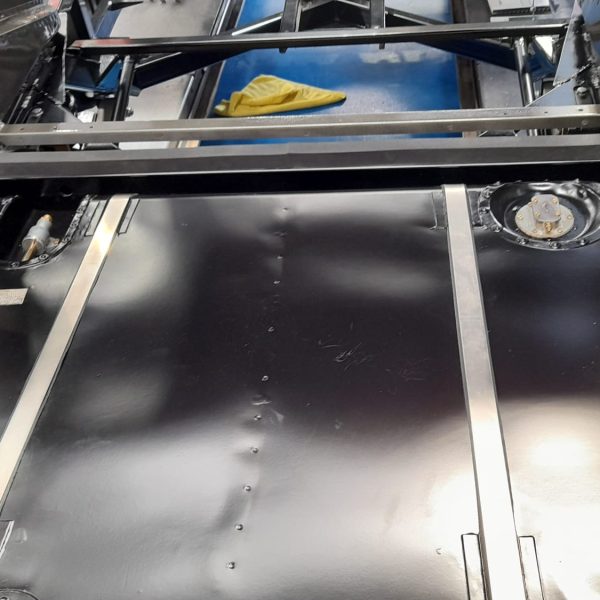



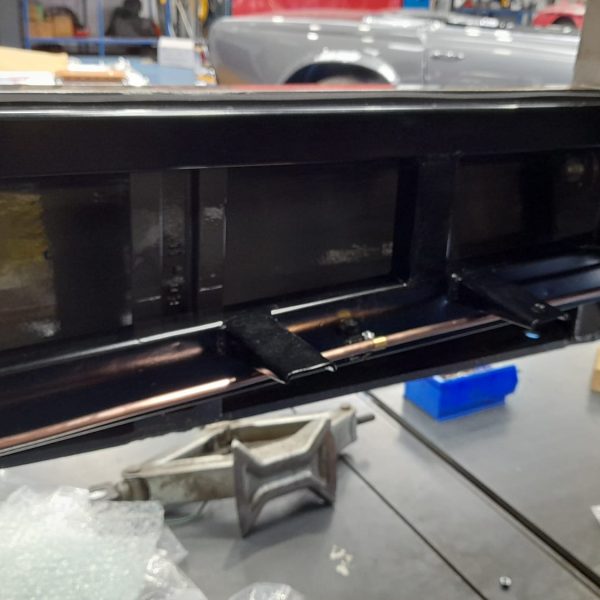
The 1955 Aston Martin DB2/4 has been getting refit and plumbed up by our workshop here at the Bridge Classic Cars Suffolk HQ.
The team have refit and rebuilt the drum brake system for the car along with running the necessary linkages and cable for the handbrake. Along with that, our technician Scott has made up brand new brake hardlines which have been routed throughout the car and neatly tucked close to the body and rear axle not only for aesthetics but for fitment.
After all of the brakes were put together and plumbed in, Scott could turn his attention to the fuel system.
He fit the classic Aston Martins fuel tank, which was test fit and gently bolted down into place before making up the various fuel lines and again, routing them safely and neatly throughout the car.


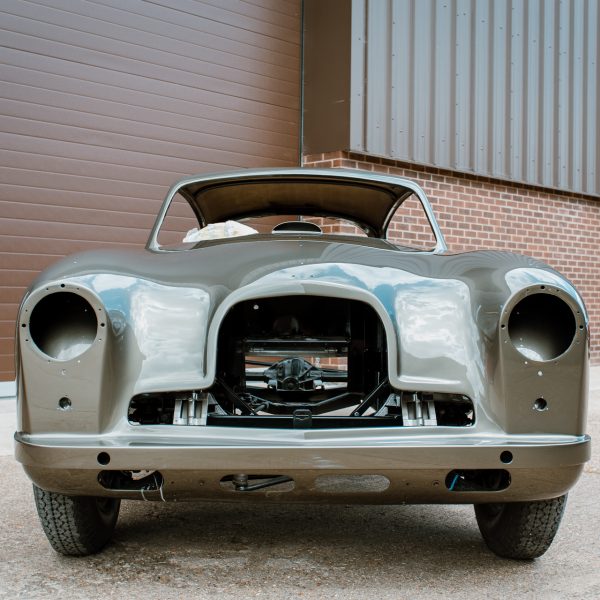

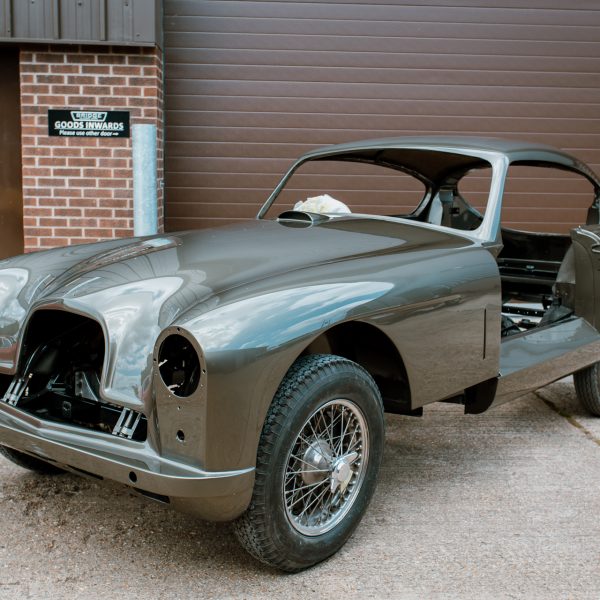

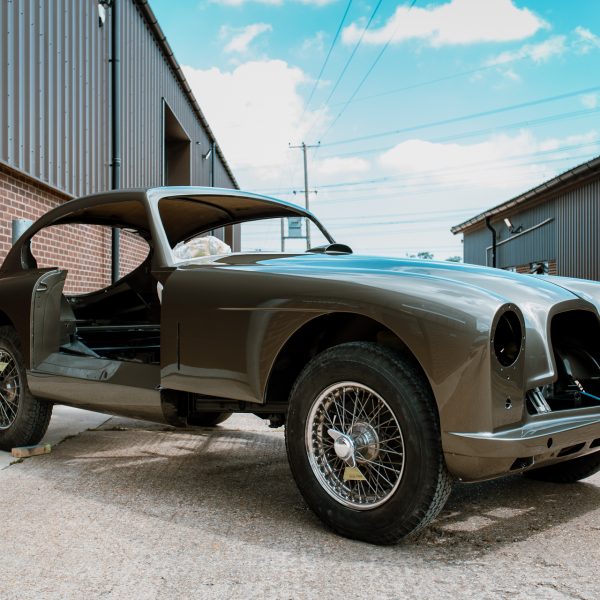
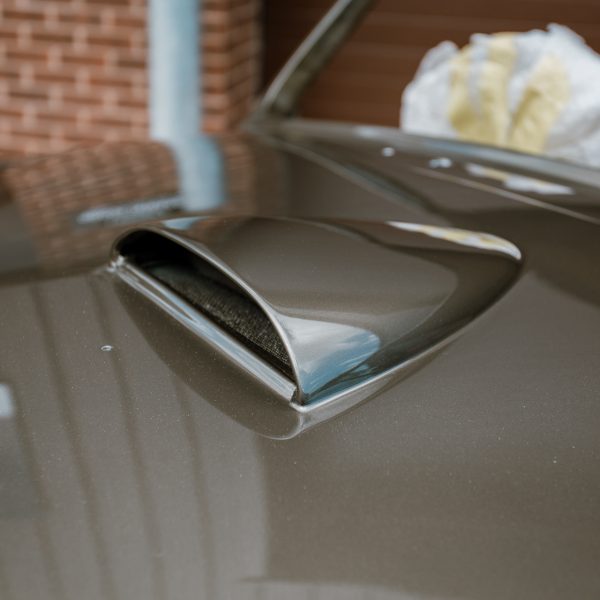
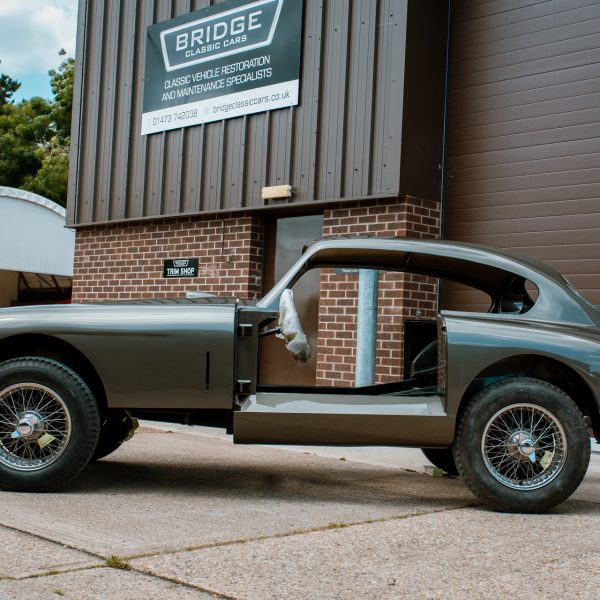
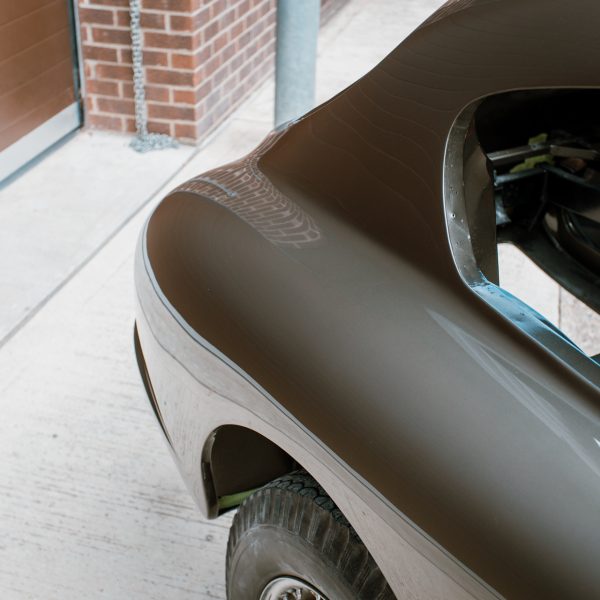
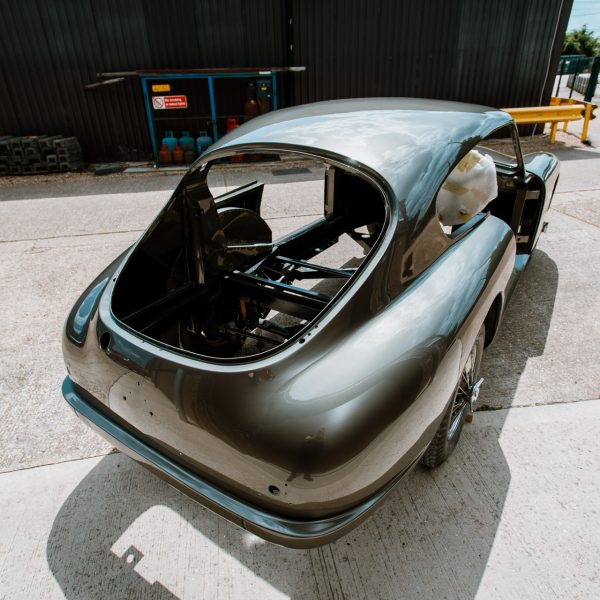
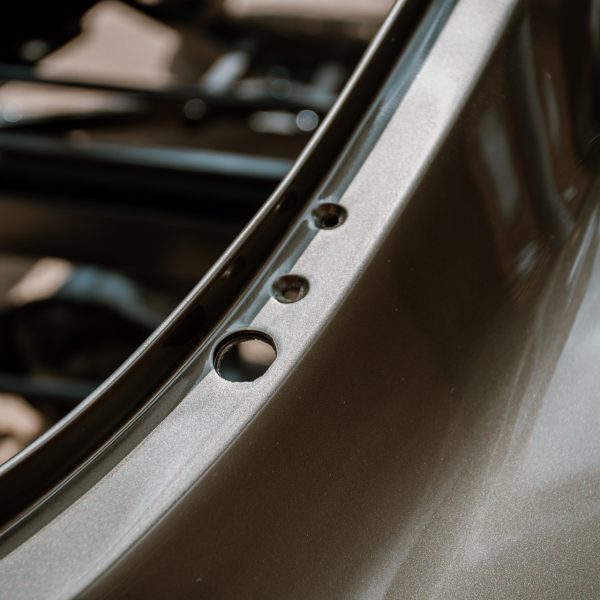
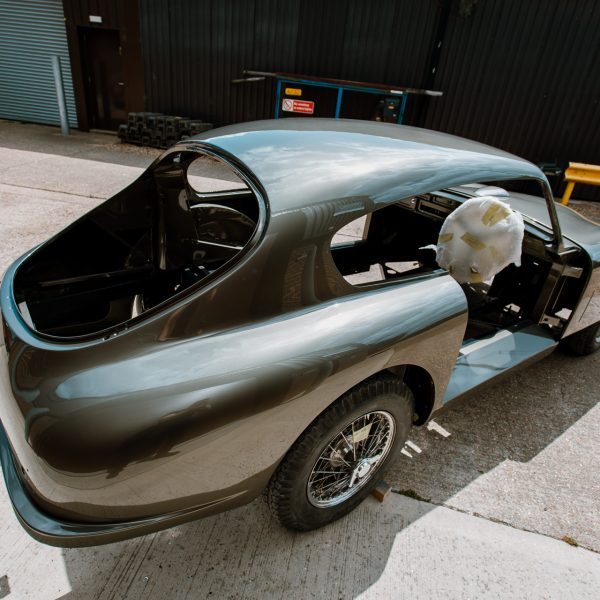
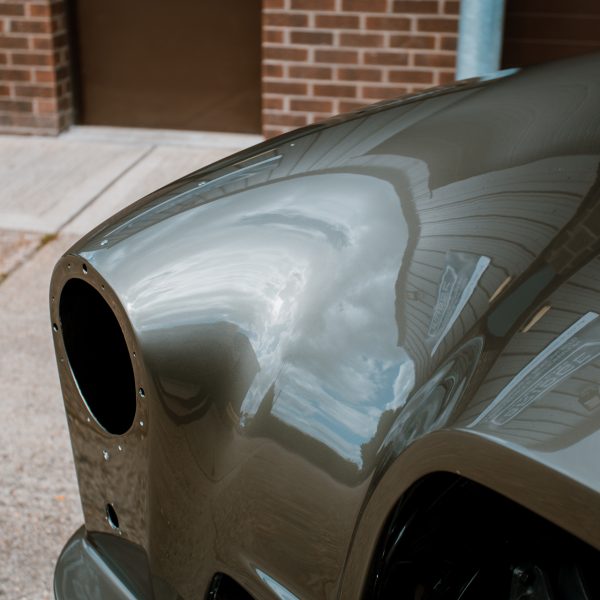
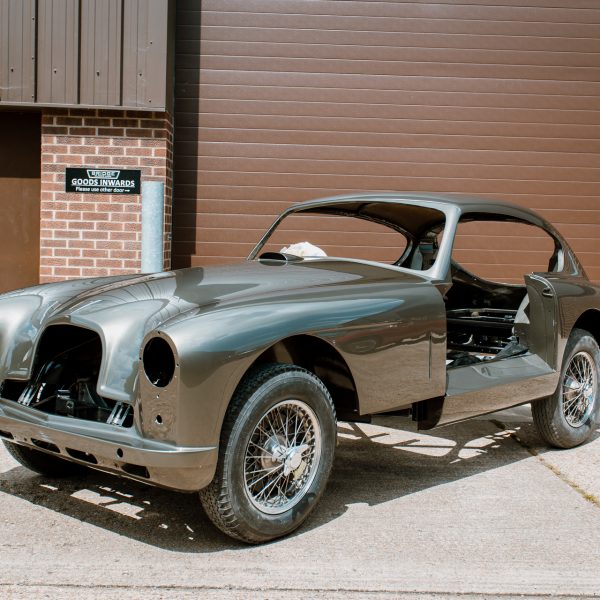
The Bridge Classic Cars paint and body team have put countless hours of hard work, skill and craft into the bodywork and paint of the 1955 Aston Martin DB2/4 MkI that when our painter Chris had finished polishing the entire car, we had to take it outside into the sun to get a proper look.
The weather had been absolutely perfect all week. A few light, playful clouds strewn across the endless blue of the Suffolk sky made the perfect lighting rig for such an amazing car. The depth of the paint, the subtlety of the colour and the bright shine of the metallic paint stopped all of the team who walked past it.
Our marketing manager, Freddie decided to grab his camera and get some photos of the stunning 1950s GT car which look incredible but it has to be seen to truly be believed.
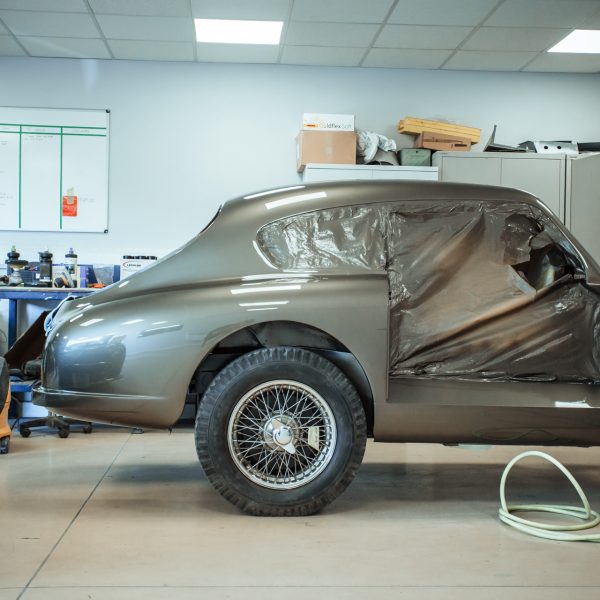
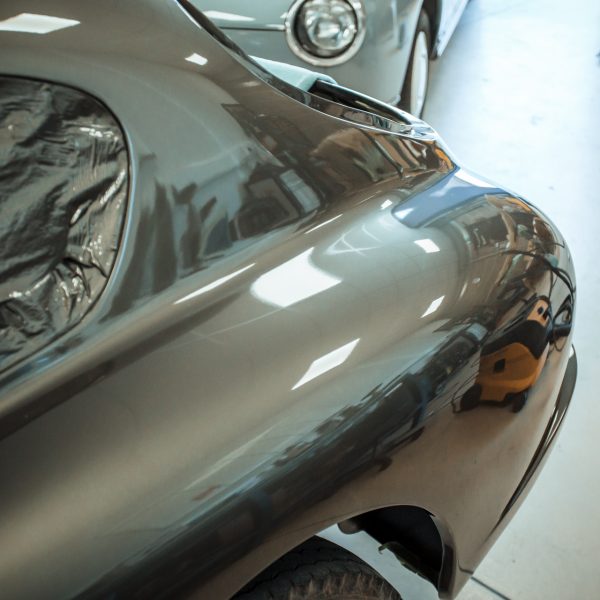

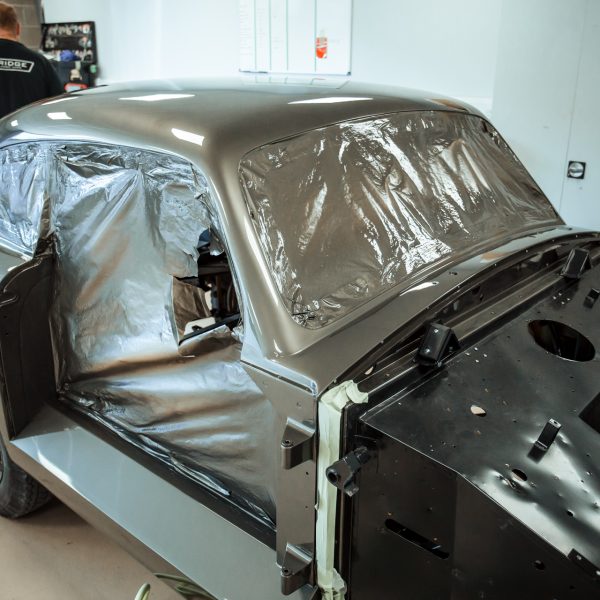


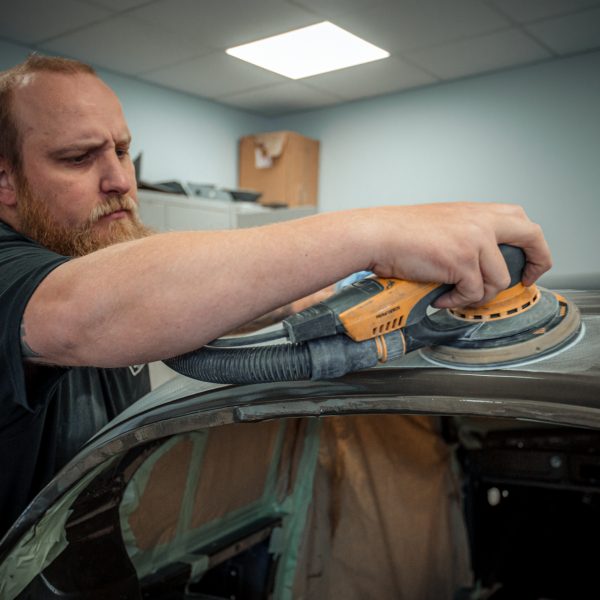
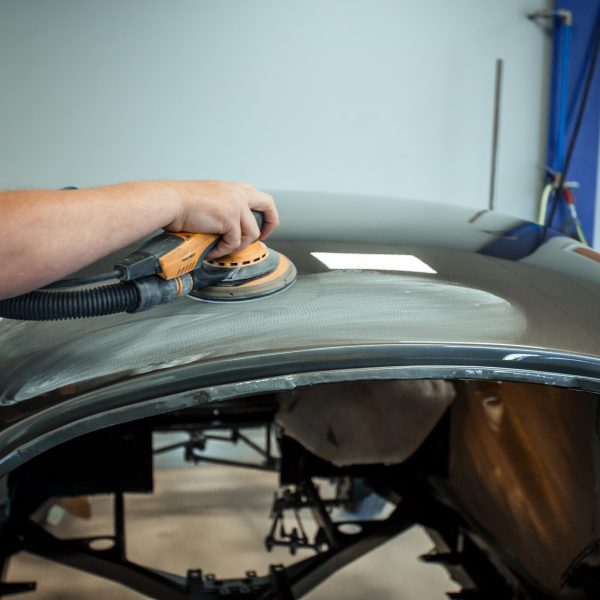
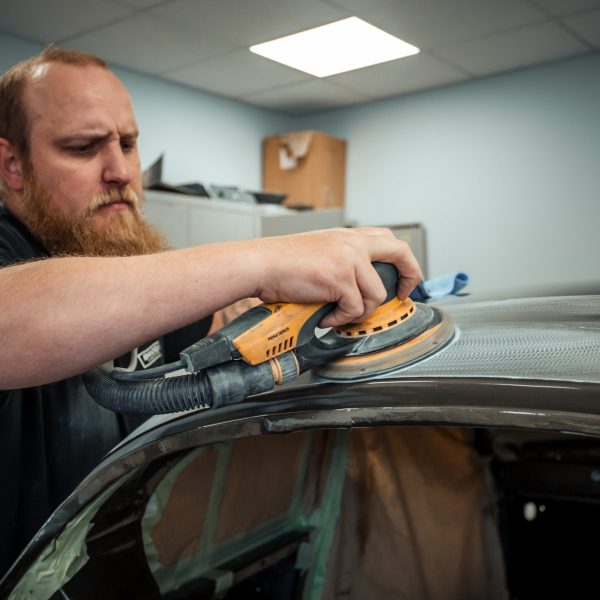
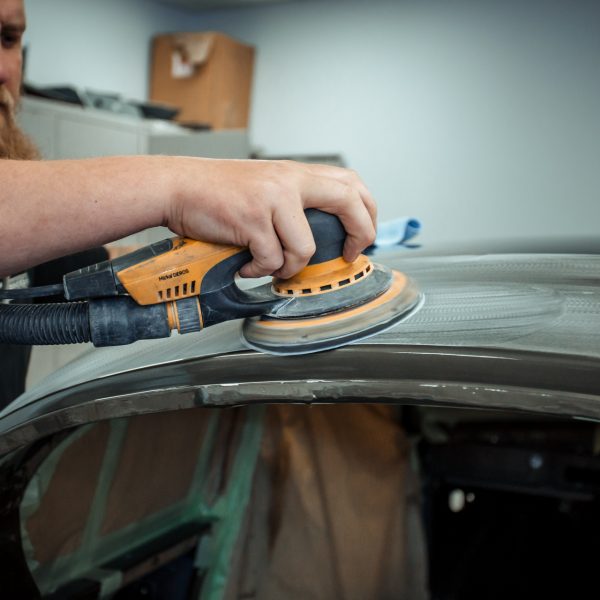
The 1955 Aston Martin DB2/4 MkI has been moved into the Bridge Classic Cars paint and body preparation area for the team to being colour sanding the car.
The process of colour sanding is key in the visual aspect of the restoration of the classic Aston Martin to make the paintwork match the incredible work that each and every panel has had done to it by the team.
Our painter Chris, who painted the car, has headed up the colour sanding of the Aston Martin. Using finer and finer abrasives to remove any imperfections and even out any areas of the car.
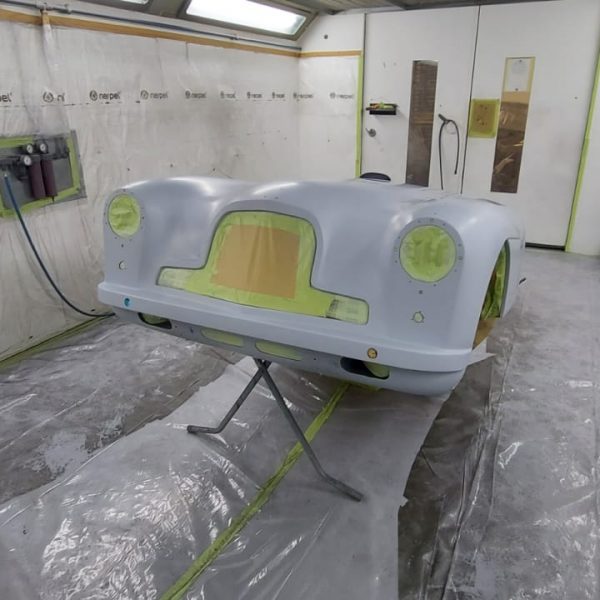

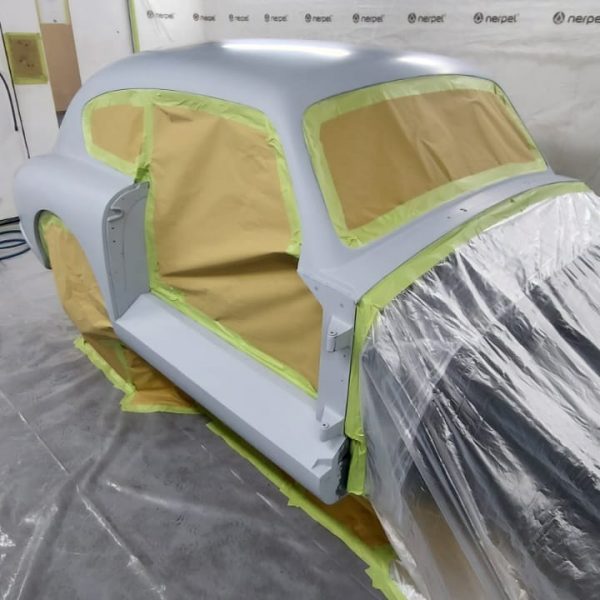
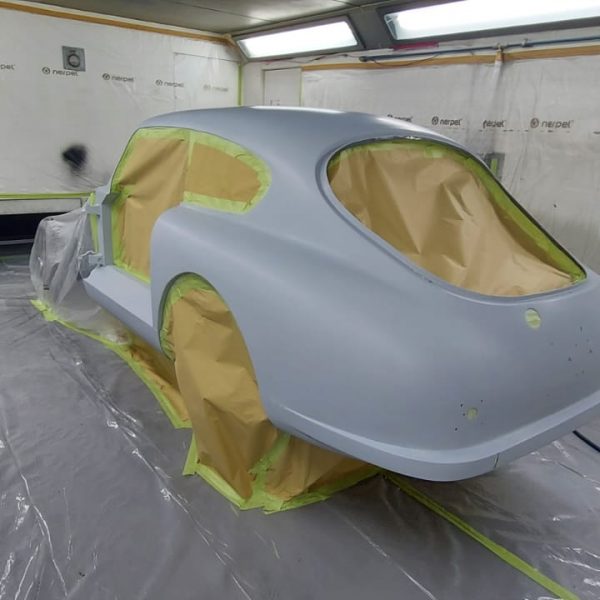
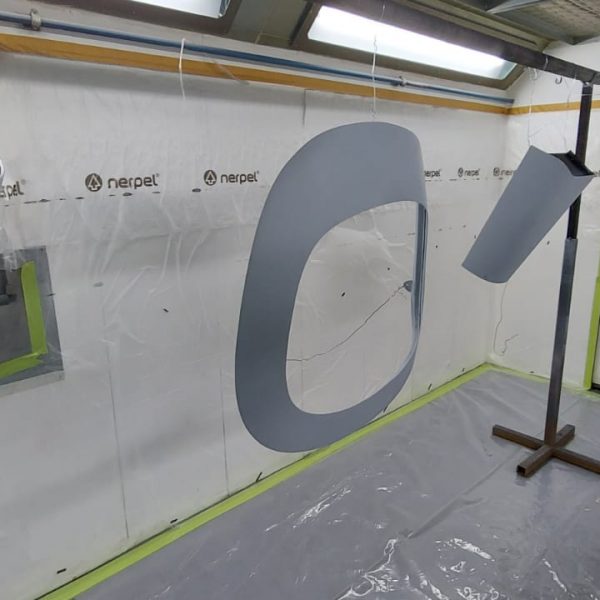
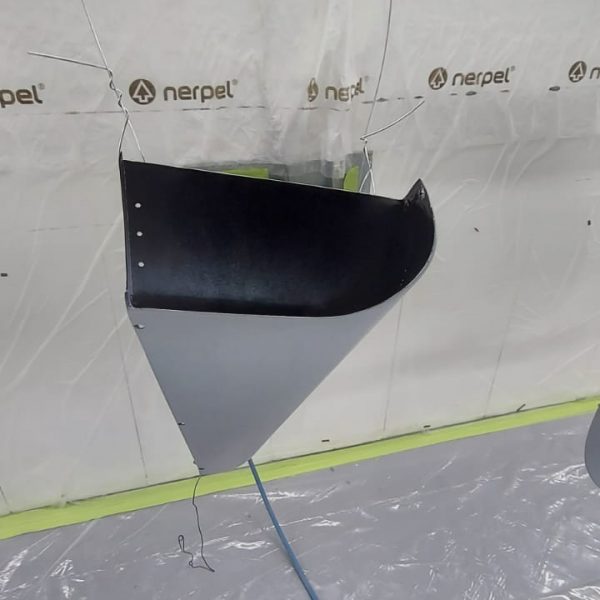
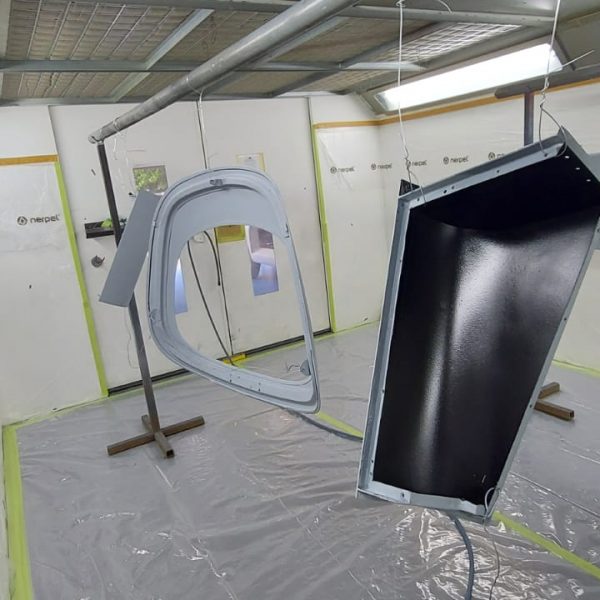
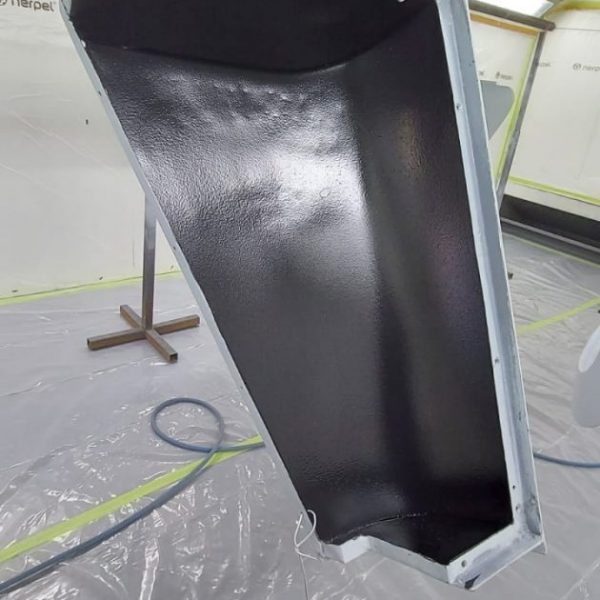

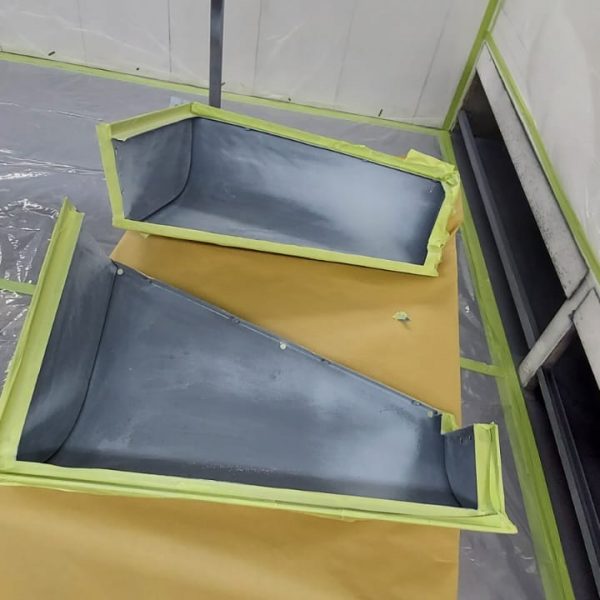
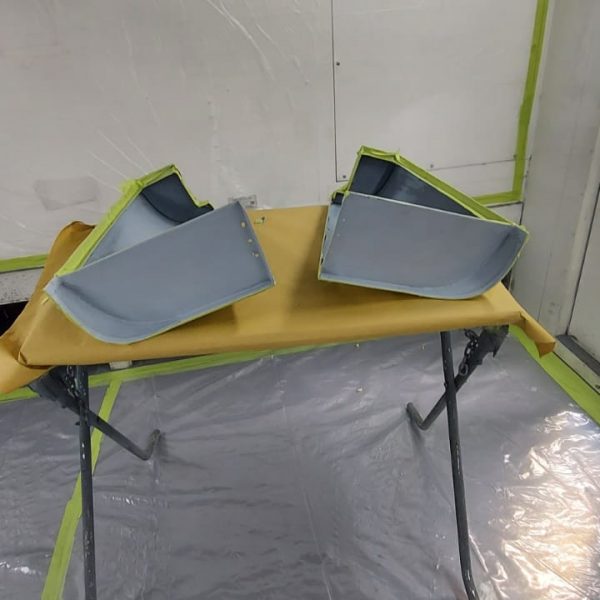
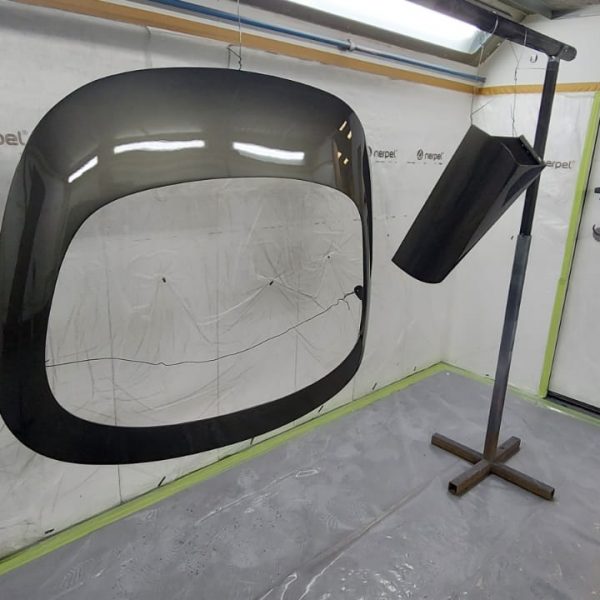
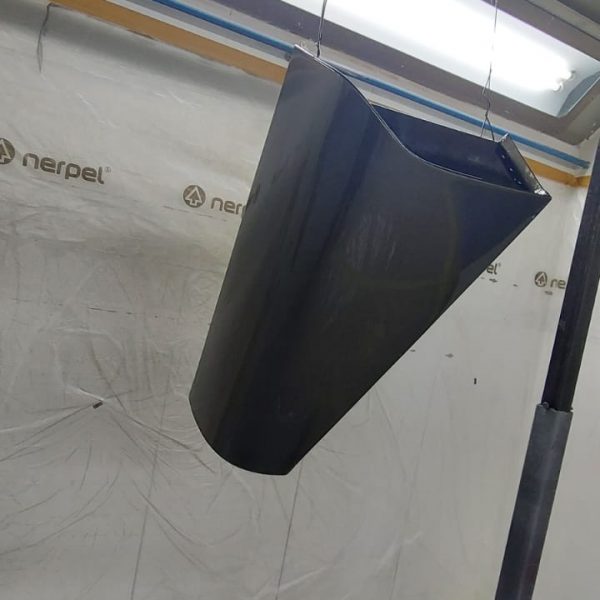

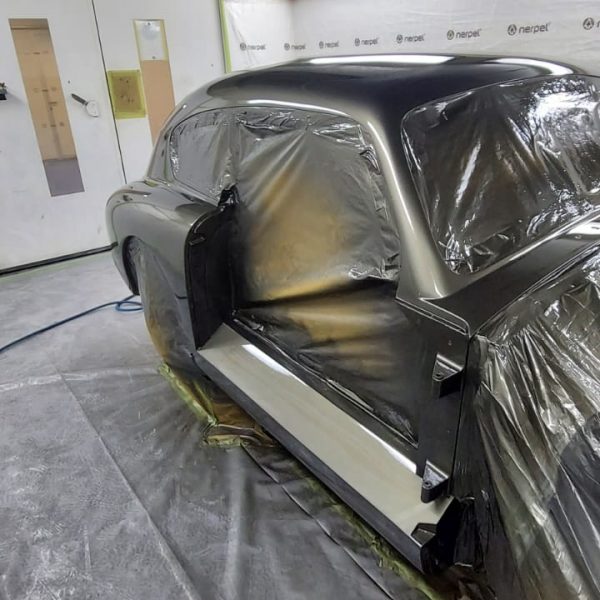

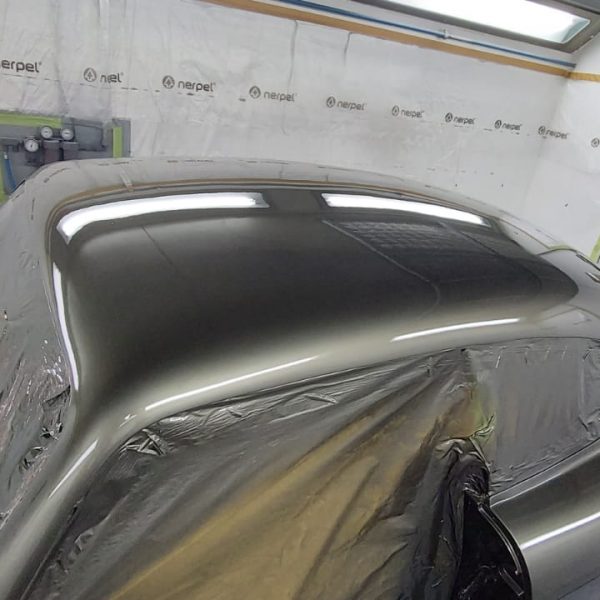

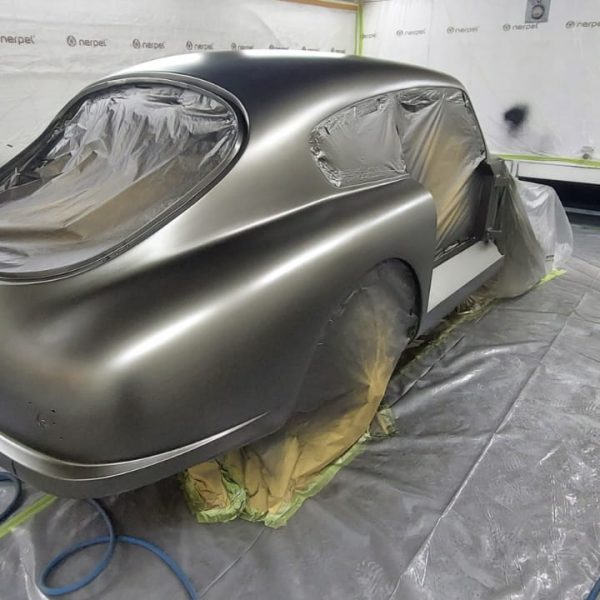

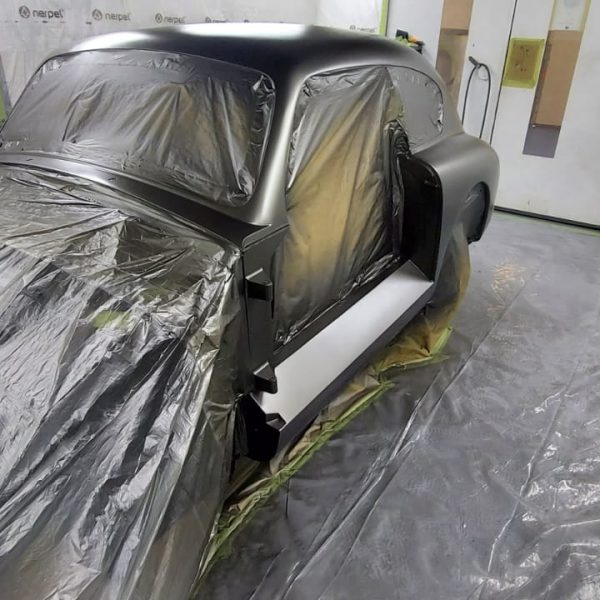
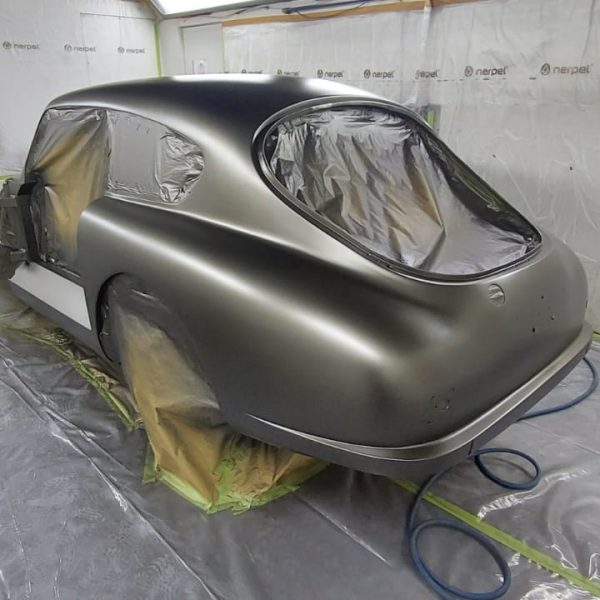

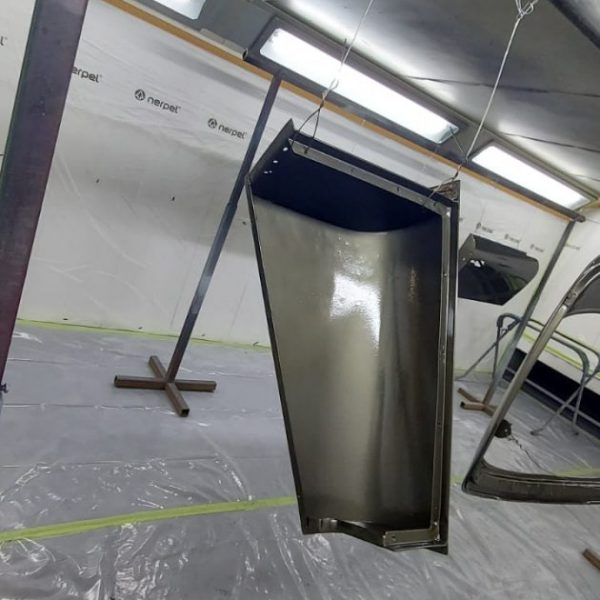
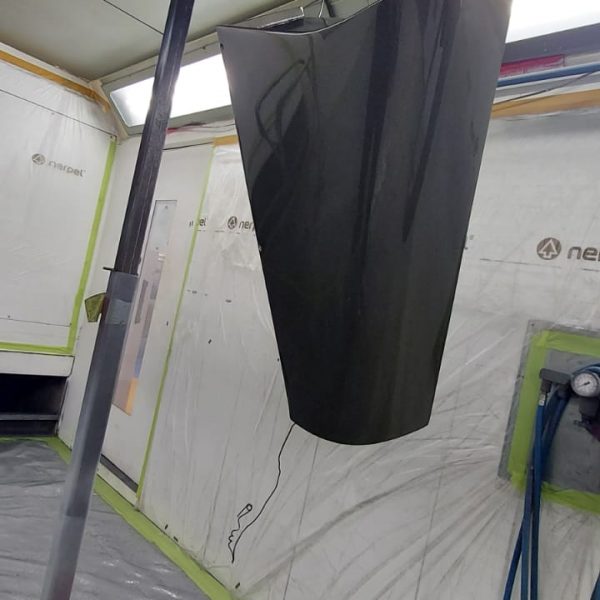
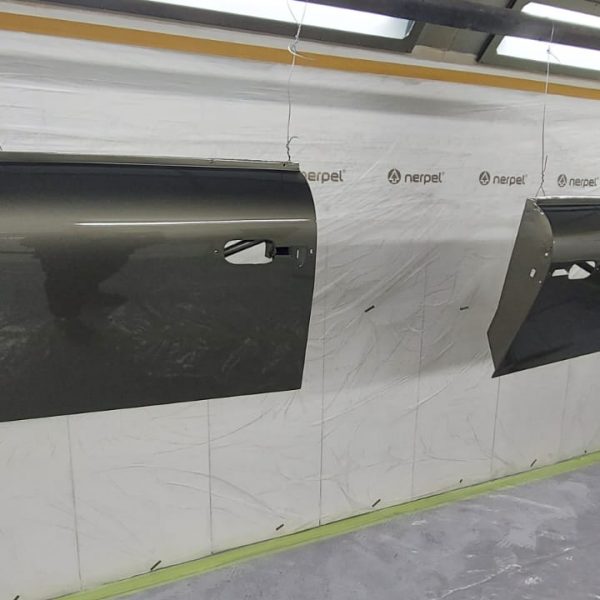


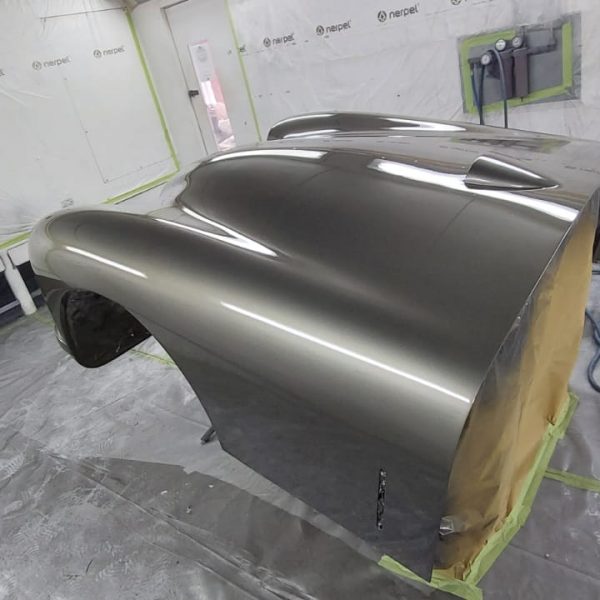

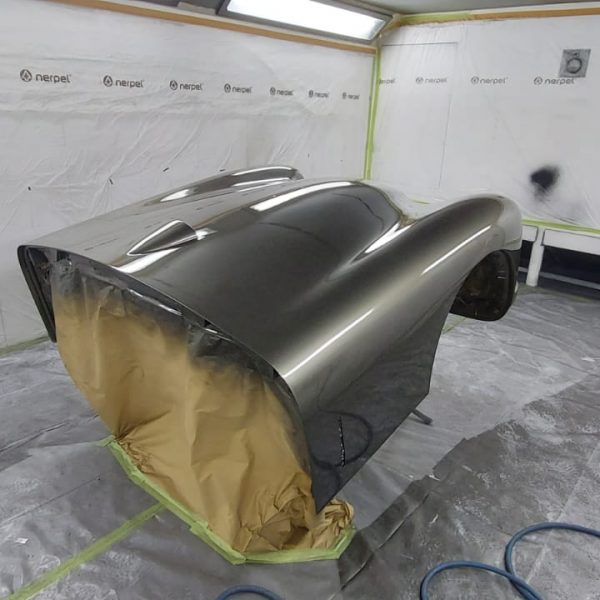
The 1955 Aston Martin DB2/4 MkI has been in the Bridge Classic Cars in-house paint booth for a key part of its restoration. The classic Aston Martin has now been painted in its final colour!
The team have spent hours preparing the beautiful 1950s GT for this stage of the work to make sure every surface, panel and piece of the car is in perfect shape. Once the team had built up the colour layer by layer, it was then left in our oven to cure completely before it will be moved into our preparation bay to begin colour-sanding.
This is a huge step in the project and we’re excited to show you the next stages of the paintwork on the 1955 Aston Martin DB2/4 MkI.

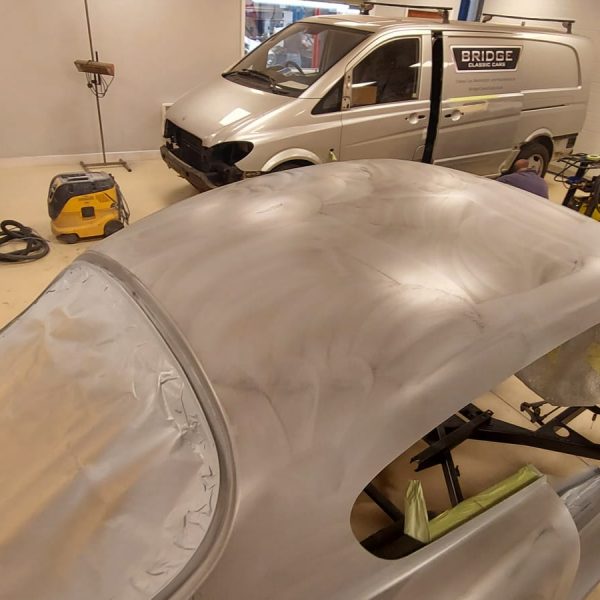
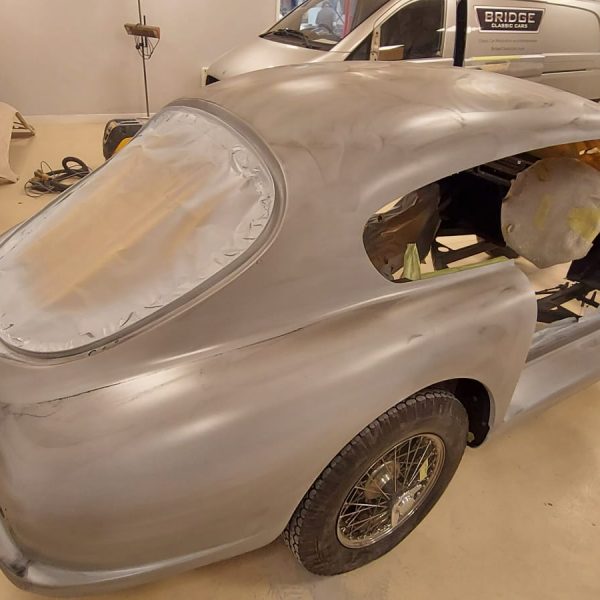

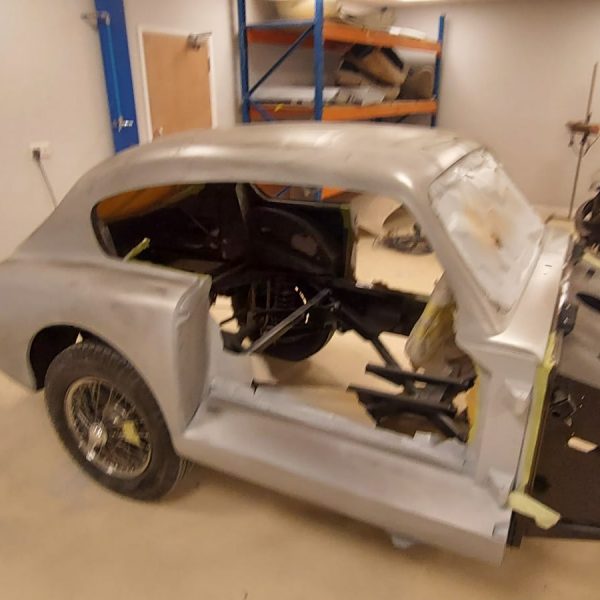
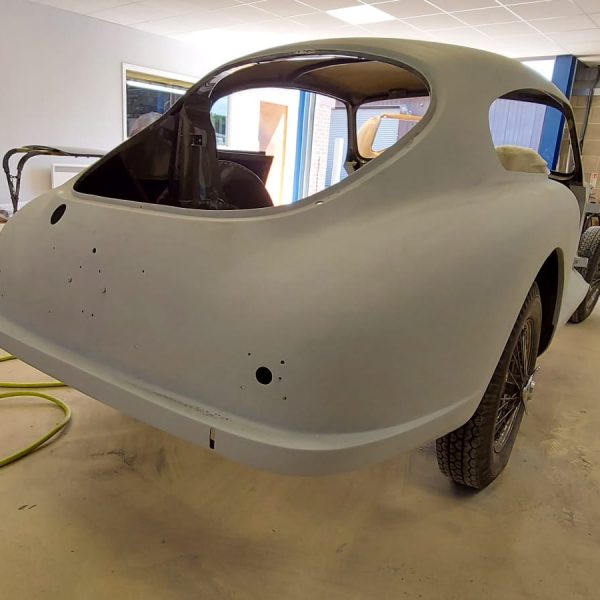

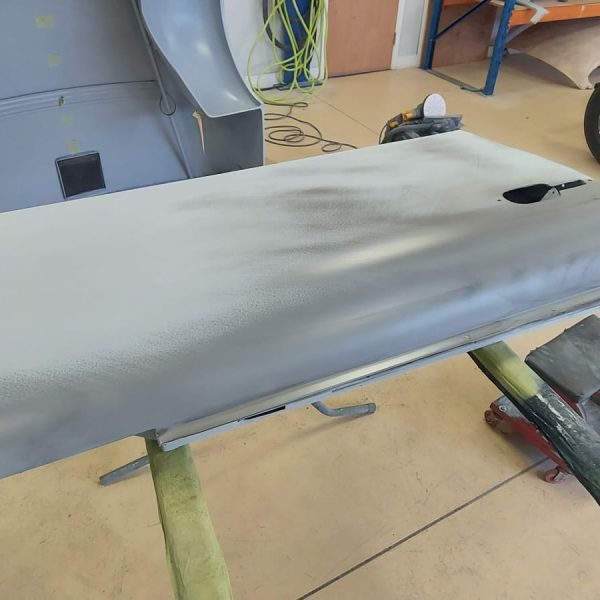
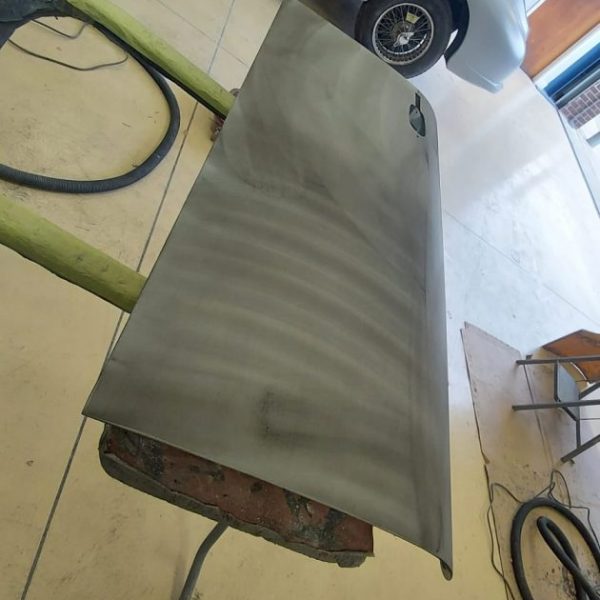

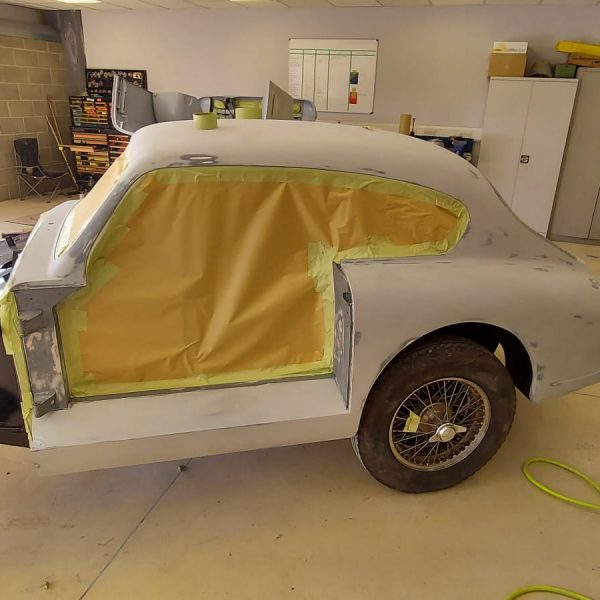
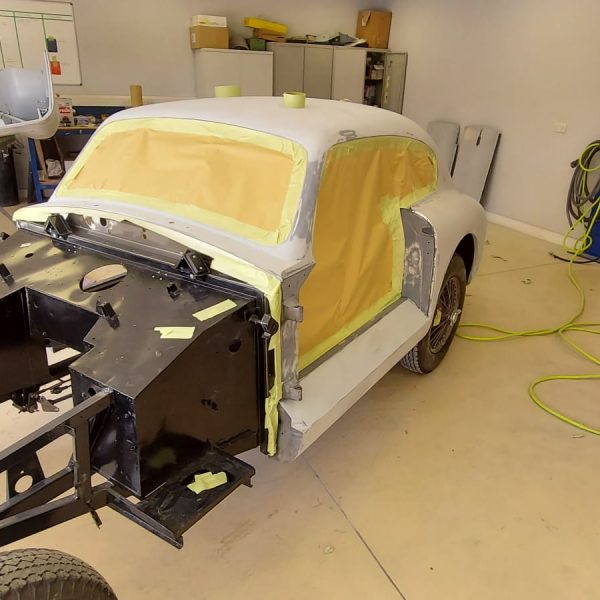
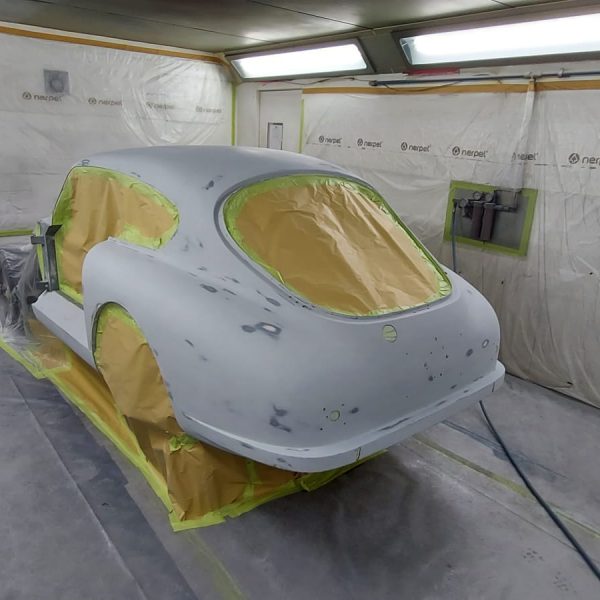
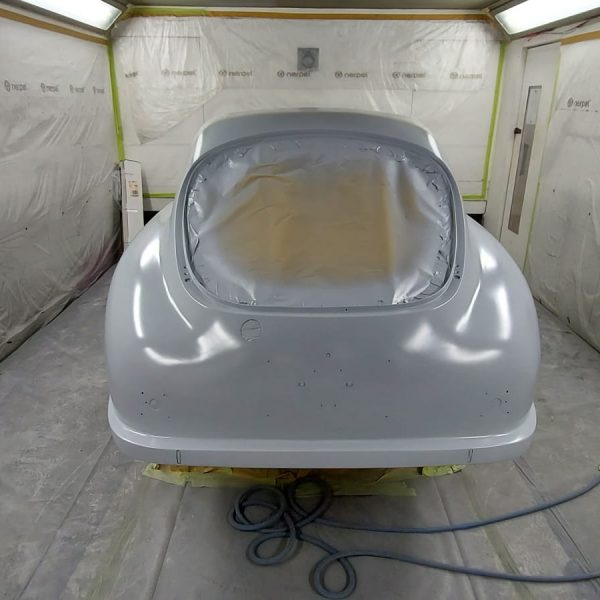
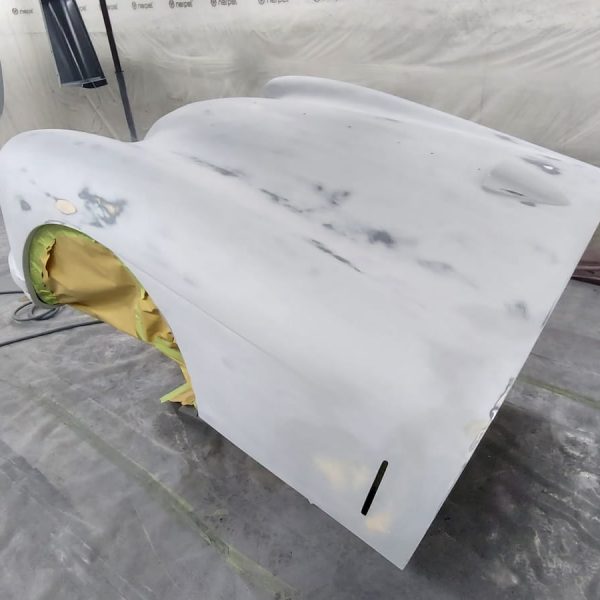
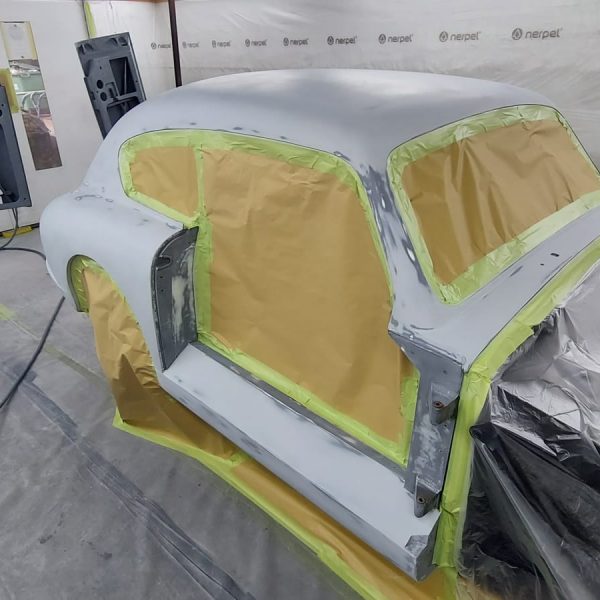
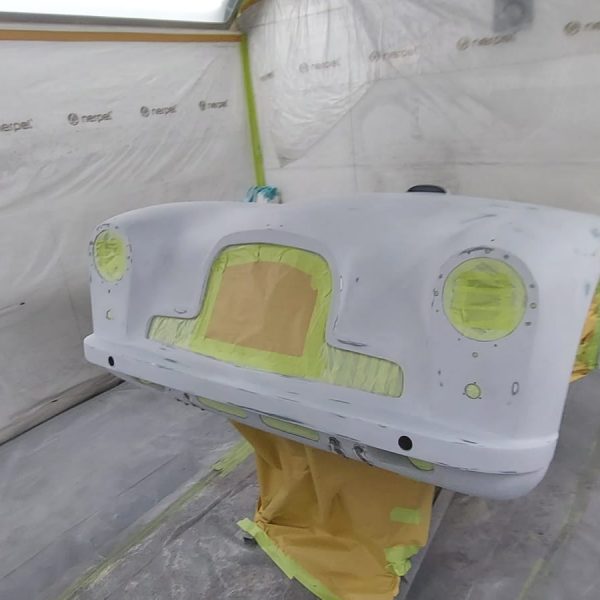

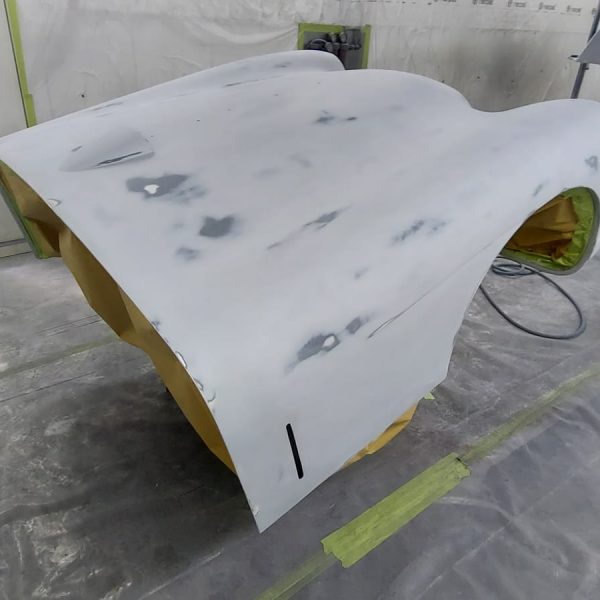
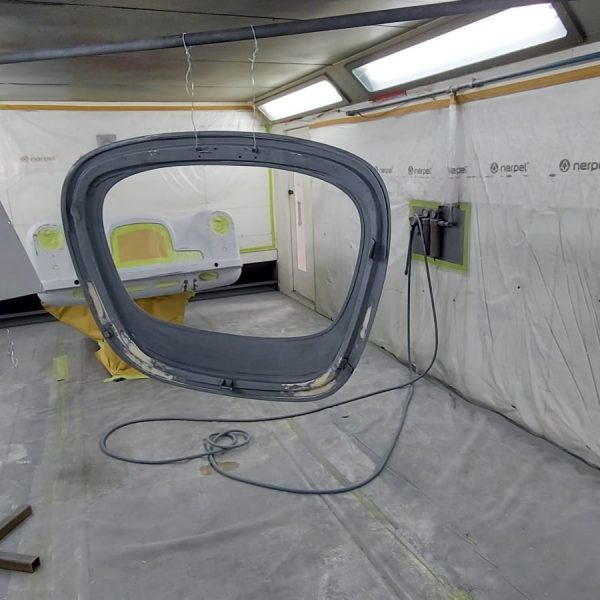
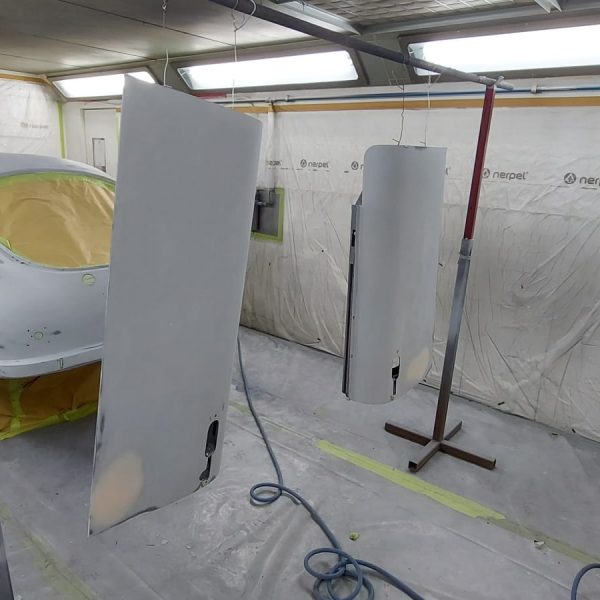
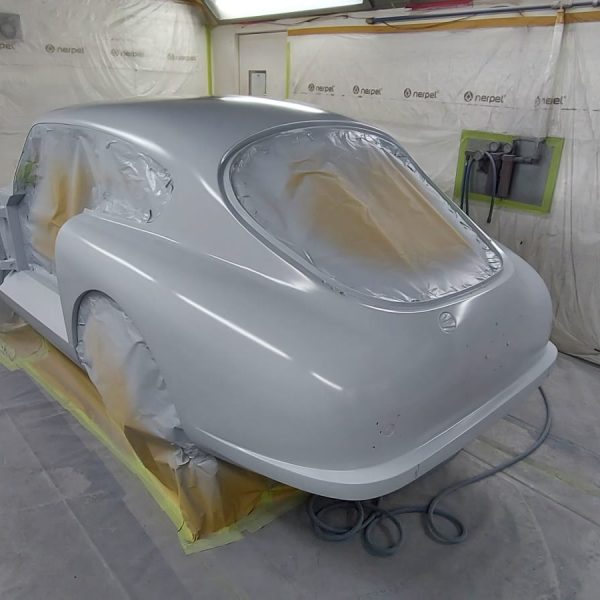
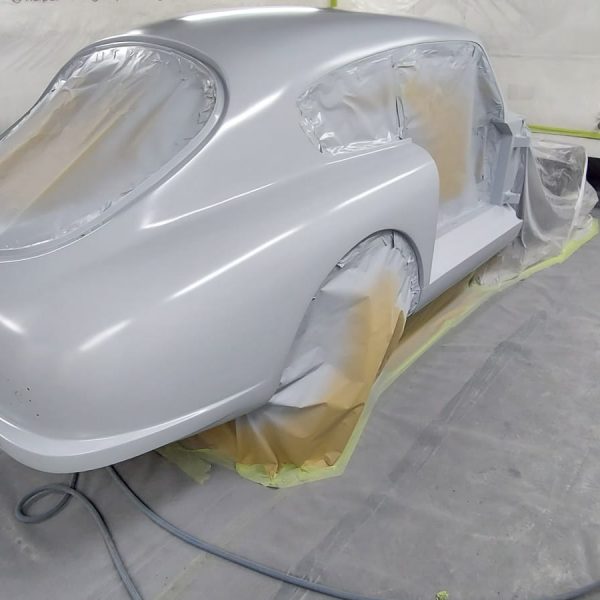

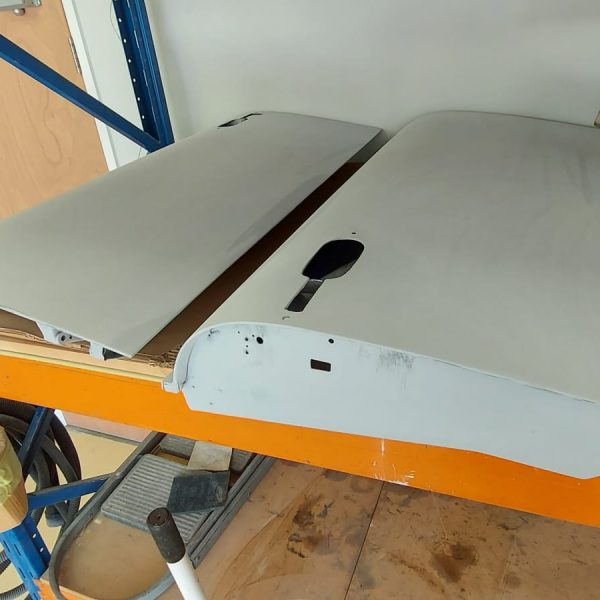

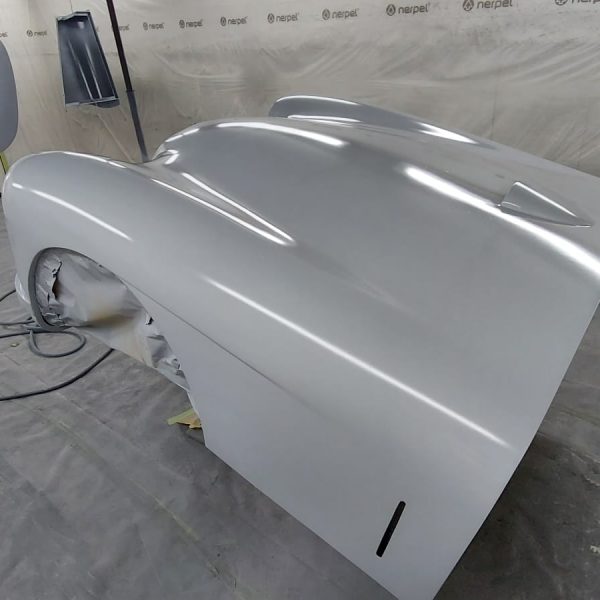
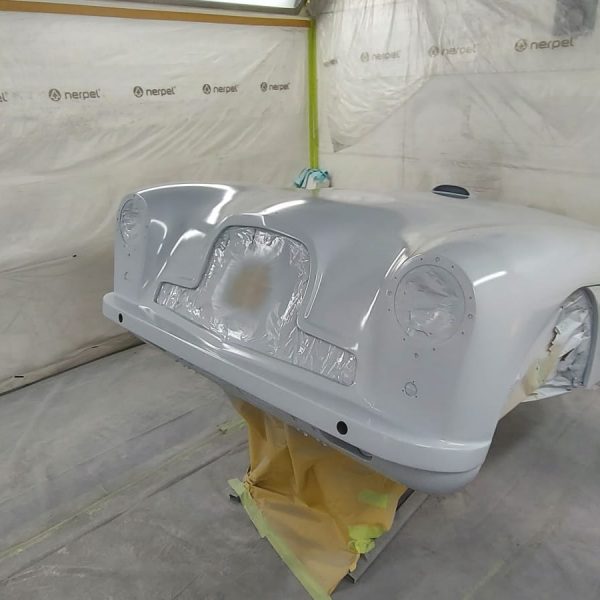
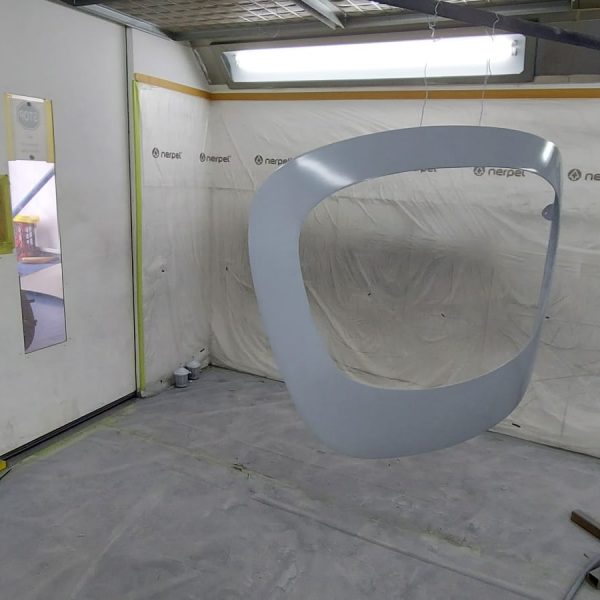
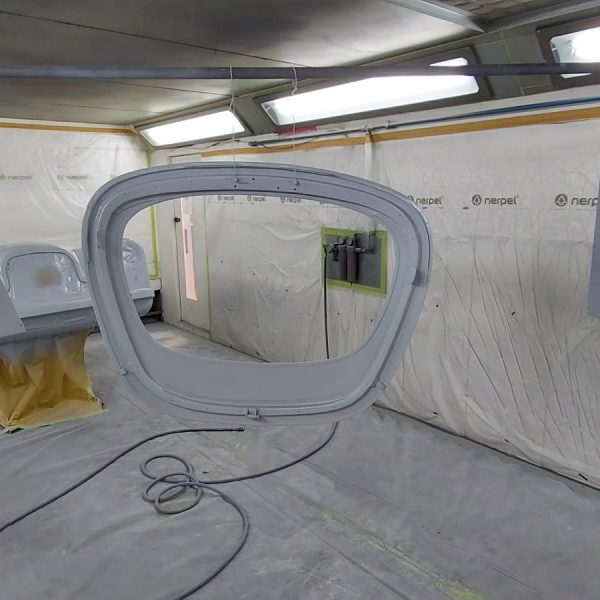
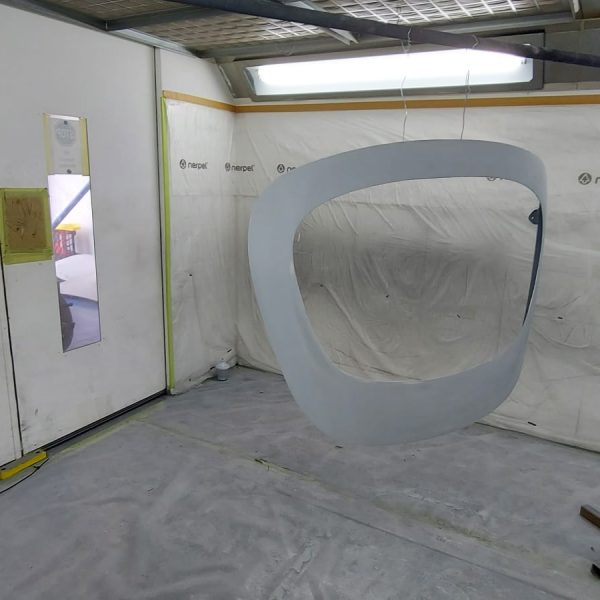
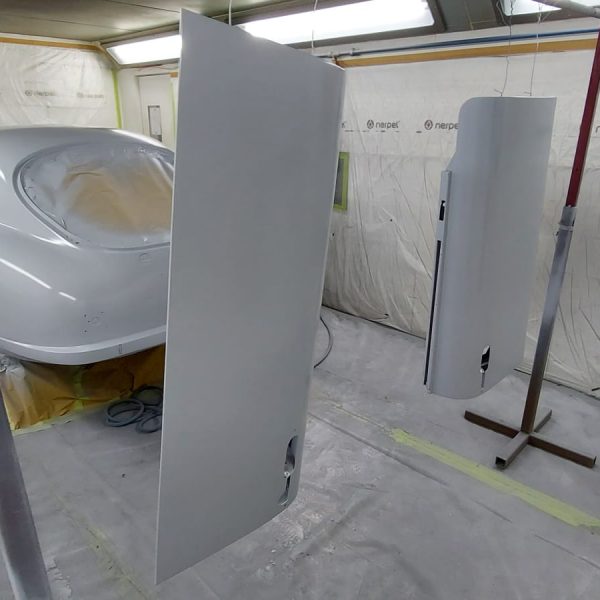
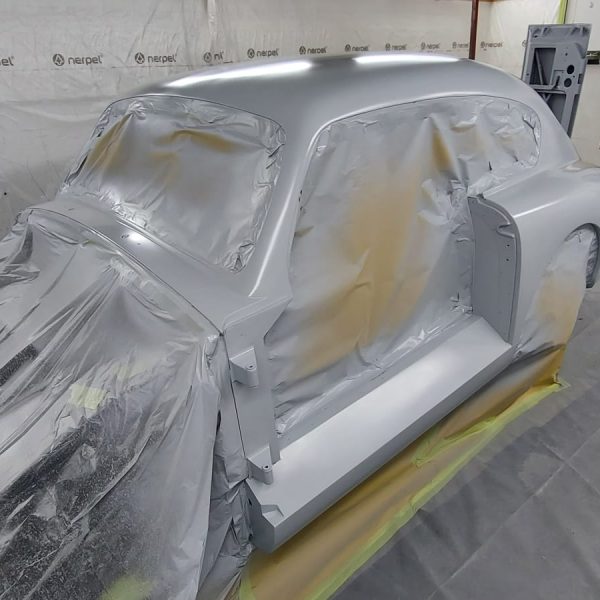
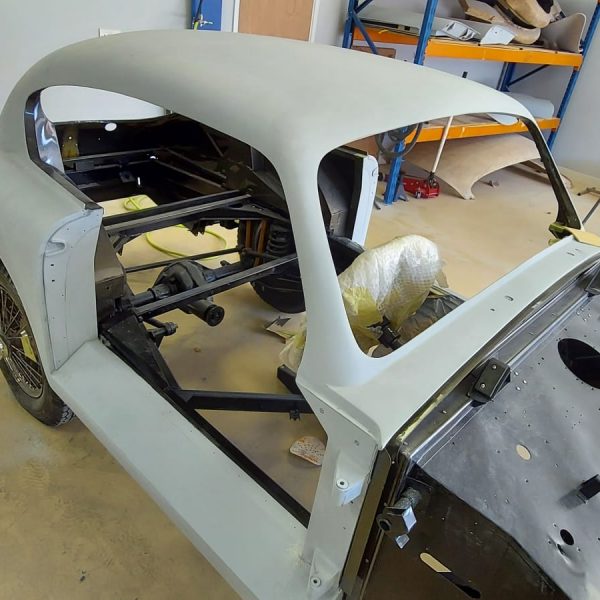
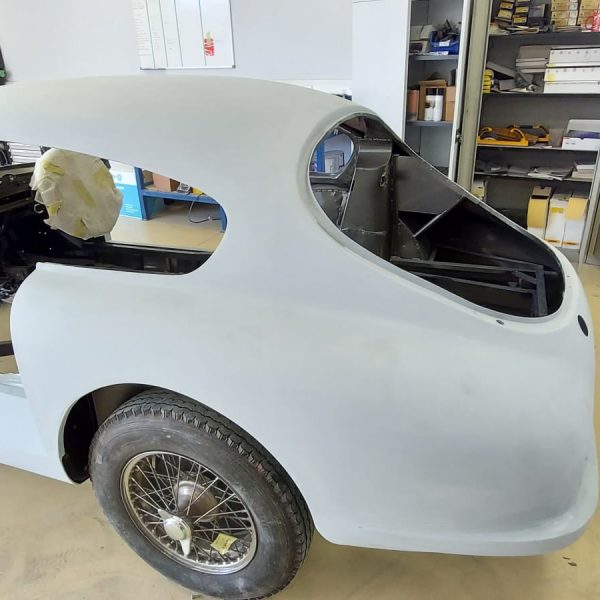

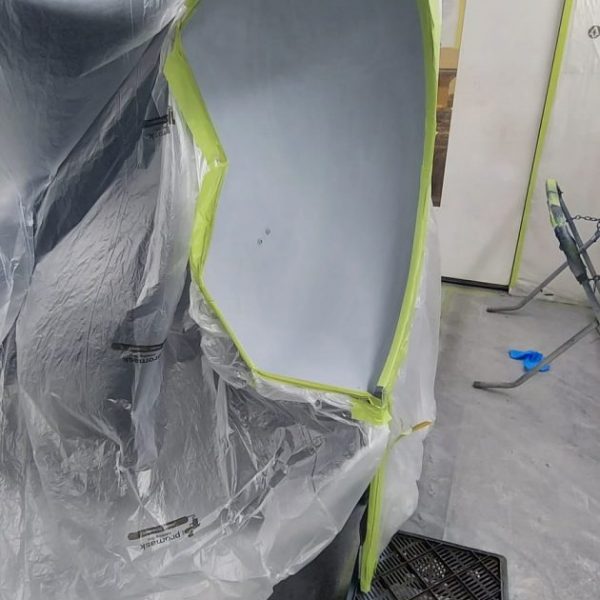
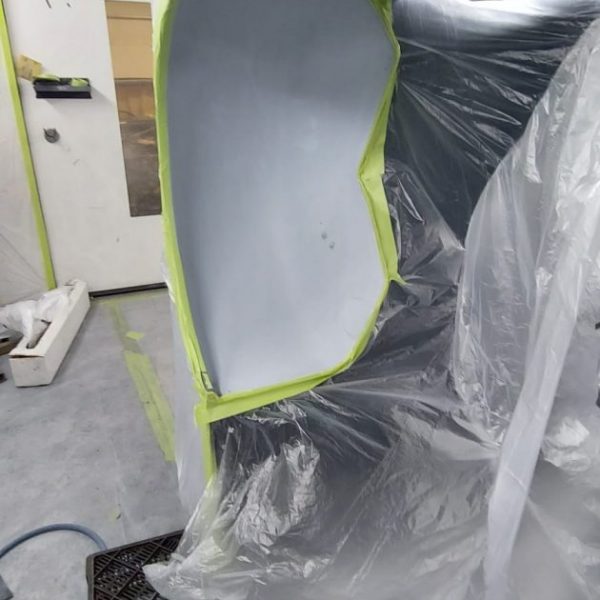
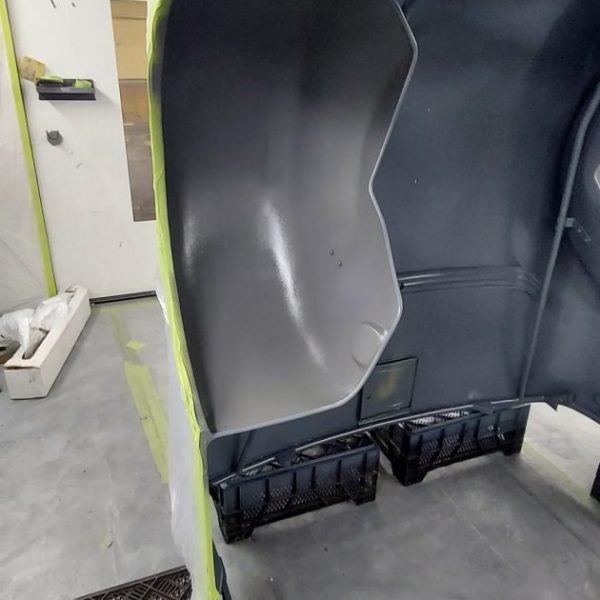
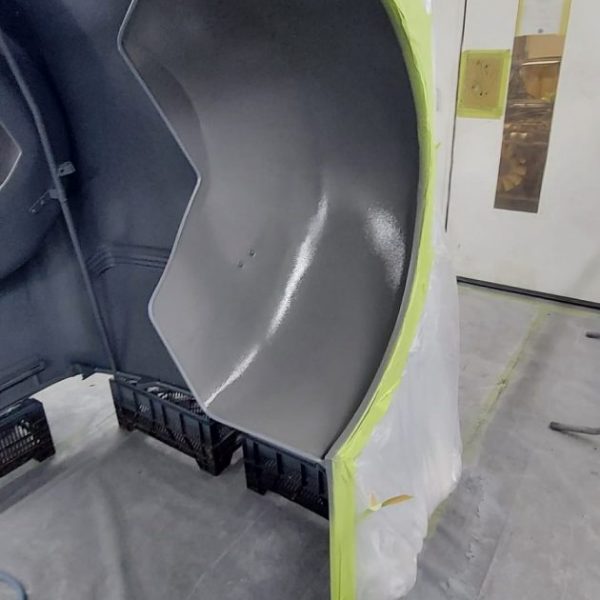

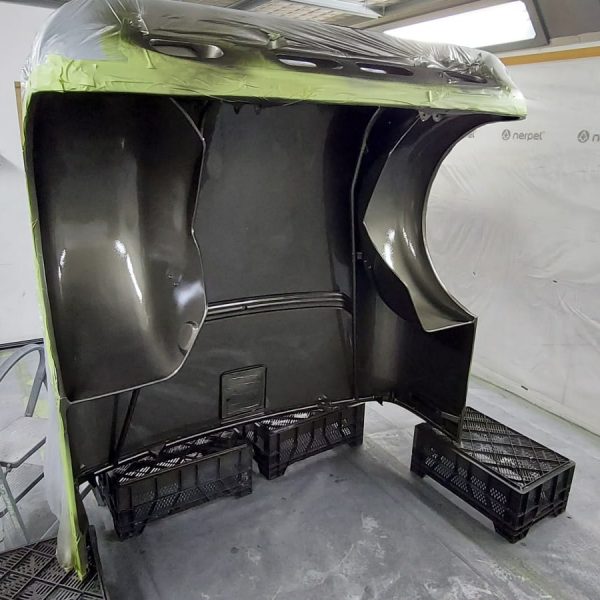
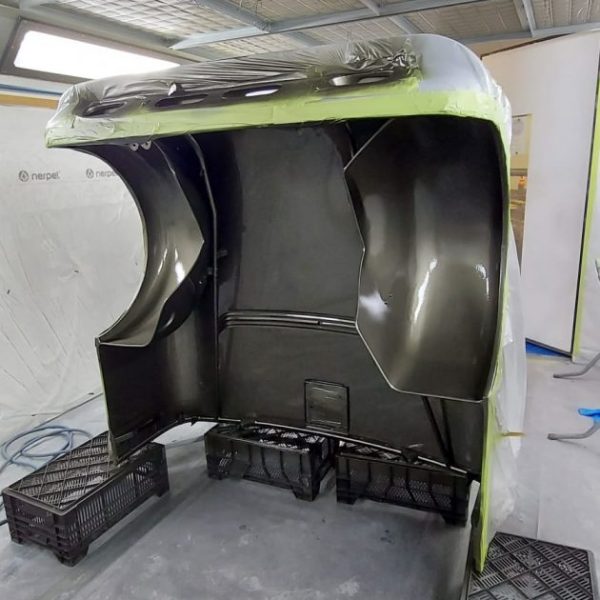
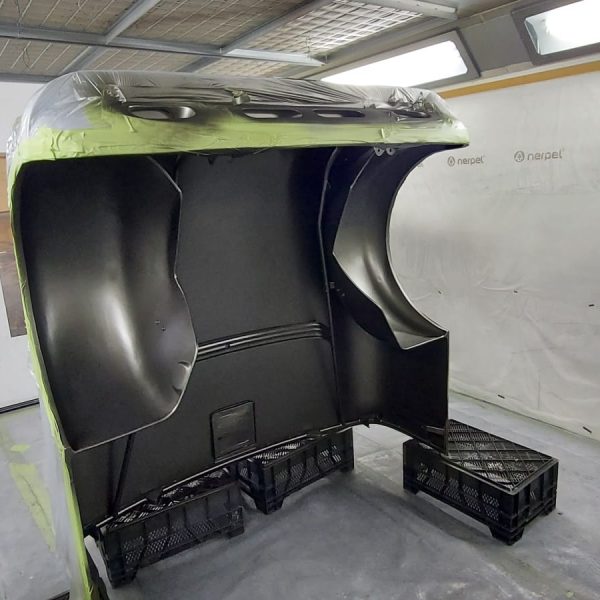
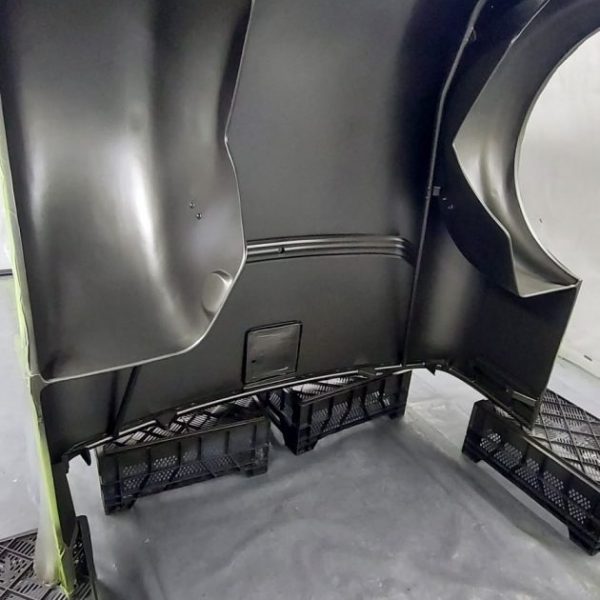
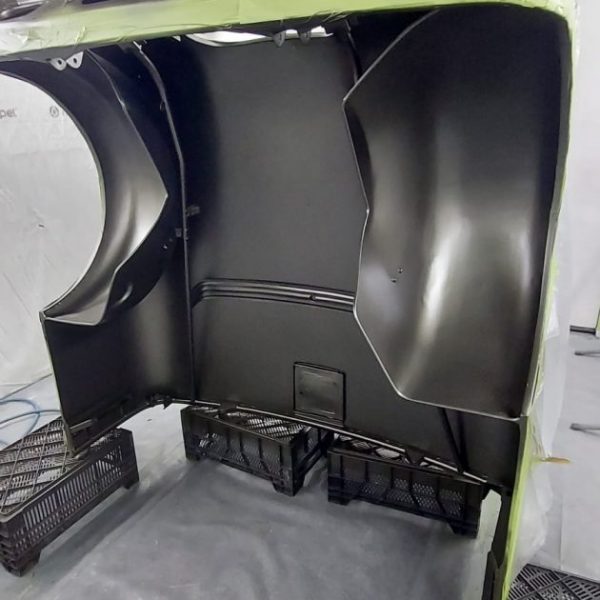
The paint and body team at Bridge Classic Cars have got the 1955 Aston Martin DB2/4 MkI into the in-house paint booth for some of the final stages before colour begins.
The team sanded down the body and bonnet for the final time before it was prepared and pushed into the paint booth. There, the team laid down the final coat of primer onto the car before the colour is laid down onto the panels of the classic Aston Martin.
After the primer had settled and cured, the team brought the bonnet of the DB2/4 back into the paint booth to prepare and begin work on the underside. The team reprimed the underside before applying the hardwearing and durable Raptorguard to the bonnet of the DB2/4.
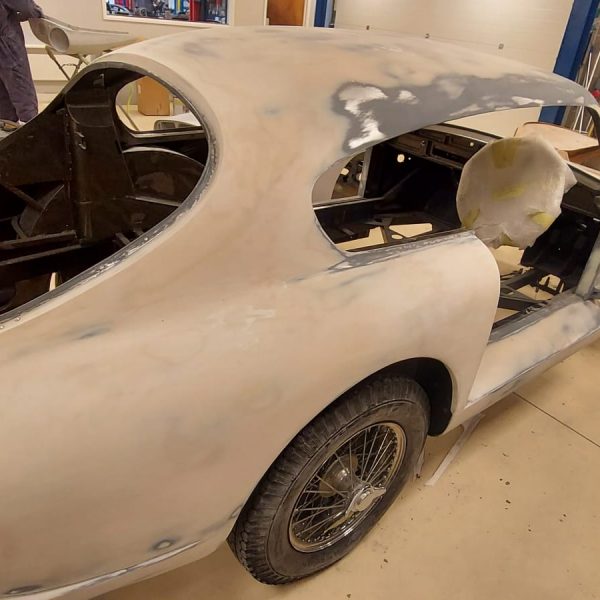
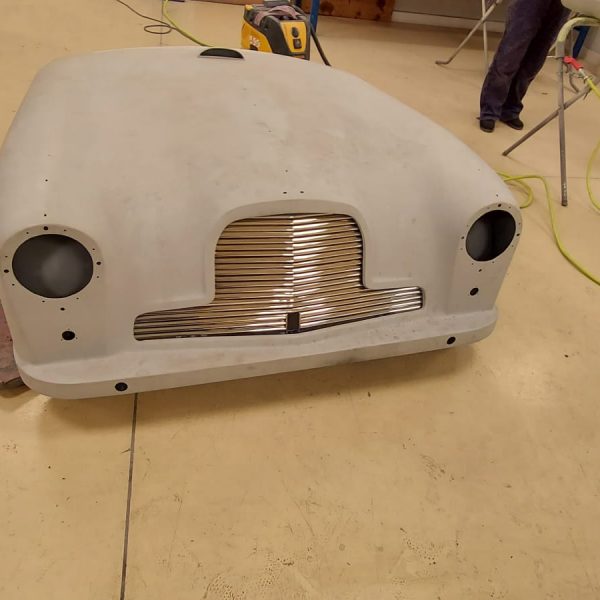

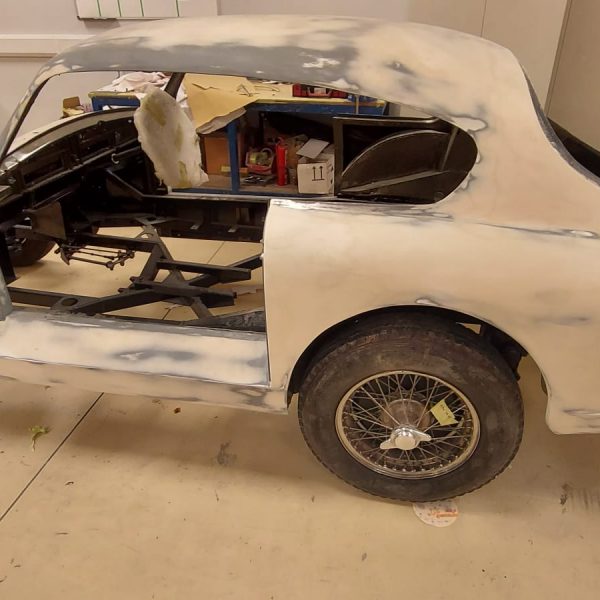


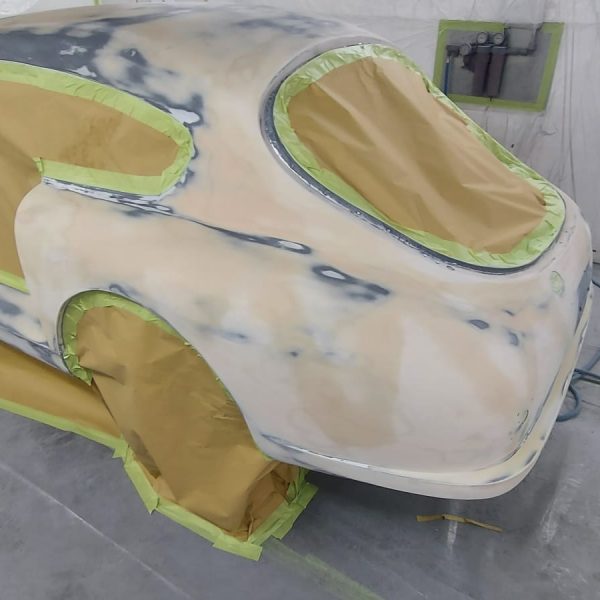

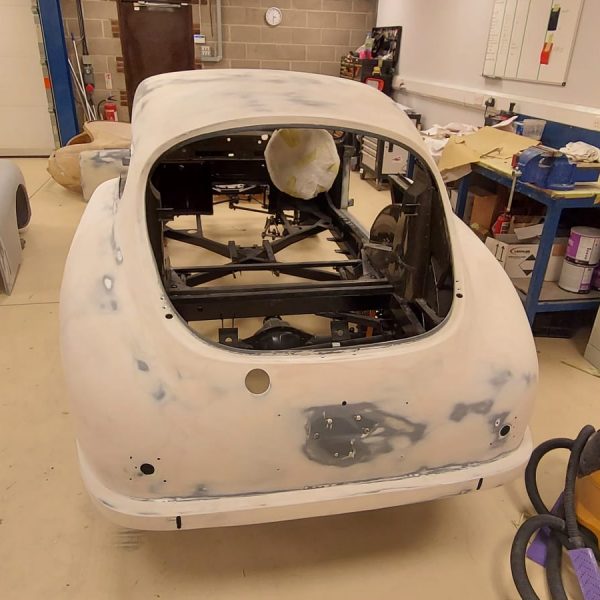
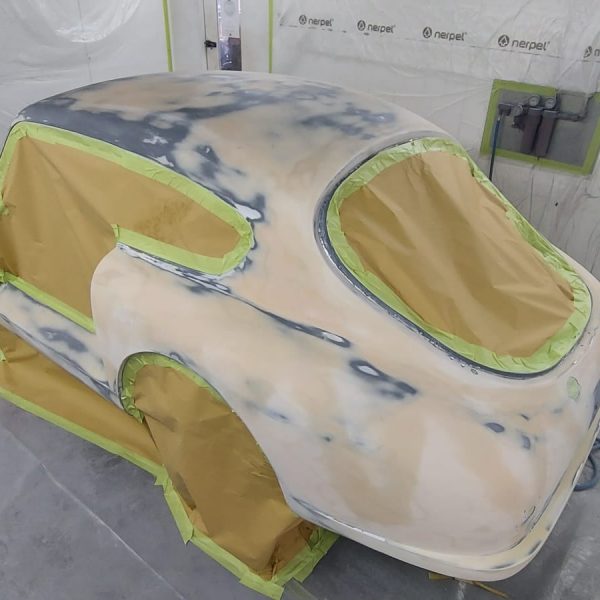
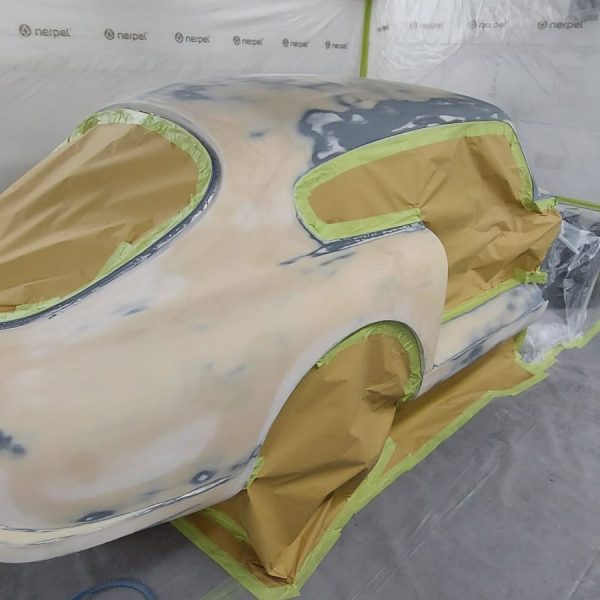



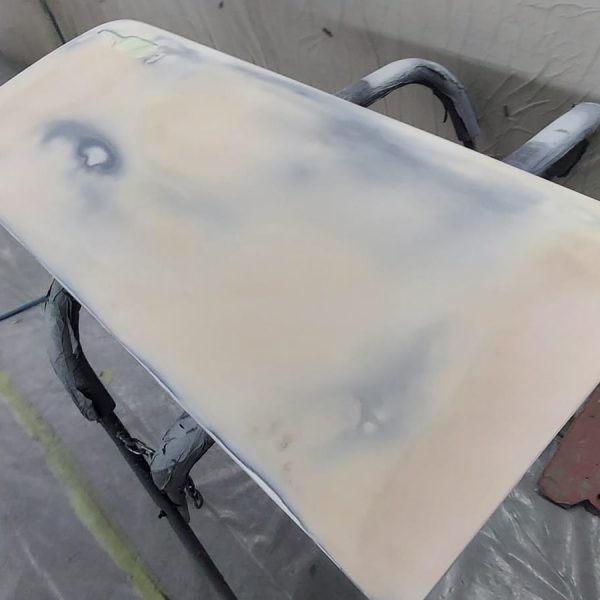
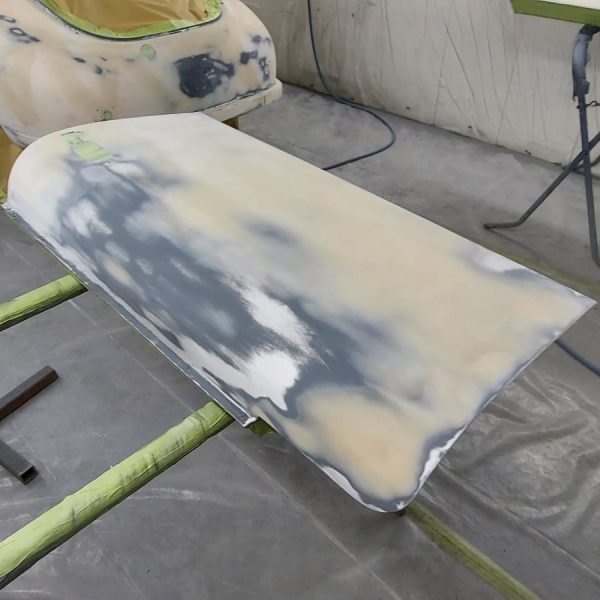
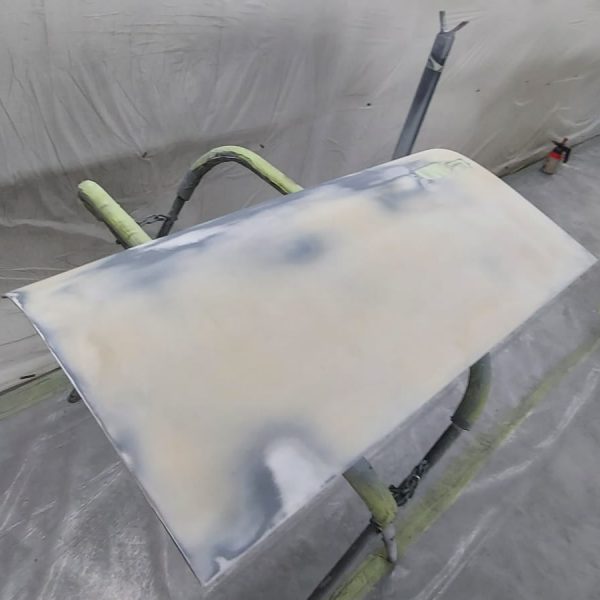
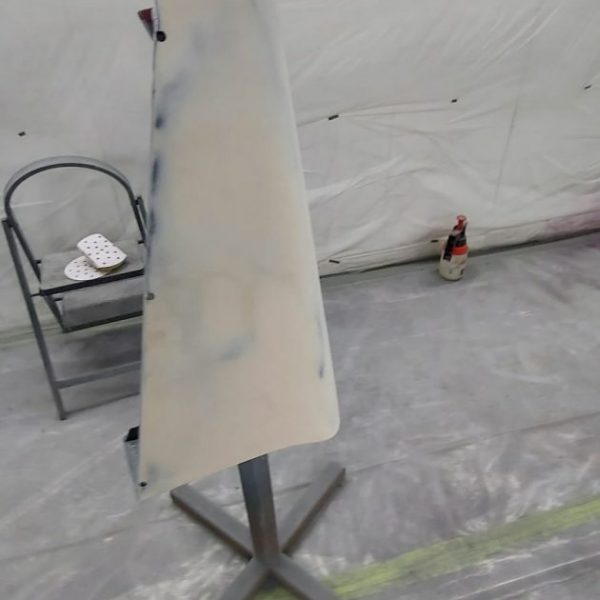
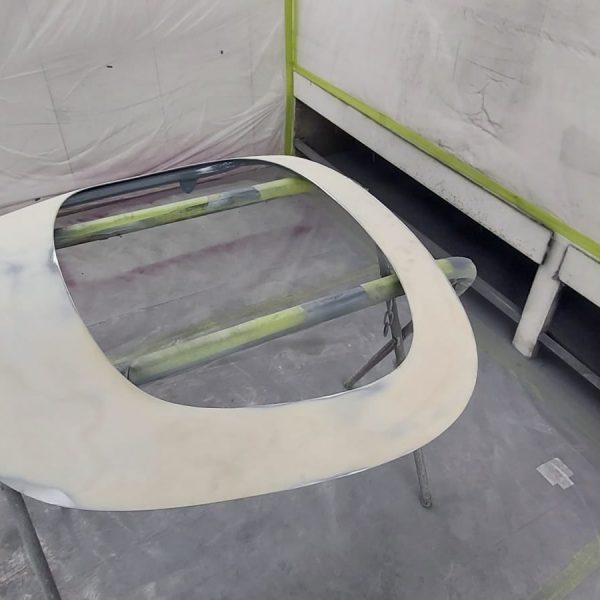

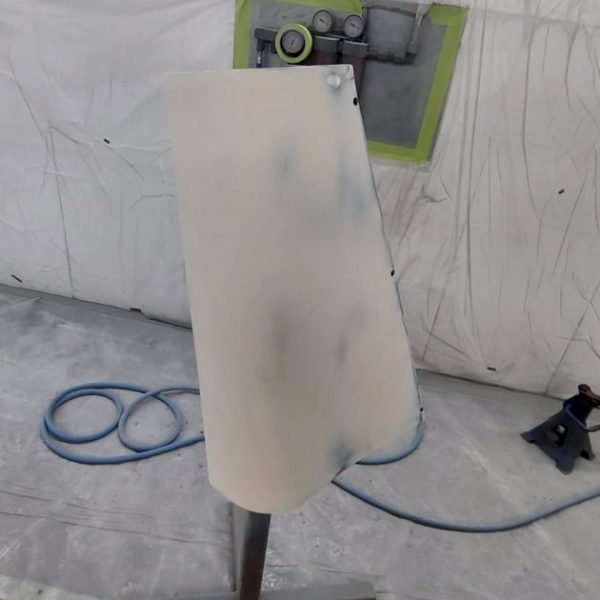


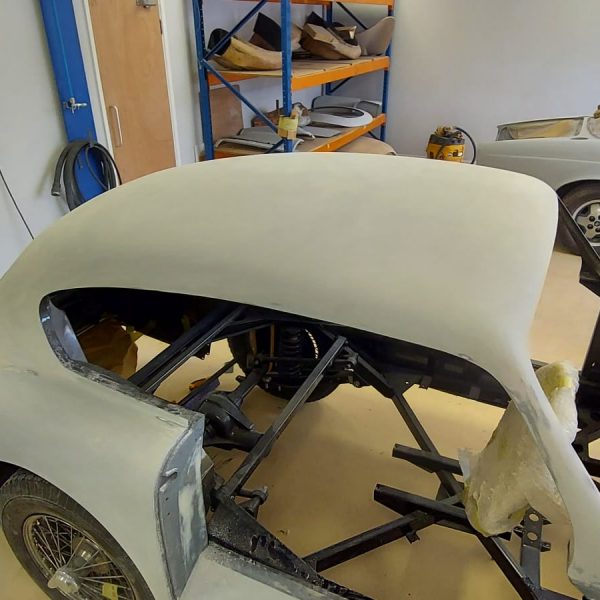


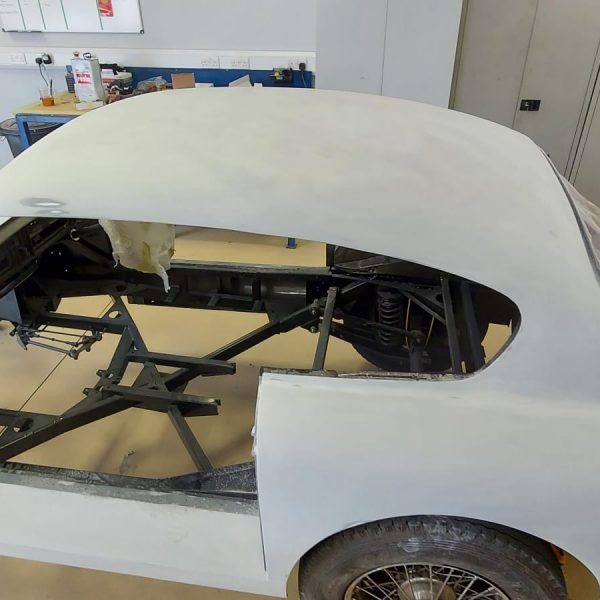
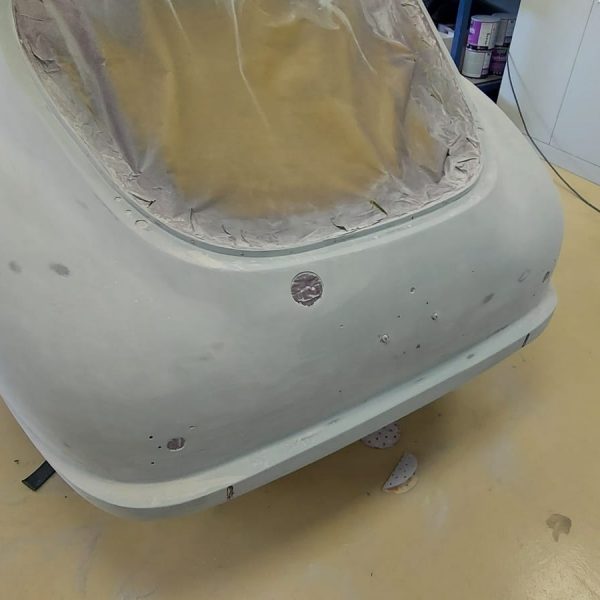
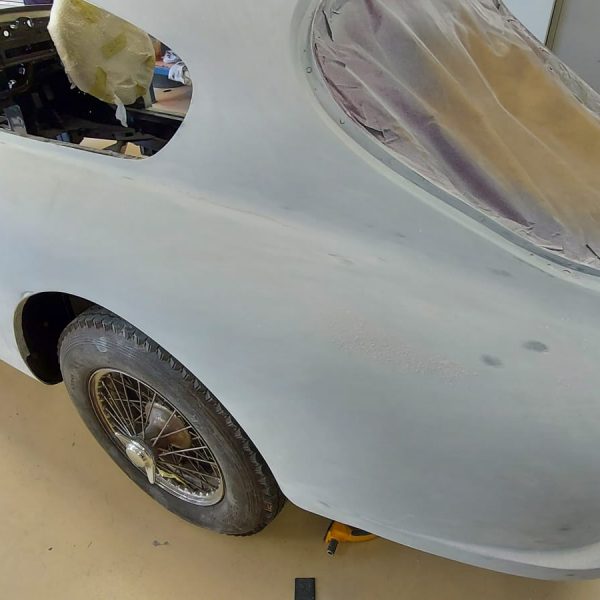
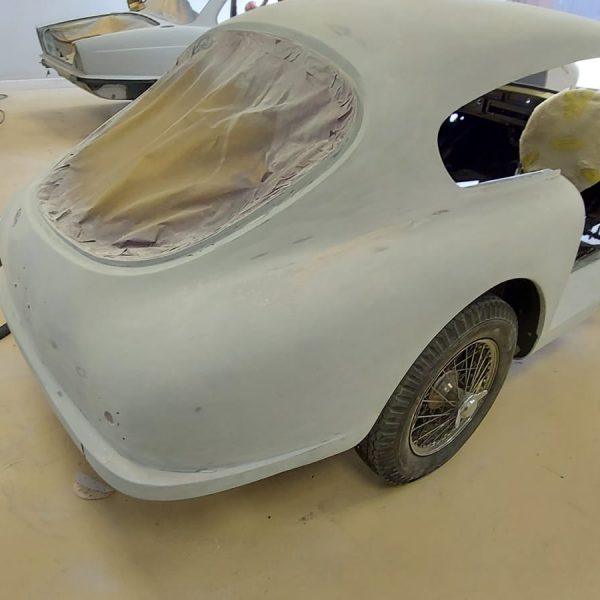

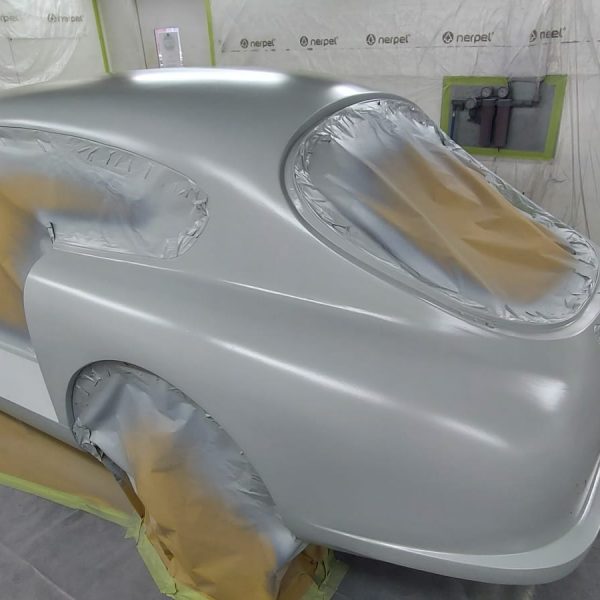
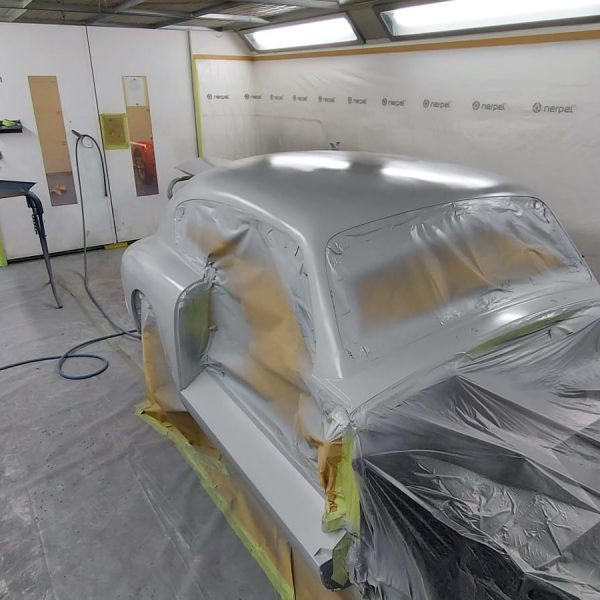


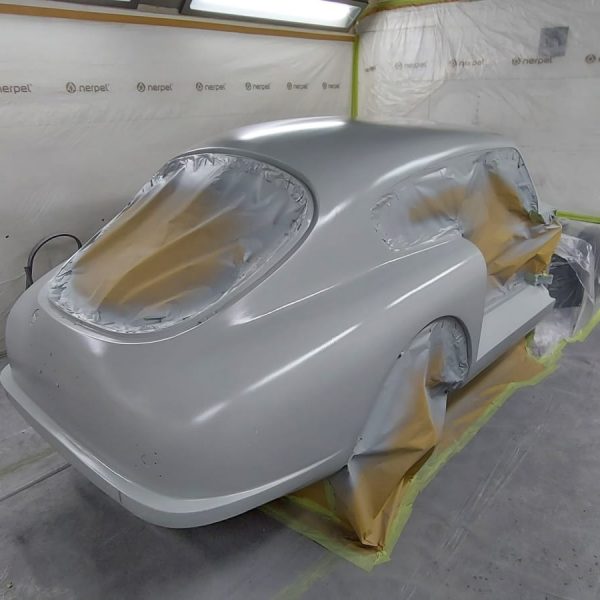


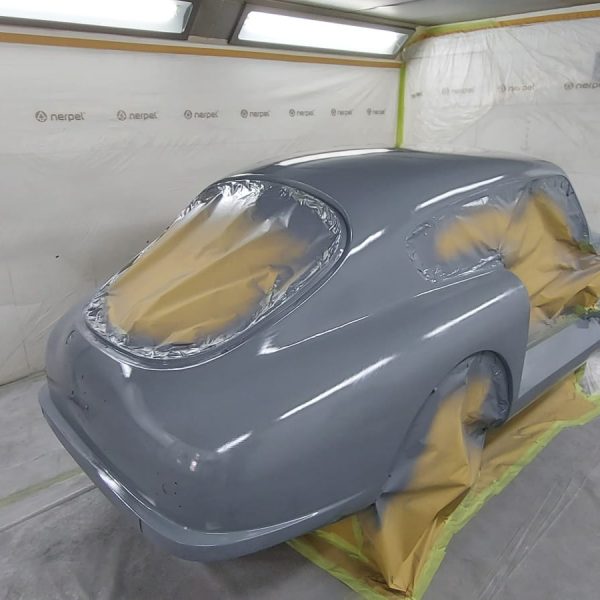


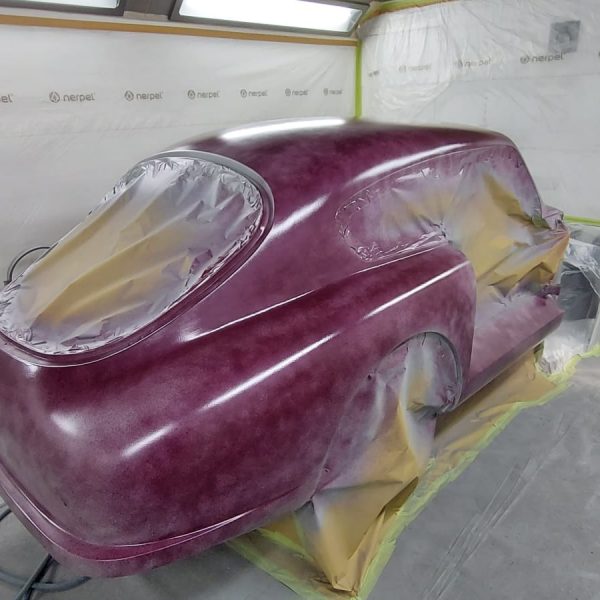

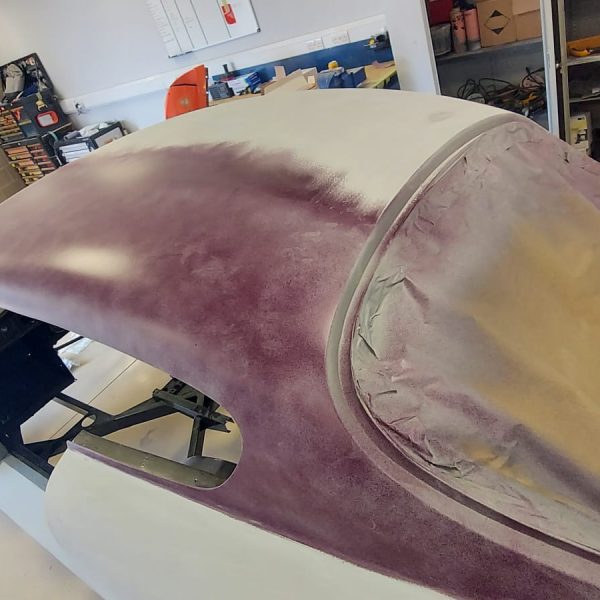
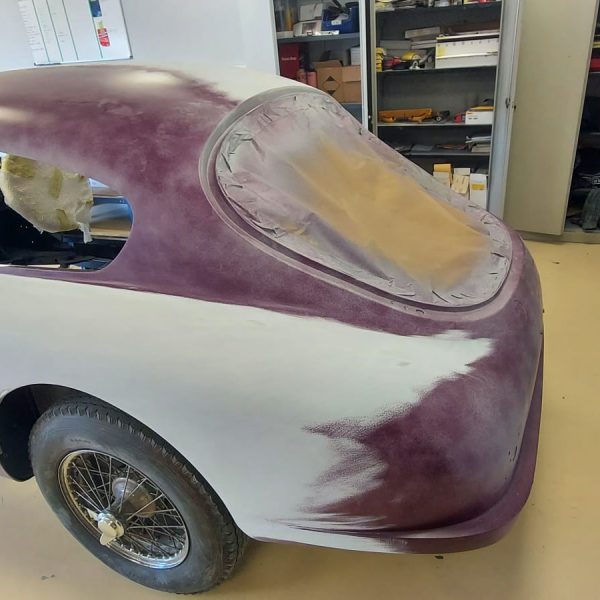
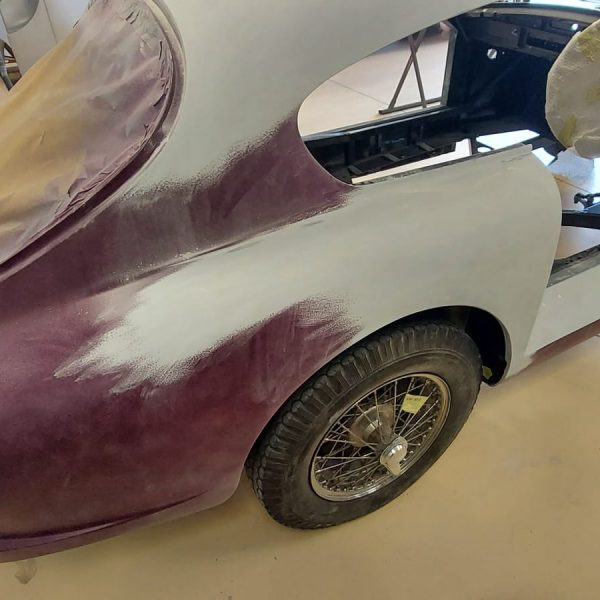

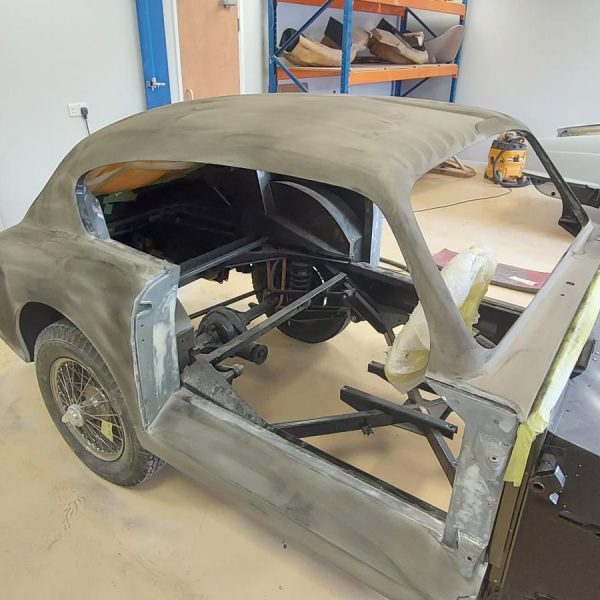
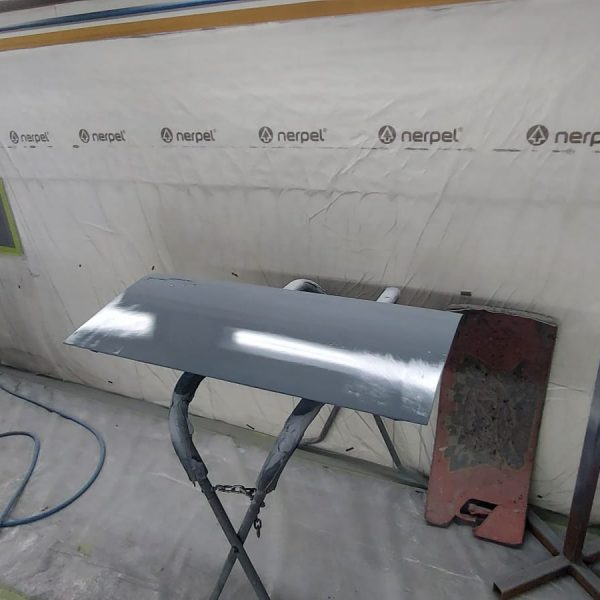
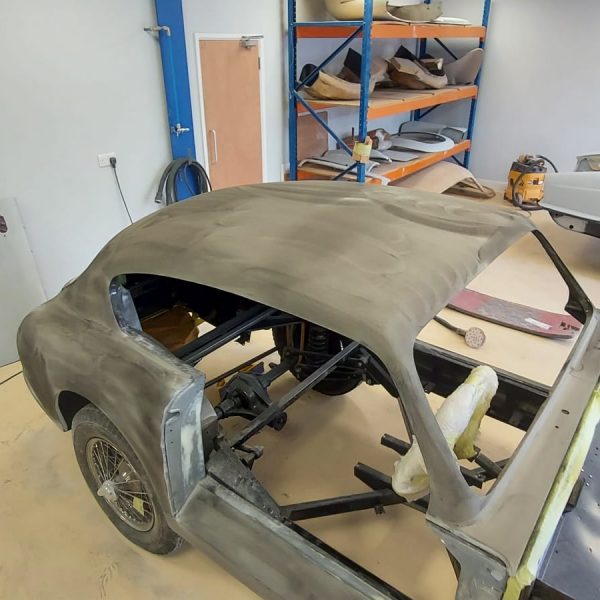
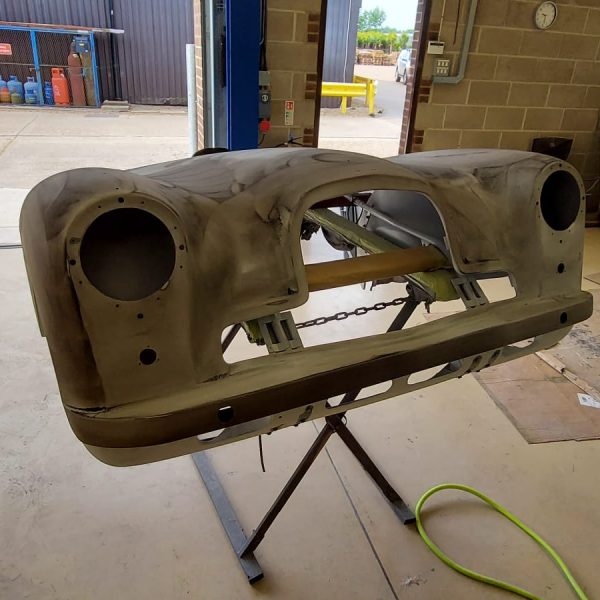
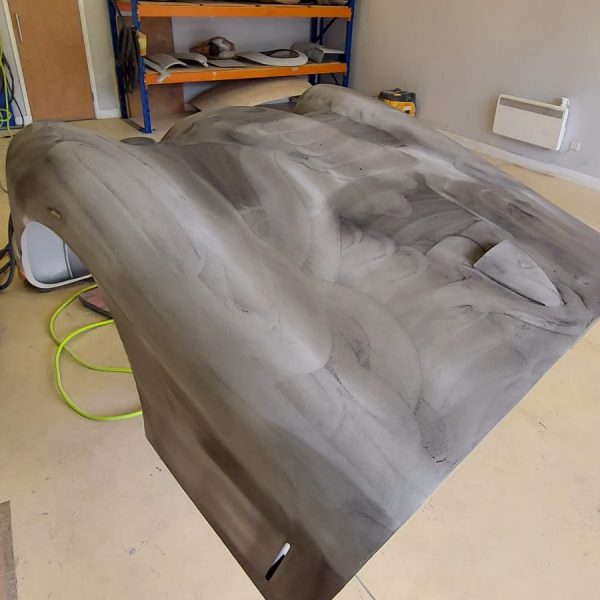
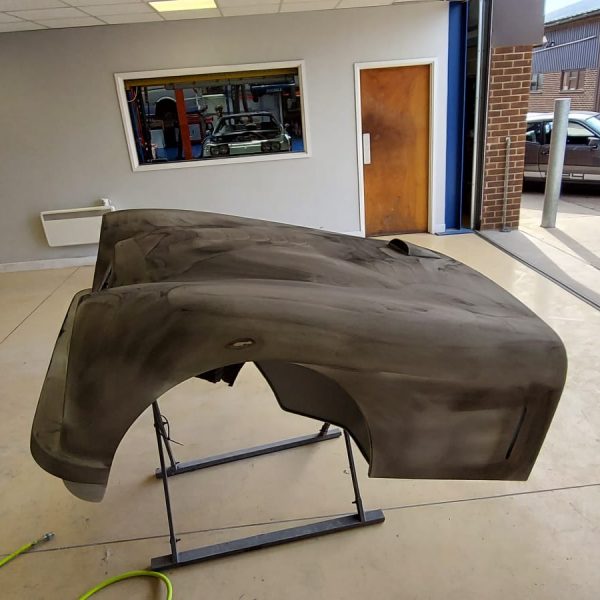
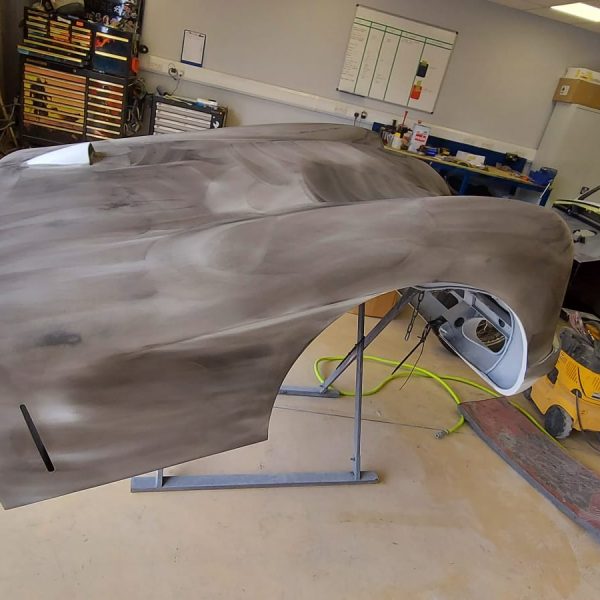
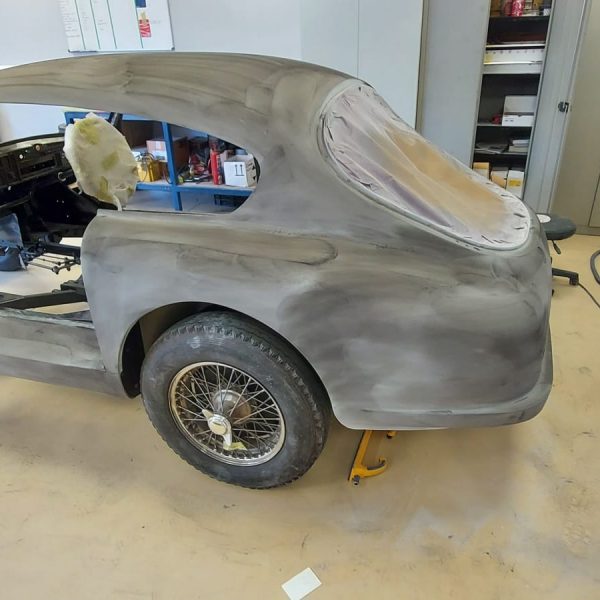
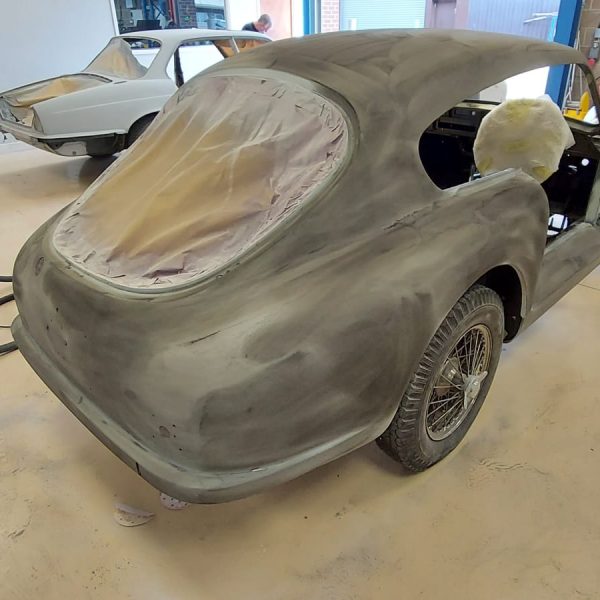
The paint and body team have worked on getting the body and bonnet of the 1955 Aston Martin DB2/4 Mk1 as close to perfect as possible in the build-up of the car going into paint.
The car is being completely restored by the Bridge Classic Cars in-house restoration teams. The paint and body team have worked on several rounds of primer and minimal filler work in order to get the rare Aston Martin into the best condition aesthetically.
The process involves priming, sanding, filler work, more sanding and then back in for primer again to build low areas of the panelwork which sit on top of the delicate framework beneath the Aston Martin.
With this process done, the team can continue on the process of getting the car ready for paint.
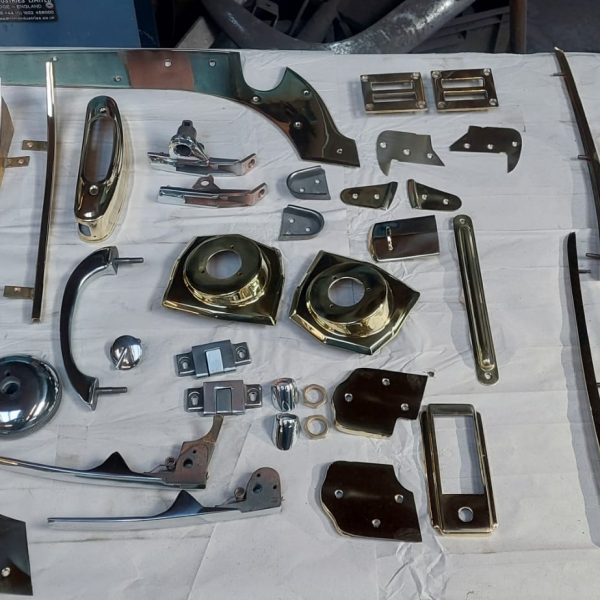
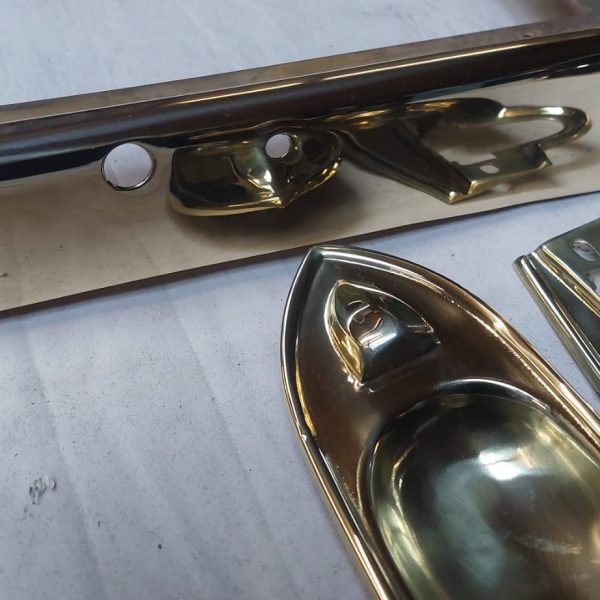
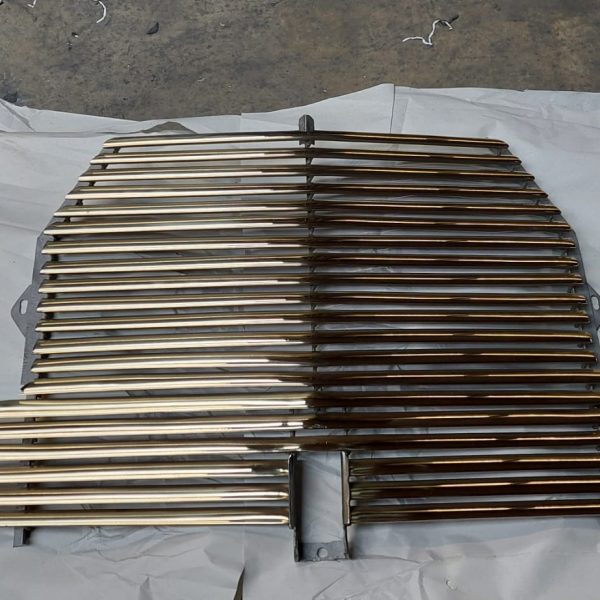



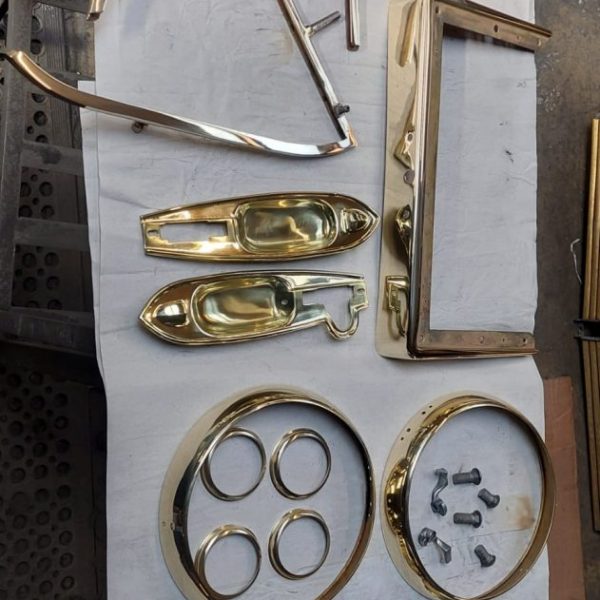
The trim pieces and parts for the 1955 Aston Martin DB2/4 Mk1 have been replaced as part of the classic sports cars restoration by Bridge Classic Cars.
Each piece has been carefully inspected and any repairs performed on them before being cleaned and then going through the process of being re-plated to make sure they’re at the same standard and finish as the rest of the car done by our restoration workshop.
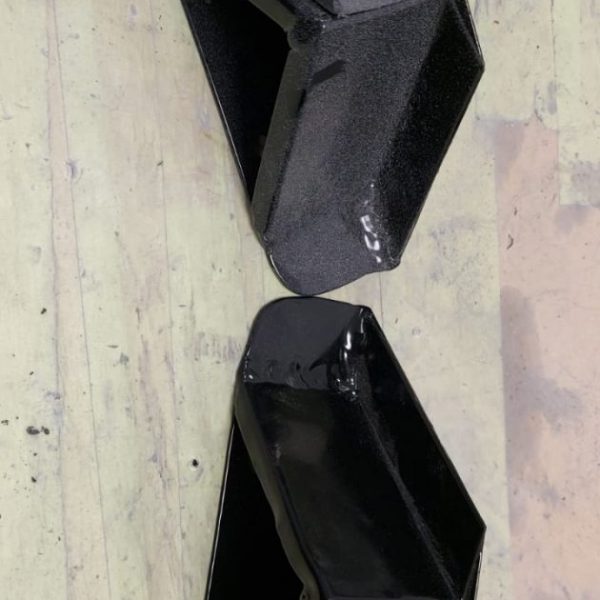
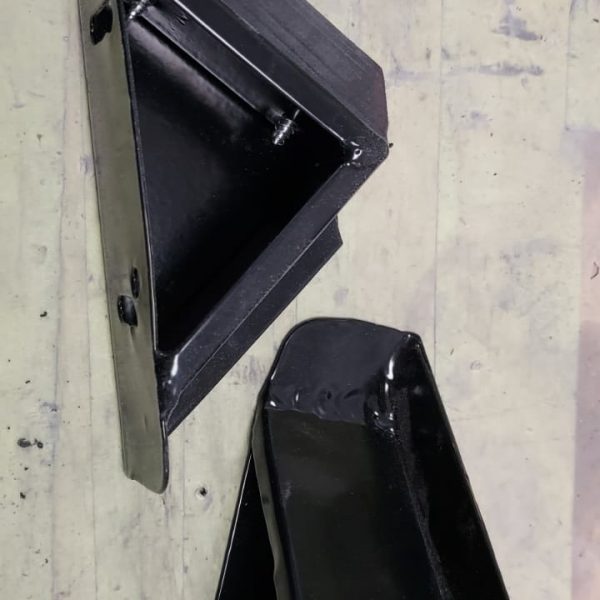
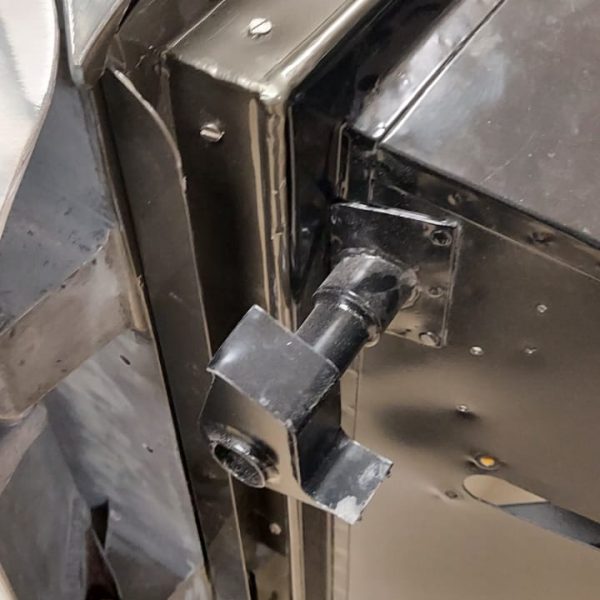
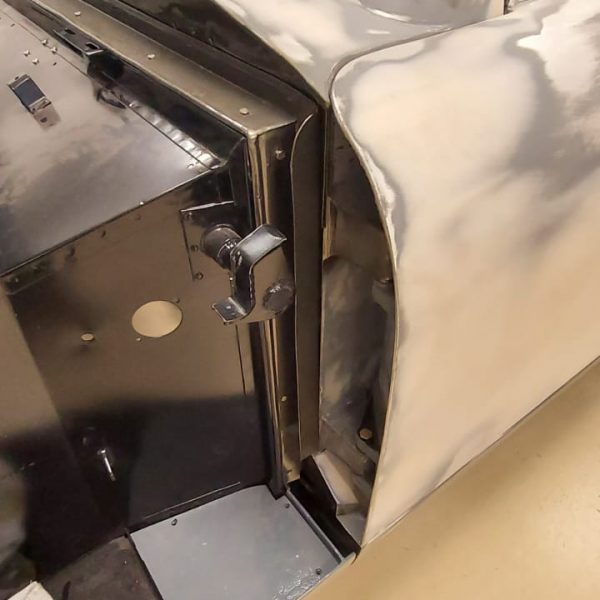
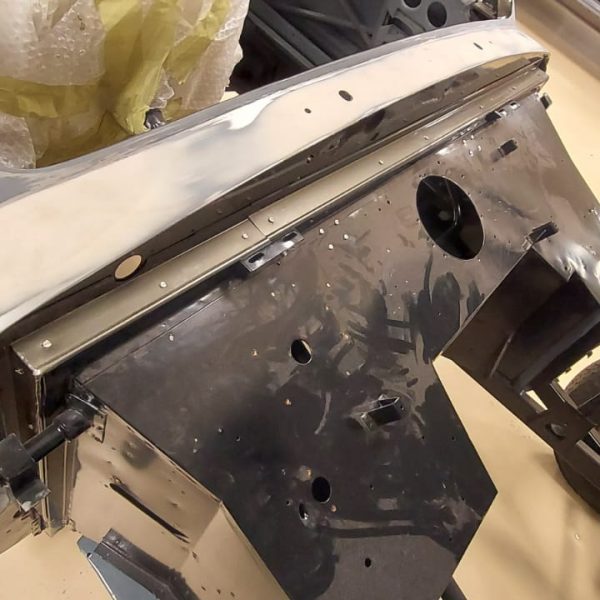
The paint and body at Bridge Classic Cars have been working on getting the various refinished brackets for the bonnet onto the 1955 Aston Martin DB2/4 MkI.
The team have expertly refinished the parts and pieces for the car all in-house to give them a uniform, clean look. The parts are now being installed onto the car as the team move toward getting the panels aligned and in place to check fitment and if any adjustments will need to be made to the hinges or latches.
Bridge Classic Cars are award winning Classic Car Restoration and Maintenance specialists. Your pride and joy is in safe hands with our expert Classic Car Technicians. Take a look at our awards here.